English Level 2
INTERACTIVO
Gary Scott Vernier
Institución Universitaria Pascual Bravo

Jhon Alfer Rua
Institución Universitaria Pascual Bravo


Fondo Editorial Pascual Bravo
Medellín
2021
Título de la obra:
English Level 2
Autor:
Jhon Alfer Rua
Editor:
Gary Scott Vernier
Código JavaScript para el libro: Joel Espinosa Longi, IMATE, UNAM.
Diseñador e ilustraciones : Sara Montoya Arbelaez
Desarrollo y programación adicional: Sergio Ramírez Álvarez y Ramiro A. Lopera S.
Imagen de portada: Vector de clases de inglés creado por freepik - www.freepik.es
Fuente: Montserrat
Núcleo del libro interactivo: julio 2022
Fondo Editorial Pascual Bravo
Calle 73 73A-226
PBX: (574) 4480520
Apartado 6564
Medellín, Colombia
www.pascualbravo.edu.co

Esta obra está bajo una licencia Creative Commons 4.0 internacional: Reconocimiento-No Comercial-Compartir Igual.
Este libro digital interactivo se ha diseñado con fundamento en la filosofía del Proyecto DescartesJS: "Trabajando altruistamente por la comunidad educativa de la aldea global", que sólo busca desarrollar contenidos educativos para el provecho de la comunidad académica, esperando únicamente como retribución el uso y difusión de estos contenidos. El contenido del libro, al igual que los objetos interactivos se han diseñado de tal forma que se puedan leer en ordenadores y dispositivos móviles sin necesidad de instalar ningún programa o plugin. El libro se puede descargar para su uso en local sin dependencia con la red, a excepción de algunos audios incluidos.
El contenido de este libro se basa en las historias del personaje ficticio llamado Pascualino, con fines didácticos, narrando sus diferentes historias en el diario vivir de un integrante de la Comunidad Académica de la I.U.Pascual Bravo.
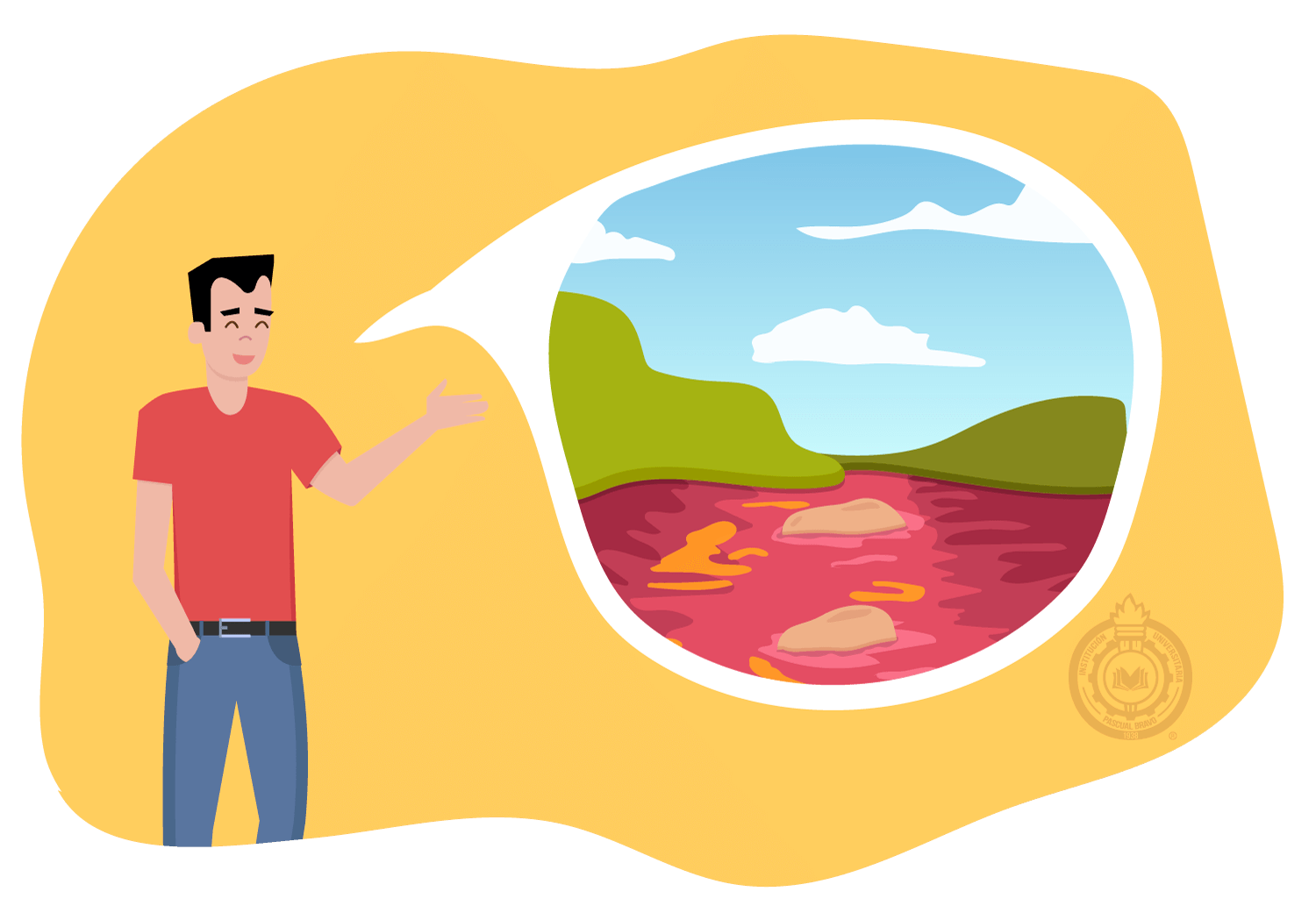
Pascualino’s father had a big surprise for the family.
He announced that he was going to take them all to one of the most beautiful natural wonders in Colombia:
Caño Cristales.

Pascualino had heard about Caño Cristales before, but he really didn’t know where it was. “Dad,” said Pascualino. “Where is Caño Cristales?”
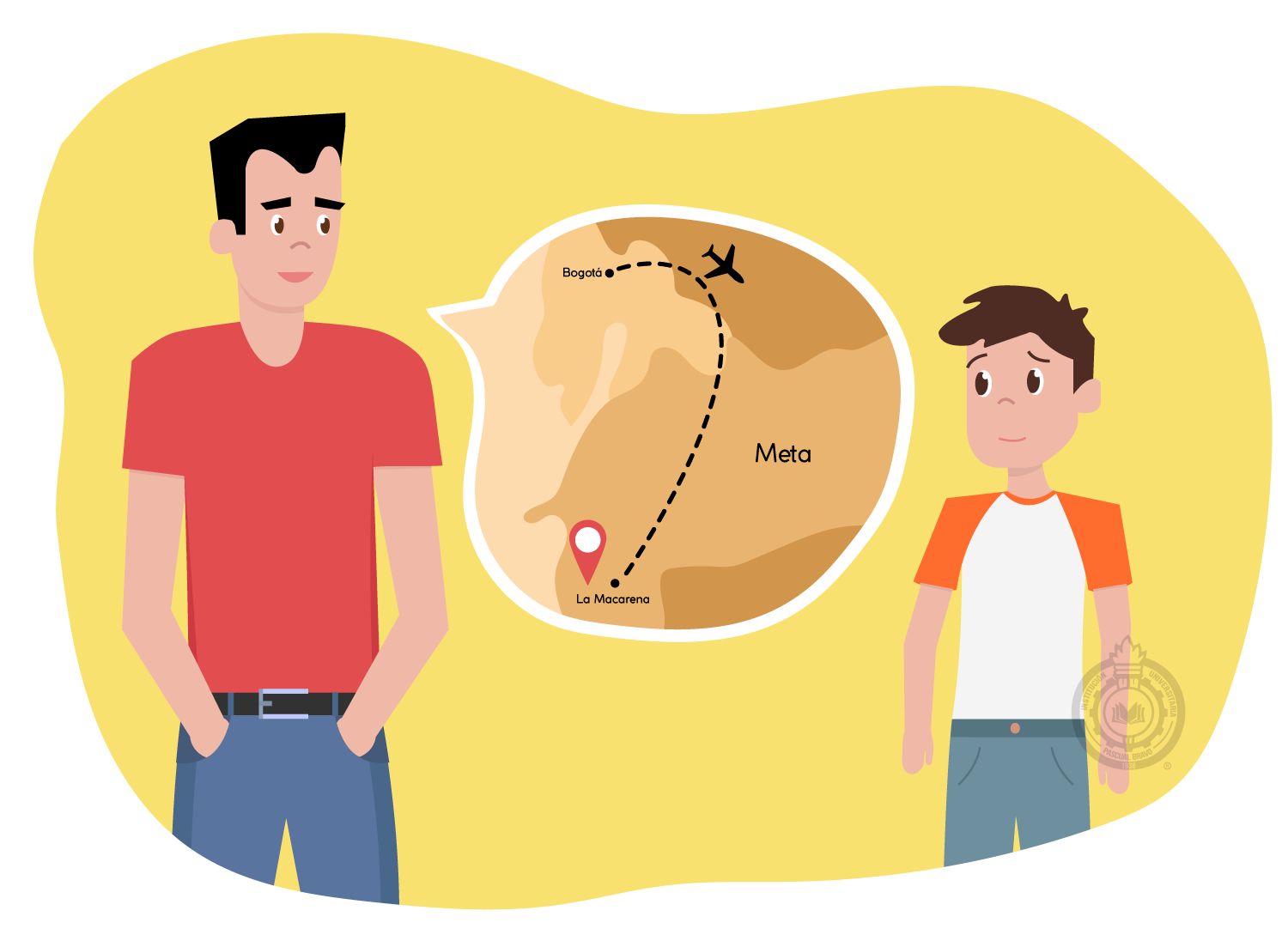
“It is in the state of Meta within the municipality of La Macarena.” his dad replied. “We will have to first fly to Bogotá and then we will catch a flight from Bogotá to La Macarena.”
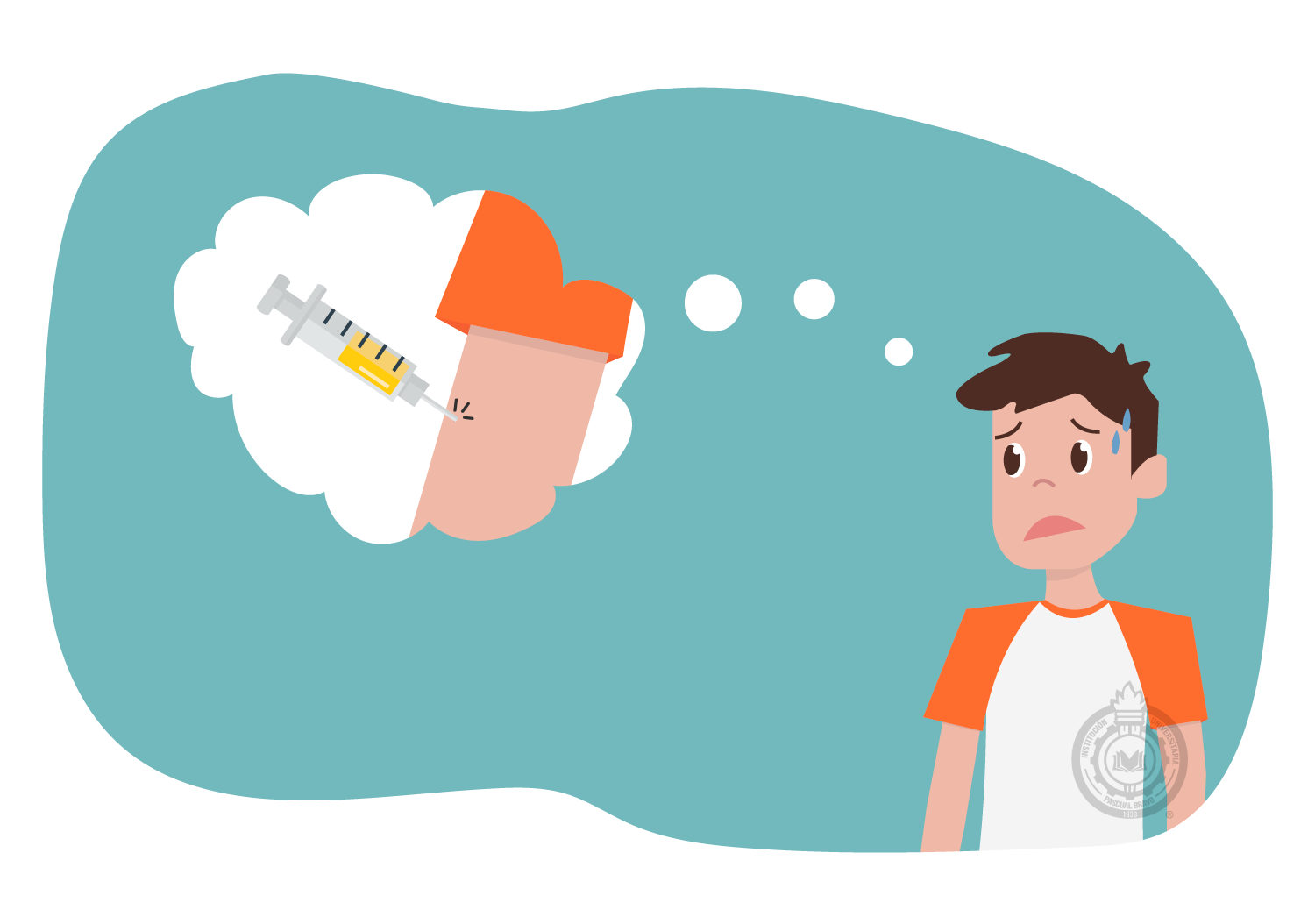
Pascualino’s father also explained that everyone would have to get a Yellow Fever vaccination shot in order to visit Caño Cristales. Pascualino did not like that at all! But he had no choice. It was the law.
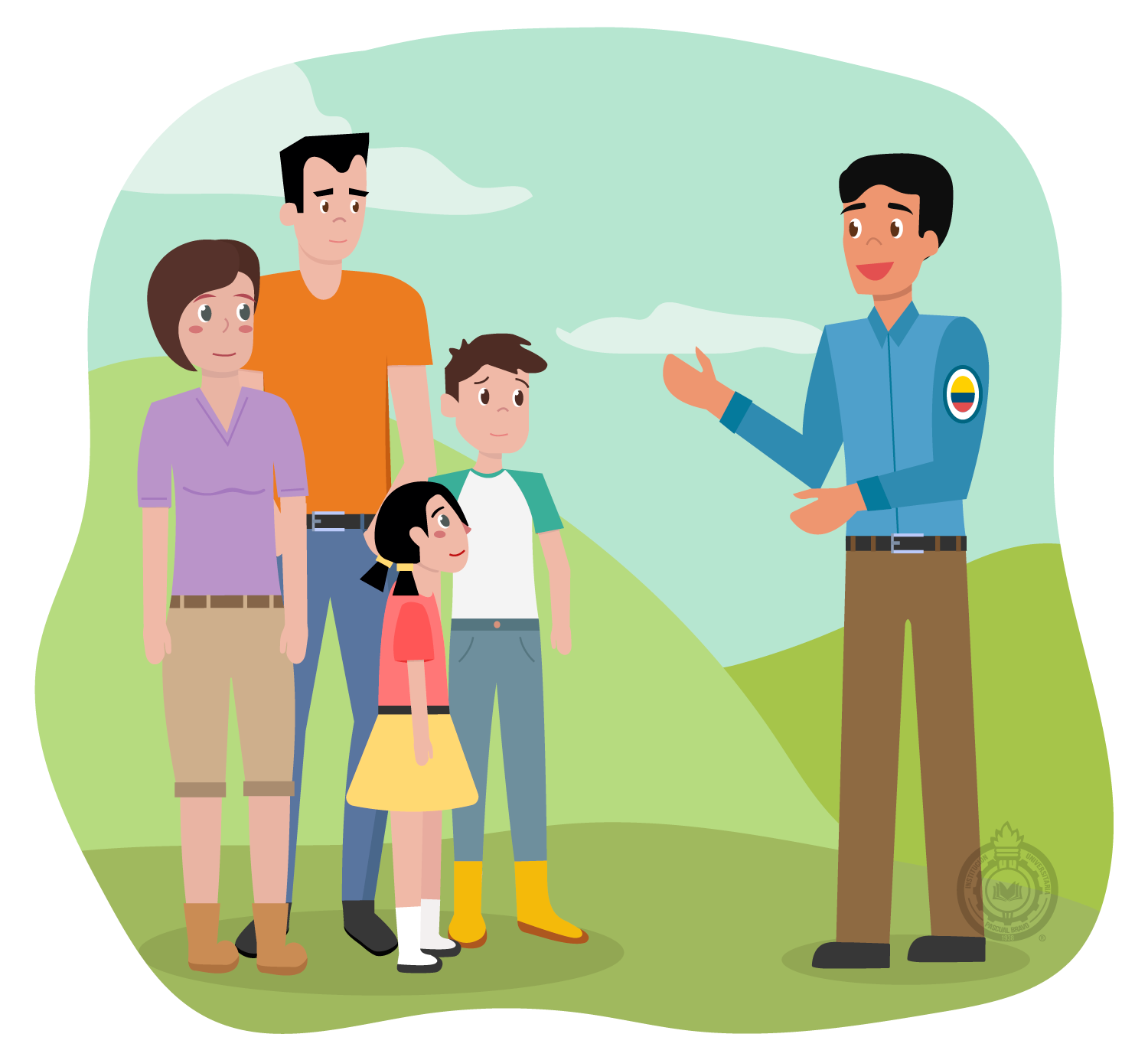
Three weeks later, Pascualino and his family arrived at La Macarena Airport early in the morning. After checking into their hotel, they headed over to the office of Cormacarena to listen to park rangers give them instructions and recommendations on visiting Caño Cristales.
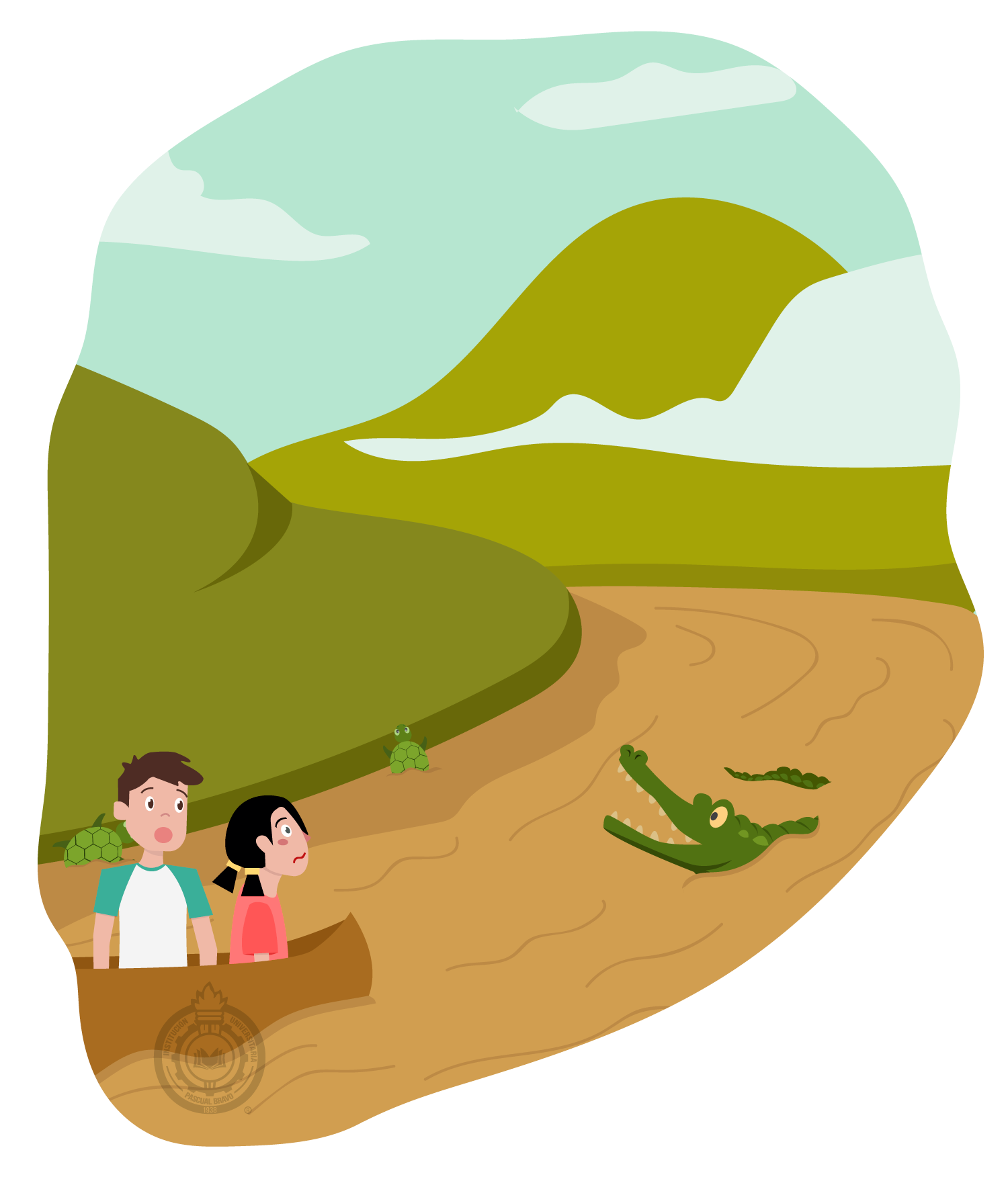
Now they were all set to go. The first part of the trip to reach Caño Cristales was to take a canoe up the Rio Guayabero to the Vereda La Cachivera. Pascualino saw turtles and a caiman in the river! His sister Carla loved turtles, but did not like seeing the caiman!

After leaving the canoe behind, they next had to climb aboard a 4 x 4 truck and cross very rough and difficult terrain to reach the trailhead to Caño Cristales.

The last leg of the trek was an hour long hike. Pascualino was glad he had bought new hiking boots before the trip. Pascualino and Carla were getting a little tired when they finally arrived at Caño Cristales.
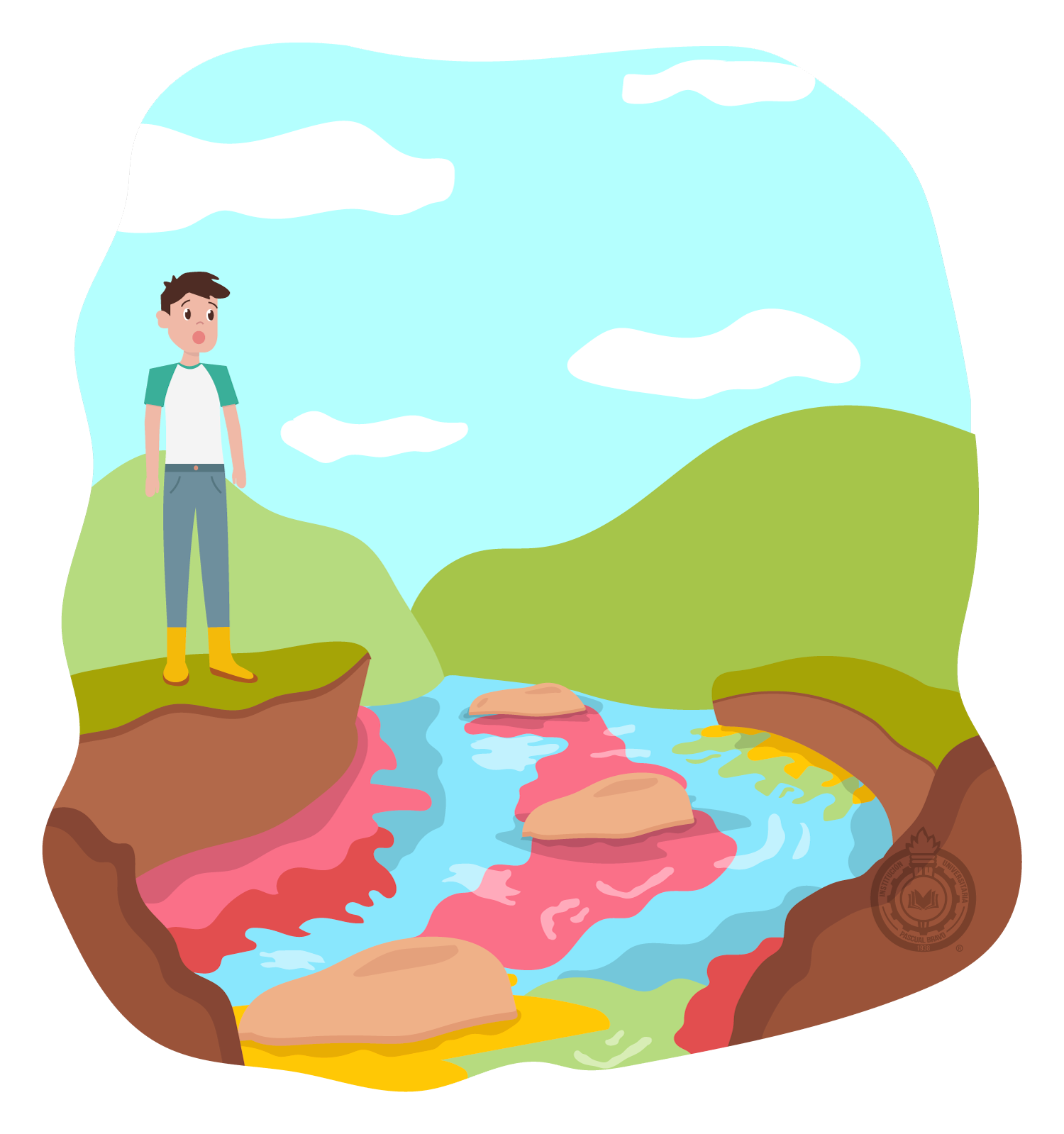
Pascualino had never seen anything like this before in his life. The river looked like it had a rainbow underneath it. Pascualino saw red, yellow, green, black, blue and pink colors moving and shining beneath the water. And the water was crystal clear!
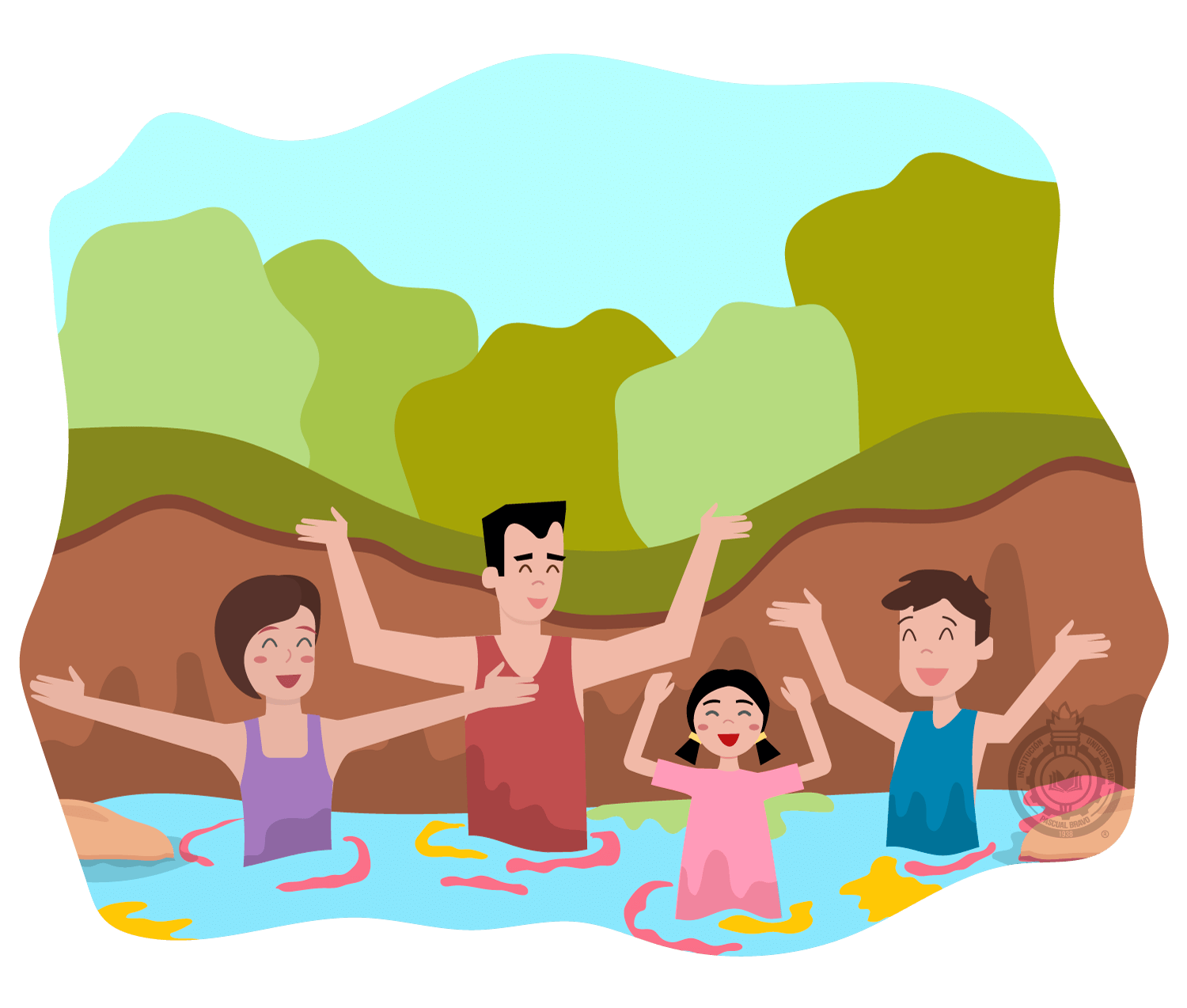
The entire family found a great swimming hole to jump into and swim in the clear, cool water. They found waterfalls, a lot of swimming holes, and of course they were amazed the entire day by the beauty of all the different colors in the water. It was easy to understand why it was called “The River of 7 colors.”

No one wanted to leave! But the day was growing short and it was getting late. So Pascualino said goodbye to the most beautiful and colorful river in the world and was happy that his father took the family to visit Caño Cristales.
1. Pascualino’s father was going to take his family to dinner at the famous Caño Cristales restaurant
2. Pascualino had visited Caño Cristales before
3. Caño Cristales was a long way from Pascualino’s house.
4. Pascualino did not have to take any precautions to visit Caño Cristales
5. Pascualino and his family received information on how to best enjoy Caño Cristales
6. Caño Cristales was really close to the office of Cormacarena.
7. The road they had to travel on was not smooth.
8. The last part of the trek to Caño Cristales was a short, 15 minute hike
9. The water in the river at Caño Cristales was very clear.
10. Pascualino went swimming in the river.
11. Pascualino was tired and wanted to get back to the hotel room
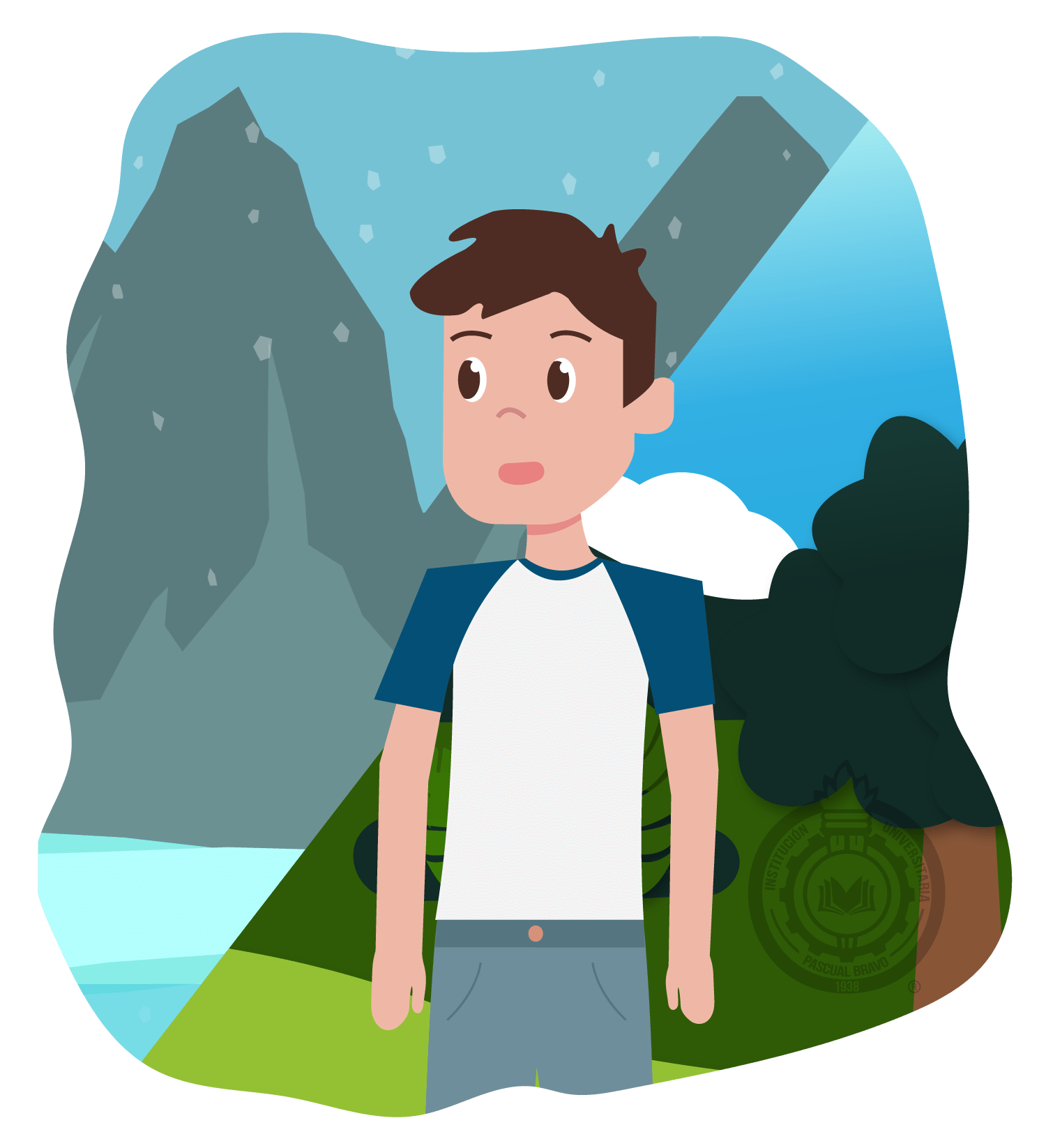
Some days ago, Pascualino discovered that his family had not always lived in Colombia. As it turns out, his mother's family had lived in Alaska a few years earlier and Pascualino even had an aunt who currently still lives there.
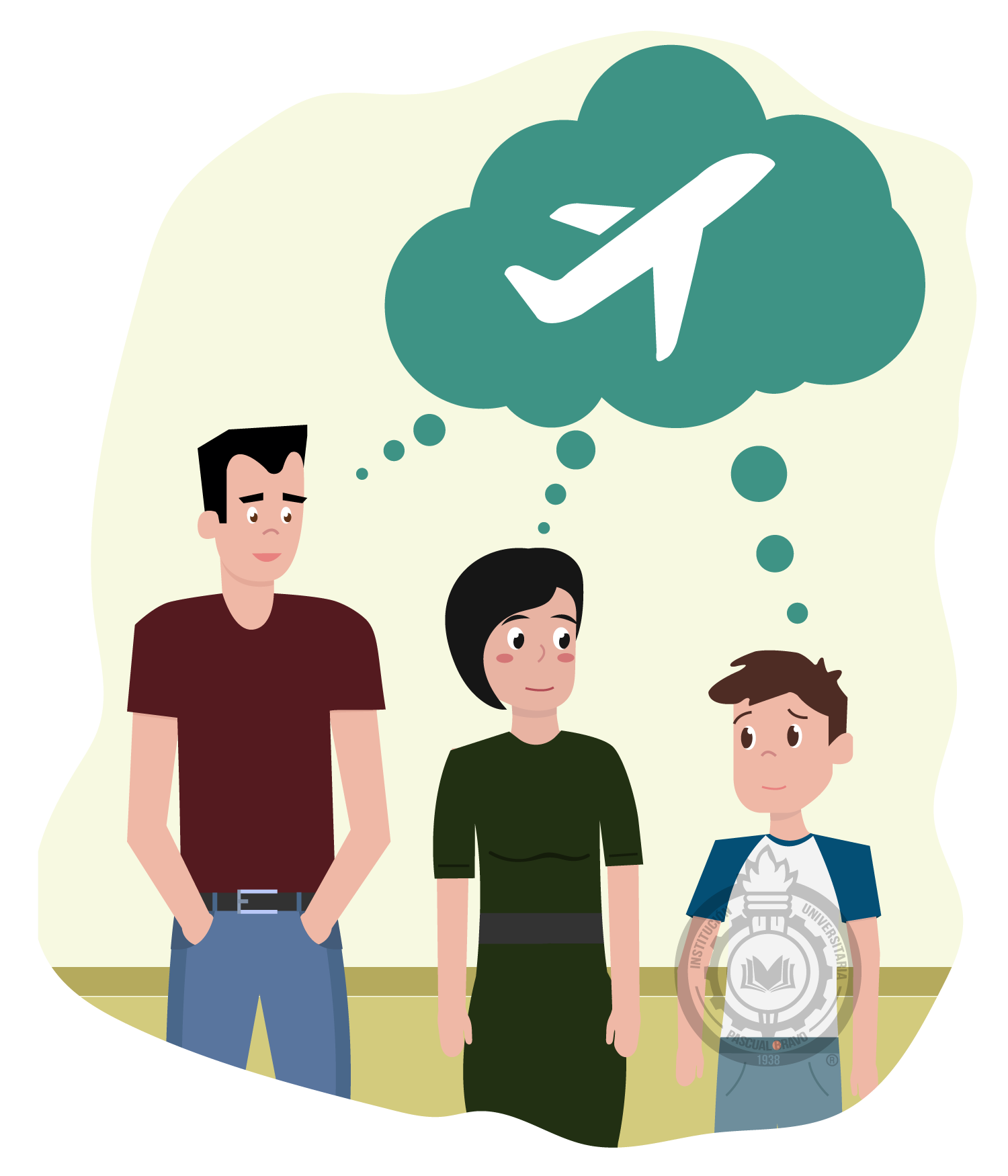
For the Christmas holidays, Pascualino’s family planned to travel and visit his mother's sister in Alaska and go sightseeing.
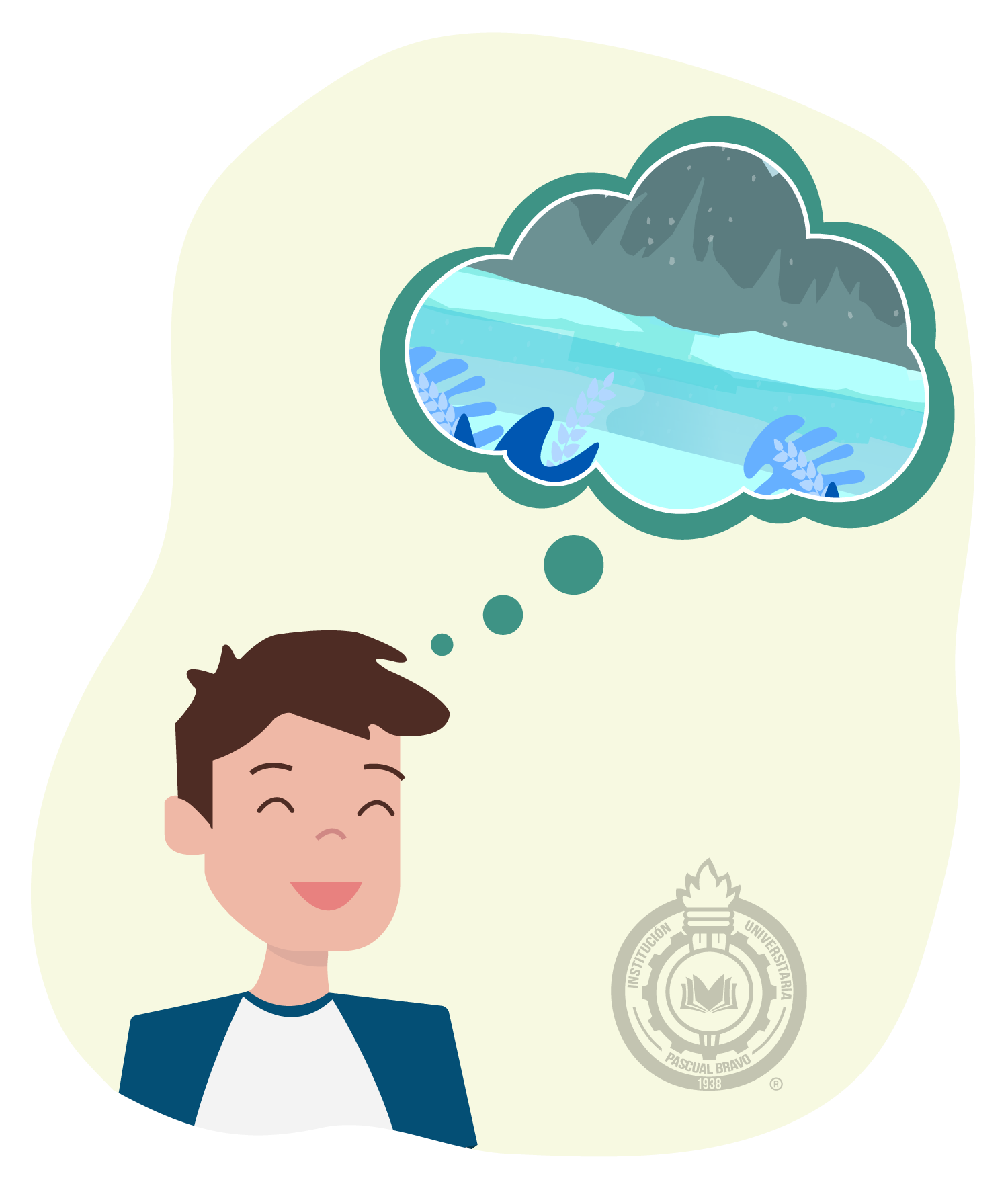
Pascualino was very excited because it would be the first time he would get to leave the country. He was also happy because he would get to meet this aunt that he didn't know about.
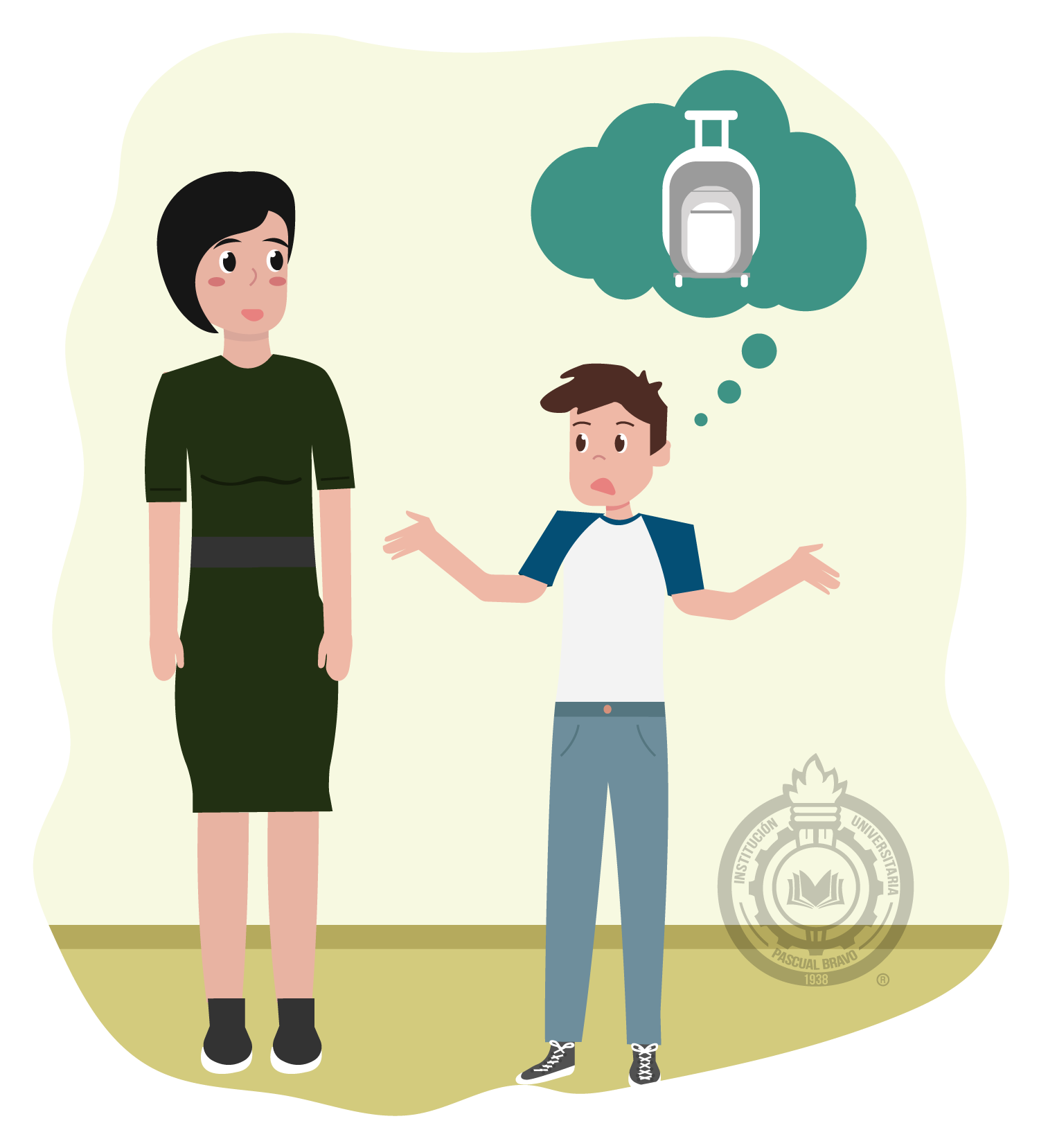
The only thing Pascualino knew about Alaska was that it is part of the United States, but he didn't know what the weather was like there. That is why when he was packing his things for the trip he did not hesitate to ask his mother for help.
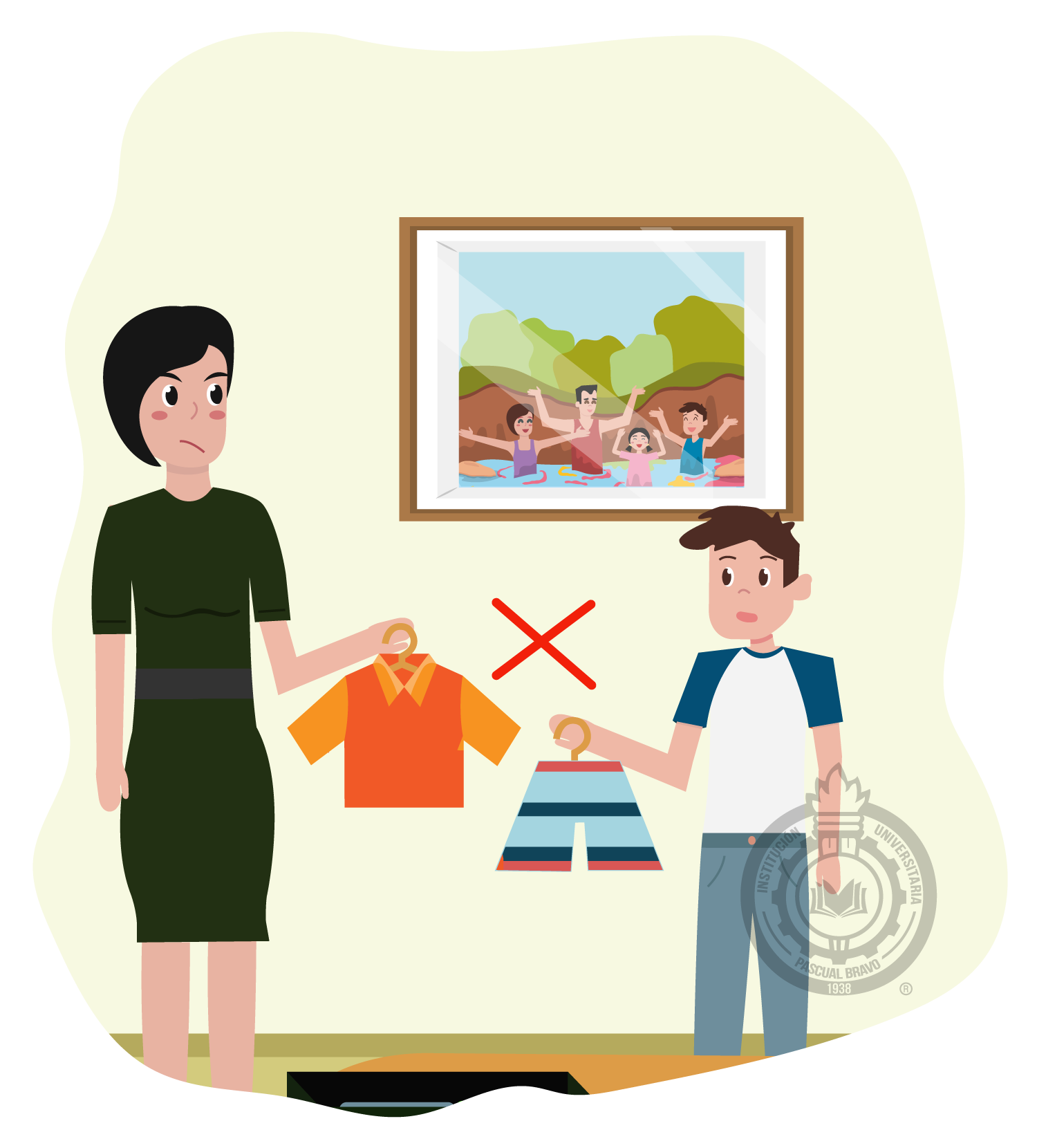
"Mom," said Pascualino. "Can I pack a lot of shorts and T-shirts?"
His mother frowned and looked at him strangely,
"Son, you can't wear those clothes! You would freeze to death!" she replied.
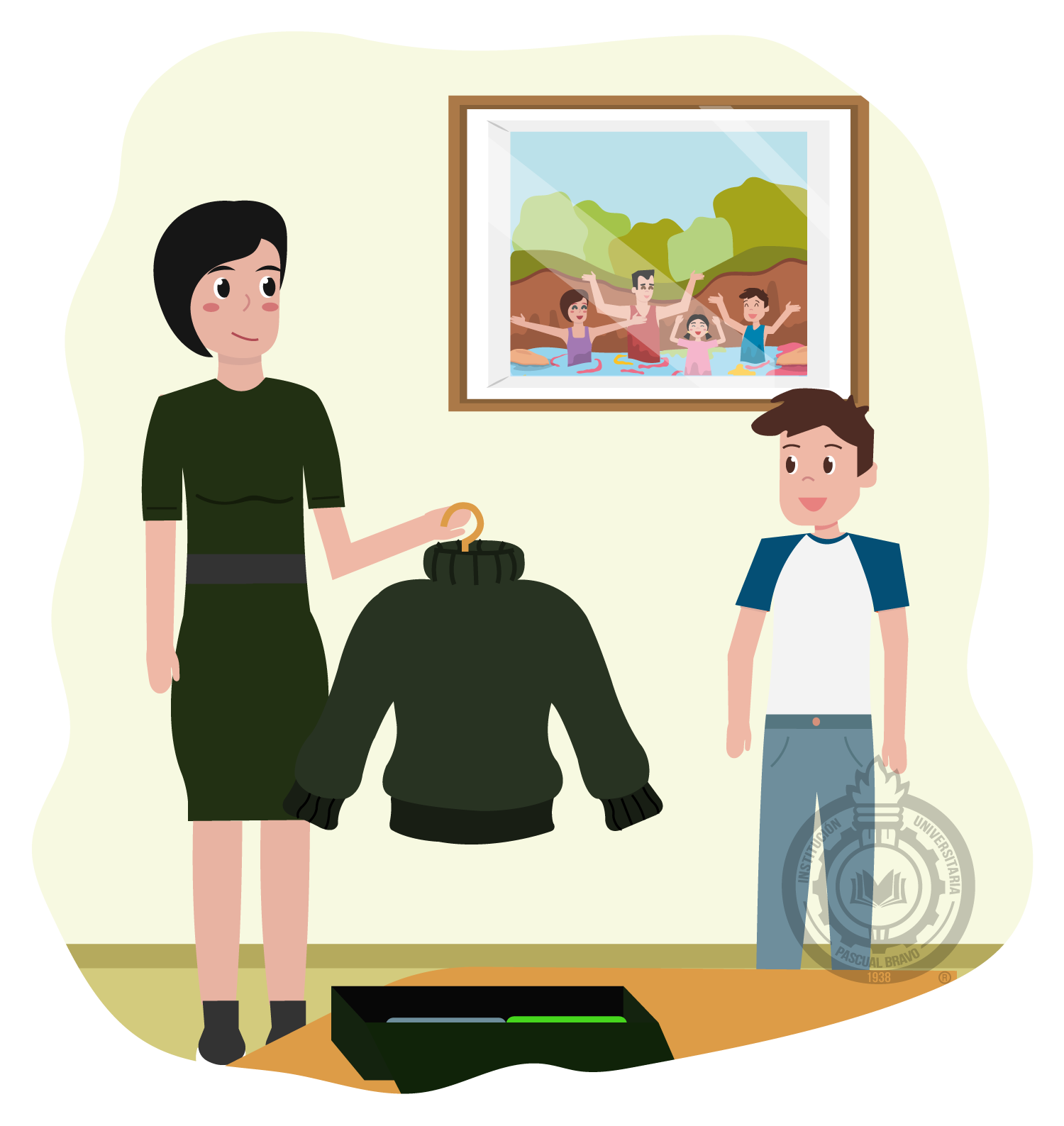
Pascualino looked at her in amazement, "I didn't think Aunt Emma lived in such a cold place." he replied.
"Alaska is quite cold, more than half of all the world's glaciers are within its surface."
His mother smiled at him, while she removed the shirts and shorts in his suitcase for coats, scarves and gloves.

"Mom, can we take Stinky with us?" Pascualino asked. He could not imagine making
the trip without his faithful chihuahua.
"No, Son. I'm sorry, but Stinky will have to stay with your grandmother, but don't worry,
your aunt has two Siberian huskies that you can play with."
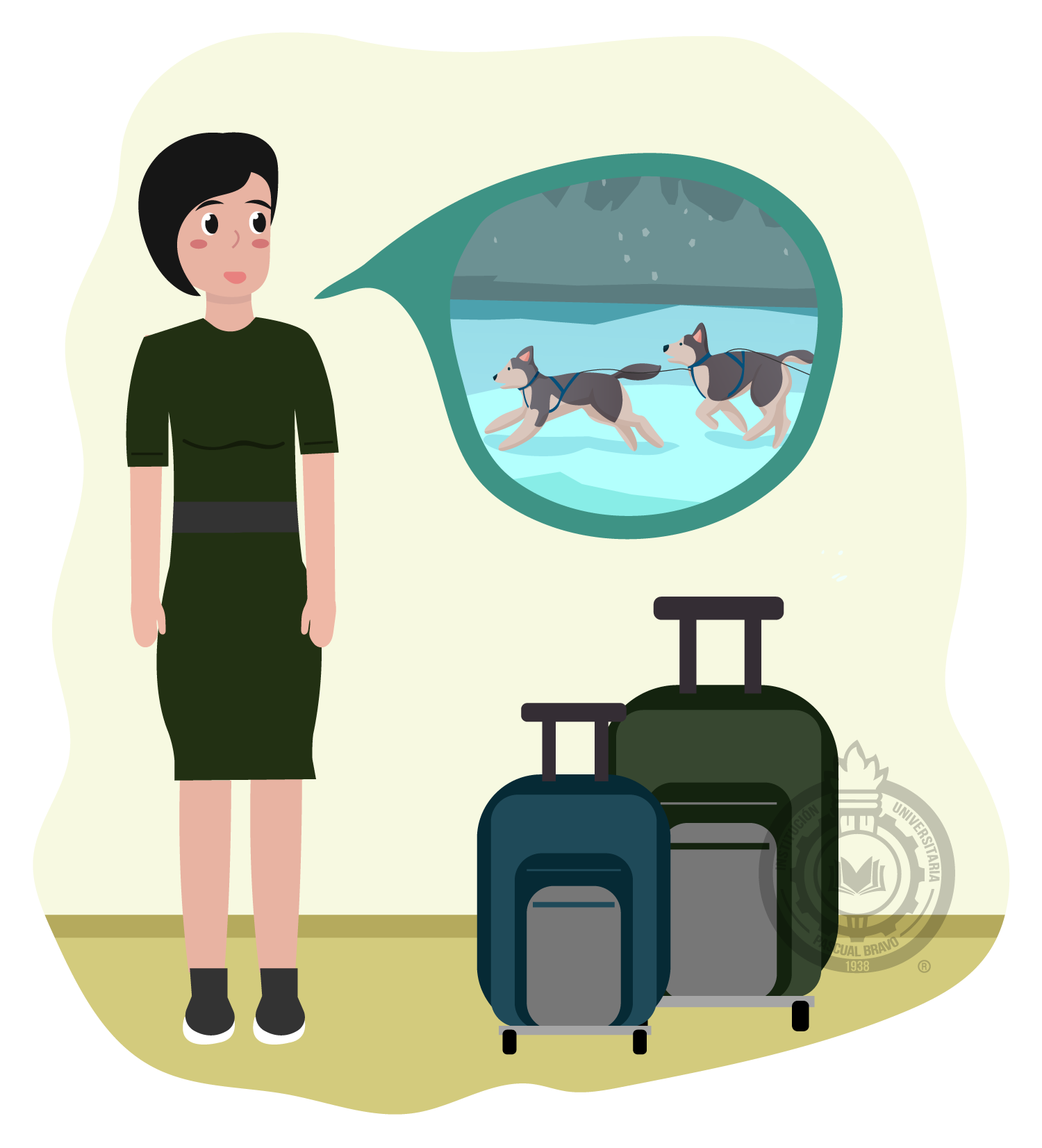
"Is that the kind of dog that pulls the sled in the snow?
Like they show on Animal Planet?" Pascualino asked excitedly.
"Yes, and not only that type of dog ... there are many other breeds of canines that are used in mushing,"
replied his mother smiling.
"Mushing?" Pascualino asked confused
"Yes, it is the official sport of Alaska. It is when dogs pull a sled,"
said his mother while she put the last things in Pascualino's suitcase.
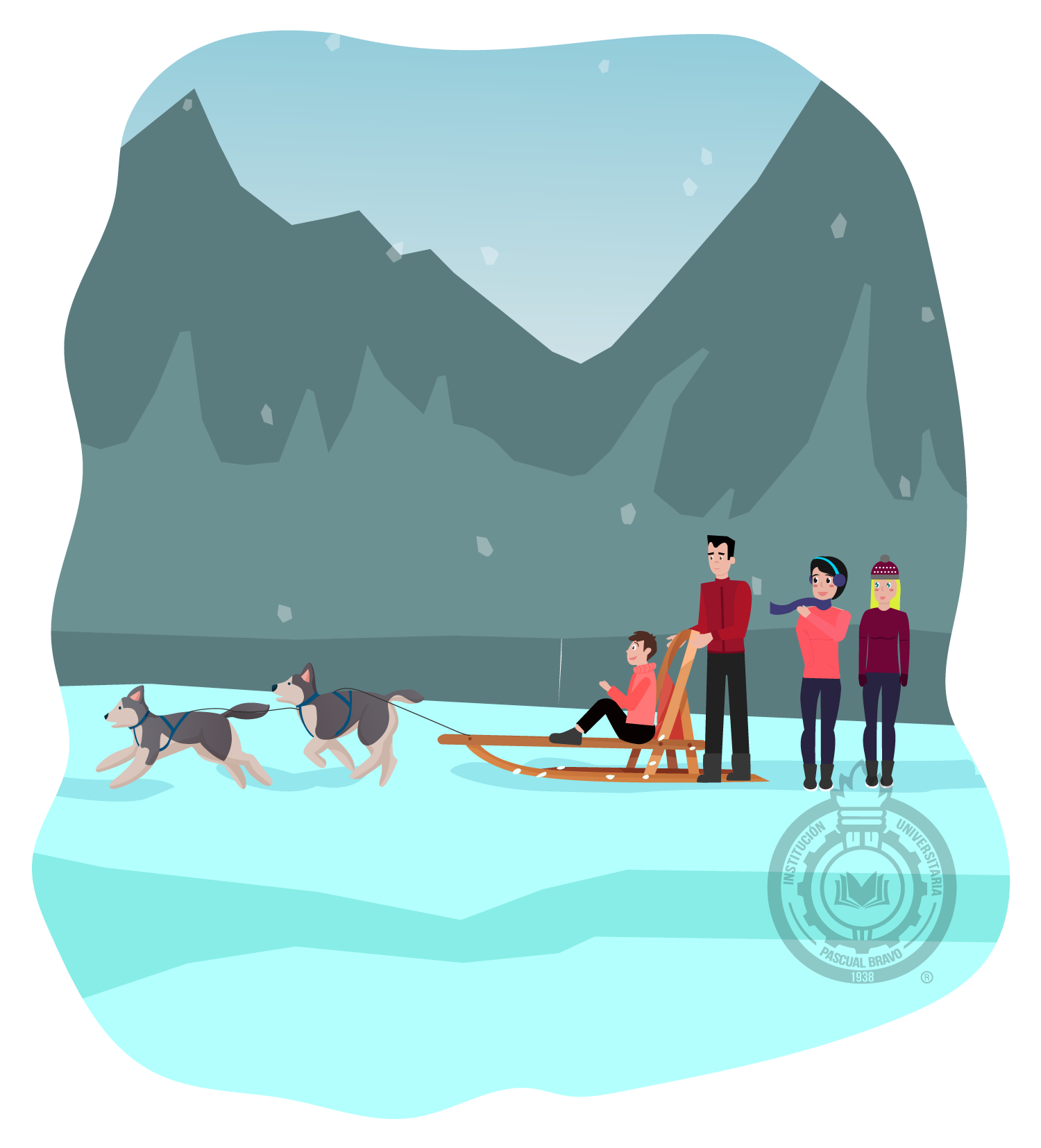
The days passed and finally it was time to travel to Alaska. Pascualino and his family were
not expecting the great surprise that Aunt Emma had prepared for their arrival.
They got to go out and practice Mushing in the beautiful winter landscape of Alaska,
surrounded by glaciers and large, snowy pine trees.
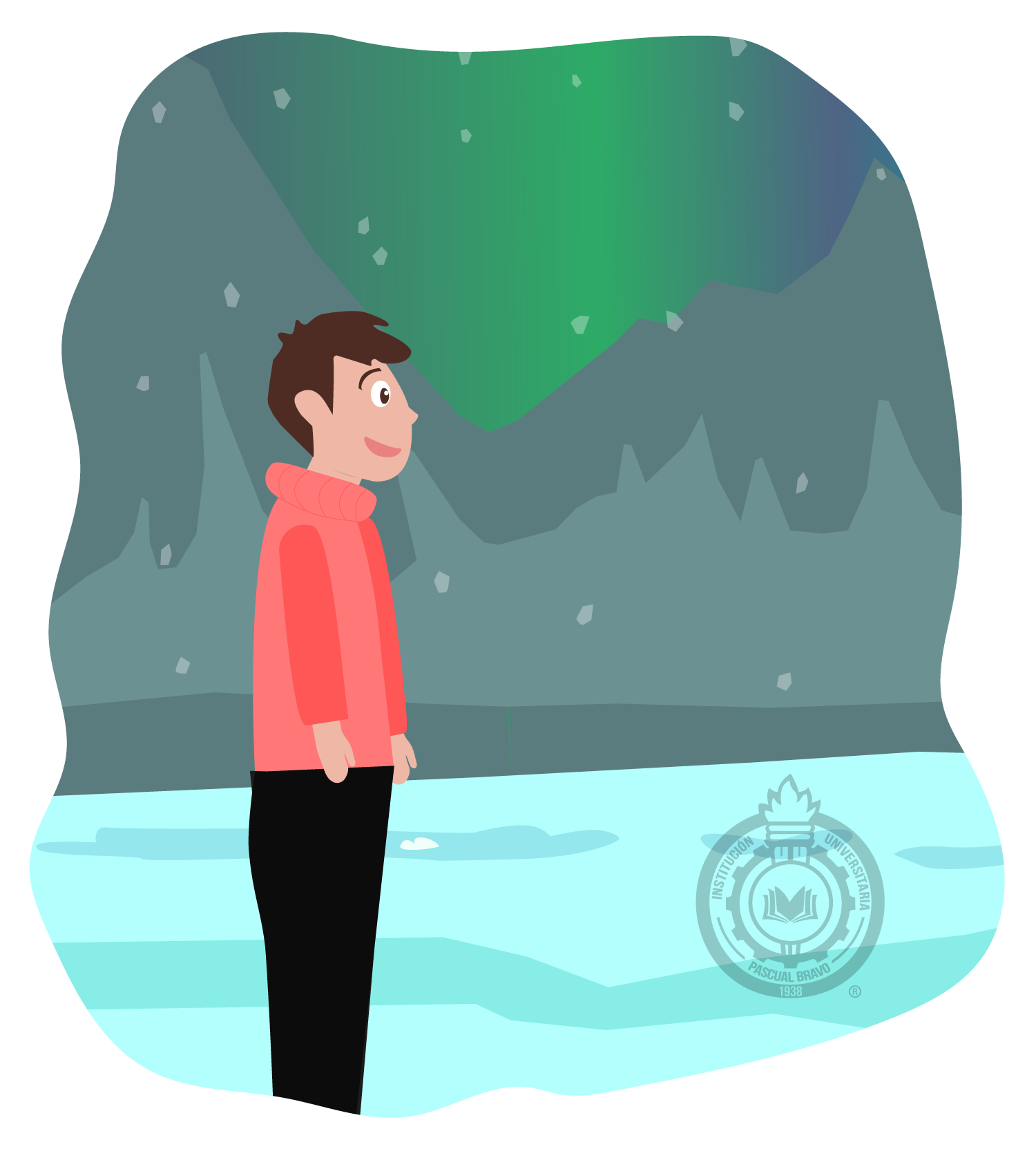
At night, the stars illuminated the clear sky and Pascualino could not stop looking at the beautiful,
famous Northern Lights. That experience was forever etched in his memory.
After making a fire to warm themselves up and eating dinner, everyone headed
to the mountains to stay at Aunt Emma's cabin.
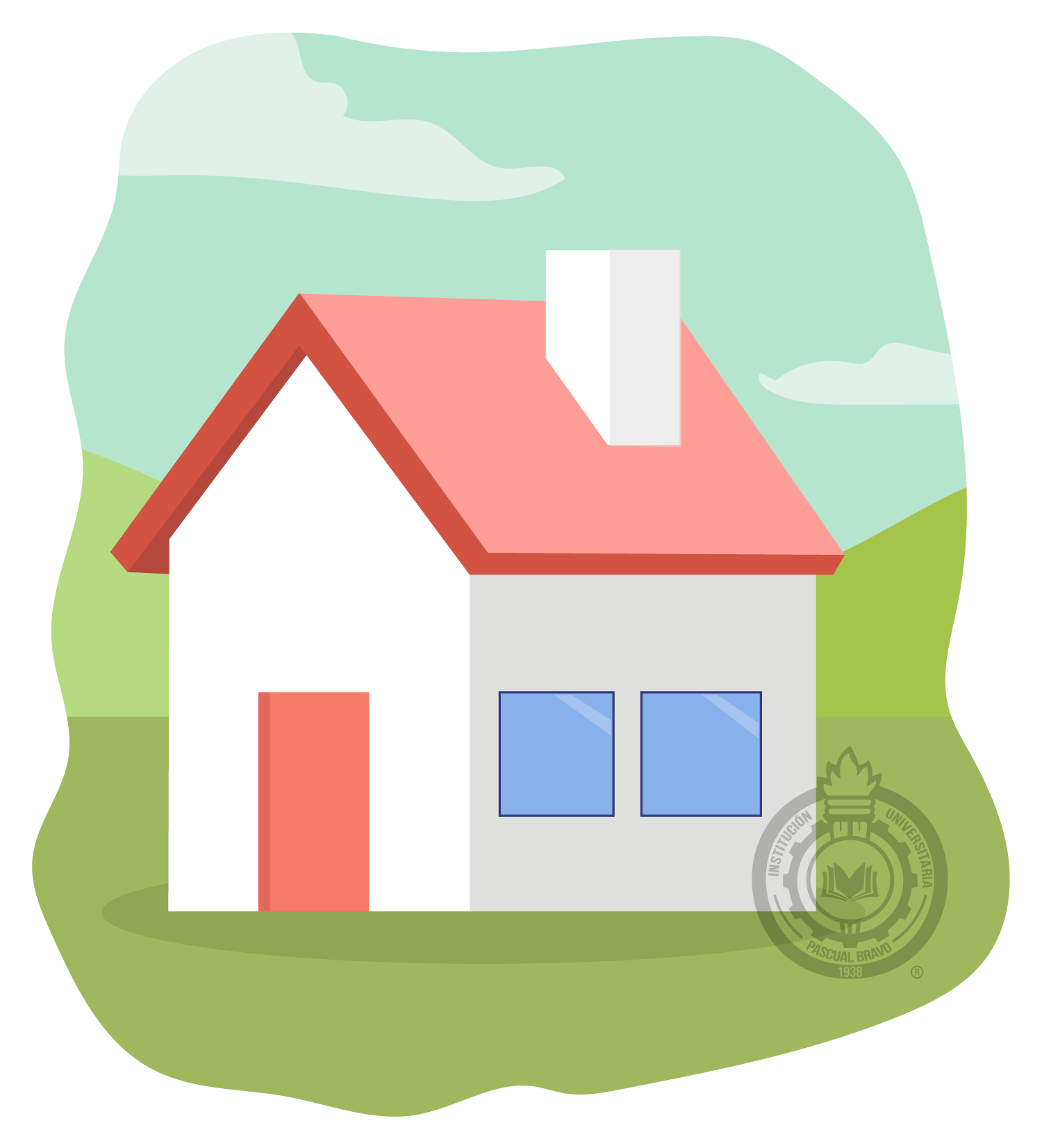
After a week full of cold, adventure and beauty, Pascualino and his family had to return home, but with the certainty that they would visit Aunt Emma very soon. Pascualino was sure he would never forget Alaska; a frozen and beautifully wild paradise.
1. Pascualino's paternal family always lived in Alaska
2. The only reason to travel to Alaska was to visit tourist sites
3. This trip would be the first time Pascualino personally met this maternal aunt
4. Pascualino knew a lot about Alaska
5. It is inferred that Alaska is a very hot place
6. Pascualino's mother changed the clothes in her son's luggage.
7. Pascualino has a chihuahua named huskies
8. Mushing is the name of the dog breed used in the official sport of Alaska
9. Aunt Emma's surprise was a dog sled ride
10. The sky was so polluted that Pascualino didn't see any stars
11. Pascualino and his family loathed Alaska and never want to return
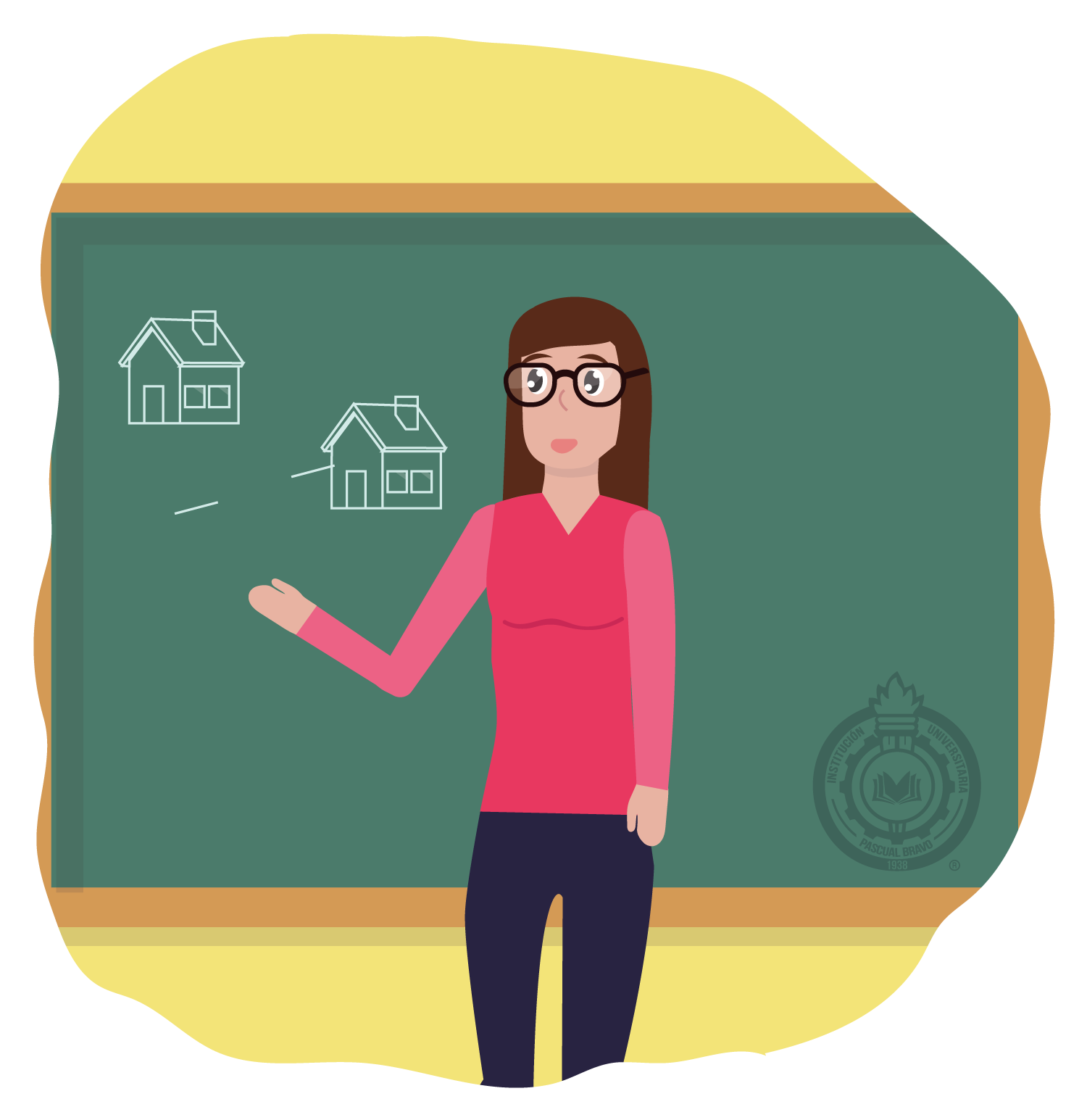
Pascualino’s favorite class at school was his History Class with Miss Martinez. She taught the class as if it were a novel, or a story, and this made the class very interesting.
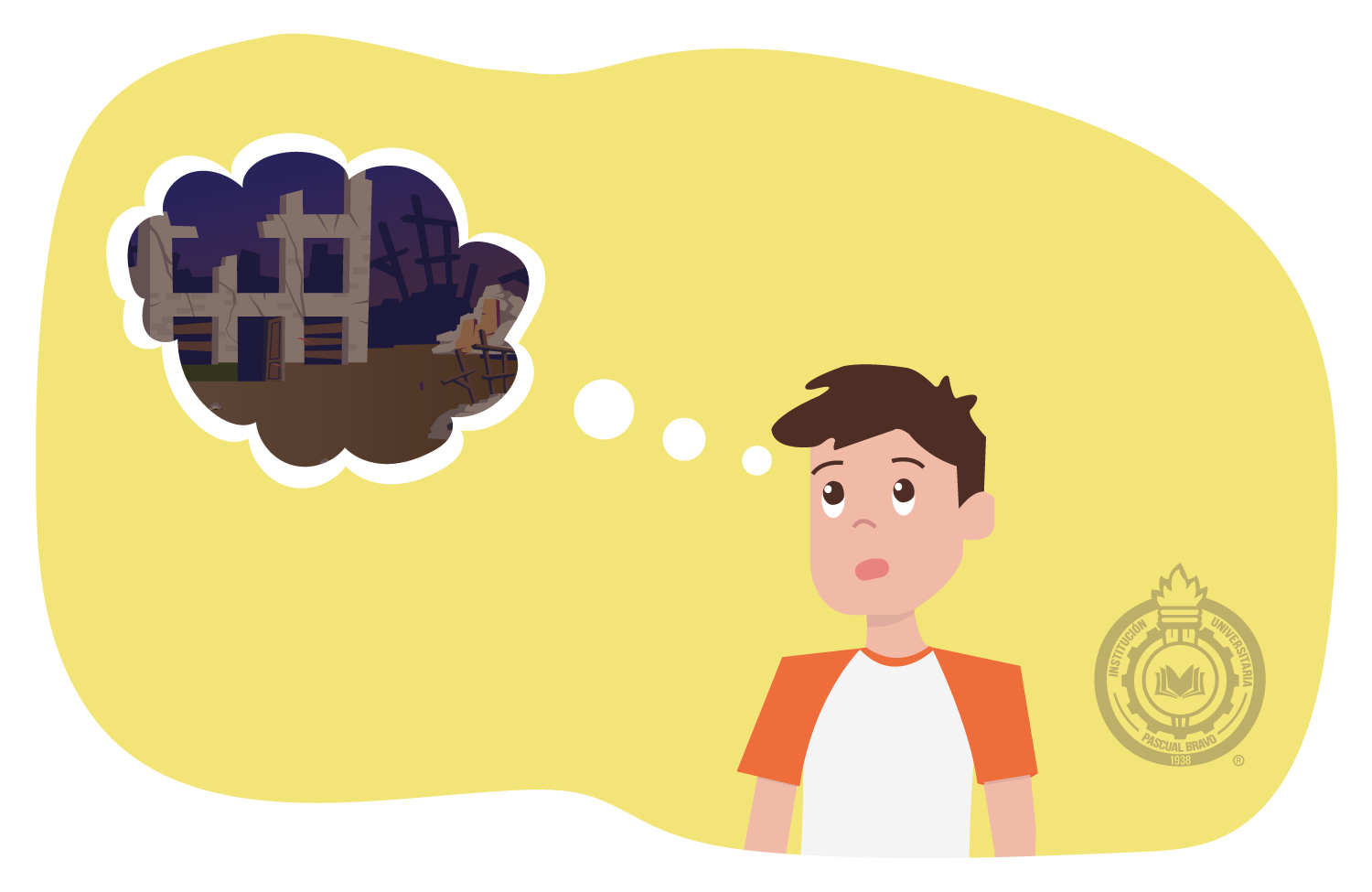
This week in Pascualino’s history class, the subject was natural disasters.
Each student had to research a different natural disaster and then give a short report to the class.
Pascualino recalled that a few days earlier he had heard his grandparents talking about a huge
catastrophe that had taken place many years ago in a town called Armero.
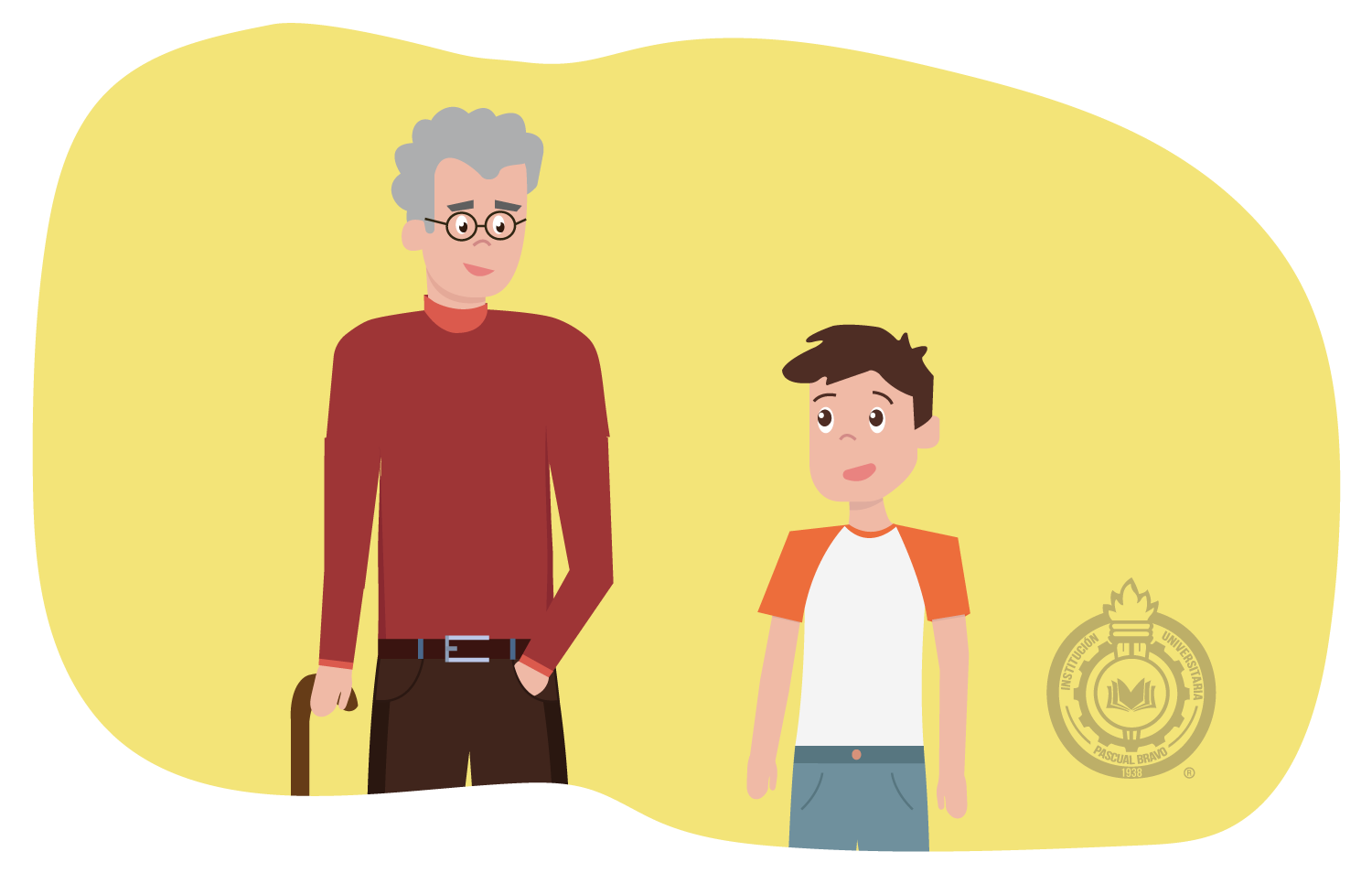
After Pascualino got home from school, he told his mother he had to go to grandpa’s house to do his homework.
As soon as he arrived, Pascualino said, "Grandpa, the other day I heard Grandma and you talking about
something terrible that happened in a place called Armero. Could you please tell me more about that?
It's for a school assignment," Pascualino said.

"Well, son, back in the mid-80s, the city of Armero, in the department of Tolima, was one of the
most prosperous in the region. It was called the “white city” because rice and cotton were grown there.
The ground there was very rich in minerals because of volcanic eruptions from the Nevado del Ruiz,” said his grandfather.
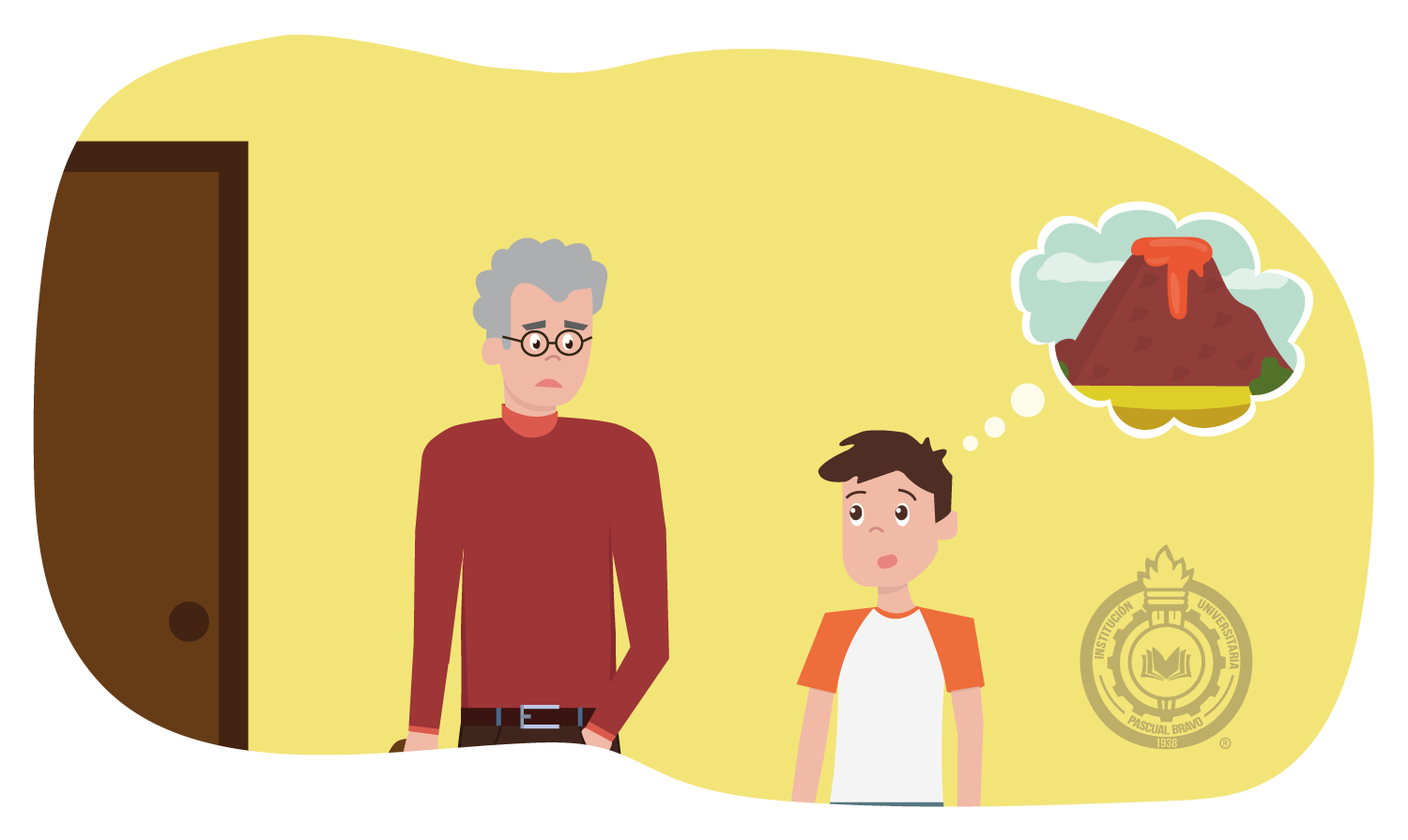
"Volcanoes? Wow, that sounds incredible! Armero was an exciting place to live, wasn't it grandpa?"
Pascualino interrupted.
"It was a good place to live, until the day of the tragedy.”
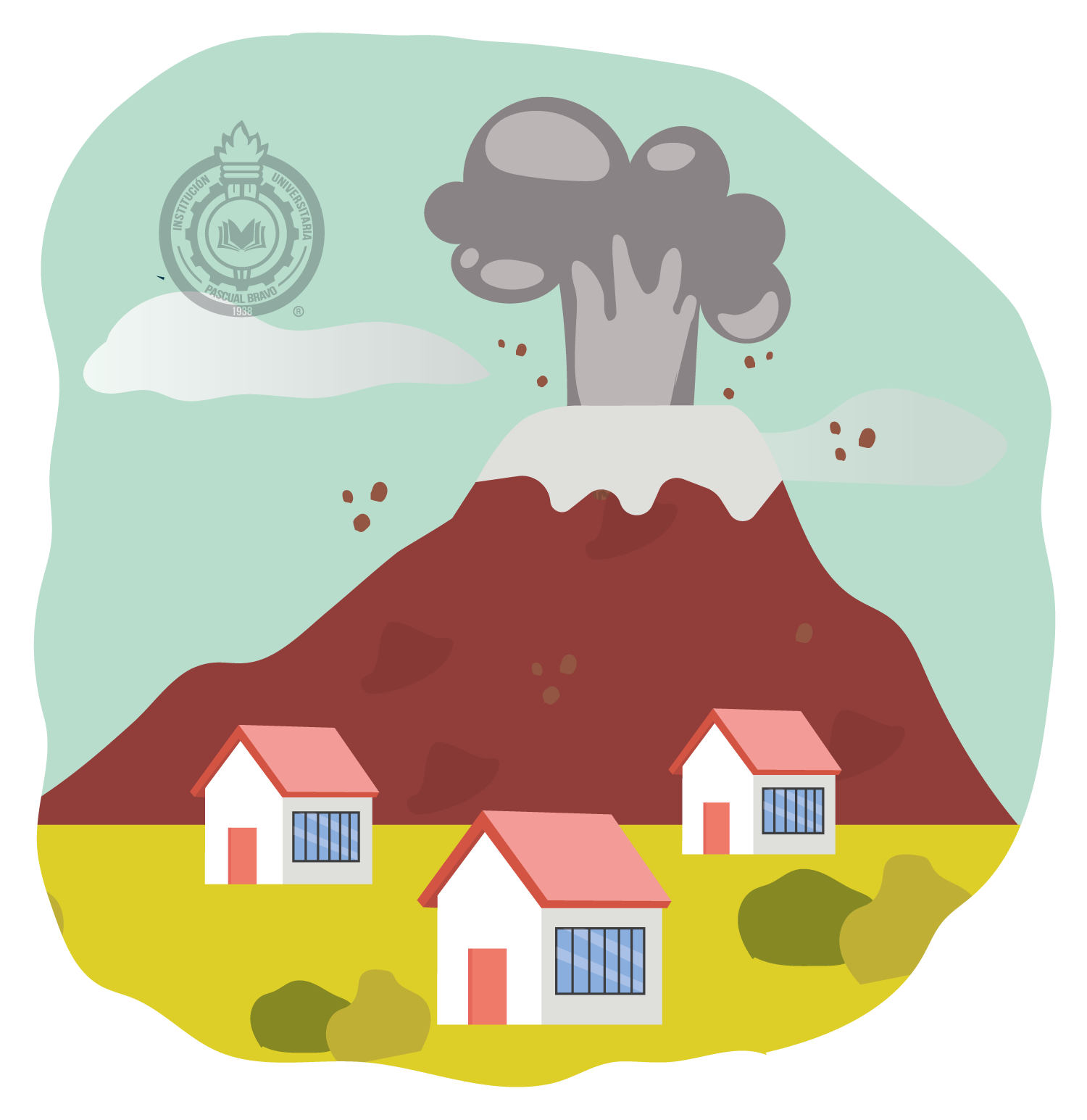
"What happened? What tragedy?" Pascualino asked excitedly.
“Well, son, on Wednesday, November 13th, 1985, the silent volcano a
top the Nevado del Ruiz erupted at approximately 3:30 in the afternoon for the first time that day."
"At the very beginning of the eruption, there was only a little drizzle of sulfur and nobody thought
it was very serious. But as the hours went by, things got worse!”

“Oh no!” said Pascualino worried and curious. “What happened next?”
His grandfather slowly replied, “The hot lava from the volcano melted the glacier ice at the top of the Mountain.
That created a massive landslide of mud and rocks. More than 20,000 of the 29,000 inhabitants of the
small town lost their lives.
Pascualino was speechless. He didn’t even know how he felt. “What an awful tragedy,” he thought to himself.
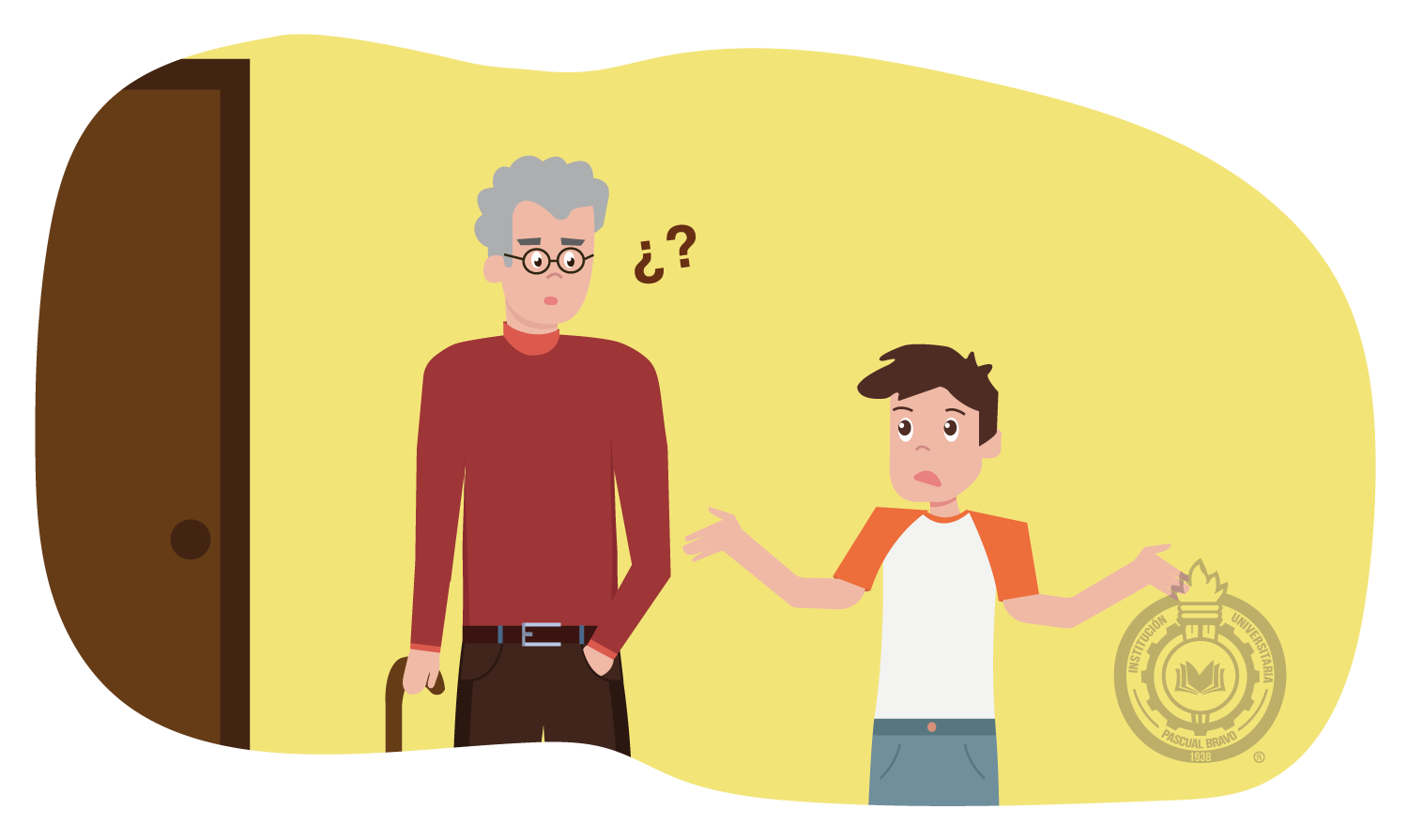
"There are still many questions unanswered,” Pascualino’s grandfather said.
"What do you mean grandfather? Is there some kind of mystery that has not
been solved about this tragedy?" Pascualino asked confused.
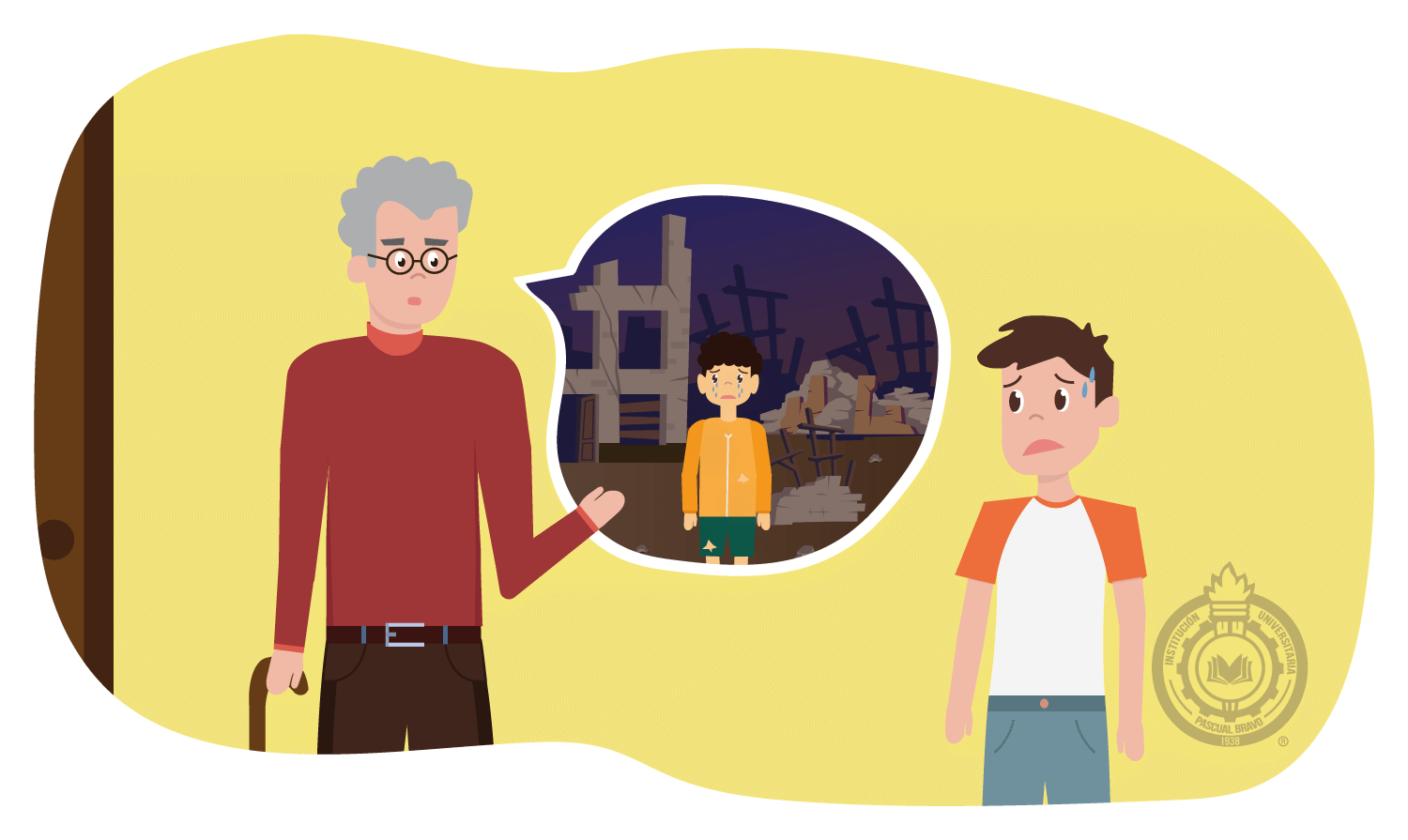
“Well, son, actually there are a number of unanswered questions.
For example, many people blame the Colombian government for the large number of victims because the
government knew about the potential disaster, but did nothing to prepare for it.
Also, there are many parents who never found their children and it seems
that they may have survived, but were taken and sold abroad . "
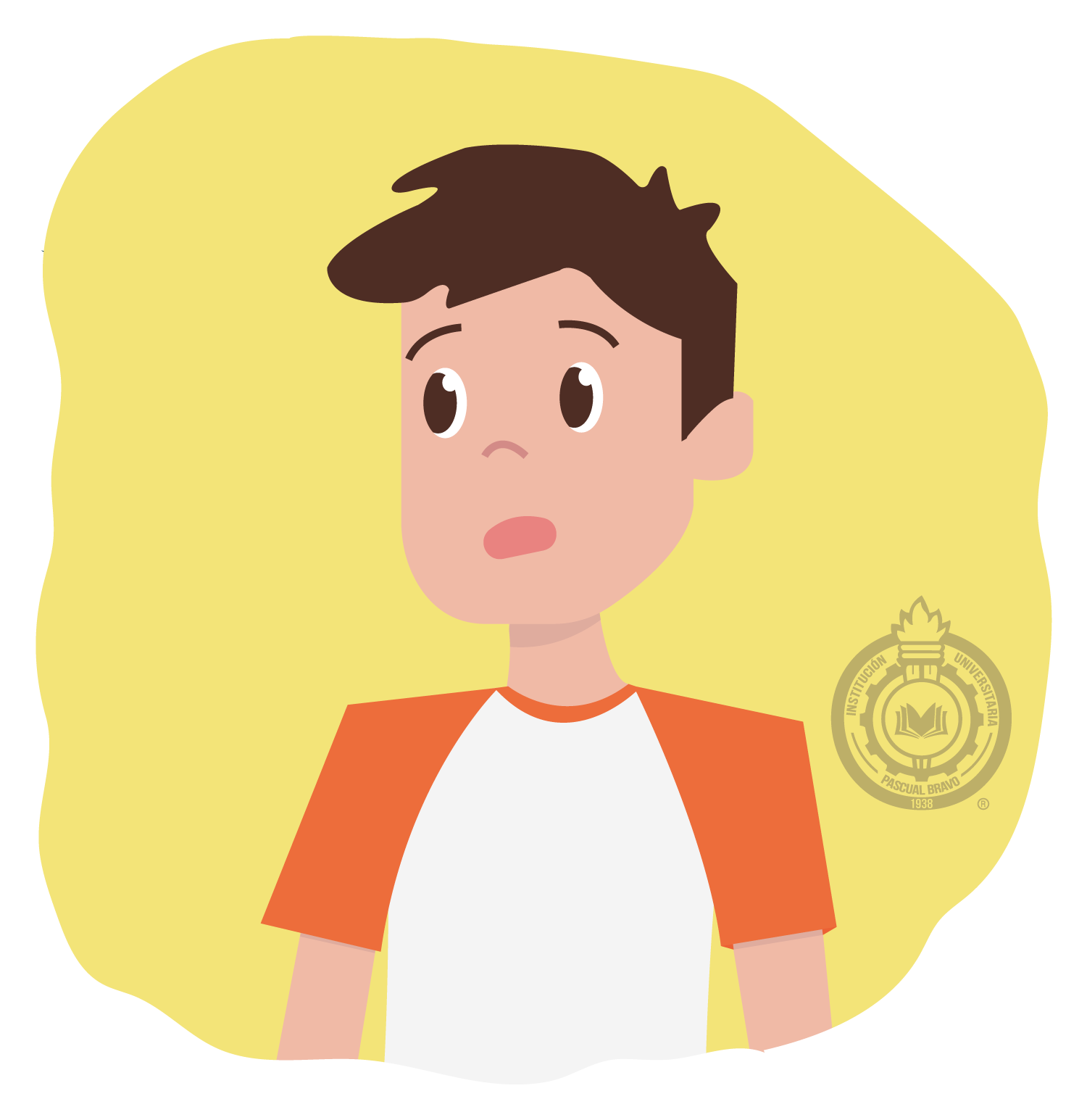
"It appears that this catastrophe is still affecting people’s lives today," concluded Pascualino
"That's right! Even though it happened many years ago, it is still difficult to talk about.
It was an event that left a mark on the entire country,” added his grandfather.
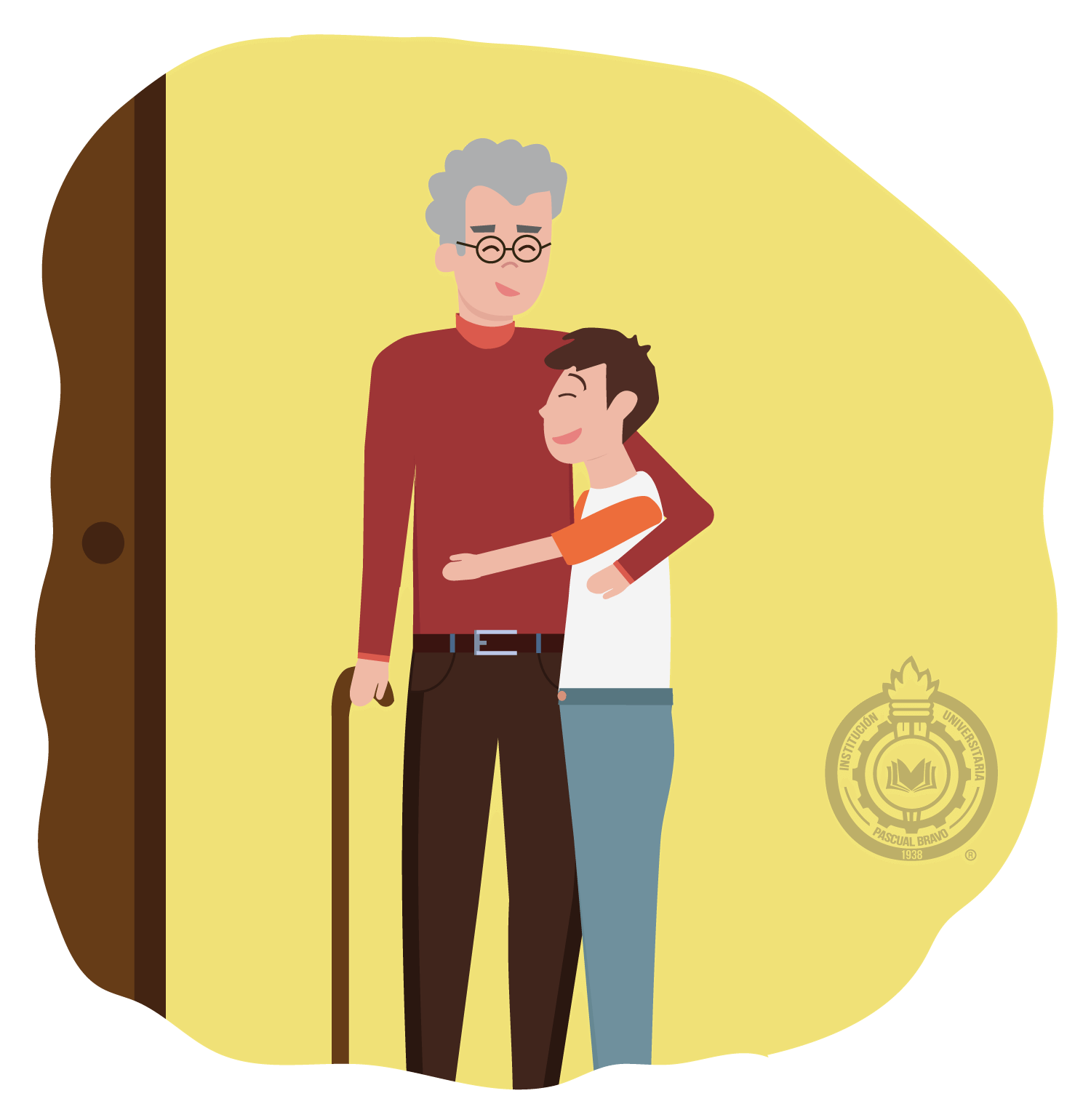
"Grandfather, thank you very much for telling me the story. He gave his grandfather a hug and said goodbye. Pascualino promised to let him know how his presentation went the next day at school.
1. Miss Martinez was an average teacher, who only read the history book in a very boring way
2. Pascualino's grandparents talked about the tragedy in Armero.
3. Pascualino had to go to his grandparent’s house to complete his homework assignment.
4. Armero in the 1980s was a wealthy agricultural town
5. Armero was a not a very nice place to live before the tragedy.
6. Most people initially thought that the Volcano was not a big problem.
7. The hot lava from the volcano covered the town of Armero
8. Many people still have concerns and doubts about what happened in Armero
9. The Colombian government set up an evacuation plan for Armero in the event of a volcanic eruption.
10. Although the tragedy happened a number of years ago, today there are still unresolved issues.
11. Pascualino will not speak to his grandfather again about the tragedy in Armero.
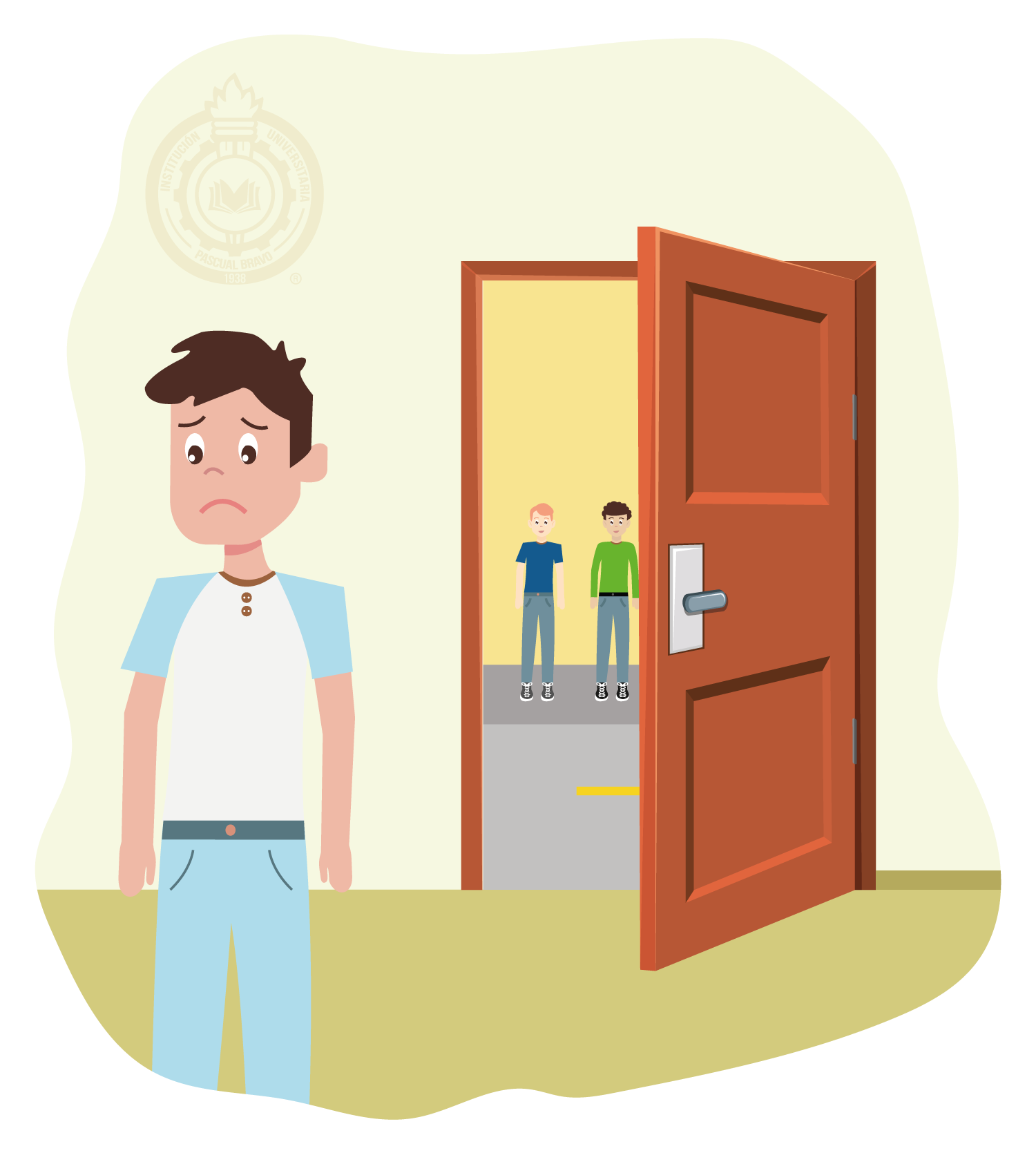
One Friday Pascualino came home from school very tired. His neighbor and friend, Willy, yelled at him: “Pascualino, Pascualino, come quickly to my house! An old friend of my dads came to visit and I want you to meet him." Pascualino replied: "No Willy, I don't want to go out. I'm very tired, and also sad, because I did very poorly on my math exam "
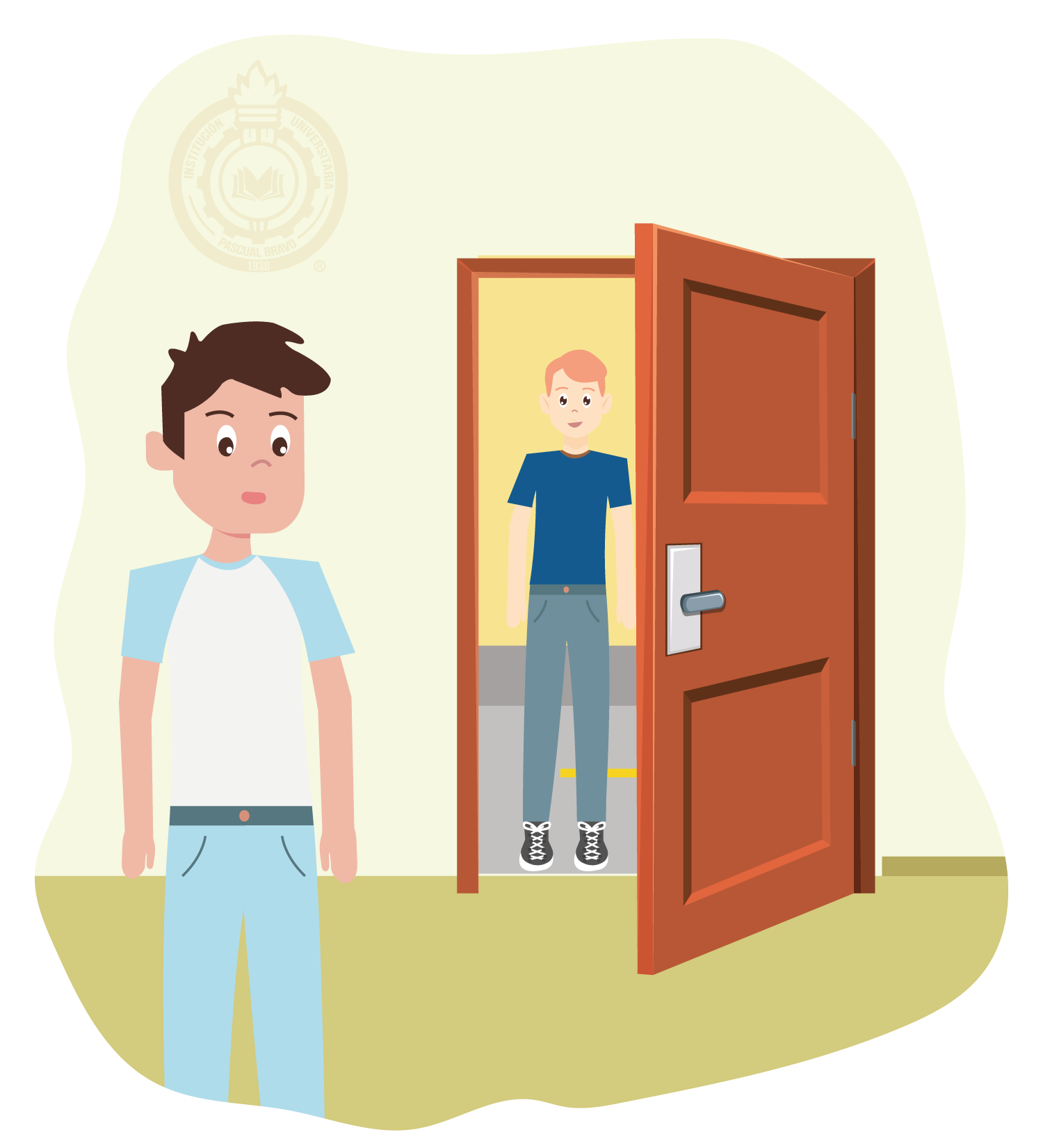
“Even so, come to my house. I assure you that your tiredness and sadness will disappear when
you hear the stories from Don Jacinto. He lives on the Islote Santa Cruz. Remember,
we watched a documentary about it a few days ago. He can confirm if this is the most
densely populated place on the planet.”
After thinking about it for a few seconds, Pascualino answered:
"Wait for me! I’ll change out of my school uniform and I’ll ask my mom for permission to go to
your house."
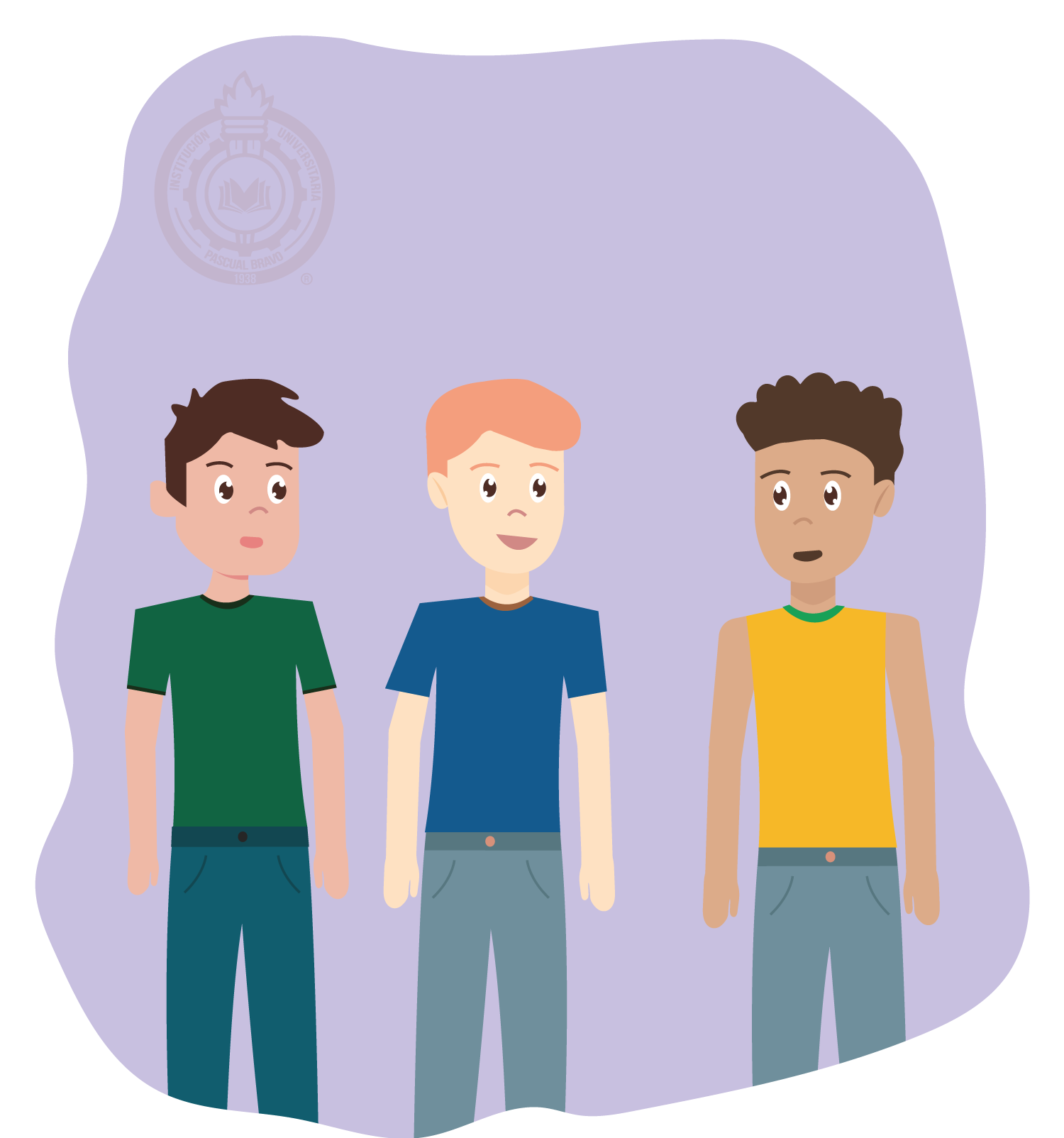
Pascualino left his house and went with Willy to meet Don Jacinto.”
When they arrived, Don Jacinto was waiting for them. They sat down next to him and waited anxiously
to hear the stories.
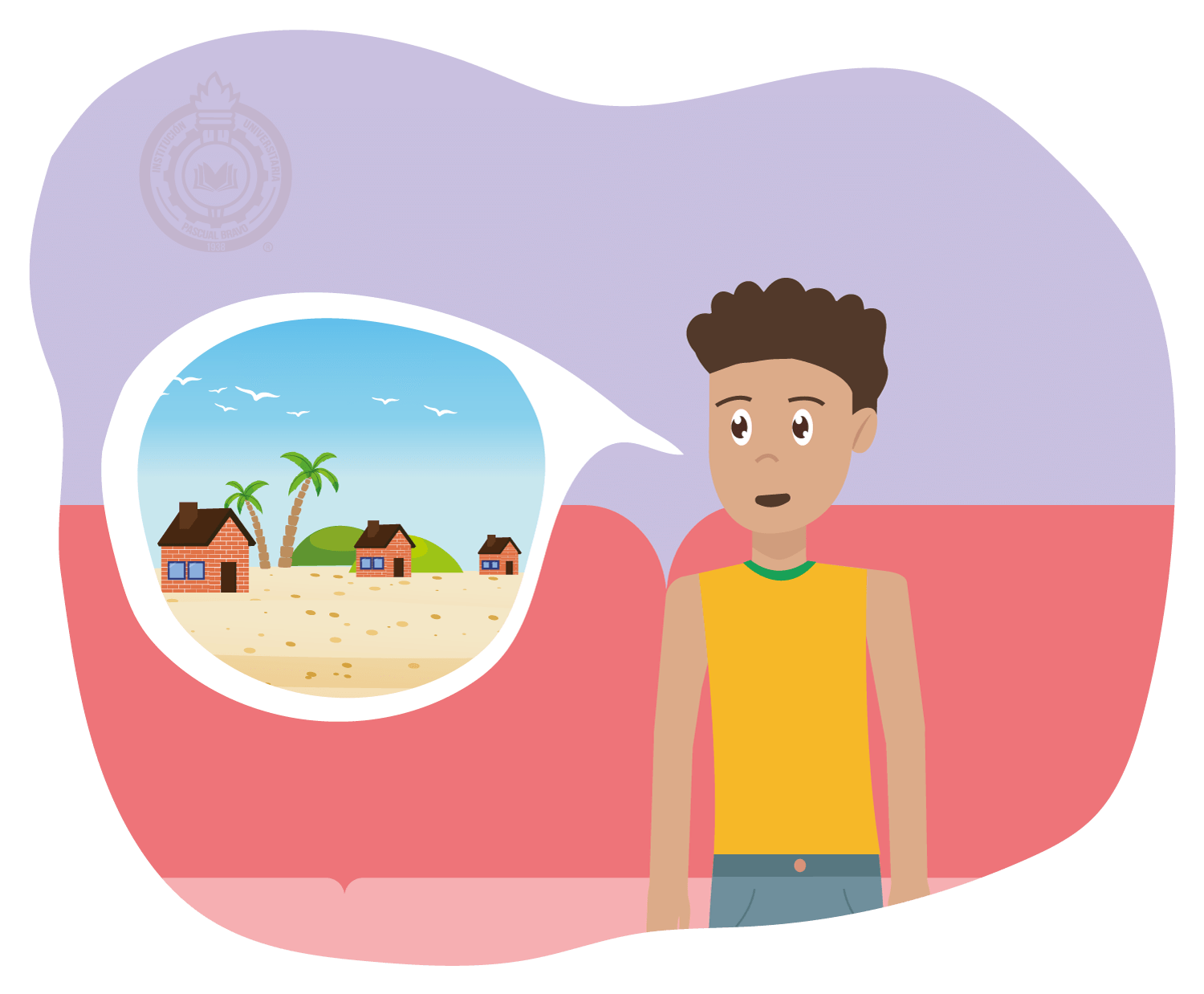
Don Jacinto began his story: “The archipelago of San Bernardo del Viento has 10 islands, one of which is Santa Cruz del Islote. It is a small island that has 10,000 square meters of land. It is very poor. It has no water or electricity.” Pascualino and Willy looked at him in amazement.
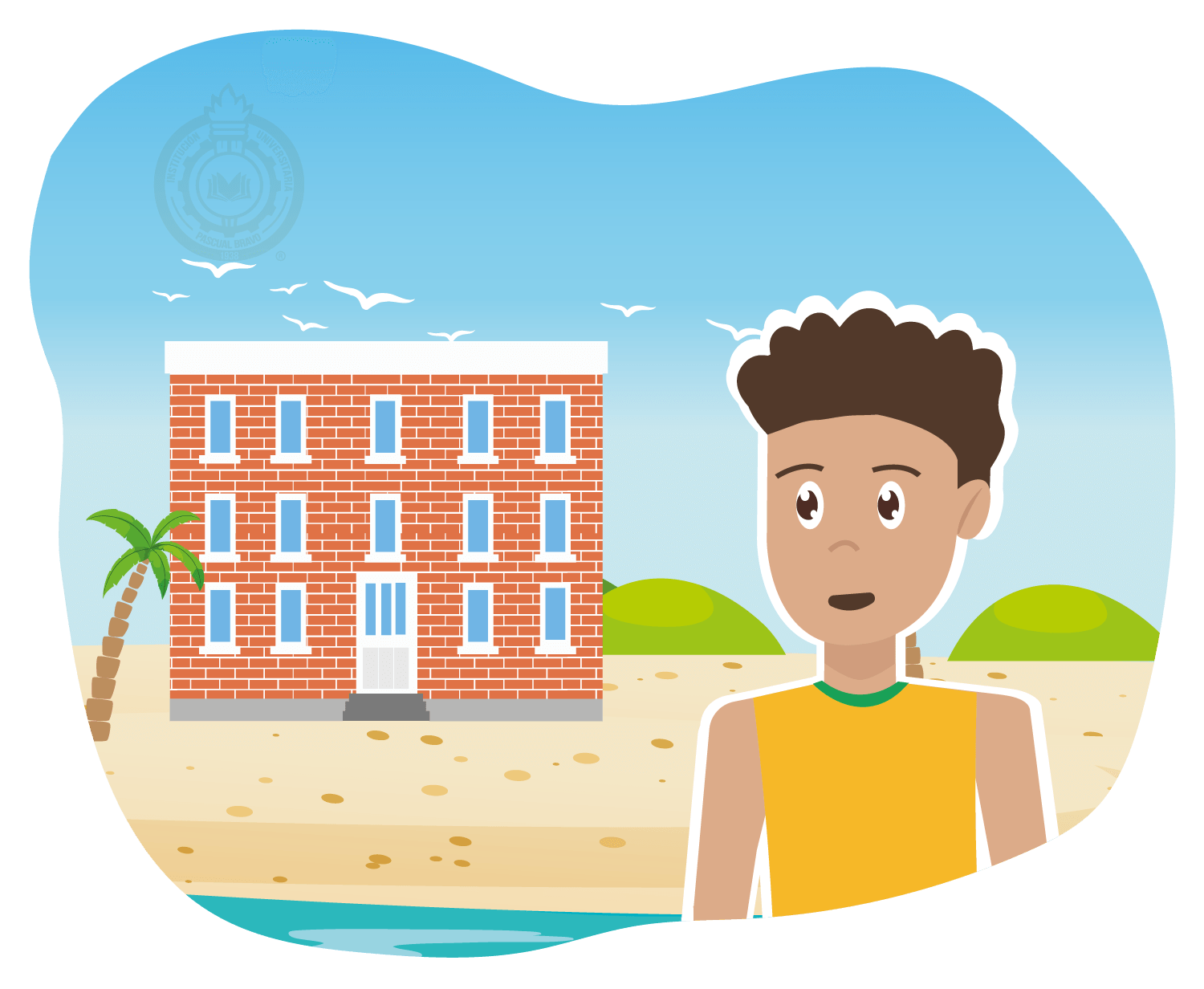
Don Jacinto continued his story: "We collected water when it rained and we used oil to light our lamps.
Fortunately, we now have solar panels that were donated by the Japanese government."
Pascualino interrupted and asked: "Don Jacinto, did something happen on the island that
helped the entire community?"
Don Jacinto smiled mischievously and said:
"One day a group of islanders rescued a boat loaded with cocaine and the owner
in gratitude gave them a lot of money. They used the money to build the brick and cement houses."
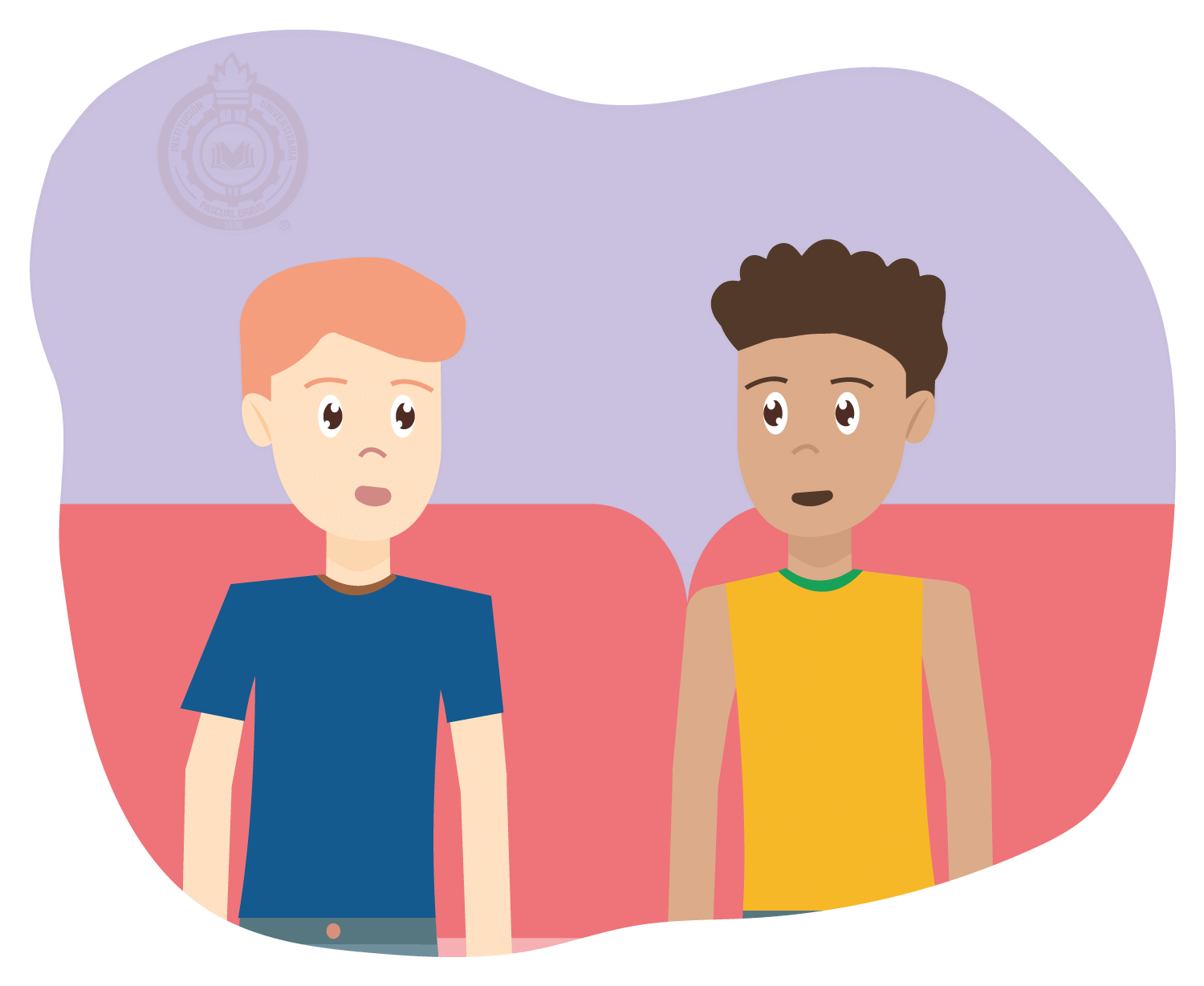
Don Jacinto continued talking. “There is a school that has three floors. It is the tallest building in Santa Cruz. There are only 9 grades. If you want to continue studying, you must go to Cartagena. Most people, however, prefer to continue living on their small and poor island, working in fishing and tourism"

"So, it must be very difficult to make money there.," interrupted Willy.
"There is no need for a car or other luxuries. You can walk the entire island in 5 minutes.
There are no warehouses. Every 15 days a merchant from Tolú visits to sell shoes, clothes
and other merchandise," Don Jacinto replied with kindness.
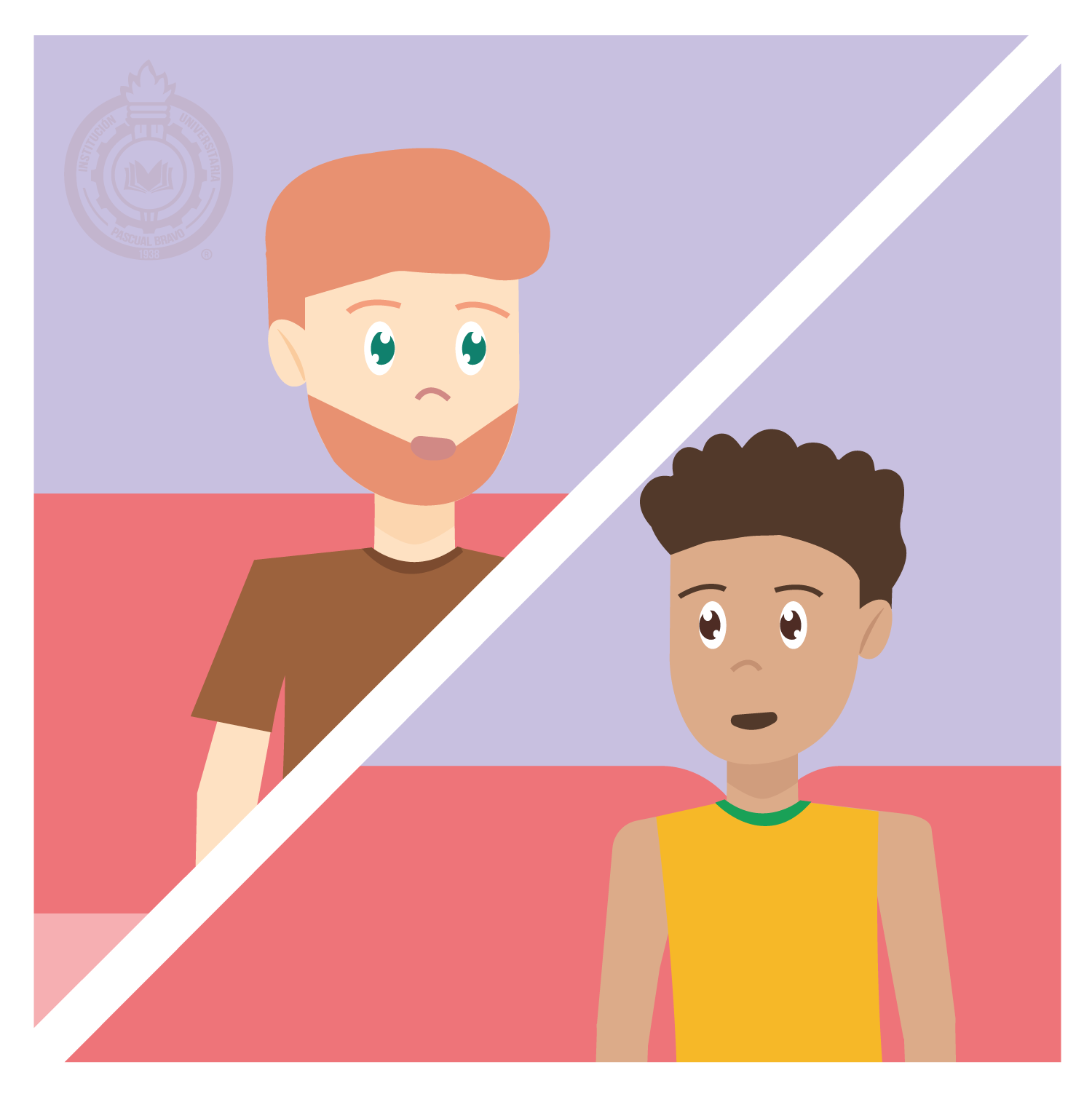
Pascualino listened attentively and asked, "Señor Jacinto, does the small island have a police force?
Don Jacinto laughed "There is no police. We all know each other and there is no crime."
Again Pascualino asked: "Is there a health center?"
Don Jacinto answered with a small smile, "there is a small health center for simple illnesses,
but if you get really sick or if there is an emergency, you have to go to Tolú."
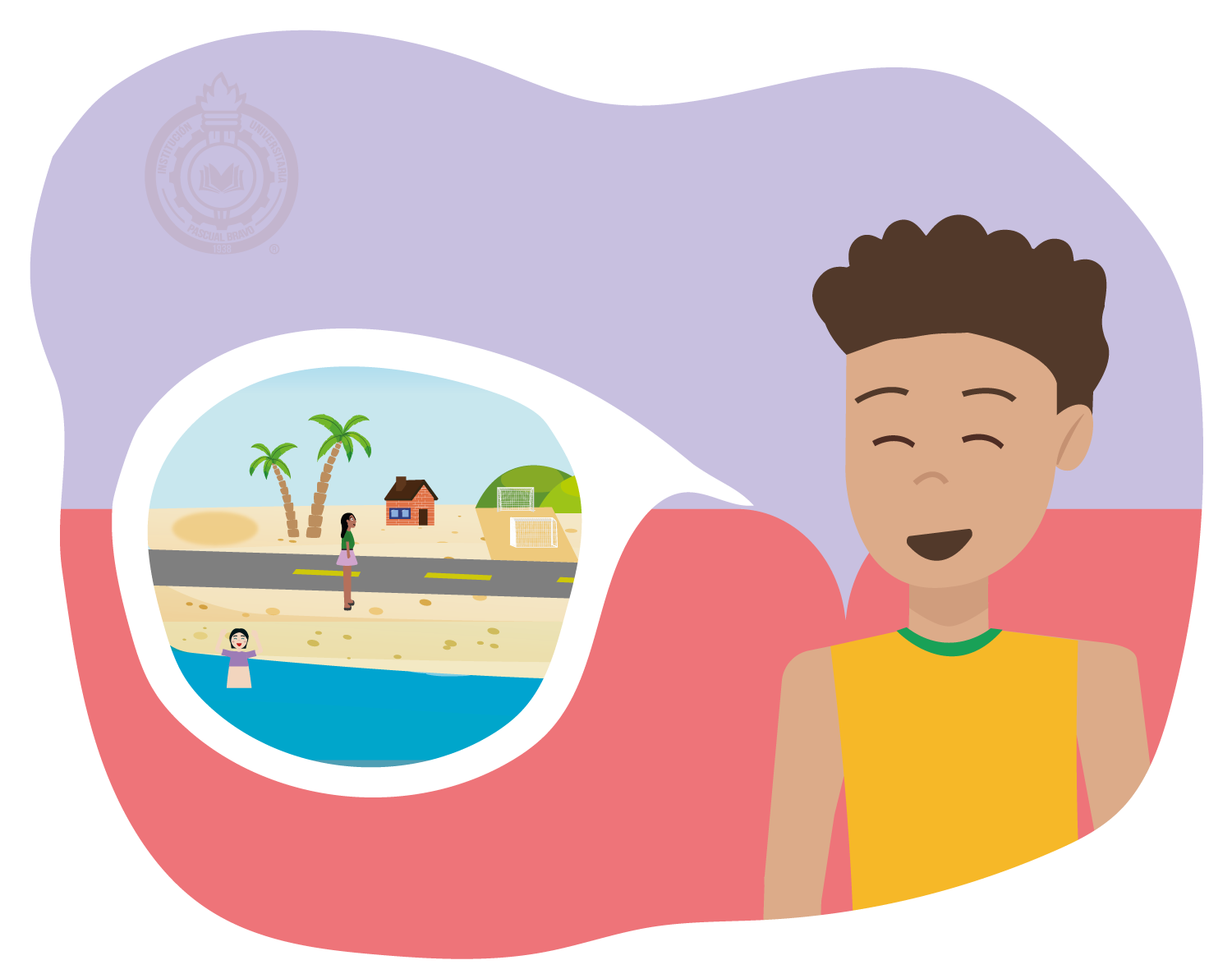
Willy's father spoke for the first time and jokingly said, "friend, does anybody die there?
You have not mentioned the cemetery yet."
Don Jacinto answered with laughter, "Yes, my friend, people also die there. We bury them in a cemetery
that we built in front of our island, because ours is too small."
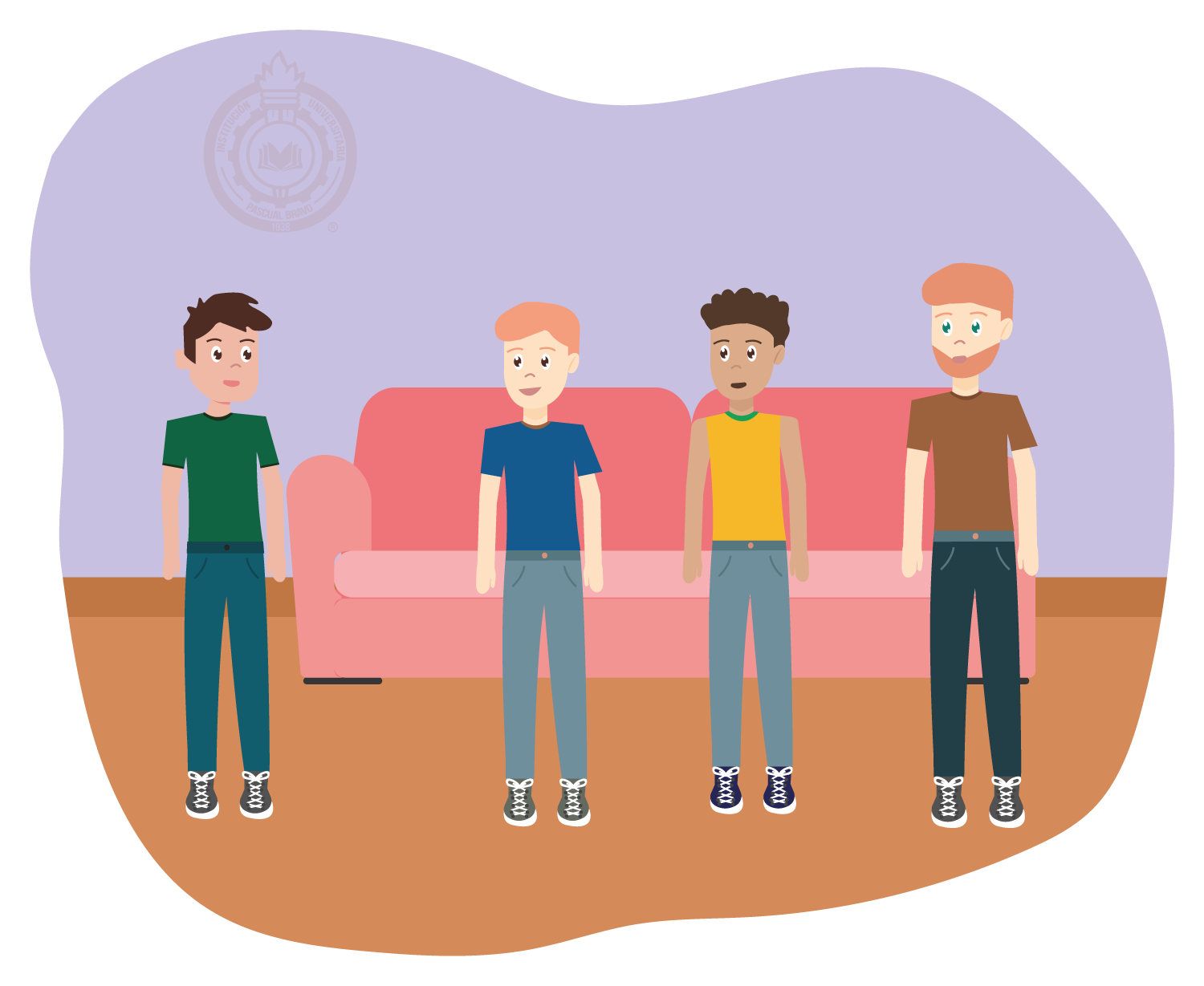
"What do people on the island do to have fun?" asked Pascualino.
"There is a plaza where roosters fight and a small soccer field on one of the streets.
There is also an aquarium to swim in and many pregnant women!" Willy's father and Mr. Jacinto
laughed out loud, while Willy and Pascualino looked at each other without understanding the joke.
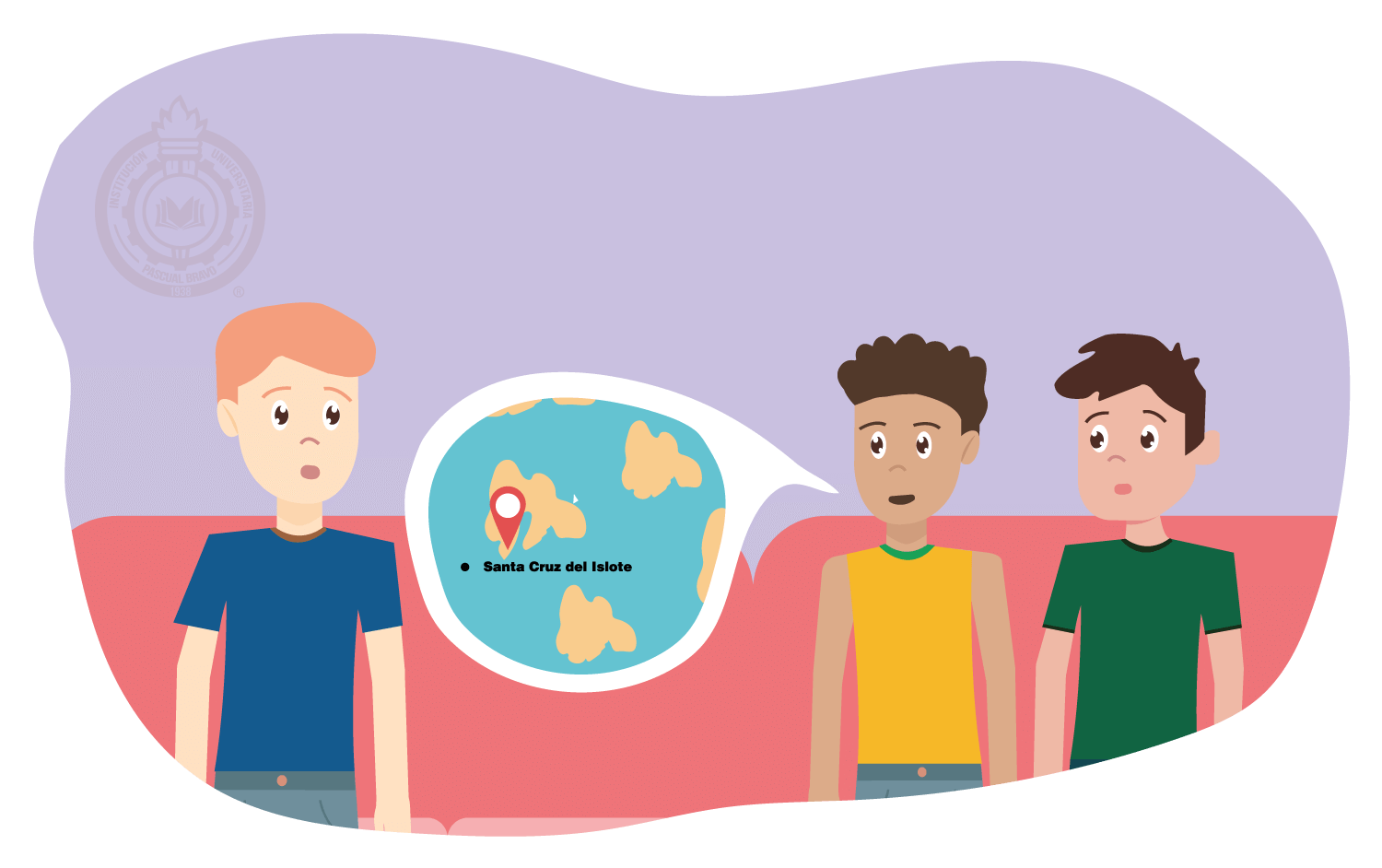
p>Pascualino looked at the time and realized that it was getting late. "Before leaving, I would like to ask you: Is it true that Santa Cruz is the most overpopulated place in the world?"
1. Pascualino was happy because he passed his math exam
2. The documentary that they watched was about the country of Santa Cruz.
3. Pascualino and Willy arrived in time to hear Mr. Jacinto's story
4. An archipelago is made up of several islands
5. The Santa Cruz islanders are drug traffickers
6. On the island of Santa Cruz, the main industry is livestock.
7. In Islote Santa Cruz, there are no taxis or buses
8. In Santa Cruz, there is a large health center
9. There is no cemetery built on the island of Santa Cruz
10. The inhabitants of Santa Cruz Island are too busy to have children.
11. “The Shark” is writing a book because he thinks there are a lot of misconceptions about Santa Cruz,
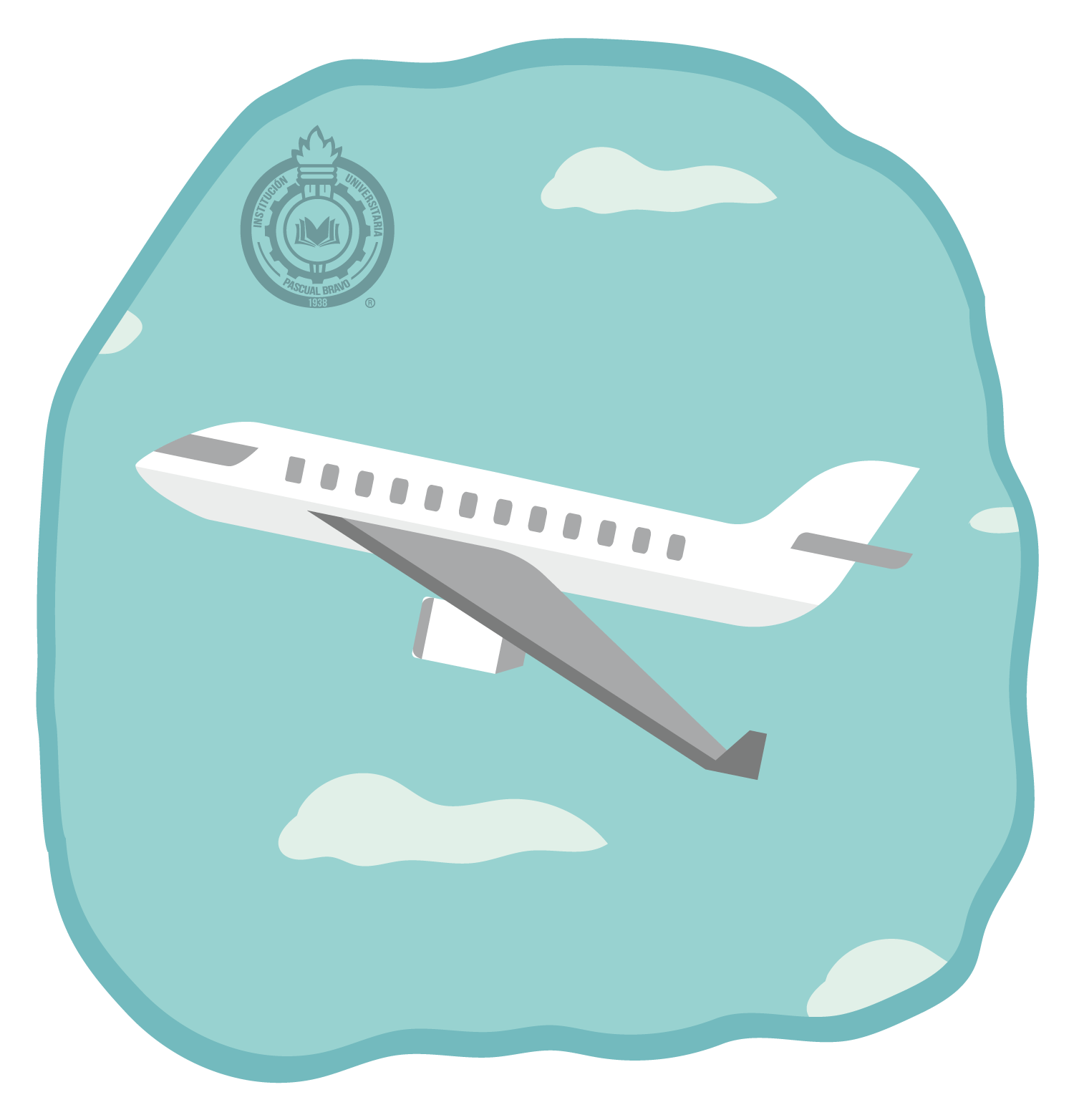
During the Easter holidays, Pascualino and his family wanted to go to Cartagena, but they didn’t want to drive because Carla, Pascualino’s sister, always gets car sick! So they decided to fly instead.
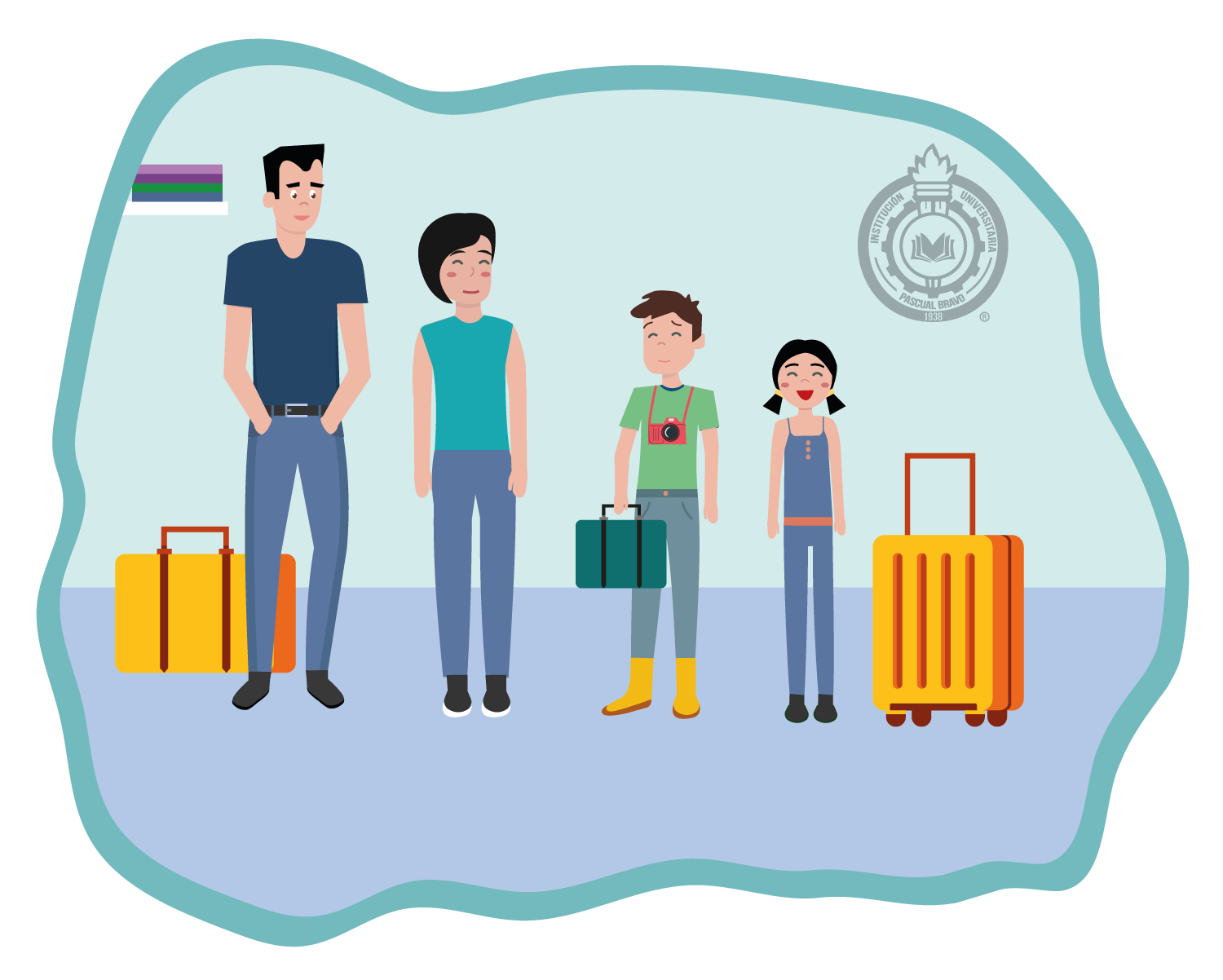
Pascualino and his sister were very excited to enjoy the beach. They both brought a lot of toys and
tools to play in the sand. They even brought a photo camera to capture all their memories.
On the other hand, their parents only wanted to enjoy the tranquility of the sea and rest as long as
possible
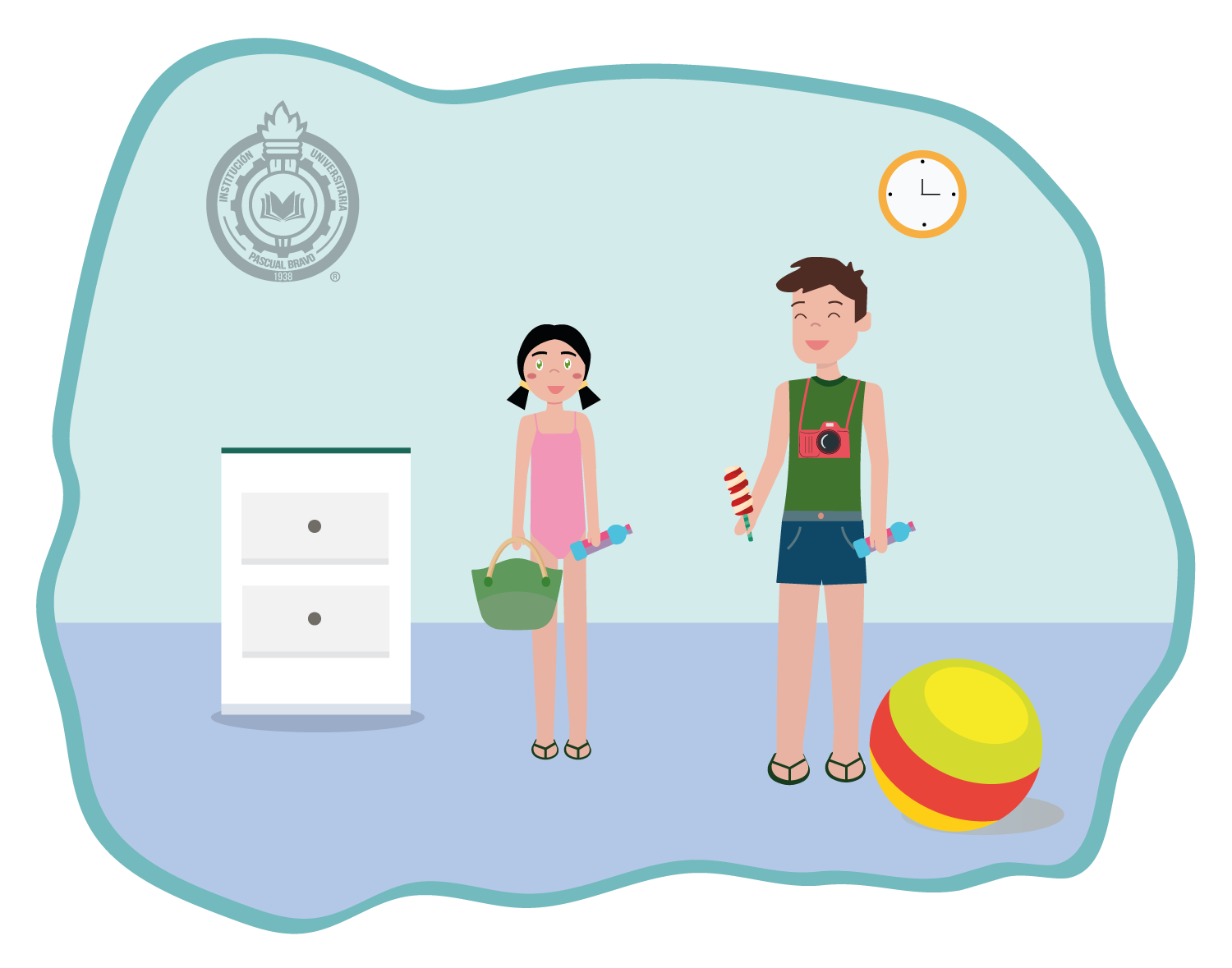
Once they arrived in Cartagena, Pascualino and his sister couldn't wait to go to the beach.
As they were getting ready to leave, they put some snacks in their backpack to eat at the beach.
Their mother shouted at them and said: "Children! We must take care of the environment!
Do not throw garbage on the beach such as plastic bottles of water, bags of chips or candy wrappings."
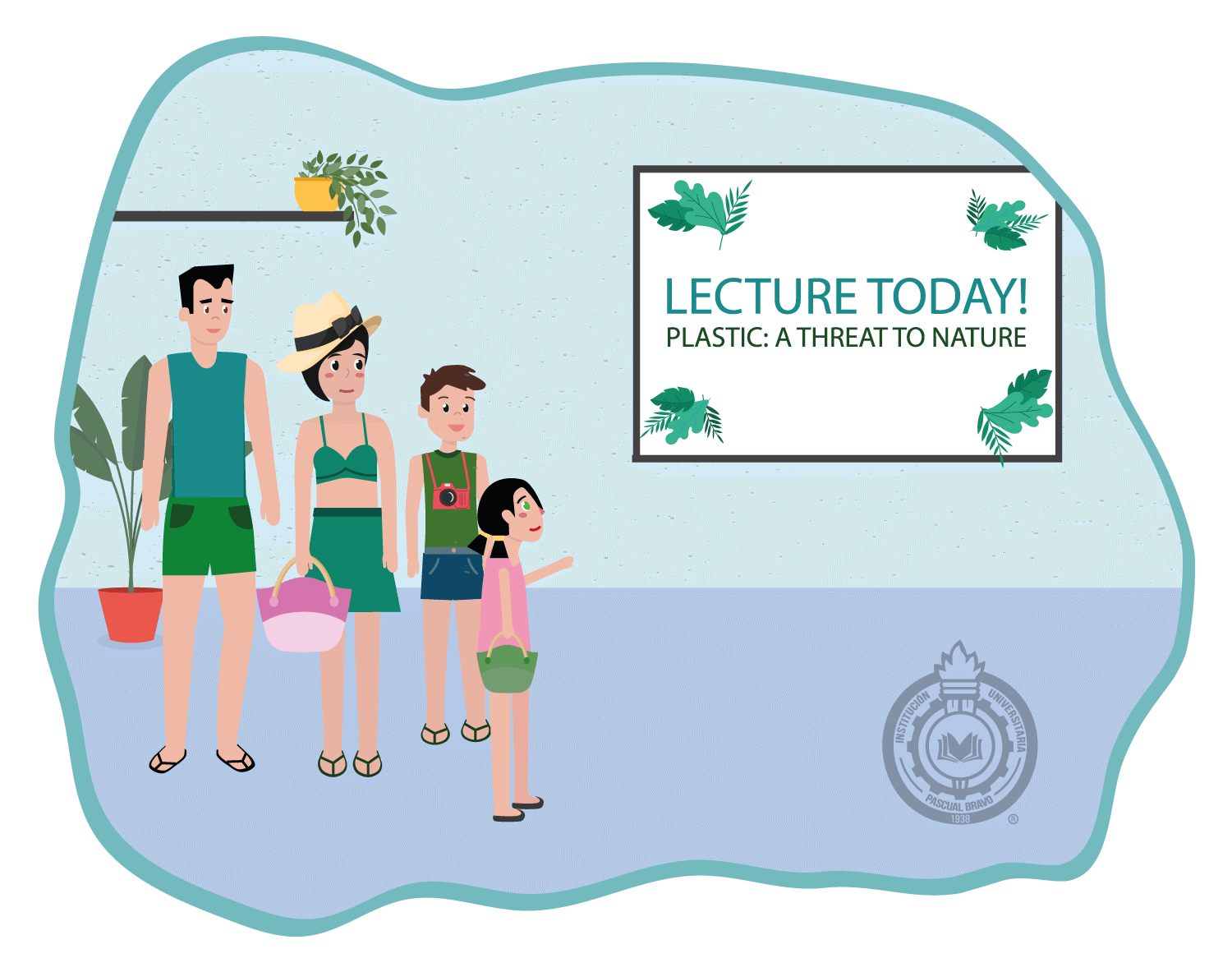
On the way to the beach, they saw an announcement in the hotel lobby that said:
LECTURE TODAY! PLASTIC: A THREAT TO NATURE. The lecture was at the Decamerón Hotel at 7:00 pm
with free admission for guests of the hotel.
"Can we go?" Carla asked.
"Sure we will!" their mother said. "It is important to learn about topics such as this.”
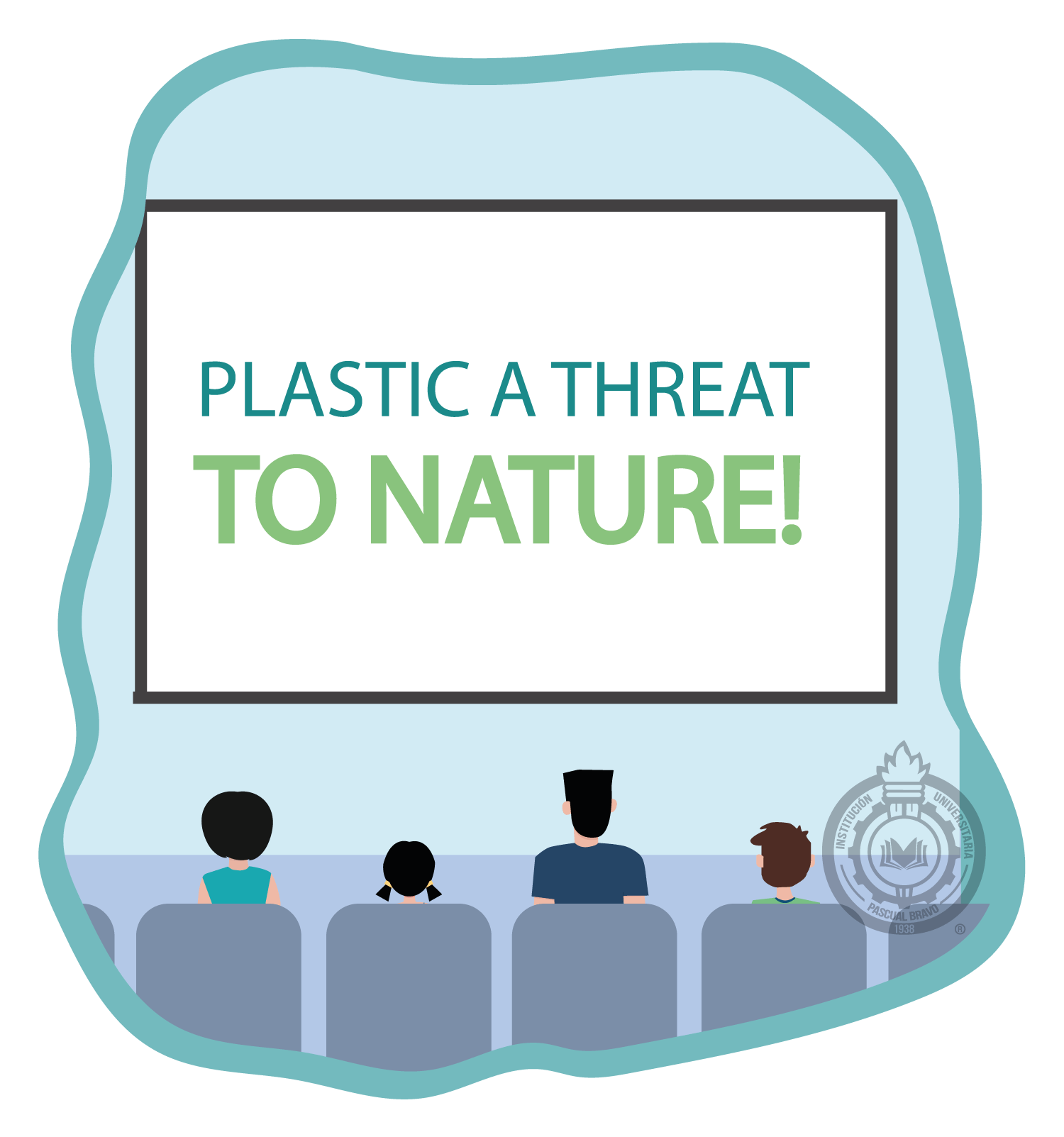
After a long day at the beach, Pascualino and his family got ready to go to the lecture.
The children were eager to learn about the topic because their parents had talked to them a lot about plastic.
They arrived at the auditorium and took their seats. There was a large screen in the with the title: "PLASTIC A THREAT TO NATURE"
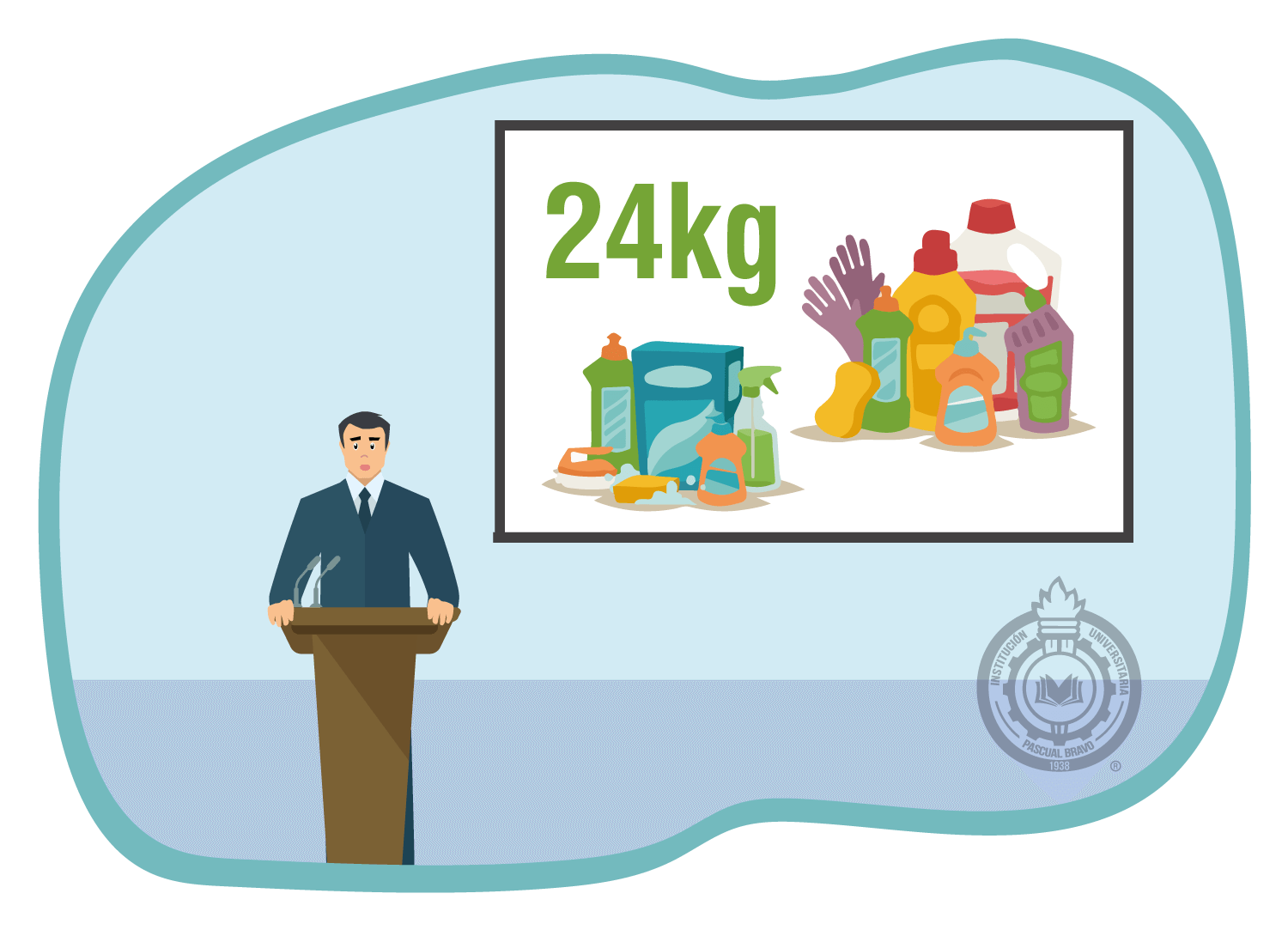
The speaker began by saying: "Each Colombian consumes on average 24 Kg of plastic in a year.
That is to say, Colombians consume one million tons of plastic waste per year."
"Wow! That's a lot of plastic!" Pascualino whispered in surprise.
The speaker continued and explained that most of that plastic ends up in the main river arteries
of Colombia, the Amazon and Magdalena, and eventually finds its way into the oceans.”
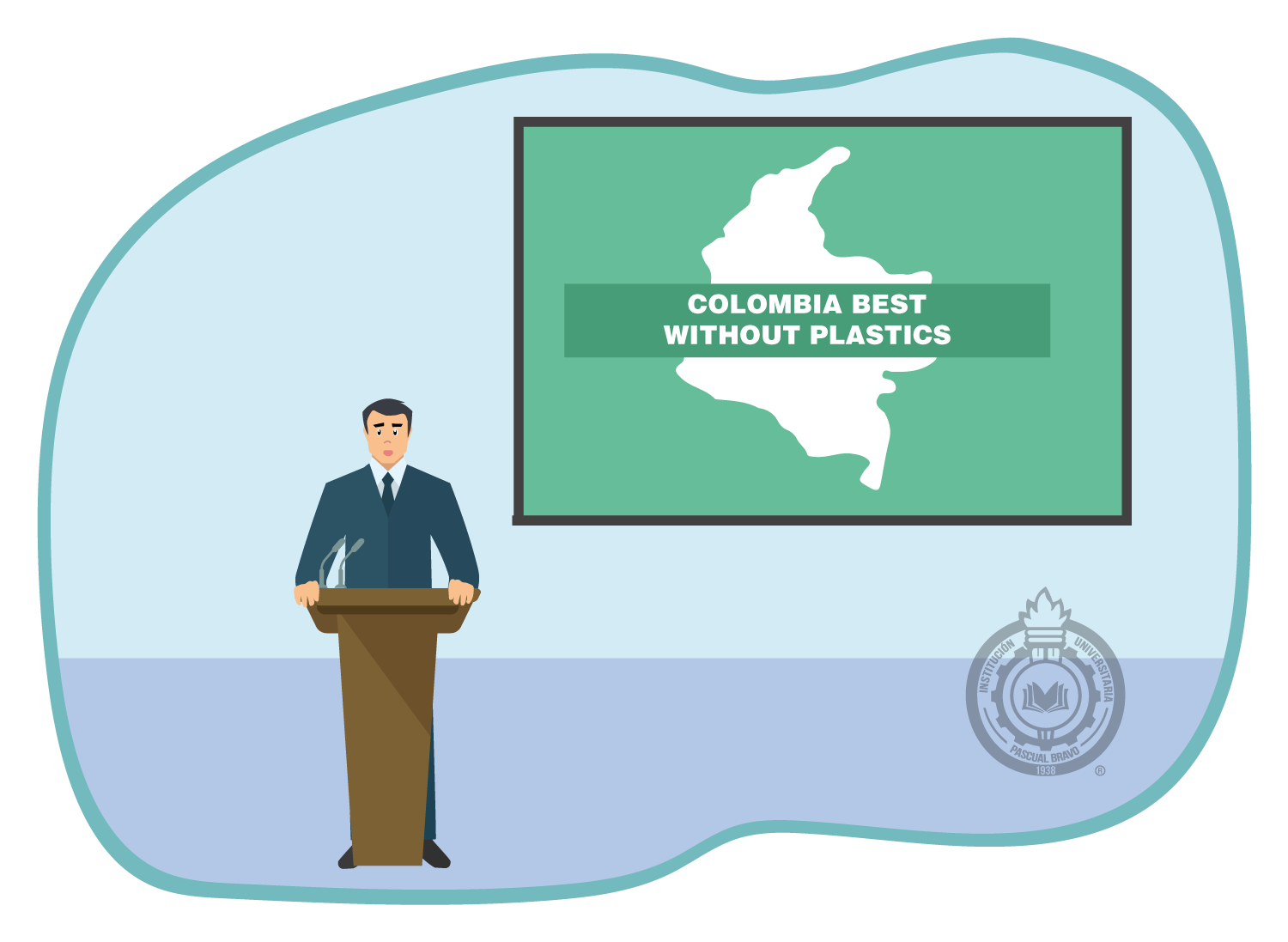
The speaker went on to say that among the 8 major cities in Colombia, Barranquilla is the
city that produces the most garbage, with Medellín occupying last place.”
In addition, Greenpeace launched a campaign in Colombia called "COLOMBIA BEST WITHOUT PLASTICS."
The purpose of the campaign is to eliminate single-use plastics.
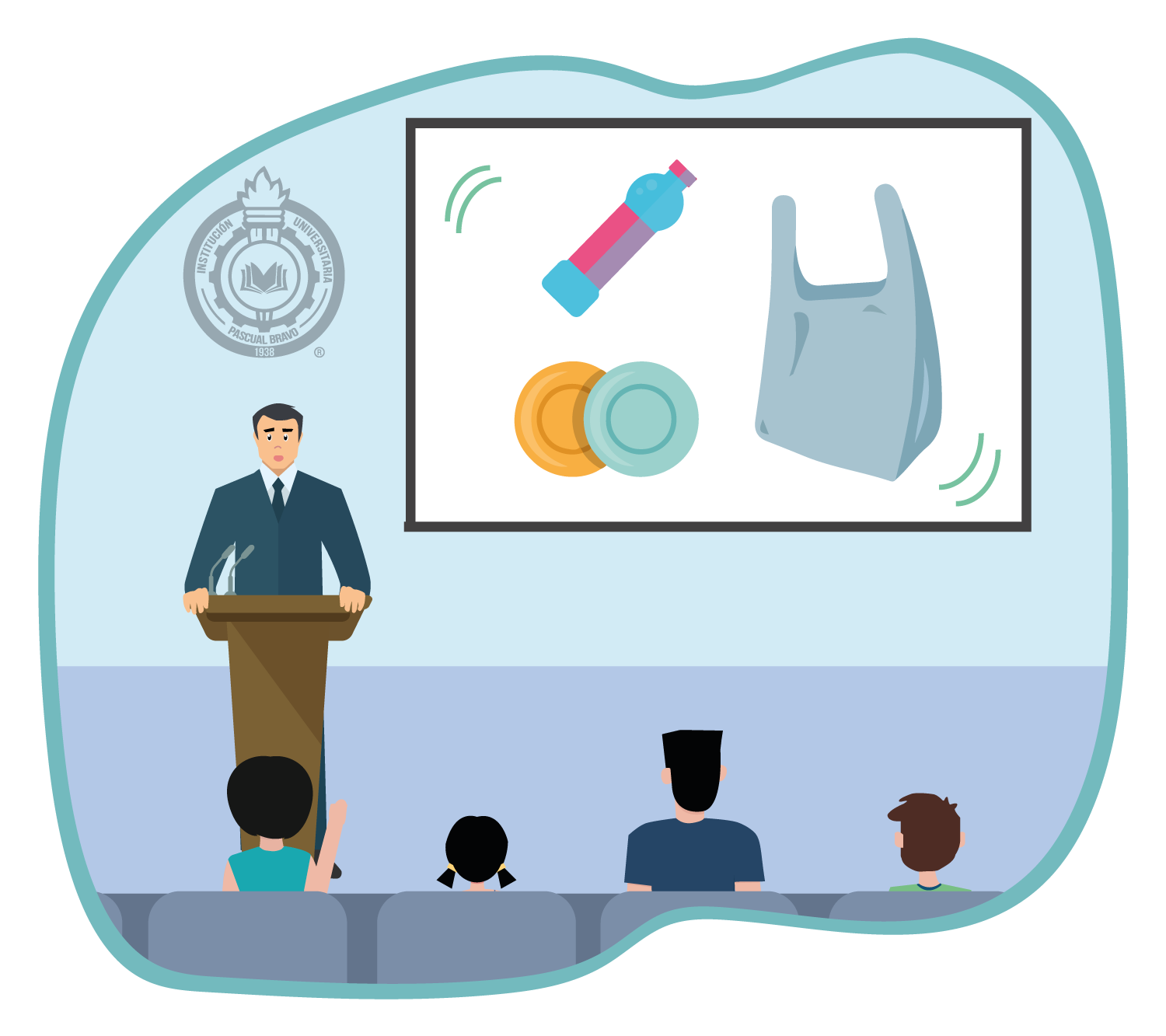
Pascualino’s mother raised her hand and asked: "What is the single-use plastic?"
"Very good question! Single-use plastic is a plastic product that is used only once and
then thrown away such as a coca cola bottle, cigarette wrapping, straw, plates, lids, bags, among others.
When these products are thrown into the sea, they are mistaken as food by marine life and accidently consumed.
There are some areas of the Colombian Pacific with so much garbage that children can not tell the
difference between a natural plant and plastic."
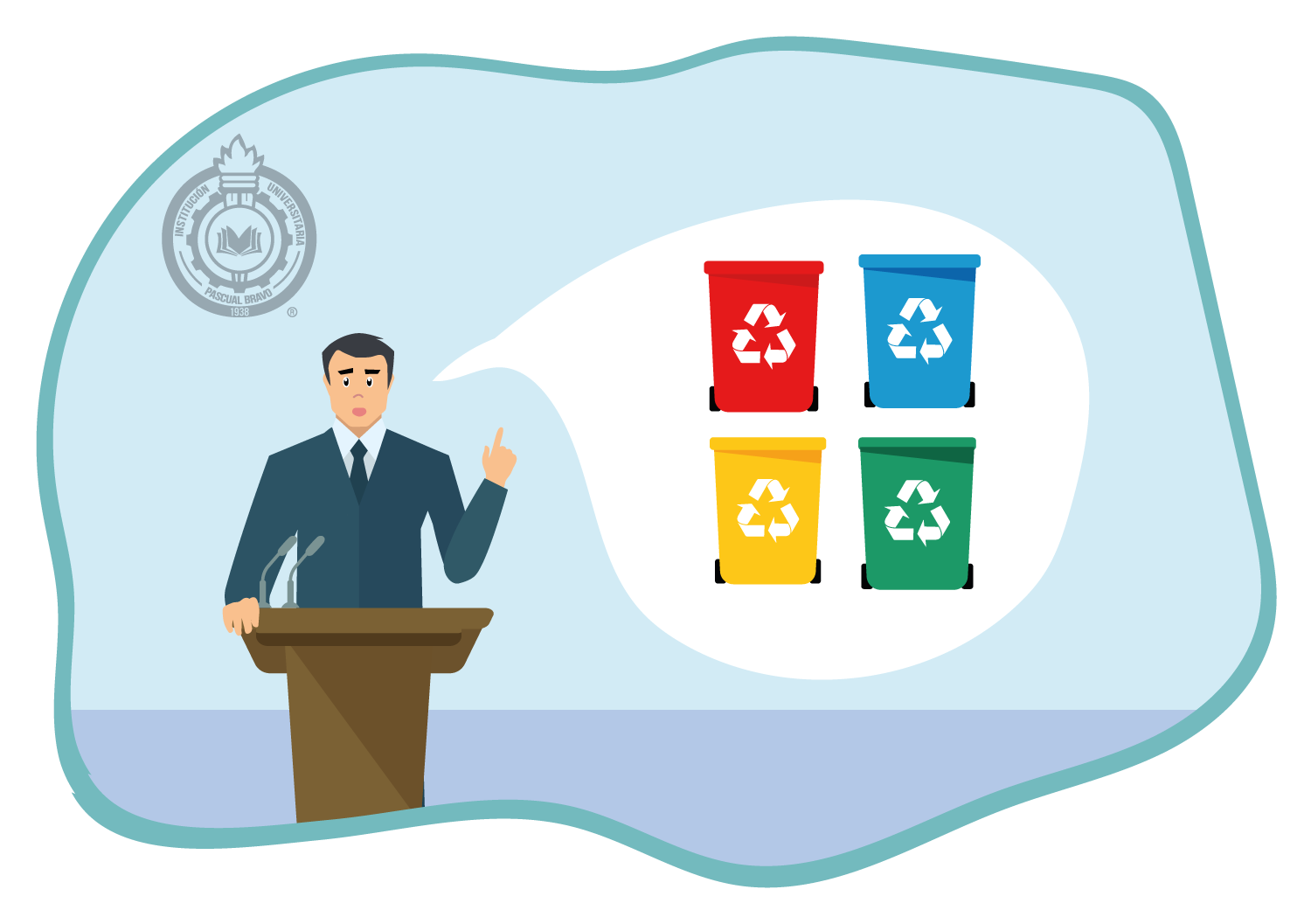
Pascualino raised his hand and asked, “What can be done to improve the situation?”
The lecturer responded that we need to recycle and reuse plastic products instead of using them
once and then throwing them away. Companies need to look at alternative products for consumers.
In short, everyone needs to be more willing and responsible with what is being left behind as trash
on the planet

The speaker gave an example of a company from Colombia, based in Medellin, called Enka.
Enka runs a single plant in which it receives plastic bottles from different parts of the world
and turns them into industrial threads, textile filaments and resins."
"How interesting! I bought some clothing from that brand!" Pascualino's mother said.
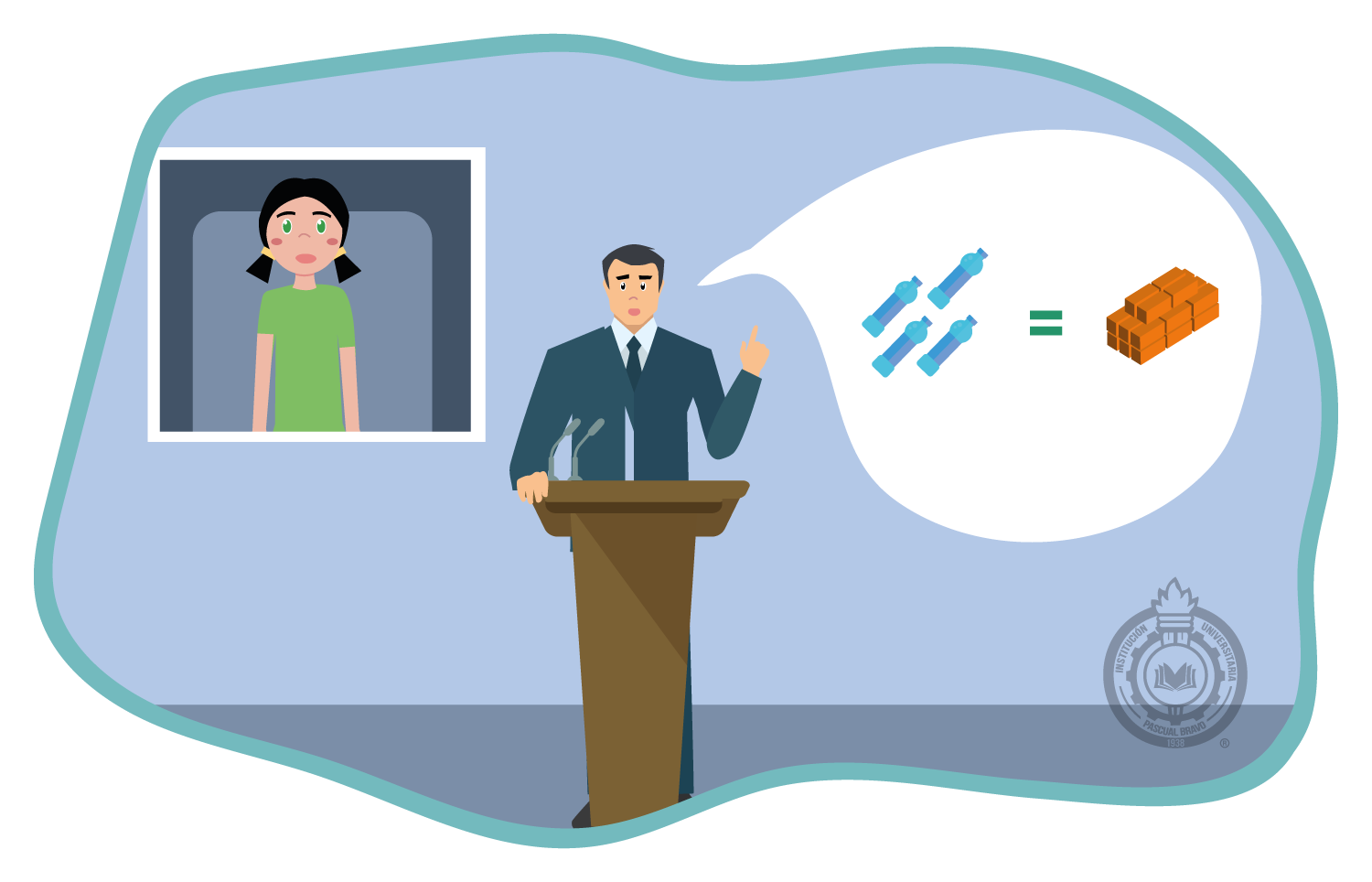
"Does anyone have a final question before I finish?" the speaker asked.
"I do" Pascualino's sister said. "What other products can plastic be converted into?"
"Well young lady, there is a company called ECOLADRILLOS that converts plastic into ecological bricks
that you can build houses with. There is another company called DISECLAR that takes recycled plastic,
vegetable fiber and coffee husk and makes furniture. Examples such as these help you understand
the endless possibilities of recycling plastic "
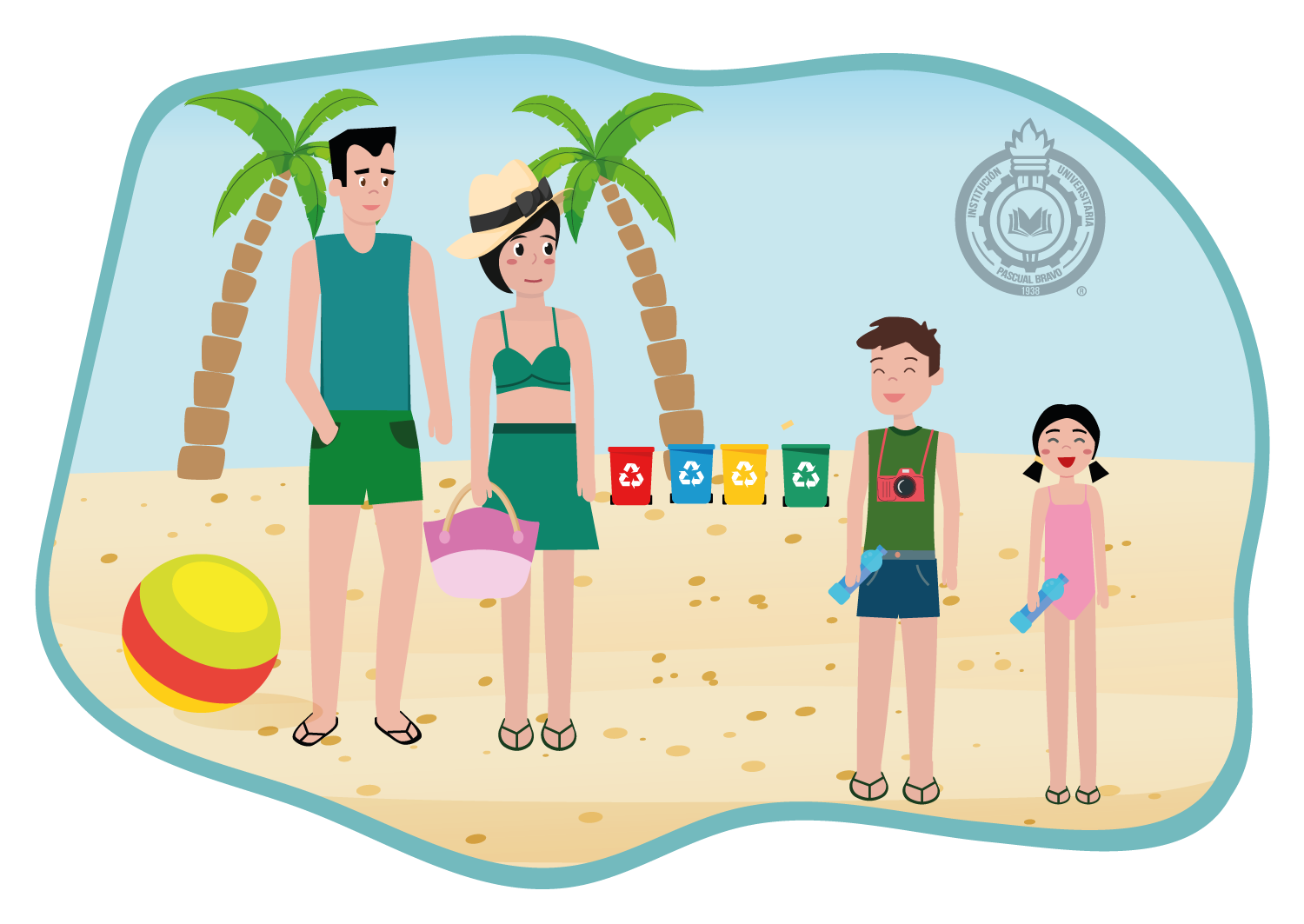
The conference ended and everyone in the auditorium clapped and the lights came on.
"It was an excellent idea to have come," said Pascualino's father.
"Yes, I agree" supported his mother.
"Tomorrow we can go and collect all those plastic bottles that we saw lying on the sand.
This way we will help the planet, " said Pascualino's little sister.
"Yes!" Pascualino replied..
And so the Pascualino's family vacation was not only about having fun at the beach,
it also helped them to become more aware of the importance of recycling plastic.
1. Pascualino and his family went to Cartagena by plane because they did not have a car
2. Pascualino's parents wanted to play in the sand and take a lot of photos
3. Pascualino's mother cared about nature and she is teaching her children about it
4. Pascualino’s family wants to go listen to a lecture on Plastic.
5. Pascualino and his sister did not want to go to the conversation but to stay on the beach
6. Plastic waste ends up in suitable places for their respective recycling
7. Greenpeace wants to improve the disposal of plastic in Colombia by raising awareness
8. Plastic is a wholesome food source for ocean life.
9. The situation can be changed if we all commit to better practices with plastic
10. The Enka company has several plants in Colombia to convert plastic into thread
11. New products can be manufactured using recycled plastic as raw material
12. The damage that the environment suffers due to the bad disposal of plastic is a problem that affects us all equally
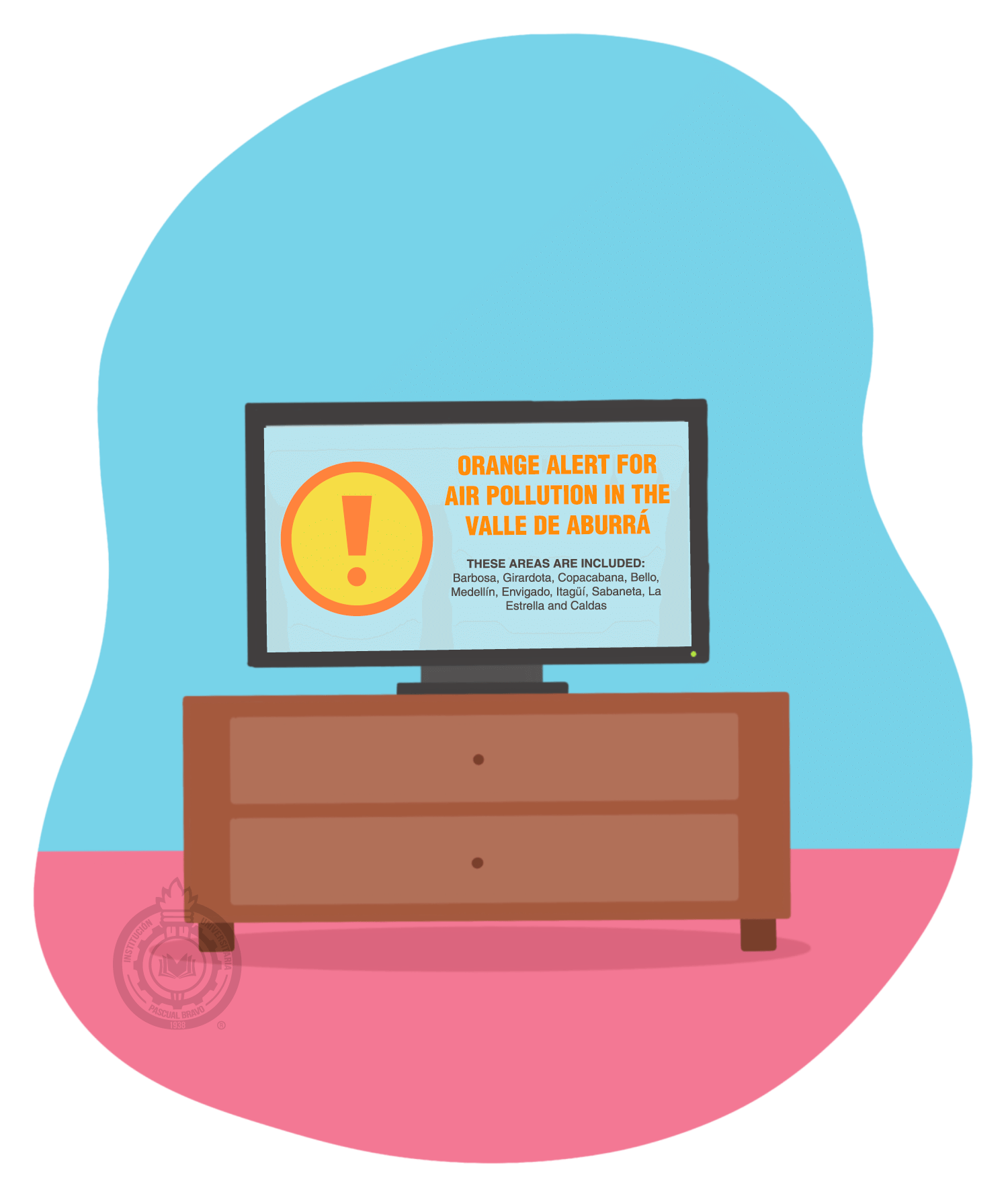
After the Easter holidays, Pascualino and his sister returned to school.
That morning, before going to his school, Pascualino saw a big announcement of the news on the television that said:
"ORANGE ALERT FOR AIR POLLUTION IN THE VALLE DE ABURRÁ" "THESE AREAS ARE INCLUDED: Barbosa, Girardota,
Copacabana, Bello, Medellín, Envigado, Itagüí, Sabaneta, La Estrella and Caldas ".
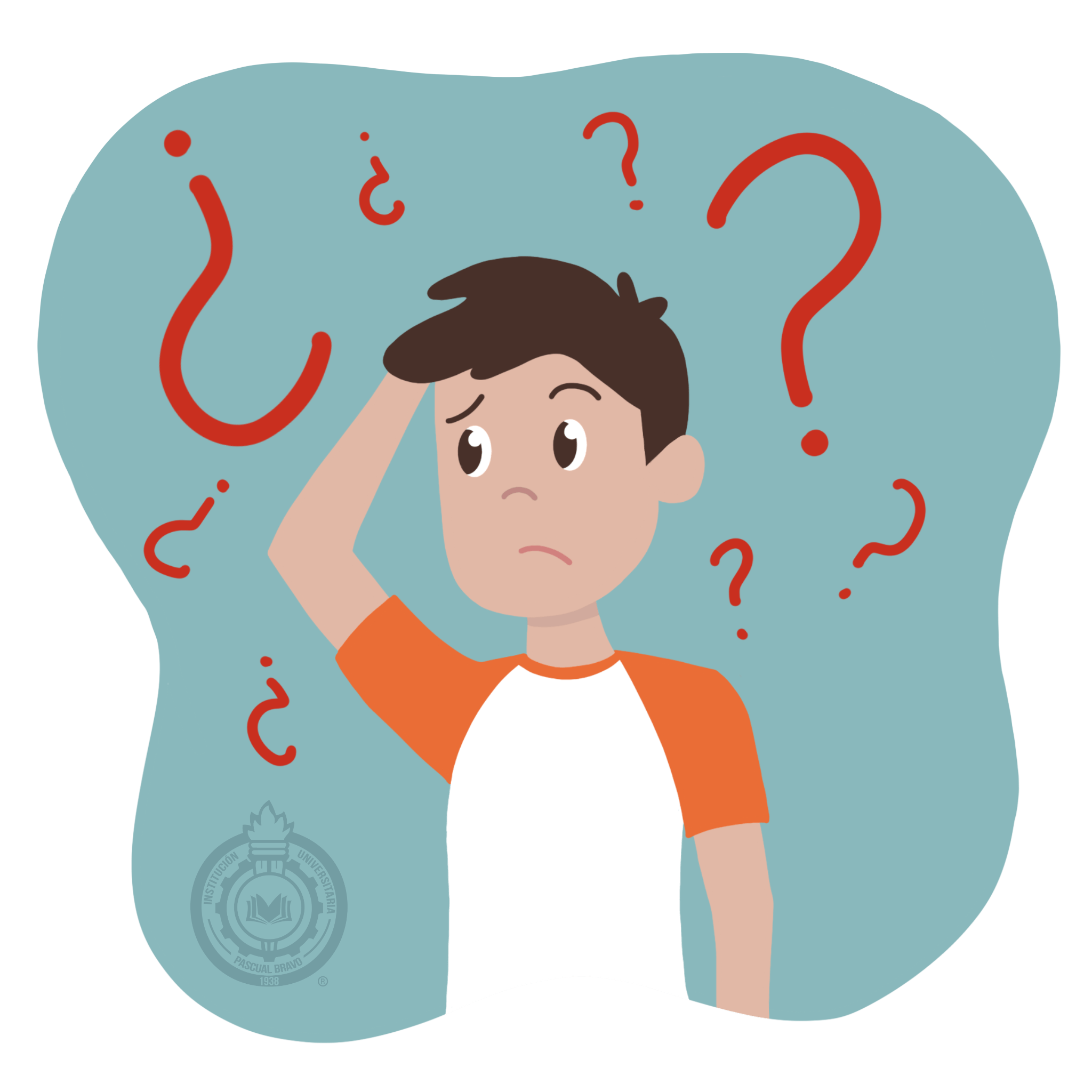
Pascualino was about to ask his parents what that sign meant but he realized that they would be late for school.
So he hurried to get in the car with his sister and his father took them to school.
During the rest of the day he could not concentrate well because he kept thinking about that sign.
So when He returned home He was quick to ask his mom: "Mommy What means:" ORANGE ALERT FOR AIR POLLUTION "?”
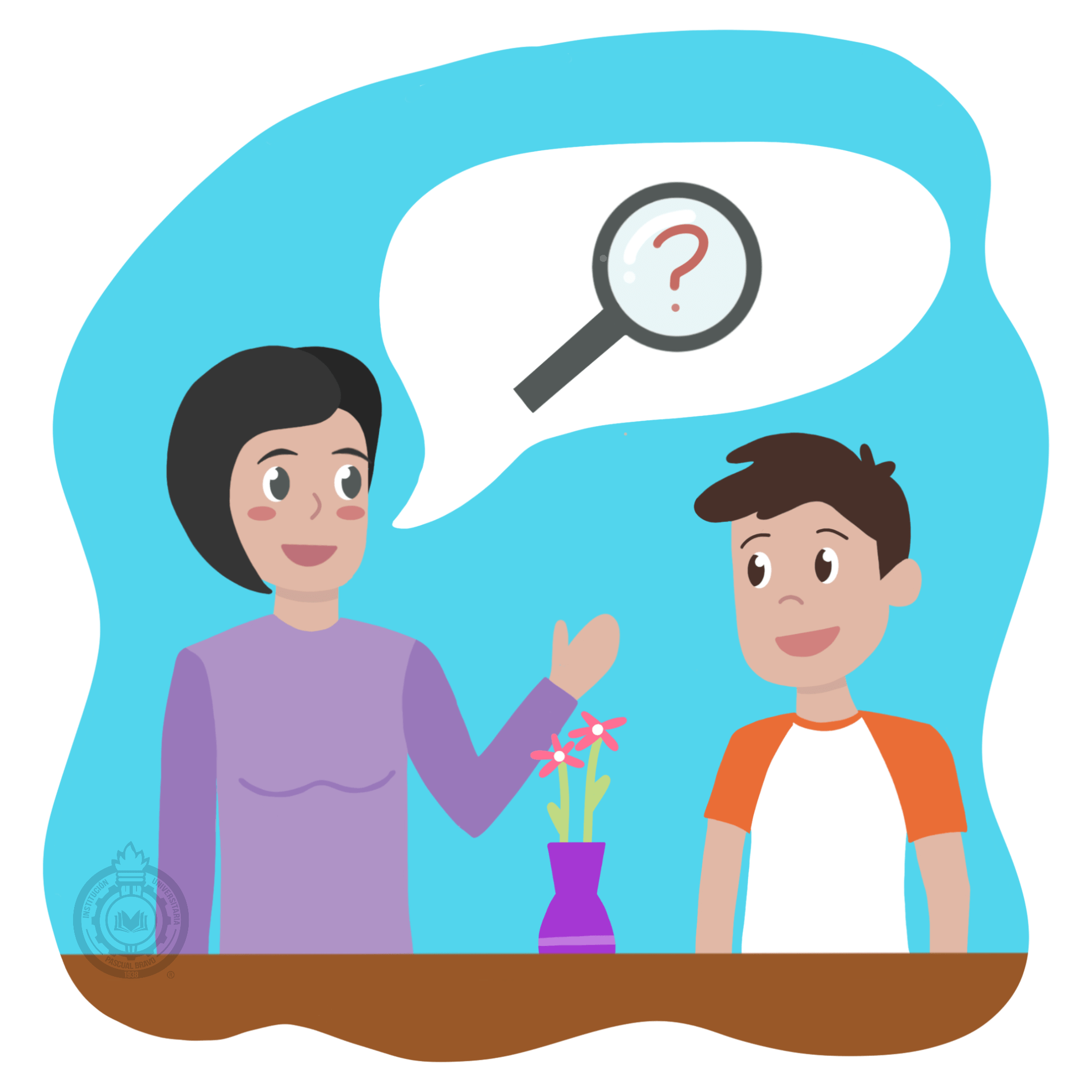
“Well, dinner is read,” his mother responded. “Let’s sit down and eat and I will help you understand that alert.”
“OK,” said Pascualino’s sister. “Because today the teacher did not let us go outside to exercise in my PE class because she said that the air was bad.”
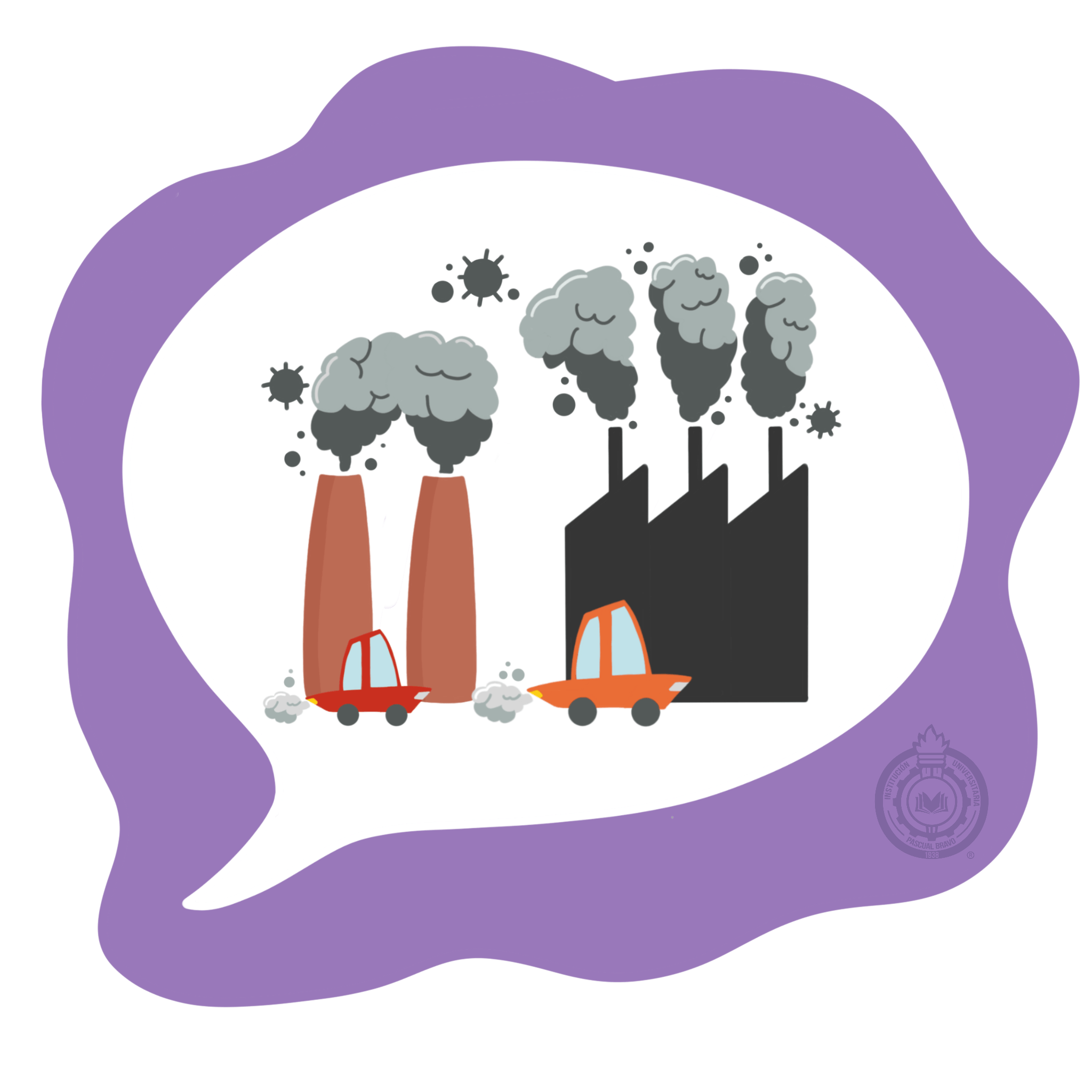
"Does that have something to do with the news sign?" Pascualino asks his mother.
"Of course, when an air quality measurement is at an orange level, it means that this air is harmful to sensitive people such as:
children, the elderly, pregnant women and people with lung problems. And prolonged exposure to pollution is
related to increases in mortality from cardiovascular and respiratory diseases. " she explains.
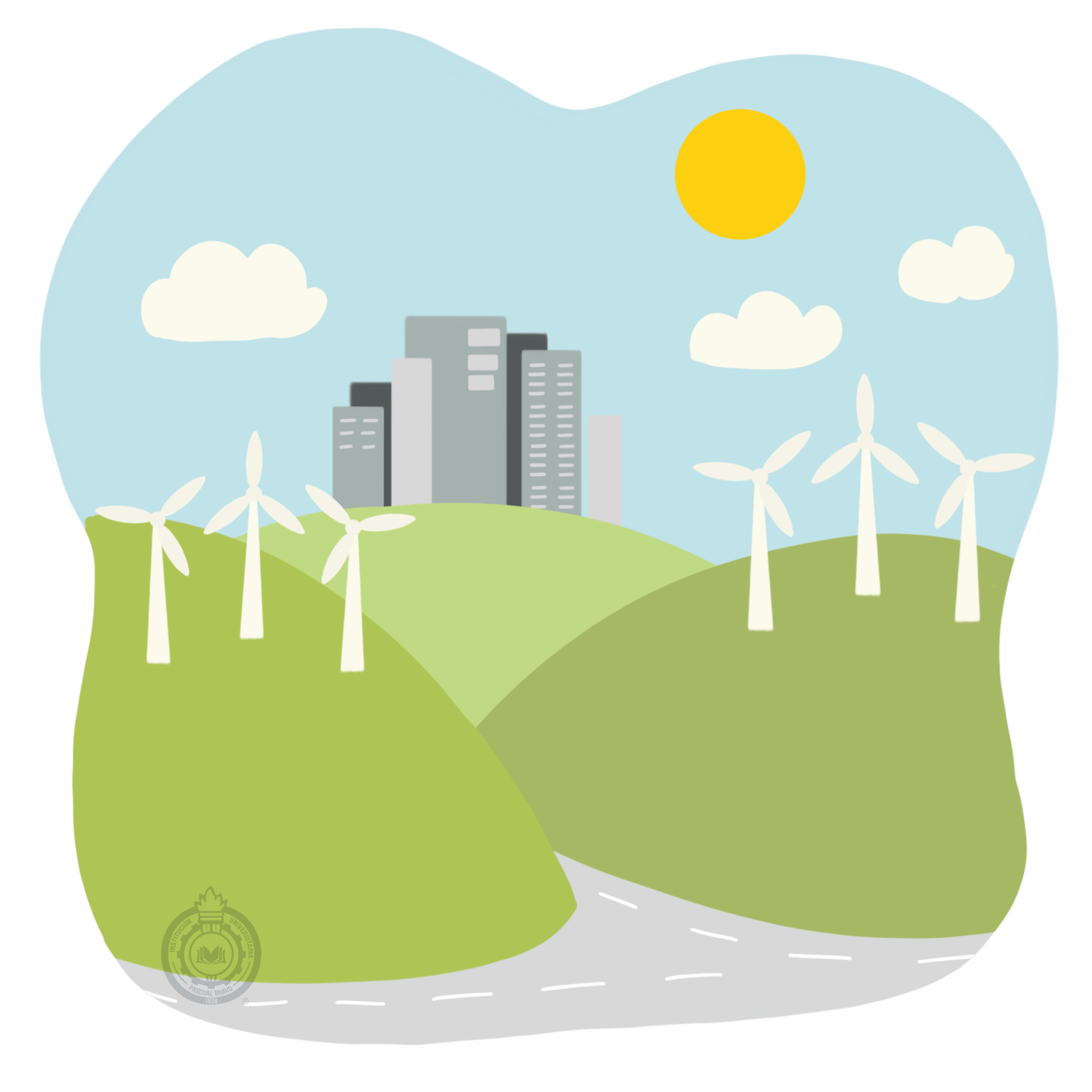
"Mom, and what is pollution?" Interrupts Carla.
"Well, pollution is a synonym for contamination, especially air or water," her mother replies.
"So the idea is to always have fresh air, right mom?" Pascualino insists.
"Yes! Living in a healthy environment improves people's quality of life. Under optimal environmental conditions, citizens can carry out outdoor physical activities and enjoy quality green public spaces, and their health will not deteriorate as a result of exposure to pollution. Additionally, the conservation of the environment guarantees the sustainability of natural resources which is essential for a healthy quality of life, and it also favors the mitigation of the effects of climate change." says their mother.
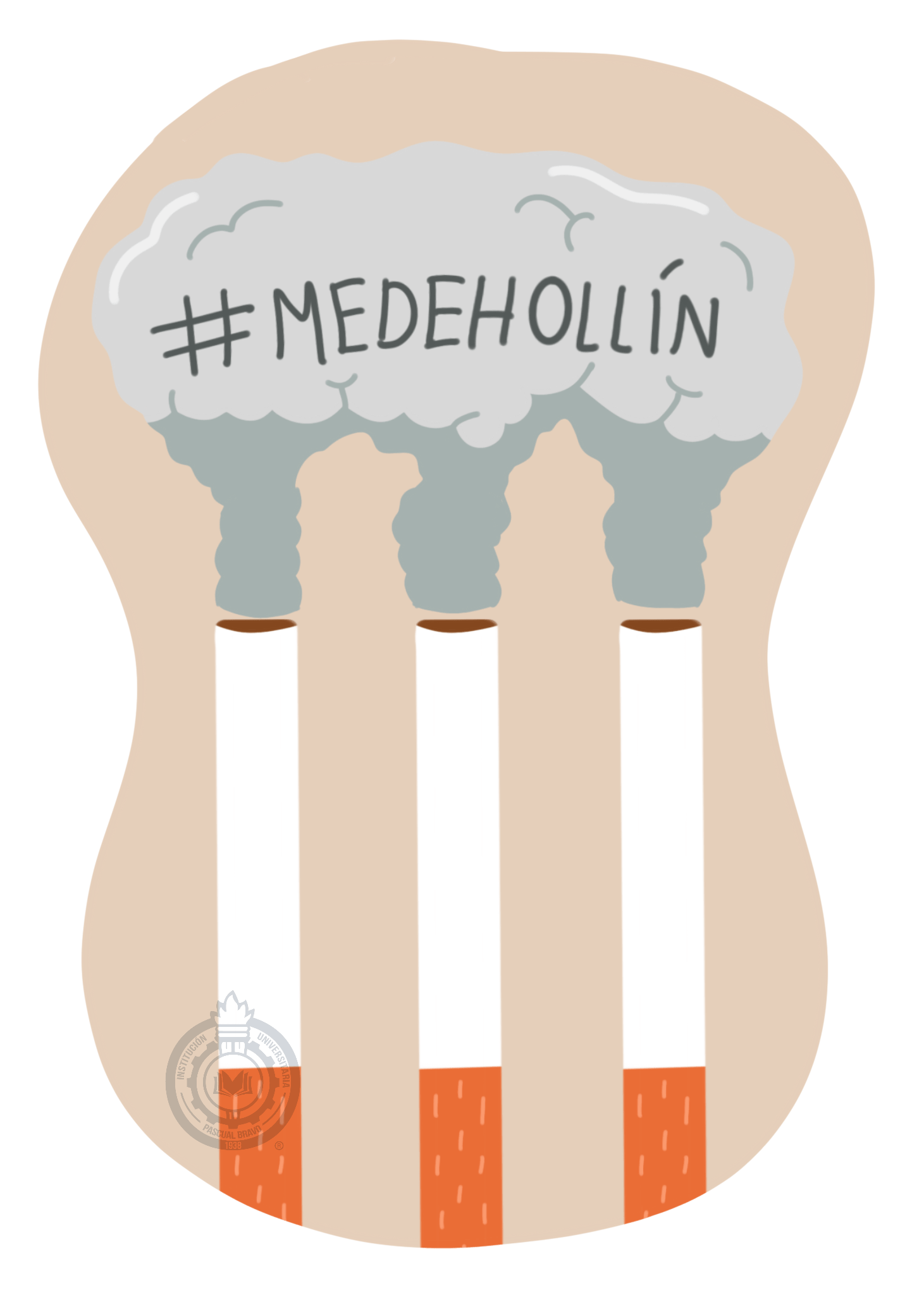
"On social networks I have seen #MEDEHOLLÍN. Is that related to the city air?" Pascualino says.
"Yes, a lot. El hollín (soot) is a very fine and greasy black substance that forms smoke, and the mixture of soot, dust and metallic ash forms the Particulate Matter (PM) that floats in the air in amounts that cause deadly diseases. Breathing the city air with this smoke is equivalent to smoking three cigarettes a day. It really is very harmful to health,” concludes his mother.
"Mom, I have a friend at school who has had the flu since the beginning of the school year." adds Carla.
"It may be partly because of the bad air in the city ..." adds Pascualino.
"There can be many possible causes, but polluted air is a factor that can influence a person’s health," says their mother.

"Where did you learn all about contamination?" Carla asks her mom curiously.
"That is what happens when some days we want to go out and Dad says that we cannot do it in the car
"I studied environmental engineering at the university. Ever since I was young, I have been interested in environmental conservation issues," her mom explained.
"That is incredible, mom! I want to study the same thing when I grow up," Pascualino's sister excitedly tells her mother.
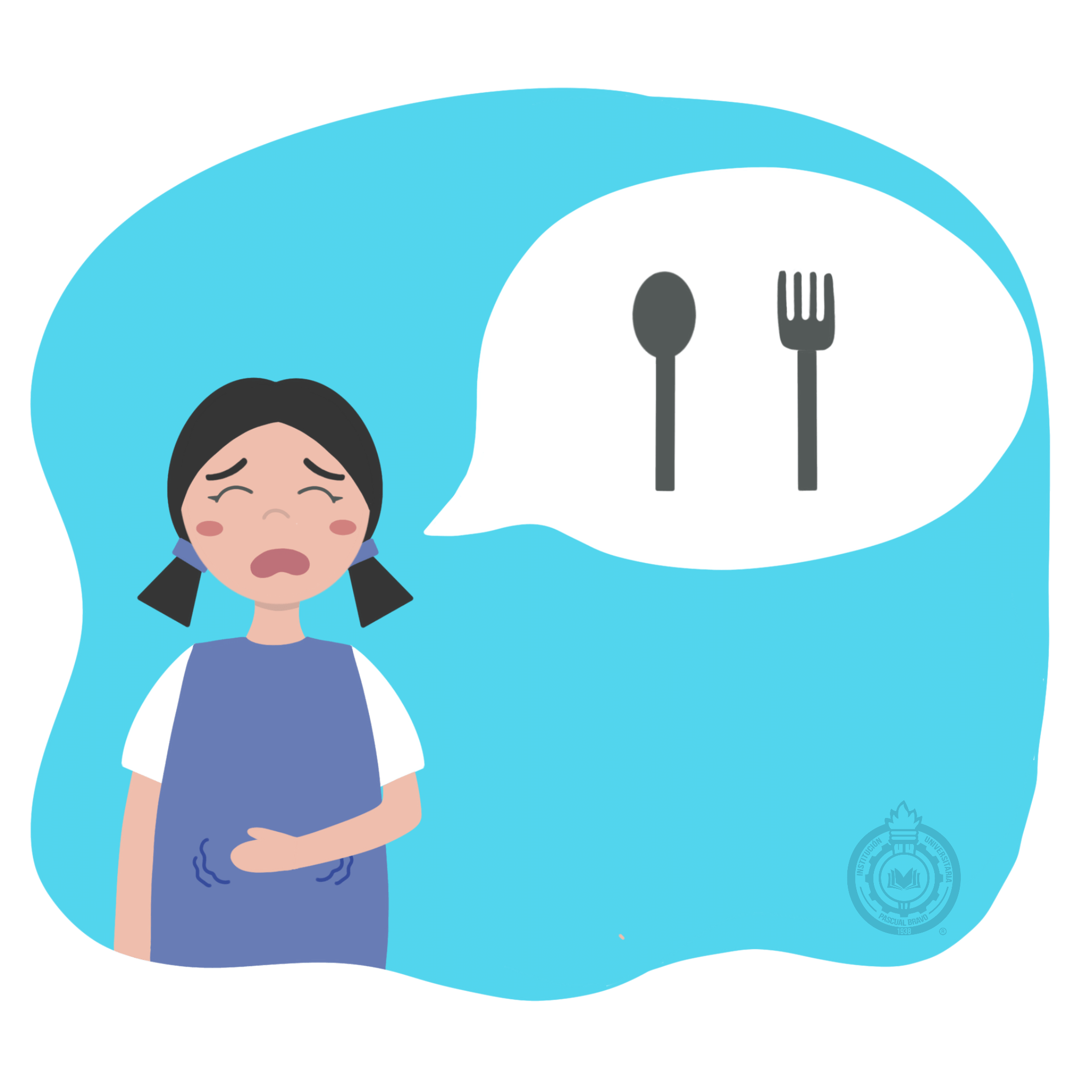
"Mom, do you know of any project or more information that you can share with us on the subject?" asks Pascualino.
"Well, for a few months I had the opportunity to work hand in hand with the PROMESA project that promotes the integral development of children from birth to five years of age. I learned some interesting facts during that time that I can tell you ”
“That would be excellent!" replies Pascualino.
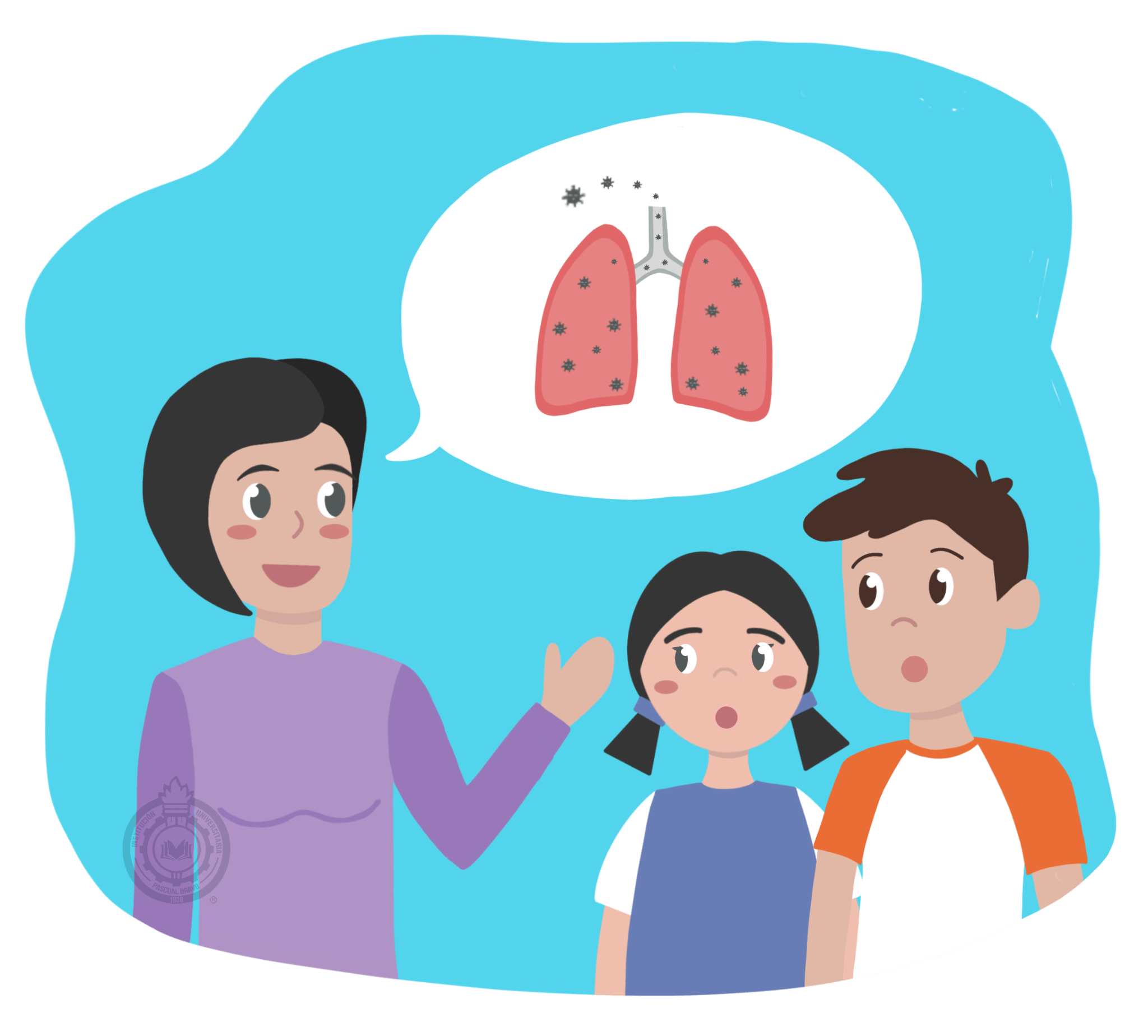
"Mom,” said Carla. I have a question before you start telling us about PROMESA. The air is what we breathe, right? But I can’t see it. So how do I know that it is contaminated?” Pascualino's little sister says innocently.
"In the air there is a lot that is not seen, but that does not mean that it is not there. There are solid and/or liquid particles present in the air, and they can enter our organism when we breathe. Some are stopped by our nose, but others, because they are so small, enter the lungs and fight until they reach the bloodstream. Some are good and others are bad," responds her mother.
"Well, now I understand why they didn't let me have PE today. Thanks Mommy!" Pascualino's little sister says and gets up happily from her chair, kisses her mother on the cheek and goes to play.
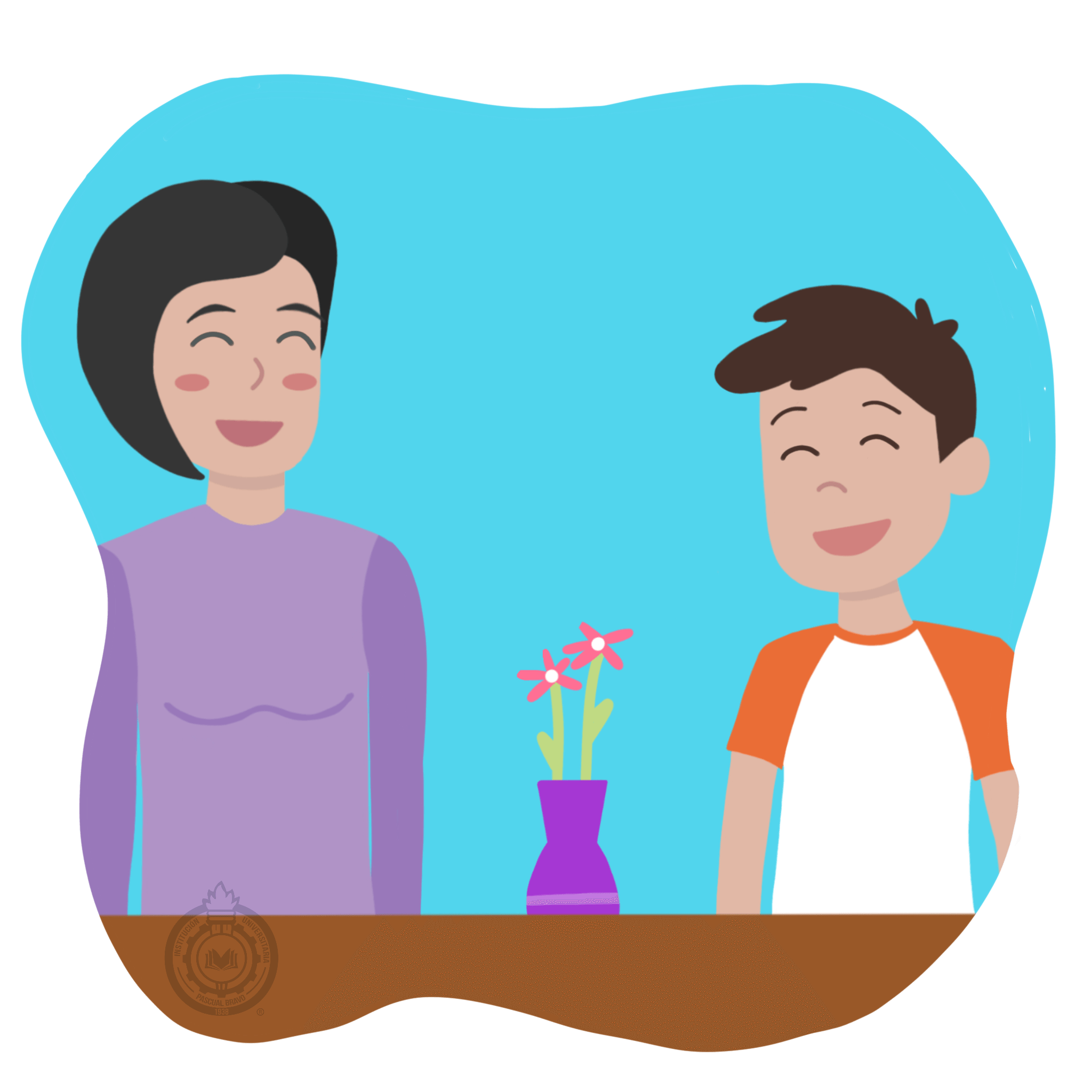
"But Pascualino remained in his chair. He had more questions for his mother.
“You would like more information on pollution?" his mother asks Pascualino.
“Definitely!” he replies.
“Well, your curiosity reminds me a lot of myself when I was your age," said his mother
"The truth is that I never get tired of learning," Pascualino responds honestly.
"I know son. Do you have any special questions?"
"Yes, and at the same time no. I think that everything you can teach me or tell me will be great."
"Okay. Well, I will tell you about the different sources that can pollute the air."
"That sounds interesting."
Pascualino smiles as he sits back in his chair to listen to his mother.
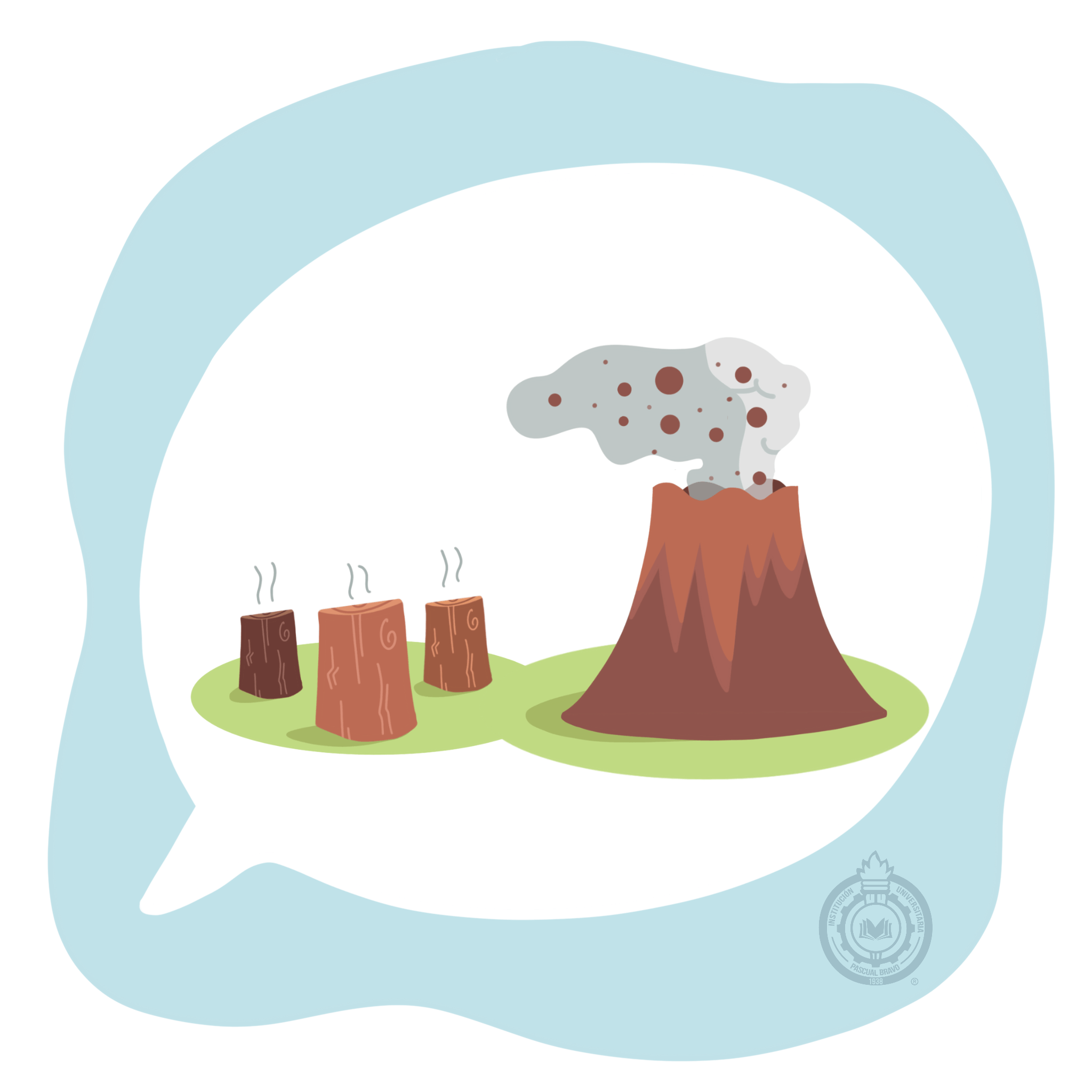
"There are a lot of different reasons for air pollution, but they can be divided into two groups. First, there are artificial sources that are produced by man, such as: burning trees, factories, transportation, pesticides, landfills, forest fires, etc. And there are also natural sources such as volcanoes, sea salt, pollen, among others.” Pascualino’s mother explains.
"And I suppose that with constant climate change these factors worsen," concludes Pascualino..
"That's right son!.
"Mom, I have an idea! Maybe we could participate together in a foundation. What do you think?" Pascualino proposes to his mother.
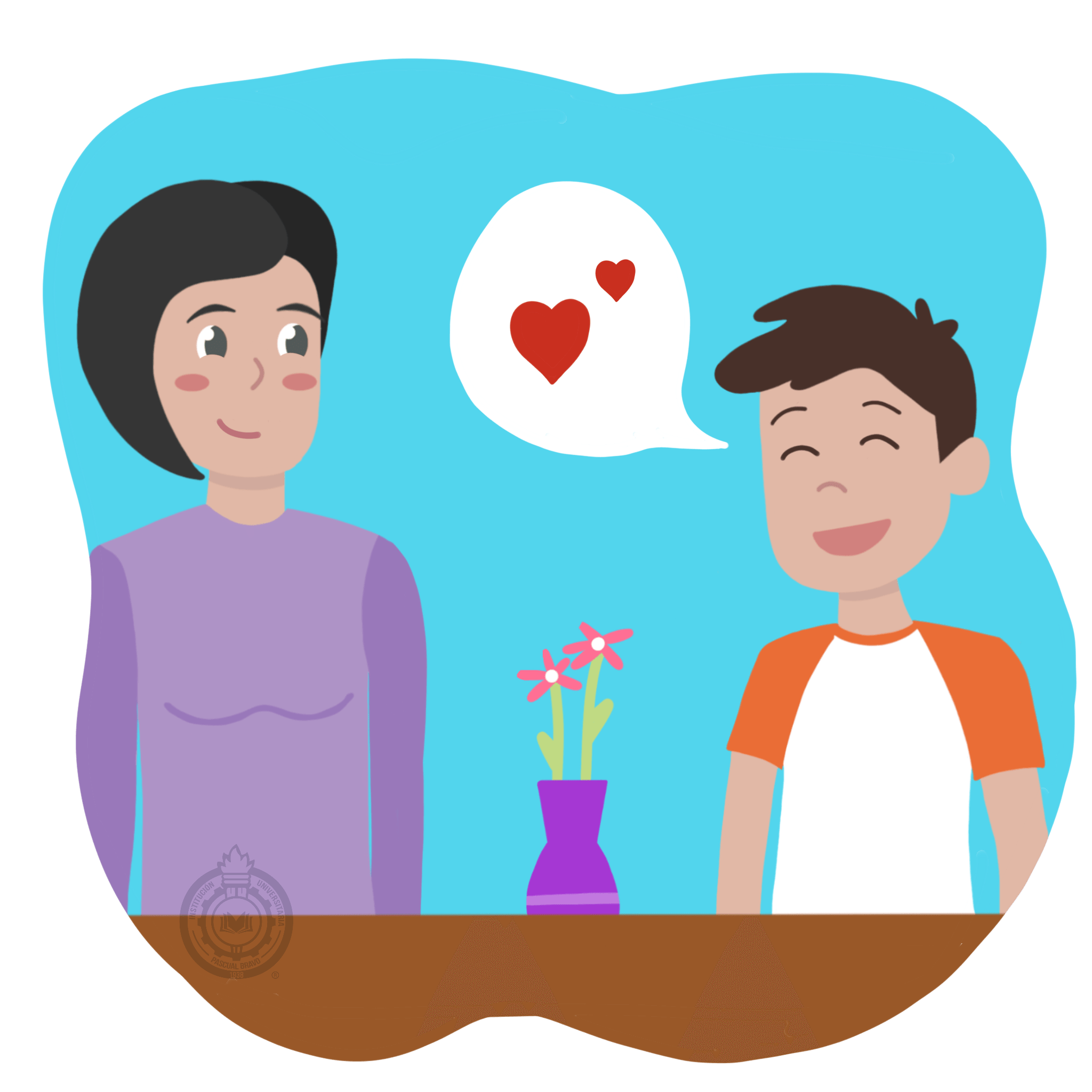
""I think it's a terrific idea! And we could also include your father and your sister!" Pascualino's mother proposes.
That afternoon when Pascualino's father arrived home from work, they told him about the idea of contributing to a foundation in the city that works to raise awareness about environmental change.
Everyone agreed and set a goal to be more responsible with the environment.
1. Medellin is not included in the orange air alert
2. The news report was in Pascualino's mind all day long.
3. Pascualino's little sister did physical activity outside
4. A person who has heart problems can die from long periods of time exposed to pollution
5. Pollution is very different from environmental contamination
6. Breathing polluted air has the same effect as smoking
7. Pascualino's mother did not study at a university and she likes to pollute the planet since she was a child
8. Pascualino's mother has worked with causes related to the development of children
9. Since we cannot see the air or the particles in it, they cannot harm us and they do not exist.
10. When pascualino's mother was young she was very different from her son
11. After listening to his mother, Pascualino promised to try to make a change in the environment.
12. Terrific means horrible

Labor day was fast approaching and Pascualino was eager to know how his school was planning to celebrate..
"Good morning kids! This year we are going to celebrate Labor Day differently than we have in the past," the teacher informs them.
"Finally something different than bazaars!" Pascualino shouts out.
All of his classmates burst out laughing. The teacher smiles and continues speaking, “You must bring a guest who has the same job that you would like to have when you grow up.”
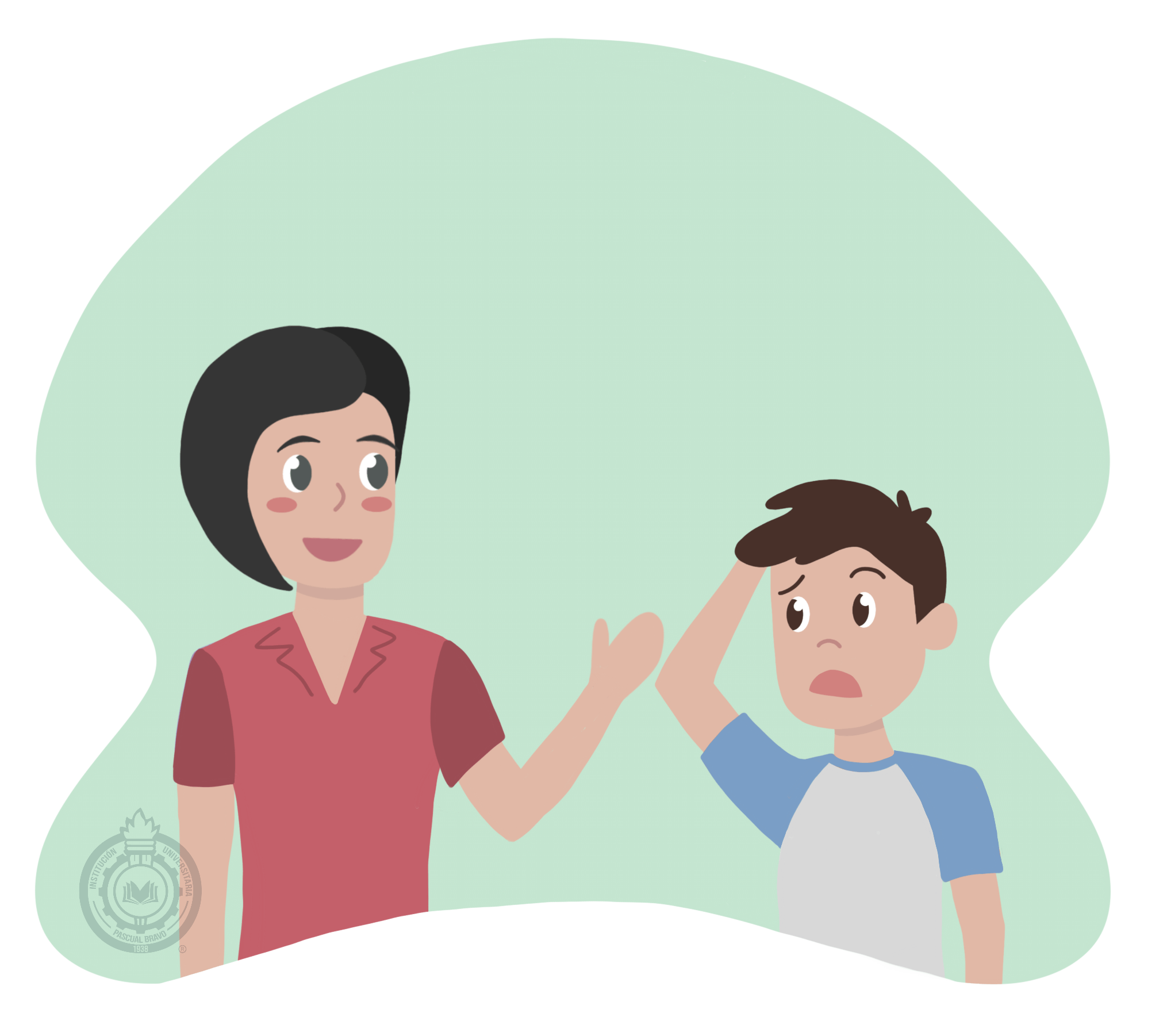
When Pascualino arrives home, his mother asks him how his day was. Pascualino tells her about the homework assignment he has for Labor Day.
"Mom, I have a problem. I don’t really know what I want to do after I graduate," confesses Pascualino.
"That’s OK, son. But I thought you told me that you wanted to do what your aunt does," his mother replies.
"Yes, maybe," he says unsure.
"Why don’t you ask your aunt to accompany you on labor day." suggests his mother
"That is an excellent idea mom, thanks!"
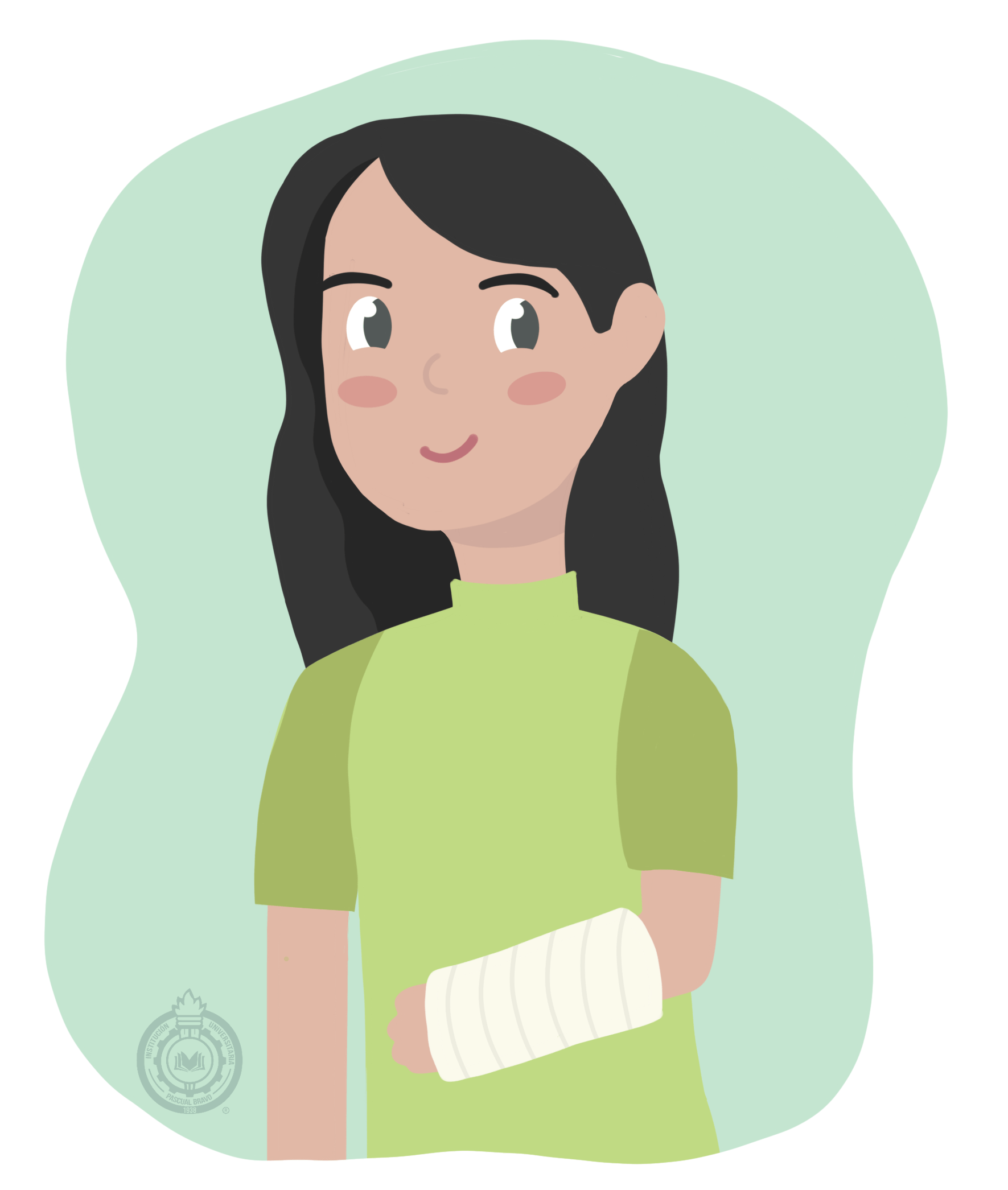
Pascualino calls his aunt to ask her if she would go to school with him for his Labor Day project.
“Of course I will!. How can I say no to my favorite nephew!” his aunt tells him.
Pascualino is excited and thanks his mom for the idea.
“Well, yes, you have always had a good relationship with your aunt Angelina. And ever since you were little, you would always listen to everything your aunt had to say about food. She is the one who taught you how to read the nutrition label and the ingredients list on the food you buy at the grocery store," his mother tells him.
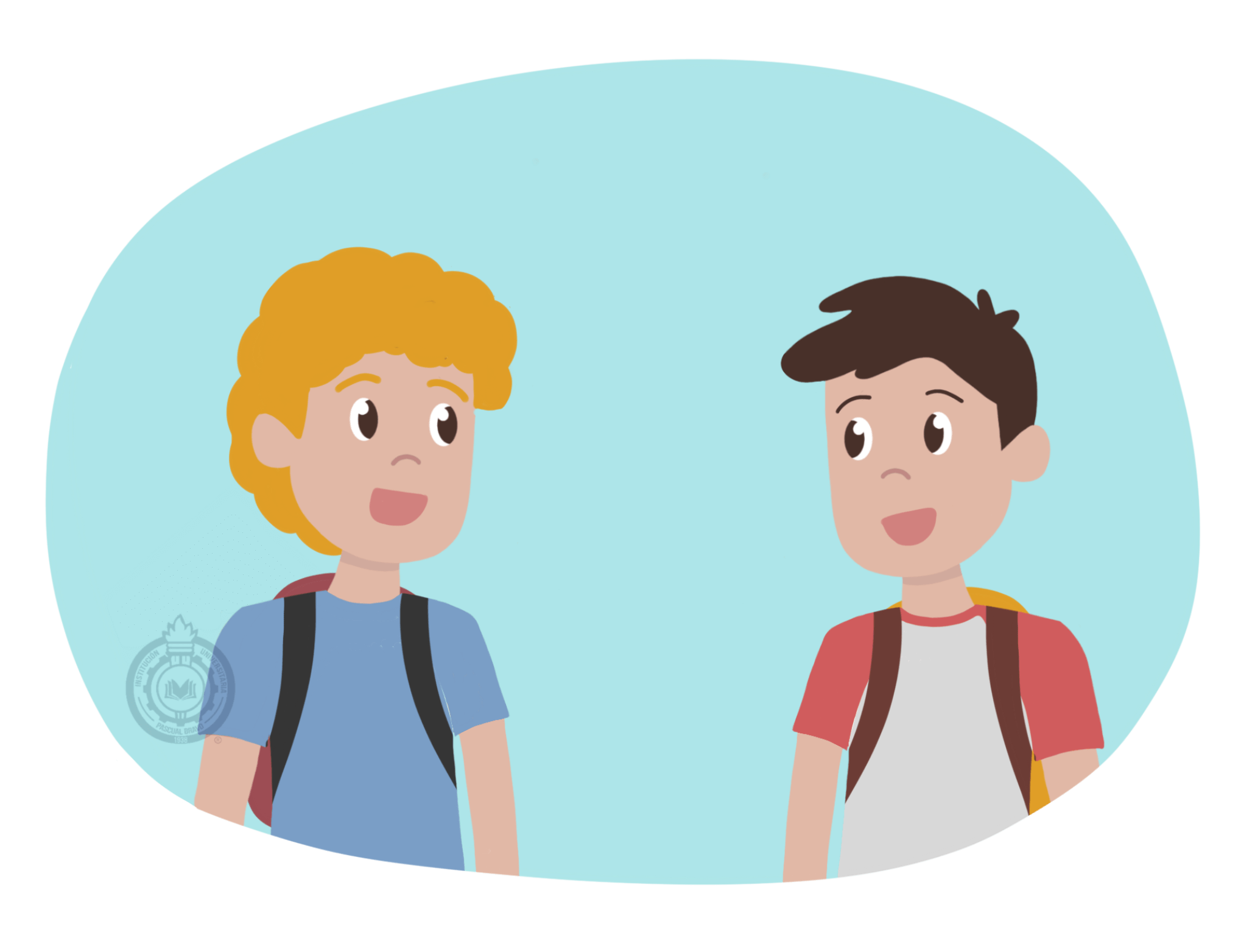
The days passed and Labor Day was soon approaching.
"Students,” says Pascualino’s teacher. “Today, I am going to give you a questionnaire that you can consult to help you and your guest prepare for the Labor Day presentation."
The children thanked the teacher and went home, promising that they would work on their presentation.
On the way home Willy asked Pascualino, "Do you already have your guest?"
"Yes, my aunt who is a Food Engineer at Pollos Bucanero," Pascualino happily responded.
"And how about you, Willy? Do you have your guest yet?"
"Of course! I am bringing my neighbor Pablo. He is studying Physical Education at the University of Antioquia," says Willy. “I love to play sports. It is what I want to do when I grow up.”
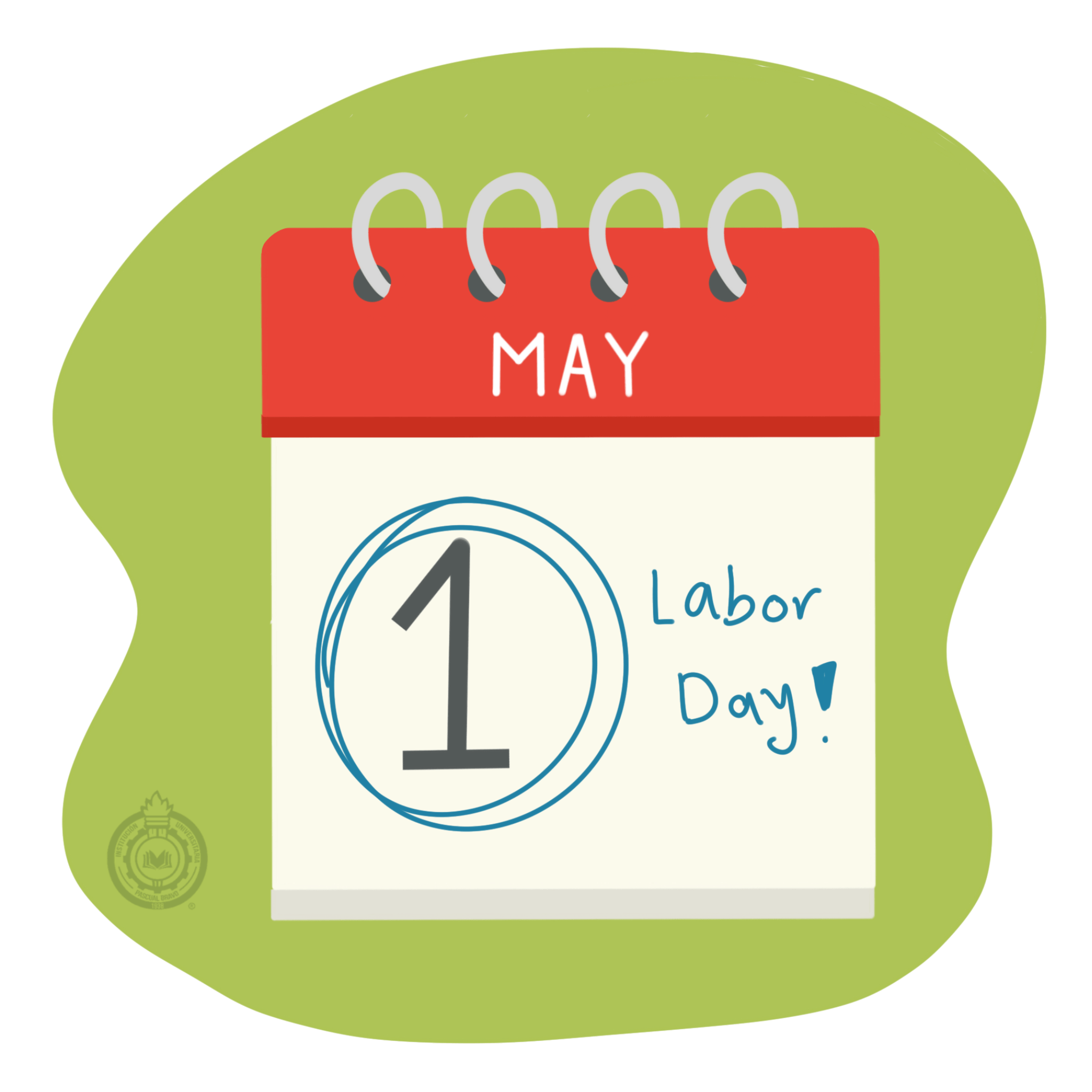
Labor Day finally arrived.
All the students were in the room organized with their guests and a little anxious for the presentation they had to make.
It was the first time they had done anything other than a bazaar to celebrate Labor Day at their school, and all of the school administrators were there to evaluate them. If the labor day activity was successful, the principal of the school promised the students that they would do more dynamic activities like this in the future.
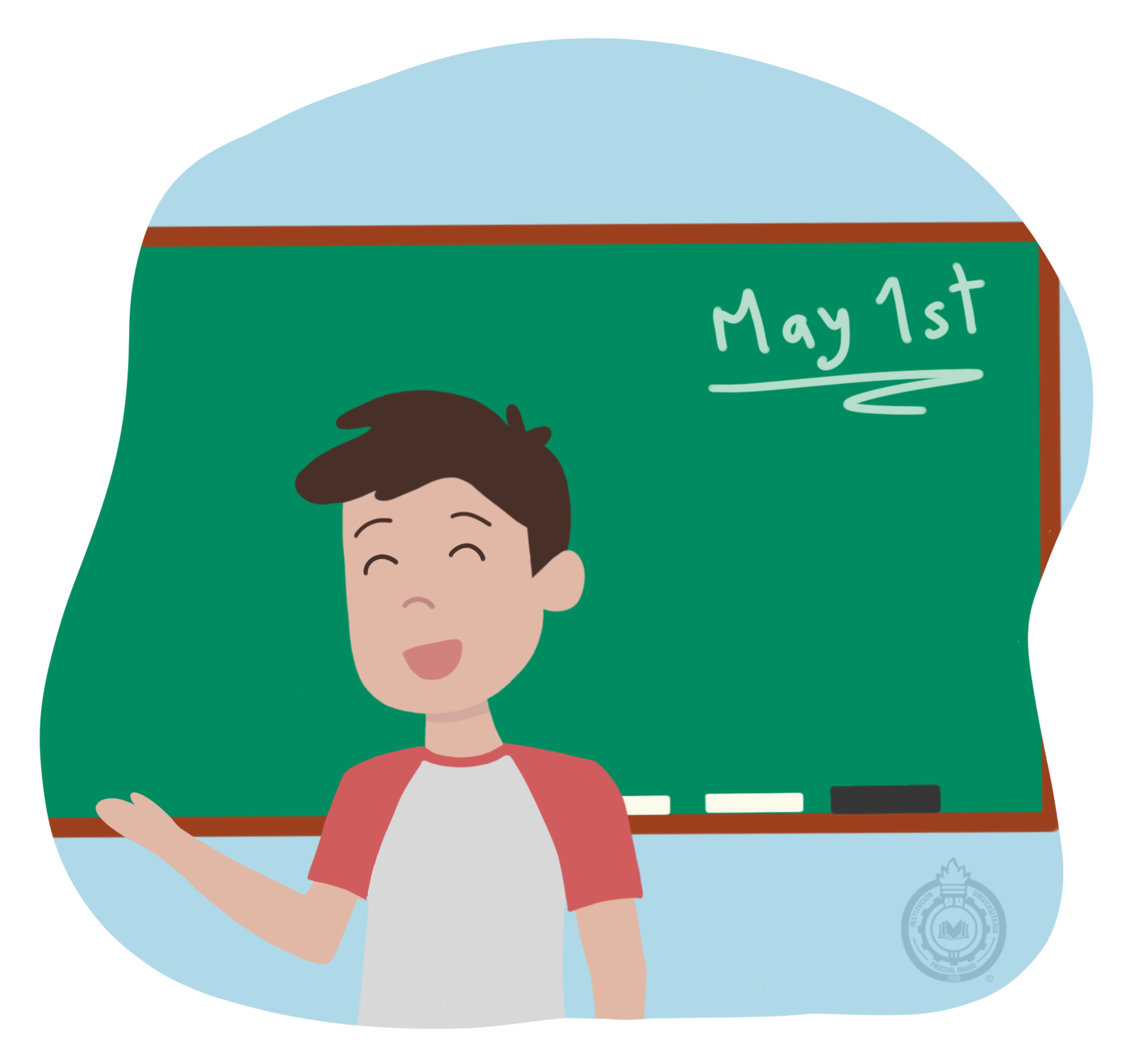
The teacher started by calling the student's name in random order.
"Pascualino Bravo, could you please start with your guest"
Pascualino, although he was very nervous because he had been chosen first, armed himself with courage and went up to the front of the class.
"Good morning! My name is Pascualino Bravo, and my guest is Angelina Bravo. She is a Food Engineer at Pollos Bucanero."
All the students applauded Pascualino's aunt and she stood up and walked to the front and stood next to her nephew.
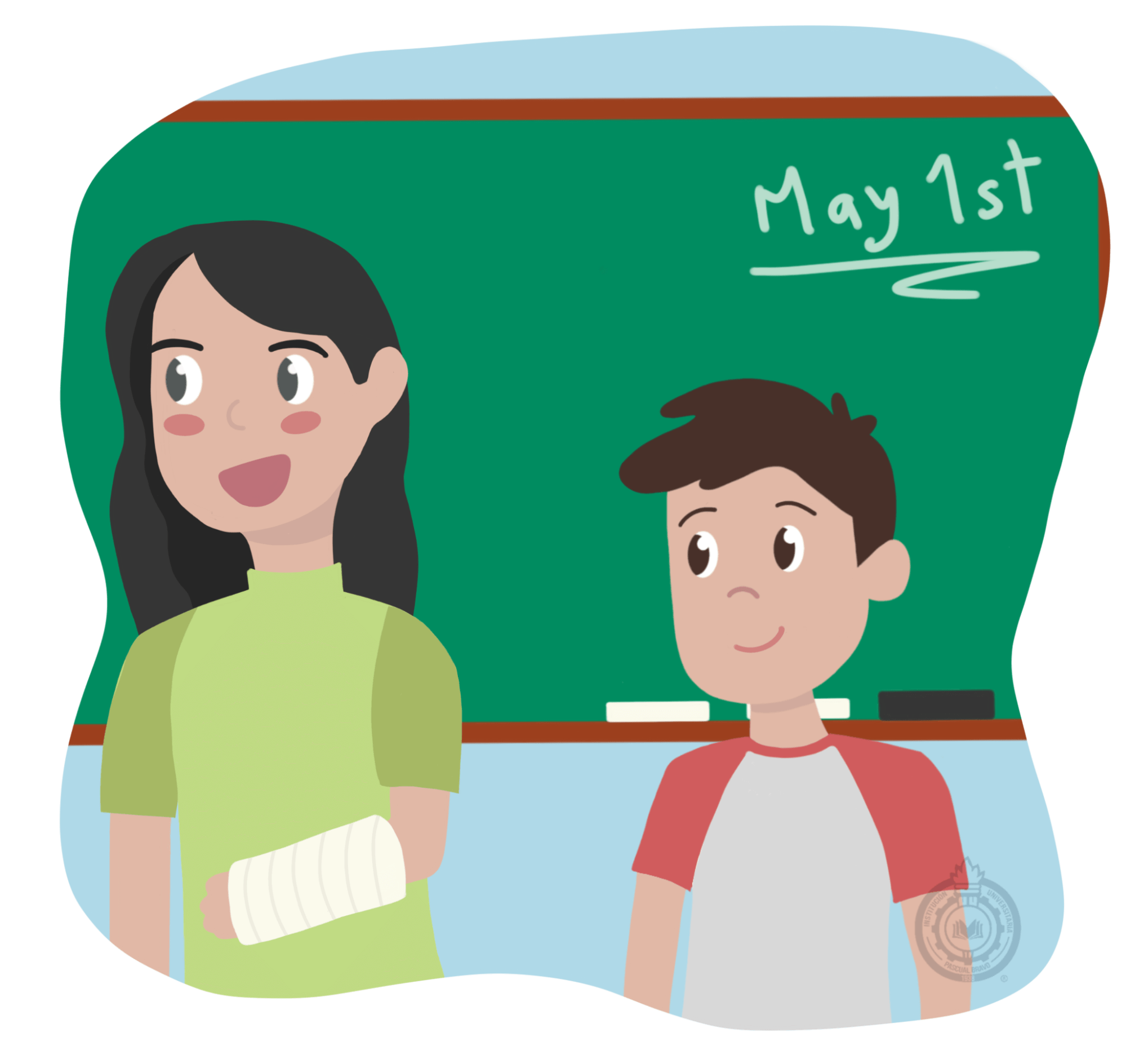
"It is an honor to be here. Thank you very much for inviting me," said Angelina.
Pascualino glances at his questionnaire and asks her, "to begin, tell us how long you have been working at Pollos Bucanero?”
"Well, the company has been serving its consumers for 34 years, and I have been working with them for 15 years."
"That is a long time, which means that you have a lot of experience in the field of food," Pascualino responds.
"Could you tell us a little more about how this company started," asks Pascualino.
"Of course. Bucanero was created by a paisa muleteer, Néstor Cortés Cardona in the city of Cali, in 1986. Today he is married and has 4 children, and everyone in the family works for the company.”

"It is a multinational company that provides many parts of the world with products and services in the following areas: agriculture, food, industry and finance. They have operations in 70 countries and a workforce of more than 150,000 employees." Angelina concludes.
"Since we are talking about food for Bucanero, which is first the chicken or the egg?"
The public bursts out laughing
His aunt smiles and begins to answer the question.
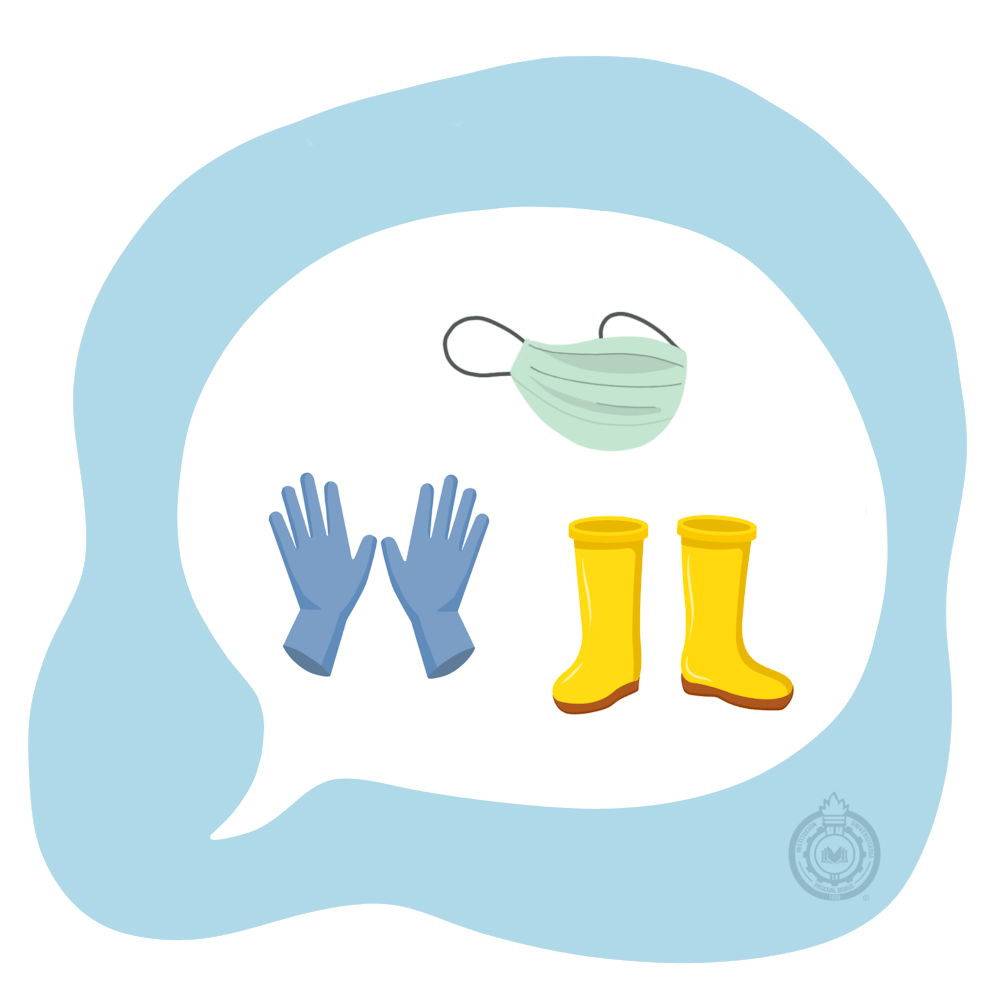
"I think you were asking about the chicken production process,” his aunt replies.
“Actually, it may be somewhat surprising for you to learn that 6 million eggs are brought to the hatchery each month to hatch 6 million chicks. That is how the chickens get to our company."
"What are some of the safety procedures and protocols that you have to follow?" Pascualino asked.
"Well, employees who work directly with the chicks have to wear special clothing. It is important that you use gloves, boots, a mouth cover and clothing that protects your arms and legs in order to minimize the risk of injury from scratches and / or pecks from the birds."
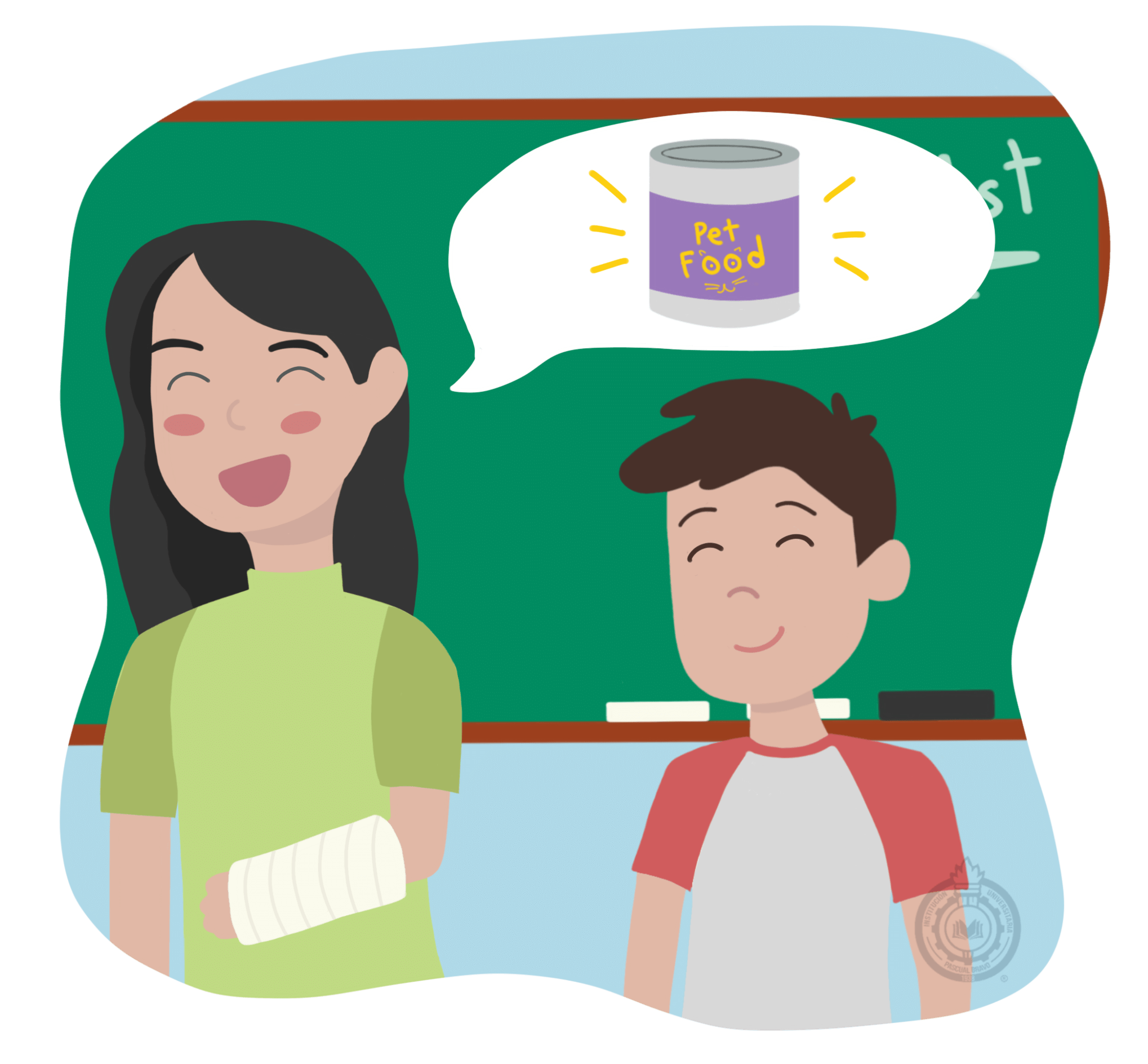
"What is done with the organic waste from the plant?" continues Pascualino.
"The waste is taken to another plant to transform it into supplies for the manufacture of pet food," Angelina responds.
"Why do you consider Food Engineering to be important?" Pascualino continues.
"Food Engineering deals with the production of food starting in its natural state and transforming it through industrial processes, that includes packaging, storage and eventually distribution," Angelina responds proudly.
"Being a food engineer carries a high responsibility because we are in charge of the food and health of consumers."
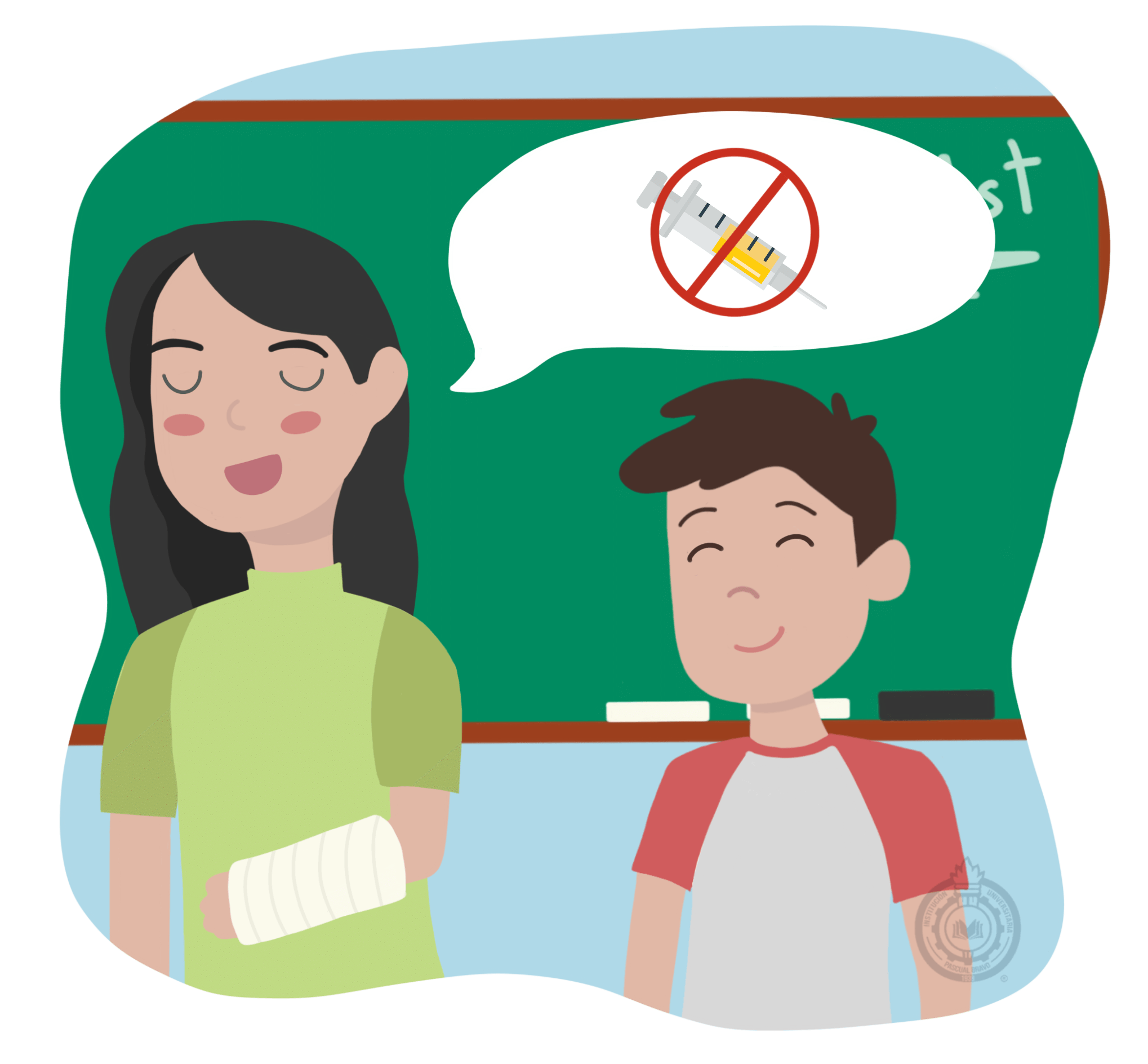
"One final question that many of us have: How true is the use of Hormones in chickens?"
"Excellent question. If there is something that hurts the chicken industry worldwide, it is the idea that hormones are used in chicken feed to achieve greater weight gain in animals in less time. It is an irresponsible and dangerous practice on the part of food production companies, but it is definitely not the case at Pollos Bucanero.”
"Thank you very much, Aunt Angelina, for having accepted the invitation to visit our school." Pascualino says.
"Thank you very much," Angelina replies and everyone applauds.
The activity was a complete success and Pascualino discovered that food engineering was among his first options to study in the future.
1. Pascualino and his classmates really like bazaars
2. Pascualino is sure he wants to study the profession his aunt works in
3. Pascualino and his aunt have always had a good relationship and Pascualino likes food thanks to her
4. Pascualino's aunt studies at the University of Antioquia
5. Every year the professions activity is carried out at Pascualino’s school
6. Pascualino was the last to participate in the May 1st event at his school
7. Pollos Bucanero has been serving its consumers for 15 years
8. Pascualino did not want to make a joke with his question
9. It is necessary to have precautionary rules when working with food such as chicken
10. Organic waste from chickens is not recyclable
11. Pollos Bucanero uses hormones in its products
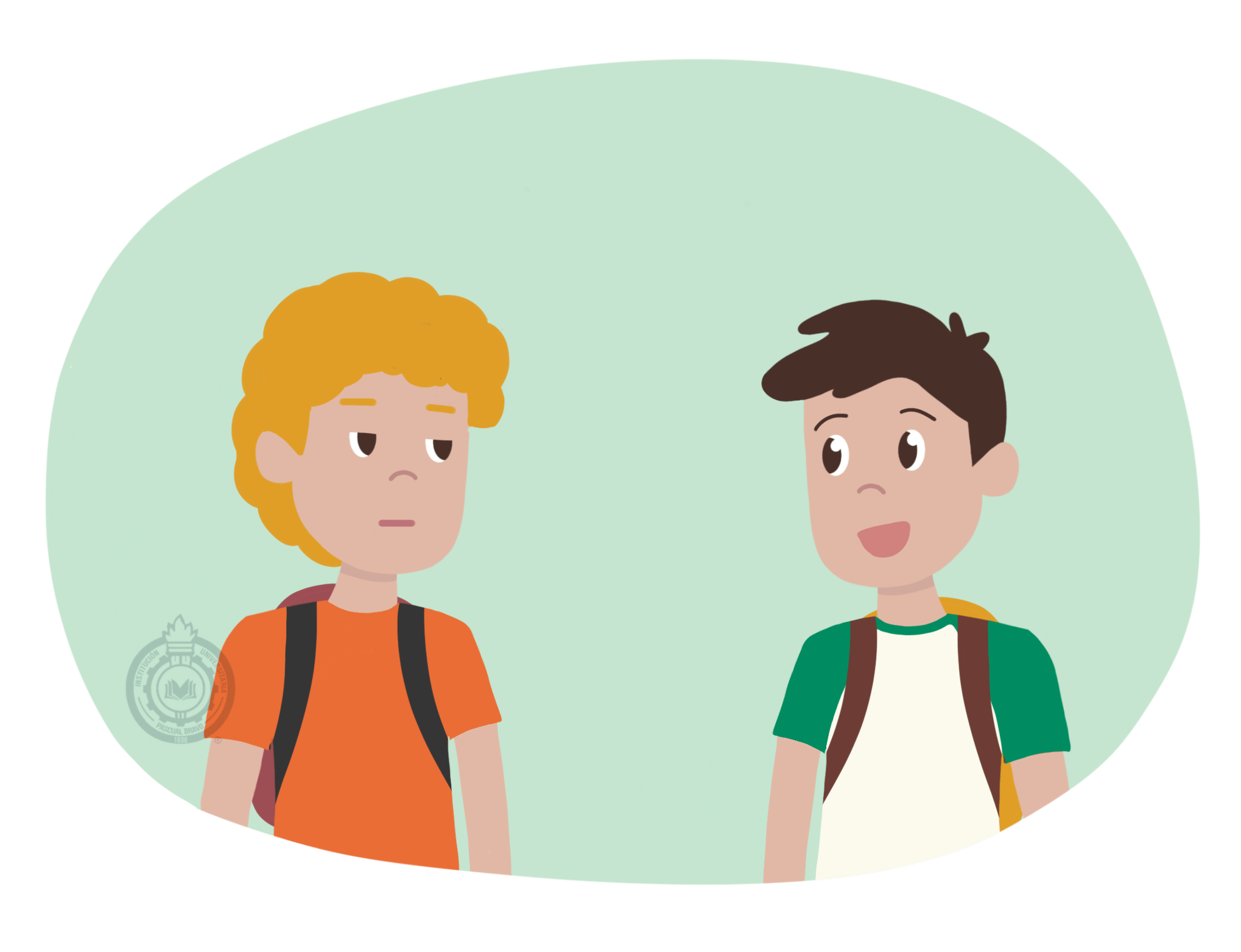
"Aren't you excited? " Pascualino said to Willy as they were on their way to school.
"The truth is: no! I do not see why we have to go to a meeting at school right in the middle of our holidays," Willy replied. "I was playing basketball in the park when the teacher called my house to invite my parents to The Solar Bazaar. " Willy growled.
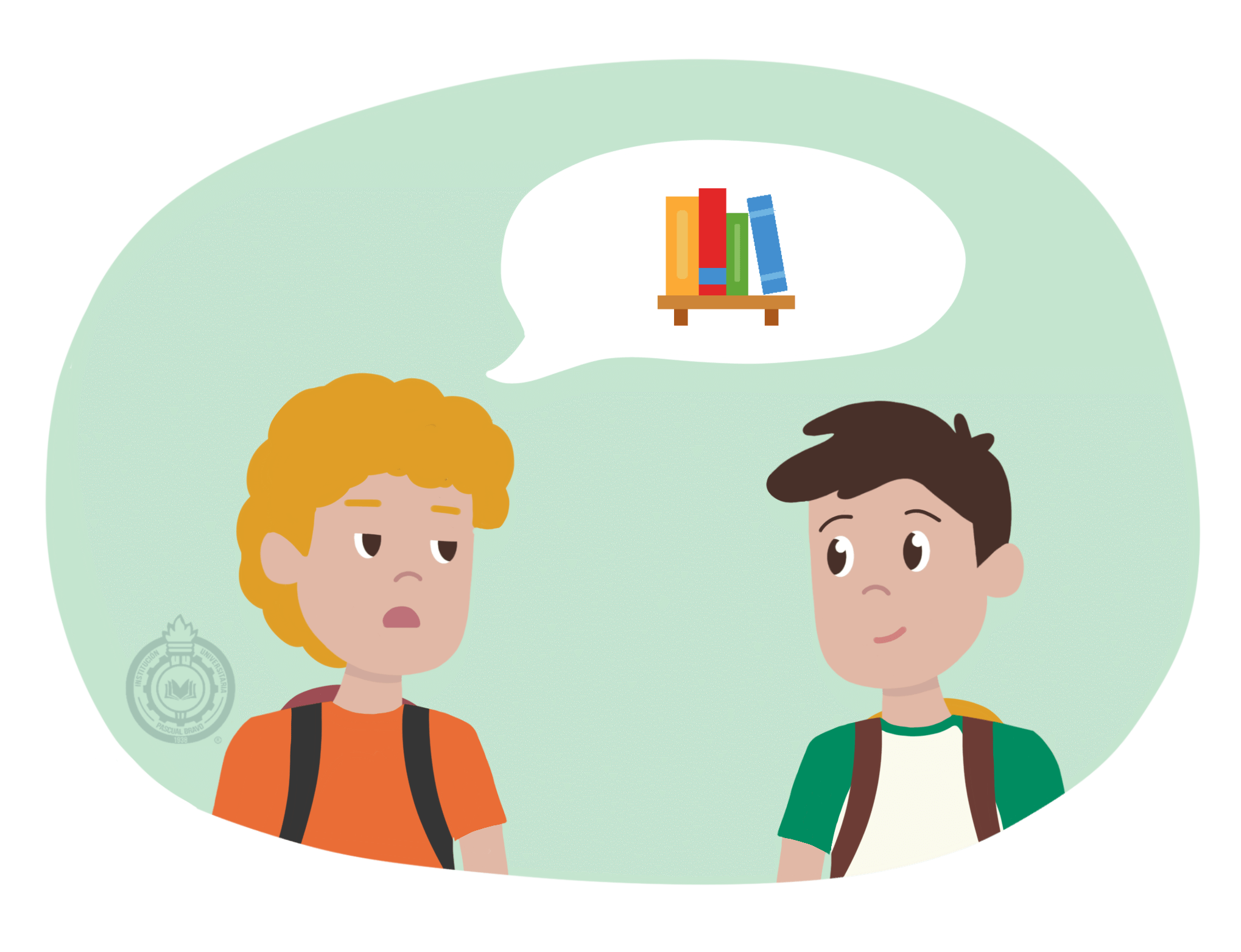
"Don't worry" Pascualino advises him. "I was also enjoying the holidays a lot, but it is always important to learn.”
"Pascualino, you say that because you are a bookworm. But normal people have a life, you know?" Willy jokes.
"Cut it out! We are already late and our parents must be worried waiting for us," as Pascualino lightly pushes Willy as a joke.
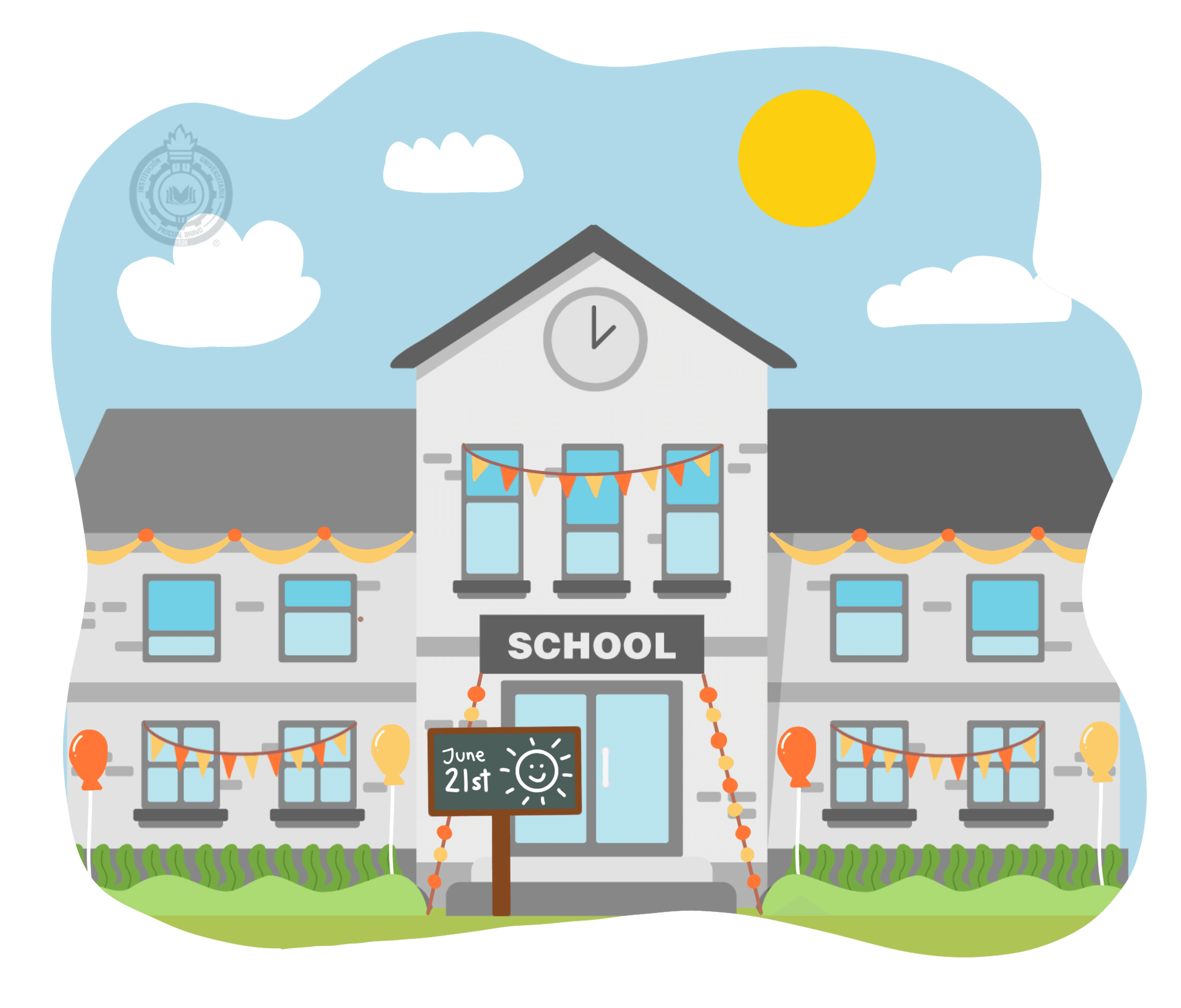
When the boys arrived at their school, their families had already started looking at some of the displays..
The entire school was decorated with yellow and orange colors referring to the sun, since the "Solar Bazaar" was set up to coincide with the Summer Solstice.
There were different stands with activities, exhibitions and food and even activities to include the whole family.
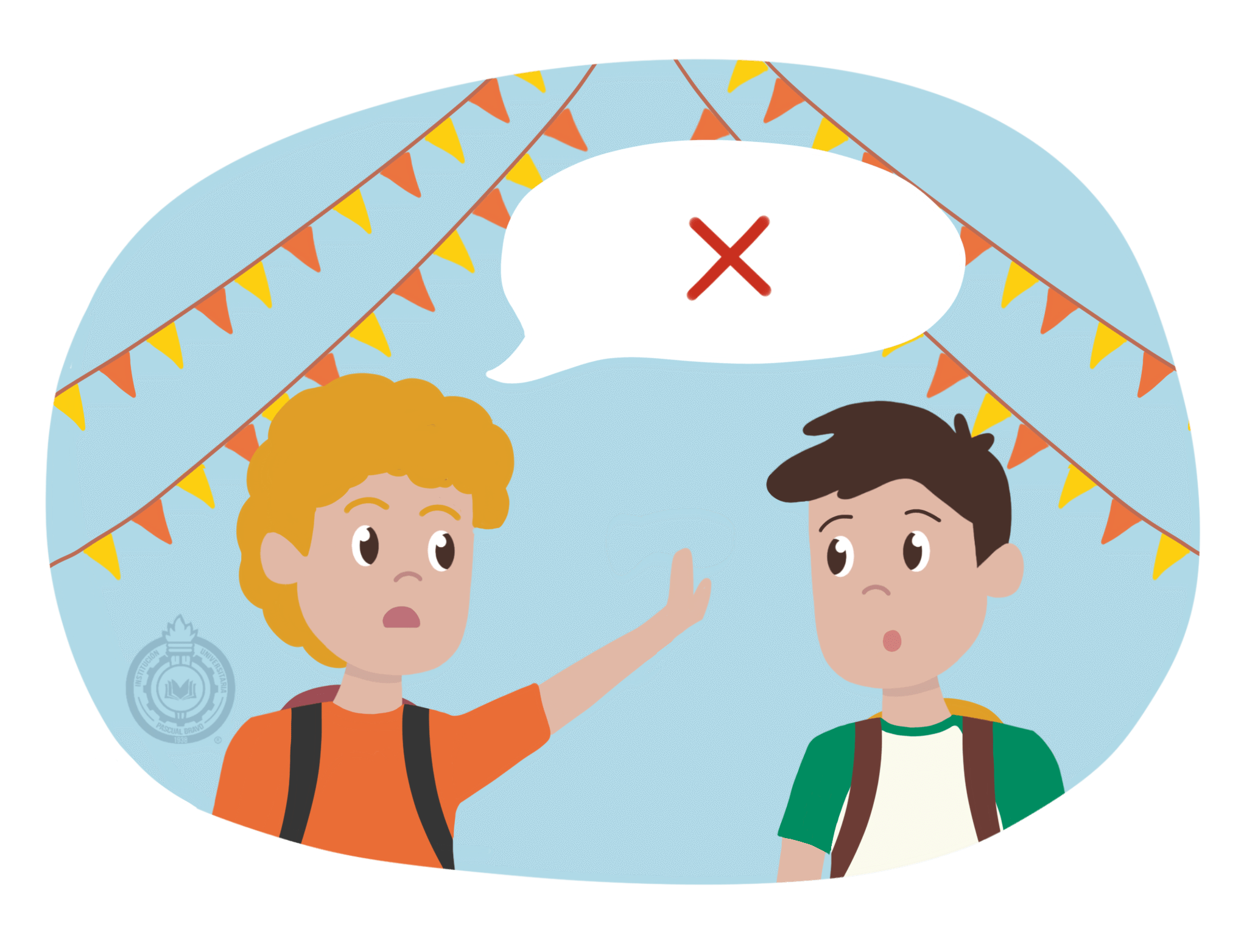
"Where do you want to start?" Willy asks Pascualino.
"I don't know! Everything looks very interesting," Pascualino replies indecisively,
"A few minutes ago, I saw some guys who were listening to a presentation about solar energy. We could start there. What do you think?" Willy proposes.
"Yes! That sounds good," Pascualino said.
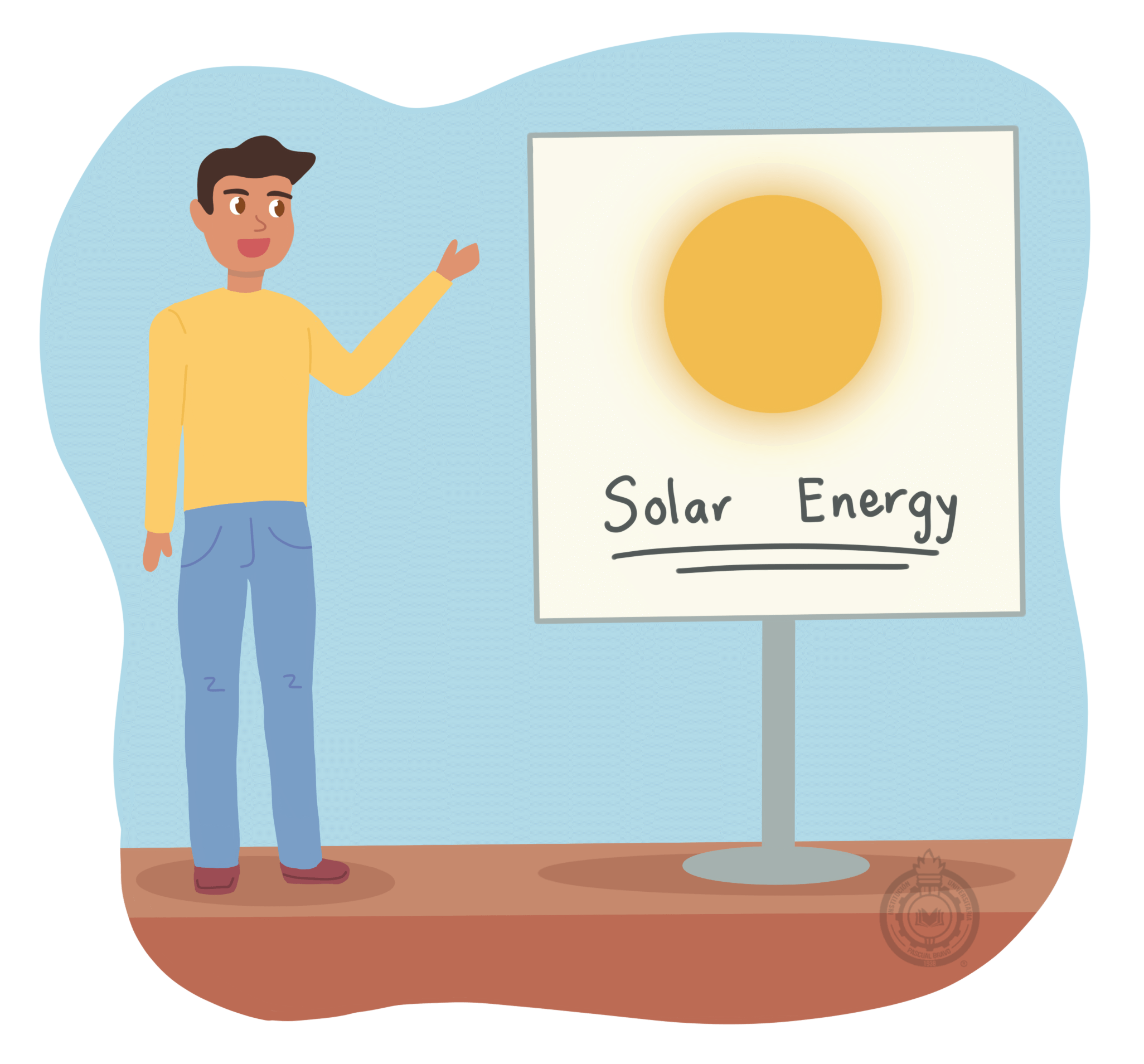
"Thank you all for coming today. My name is Luis and I am going to tell you a little bit about what solar energy is and what its benefits are.,” the young speaker began.
"Solar energy is a source of power that we get from the sun.
"Solar energy is obtained from the use of electromagnetic radiation derived from the Sun. Does anyone know what kind of energy is created by solar energy?" Luis asked the audience.

"Yes, solar energy is a type of renewable or clean energy because the sun is an inexhaustible source." Willy says quickly.
"Very good! Do you know anything else about the subject?" Luis asks him.
"Well, not much, but my friend Pascualino maybe knows something, " Willy says looking at Pascualino.
"Very well, Pascualino, do you want to share something else with us?" Luis asks him.
"Well, I know that since ancient times humans have taken advantage of sunlight. For example, the Romans were the first to use glass in their windows to trap the sunlight’s heat in their homes. But as the years have passed new technologies have been developed to generate energy from the sun.” Pascualino explains.
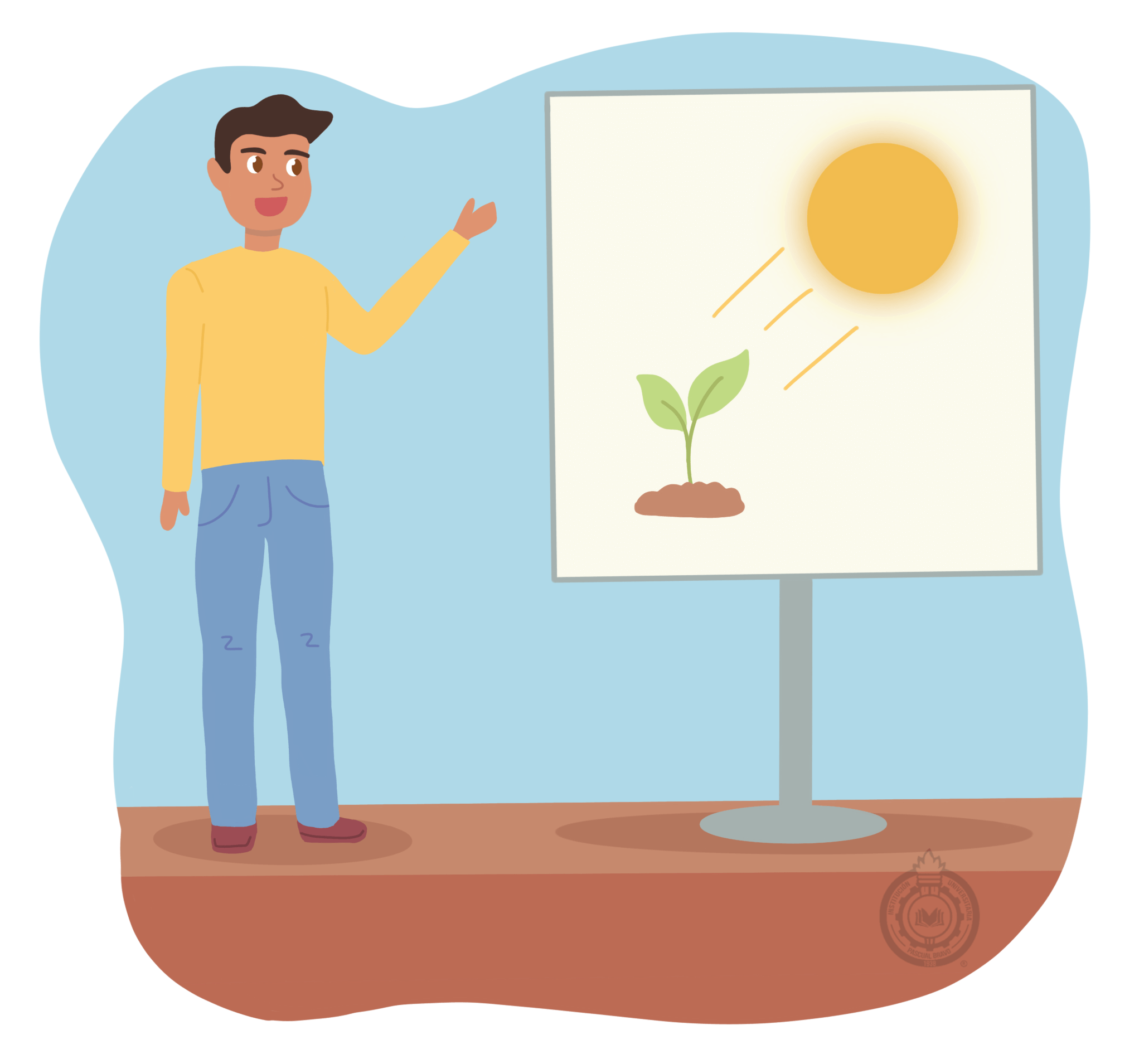
"That is true, and the latest technologies, such as panels and mirrors, allow us to generate photovoltaic electricity from sunlight." Luis added.
"That is to say, sunlight is not only the most important natural energy source for living beings, but can also help us combat climate change"
"So what are the main benefits of solar energy?" Willy asks..

"There are many benefits of solar energy. Since it is available all over the planet, it is the best way to provide electricity to isolated places, where the cost of installing electric distribution lines is too high. Another advantage is that it reduces the use of fossil fuels and contributes to sustainable development," Luis explains. "This is why the school is holding this "Solar Bazaar," because we want to contribute to sustainable development and install solar panels."
"And when do you plan to install them?" Pascualino asks.
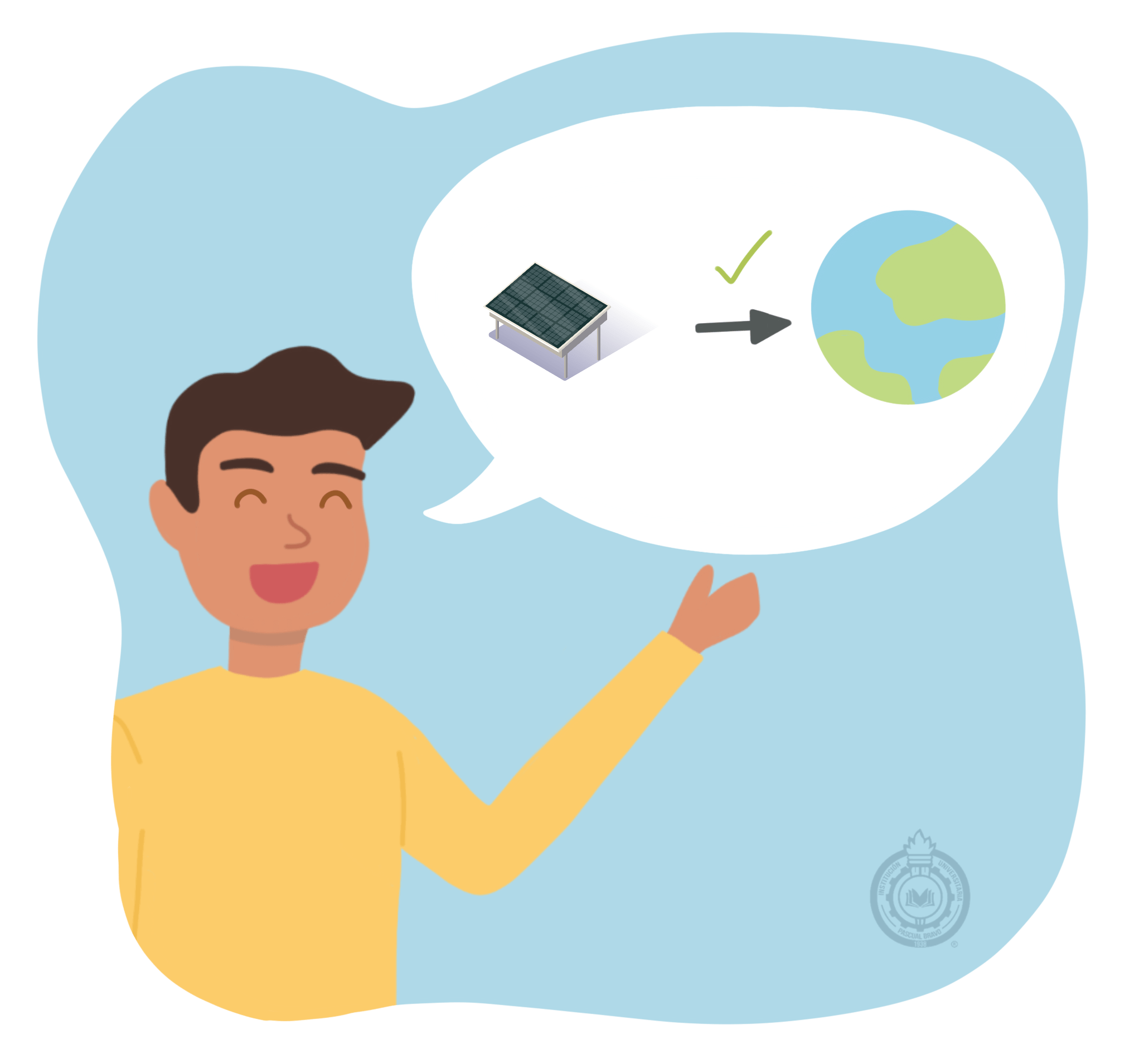
"Today! At the end of the event we will install solar panels to inaugurate a new future for your school!” smiles Luis proudly. "Solar panels are very low cost once installed. The initial investment to purchase and install them is the most expensive part of using solar panels..
"But they are worth it, aren't they?," replied Willy.
"Definitely! Solar energy is a benefit for both humanity and the planet," replies Luis.
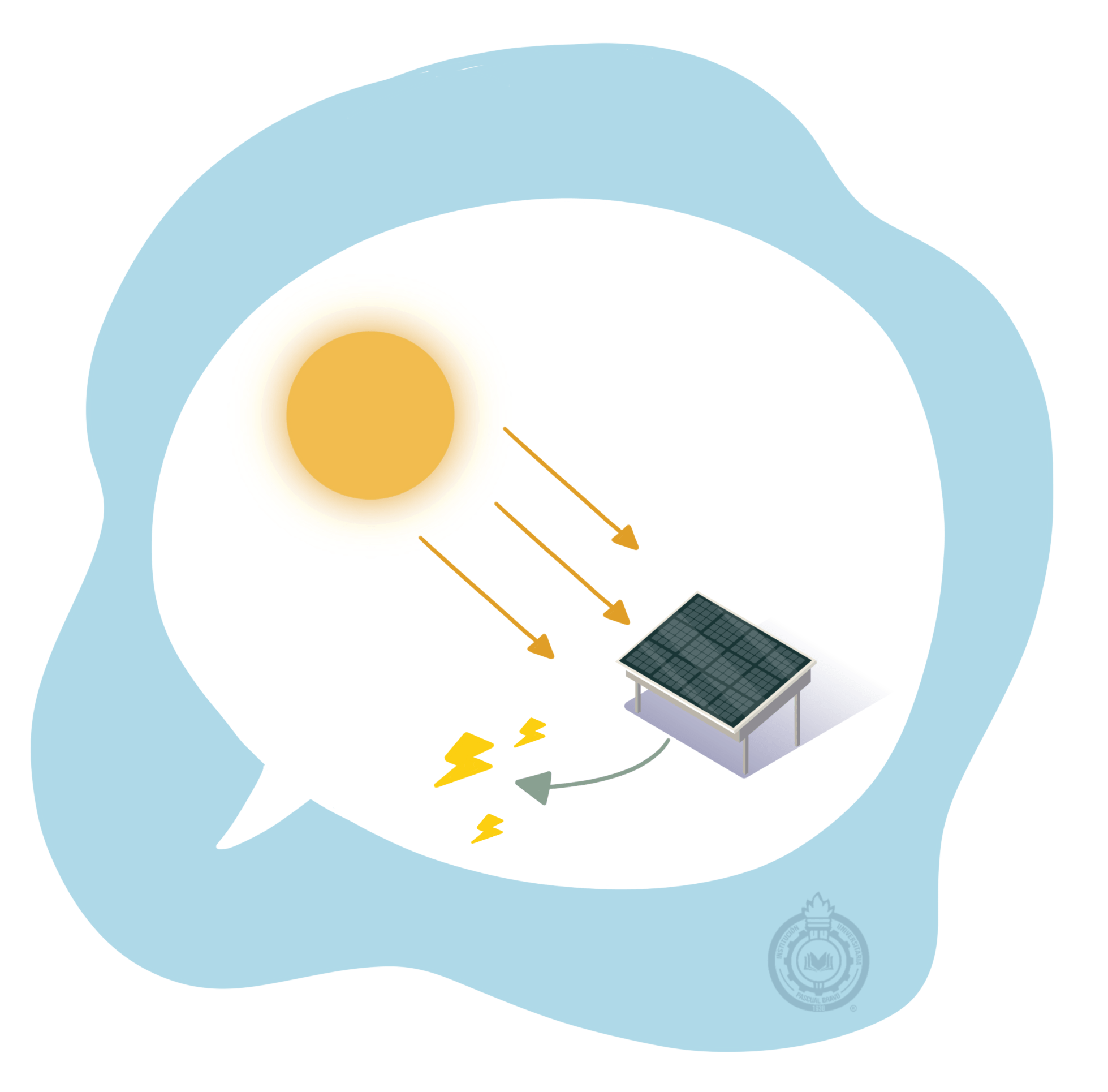
"How do solar panels work?" asked Pascualino
"Well, when a solar panel receives sunlight, the cells in the panel separate the electrons into positive charges and negative charges in the solar cell and this generates an electric current." Luis explains.
"Wow! That sounds pretty cool! What are the most common uses of solar energy?" Willy asks.
"Well, its application is spread out over a wide variety of areas such as transportation, heating, lighting, electricity, etc." Luis responds
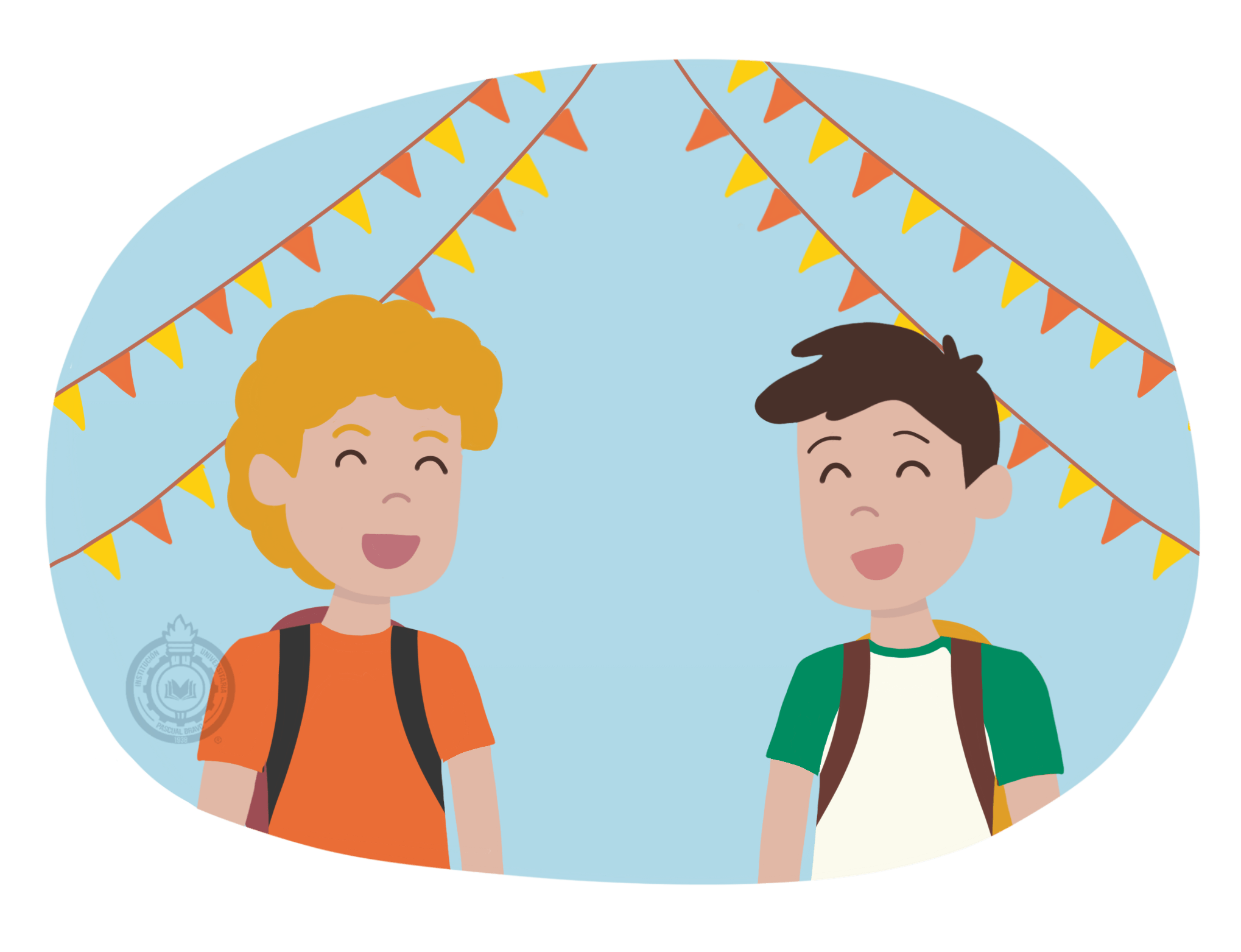
"Thank you very much for stopping by. I invite you to continue enjoying the Solar Bazaar and remember to come to the inauguration of our solar panels at the end of the event," concludes Luis.
"Thank you very much for all the information!" responded Willy.
"It seems that in the end you didn't regret coming to the Bazaar!" Pascualino smiles at Willy.
"No, this was interesting, but that does not mean that I am going to read books for the rest of the holidays!" Willy answers.
1. Willy was very happy to have to go to school during the holidays.
2. Pascualino pushed Willy so hard that he hurt him, so he wouldn't go to school
3. The solar bazaar is held at the Pascualino school to commemorate the international day of the sun.
4. Willy interrupts Pascualino because he was going to start telling him about the same presentation’s topic that they were about to listen to.
5. The sun is the primary source of solar energy
6. The Romans used glass to cook on their windows with sunlight
7. Solar energy is not only renewable but also essential for living things and life on earth
8. The school made The solar Bazaar because they want to contribute financially to install solar panels around the world
9. The initial investment of solar panels is usually expensive, but its use makes up for it
10. The use of solar energy is usually very versatile and beneficial to the environment
11. Willy regretted attending the Solar Bazaar
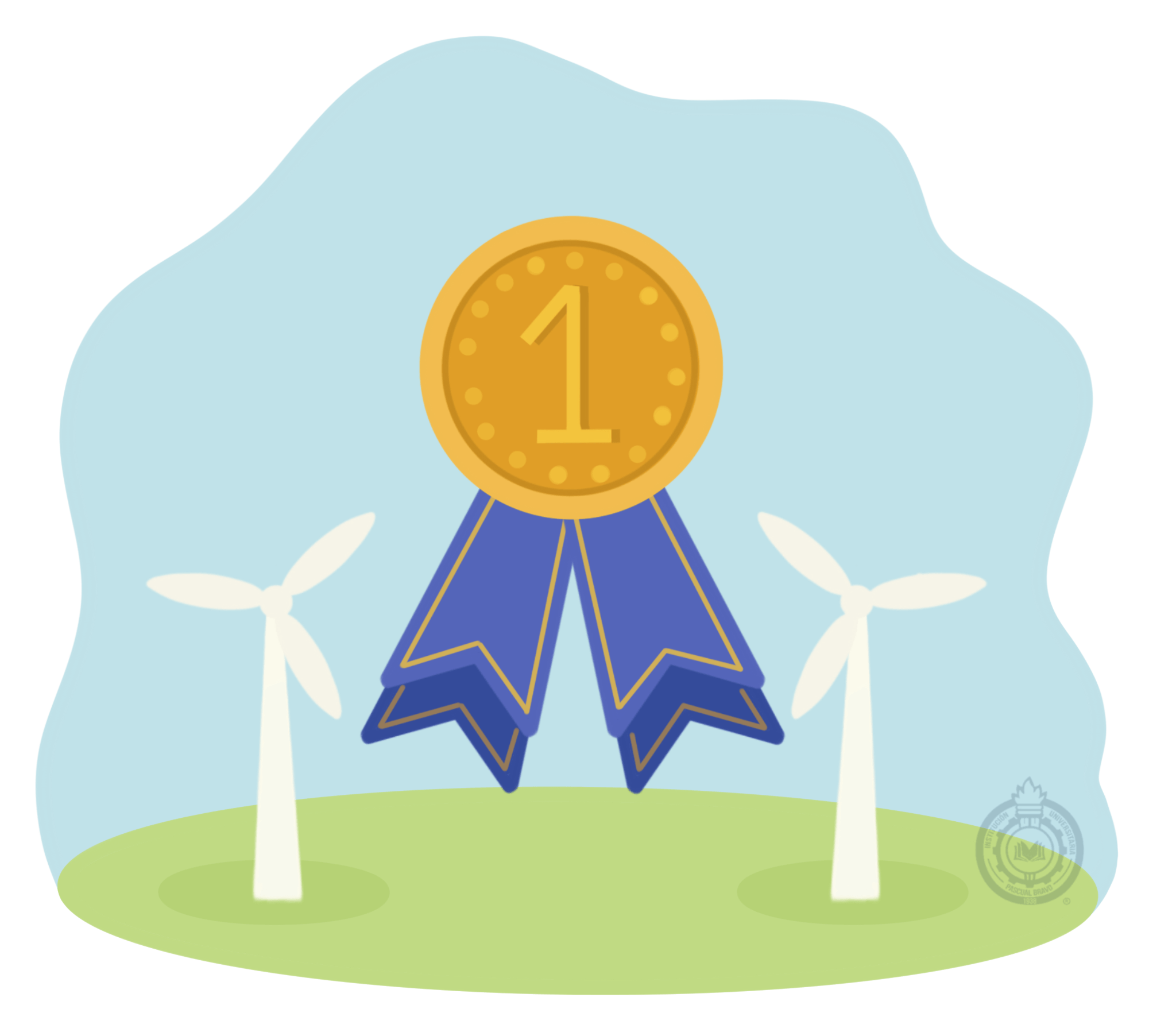
A few weeks ago, Pascualino presented his wind energy science project at his school's science fair. His project took first place among the entire school.
Pascualino was selected to represent his school at the inter-school science fair, which would take place at the Plaza Mayor convention center in Medellín.
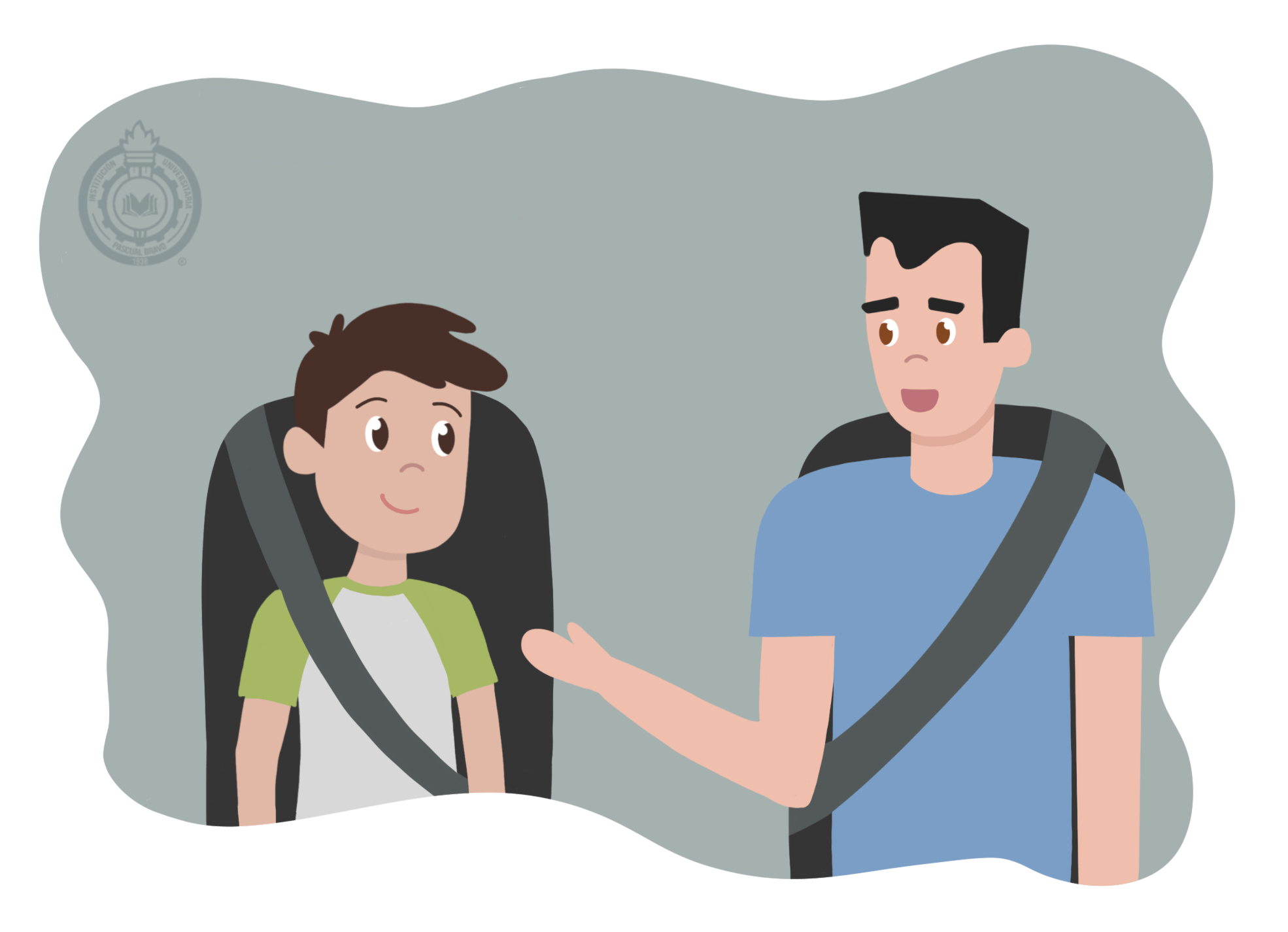
The day of the fair arrived. Pascualino got up early and together with his father went to Plaza Mayor. The convention center was packed with contestants and visitors.
"There are a lot of people," Pascualino mentioned to his father, as they both assembled Pascualino's model on the table.
"Yes, but I am sure you will do well. The important thing is that you have fun and learn," replied his father.
"That is true! But you know that I would love to win and get the chance to visit that new electric car factory in the city," he answered excitedly.
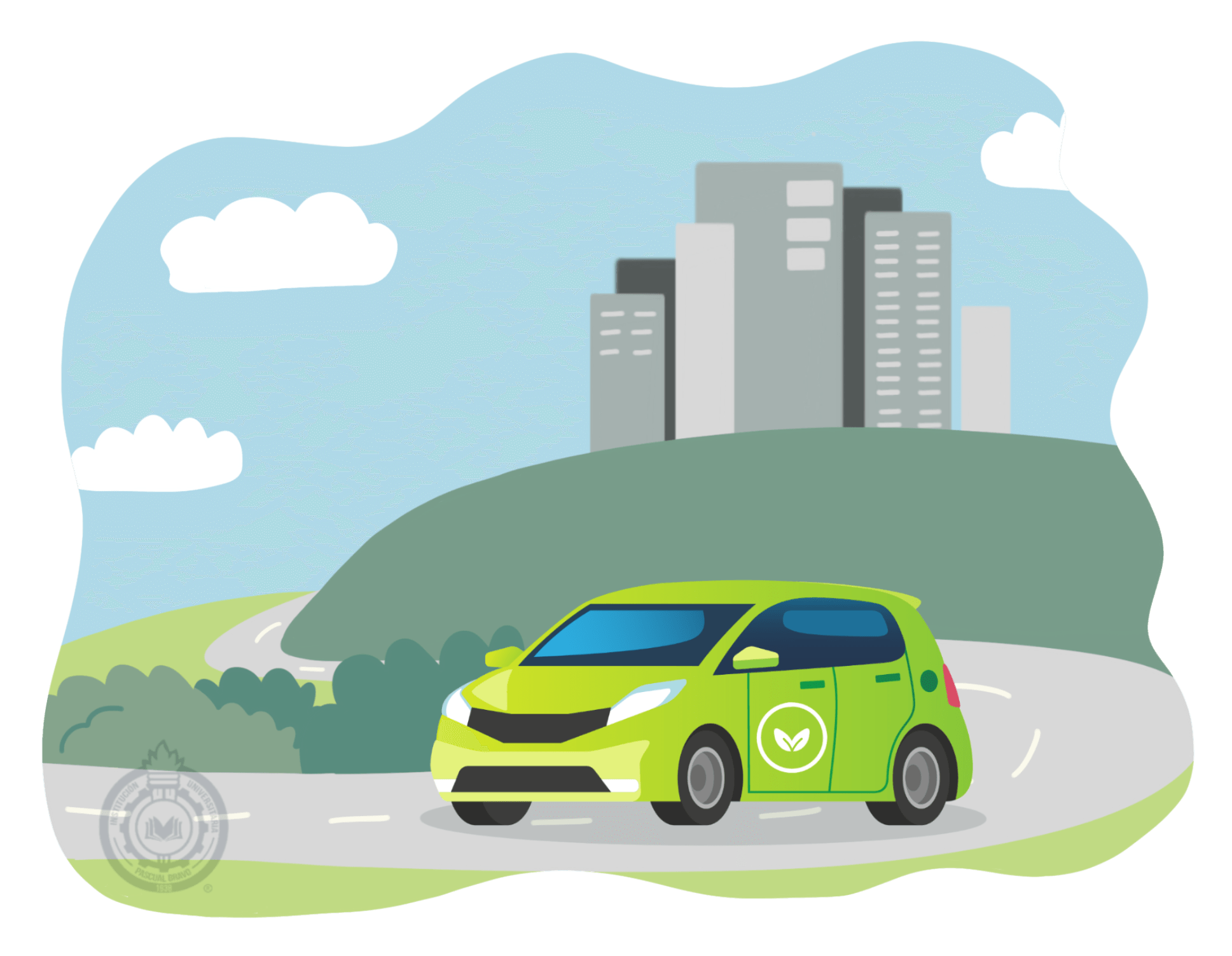
Pascualino organized and arranged his space with his presentation.
His area was located in the pavilion for alternative energy projects and around him there were other children with projects similar to his, such as solar energy, hydraulic energy, etc.
Among all the projects, the best ones would be chosen and the winners would get to go on a guided tour of the city's new electric car factory. In addition, they would receive a scholarship to take an elective, summer course on sustainable development.
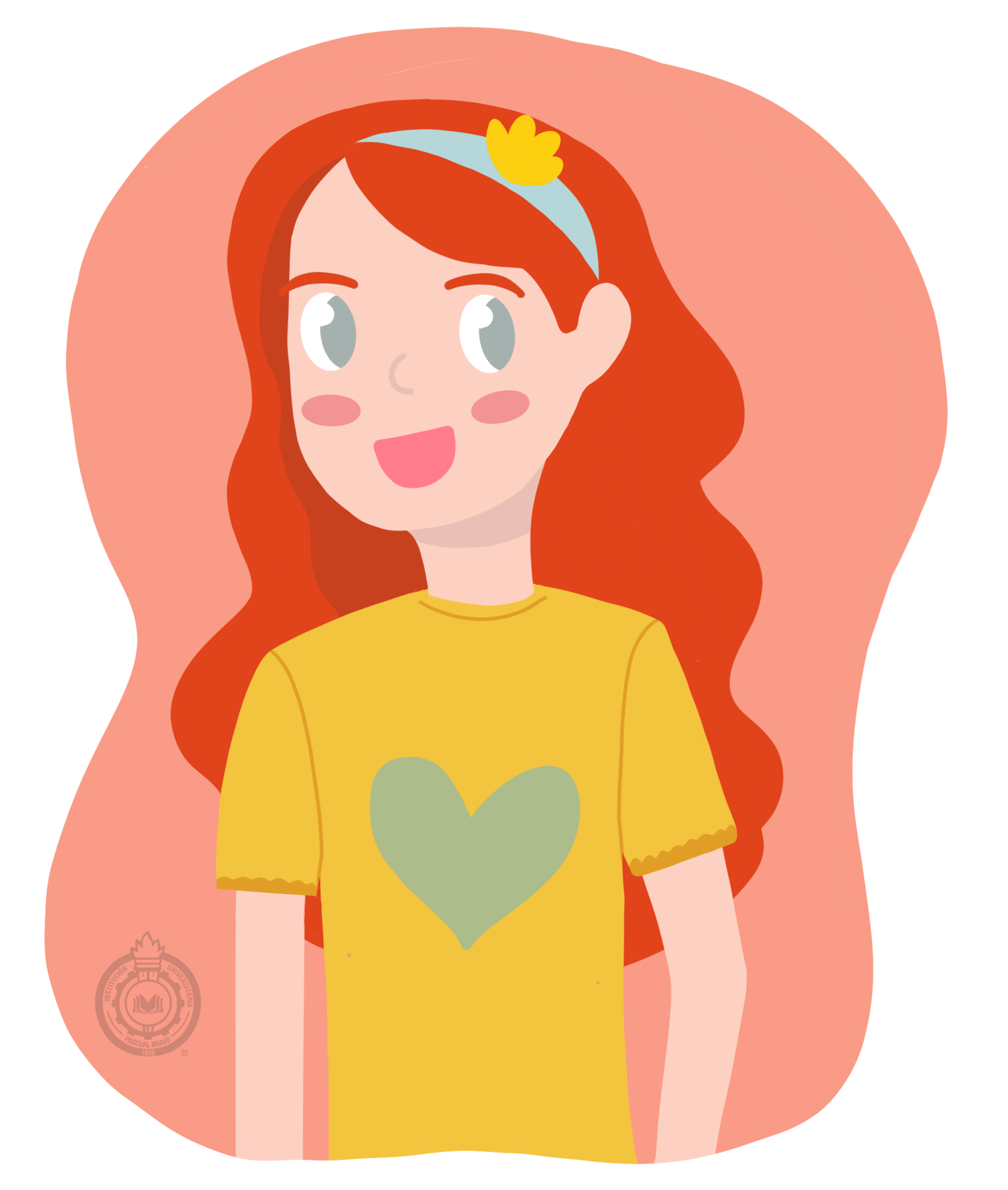
"Hello, your model is about wind energy, right?" Pascualino turned to see the source of the soft voice and saw a pretty girl with red hair and gray eyes looking at him..
"ehhh….uhhhh...mmmm..exactly," Pascualino answered and blushed.
"It is a very beautiful model. It is also very interesting what you propose with it," she admired.
“What do you mean?" Pascualino asked.
"Well, that through the installation of wind turbines in our communities, enough electrical energy can be produced to provide electricity to all of the homes," she answered.
"Yes!" said Pascualino amazed "That's the idea. A fan turns the wind turbine that then converts kinetic energy into mechanical energy.

"Wow! I love it! I congratulate you,” the mysterious girl smiles.
"Thank you very much," Pascualino blushes again.
"What is your name? I have never seen you and well ... Obviously, I have not seen you before because I have never seen any of these people but ... rambling! Sorry," he says sadly.
"Don't worry. It's a pleasure to meet you, I'm Wendy," says the girl as she gently extends her hand.
"I don't think it's a windy day," Pascualino replied confused.
"No silly, my name is Wendy," she explains.
"Oh no! I'm really sorry! How stupid of me. My name is Pascualino. It is a pleasure, Wendy,” he says as he shakes her hand and they both smile. “Are you also presenting a project today?"
"Yes. In fact, mine is also about wind energy," she says.
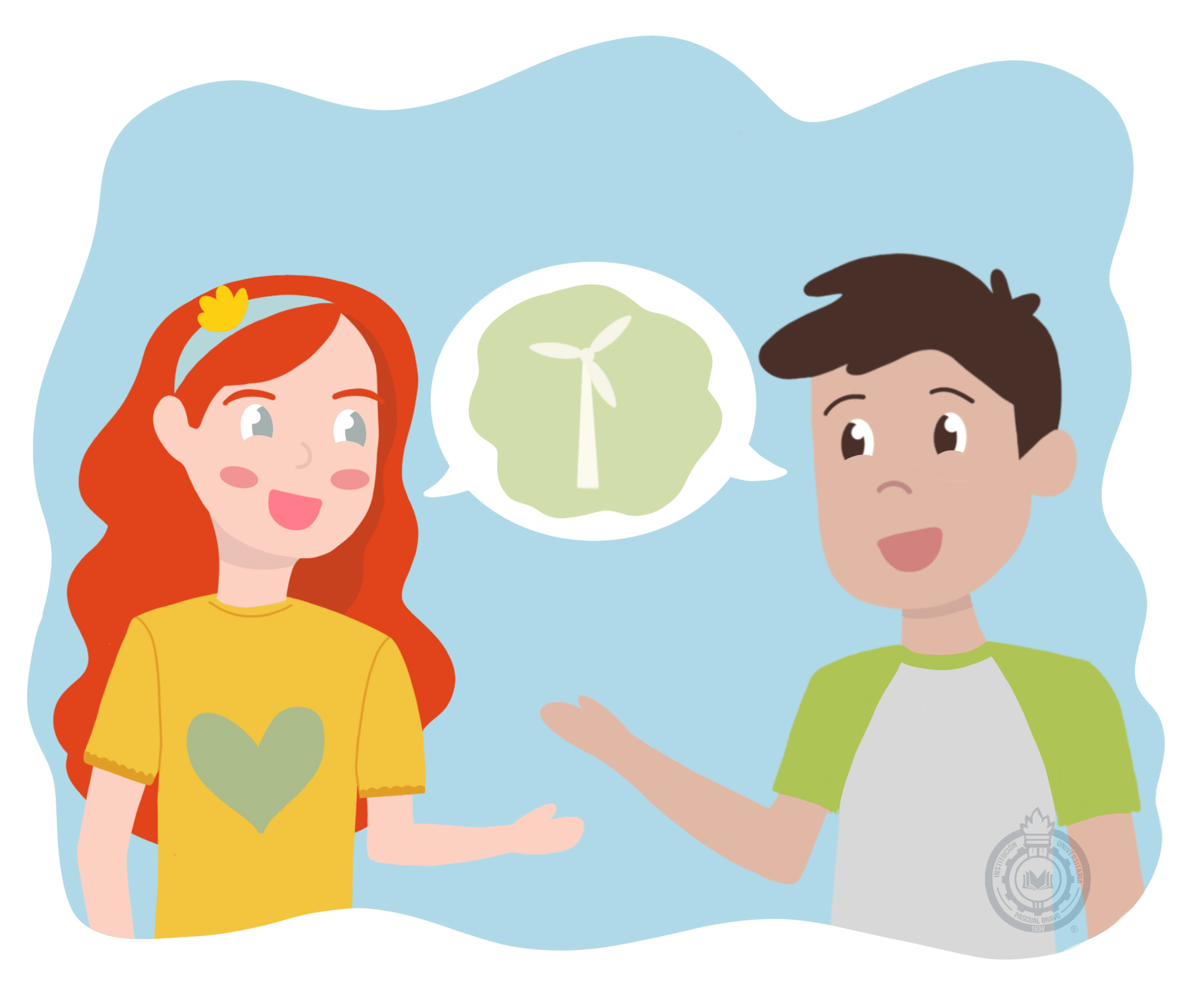
"My project is only a few tables away. I have always felt very interested in the wind, and not only because of my name," Wendy said smiling.
"The truth is that your name is beautiful" Pascualino replies somewhat shy.
"Thanks," says Wendy slightly blushing
"The large number of applications that wind energy can have is incredible," says Pascualino as he tries to quickly change the subject.
"That is true! Wind energy can help meet many of the needs of small communities such as pumping water, irrigation, refrigeration, drying crops, air-conditioning, lighting," finishes Pascualino
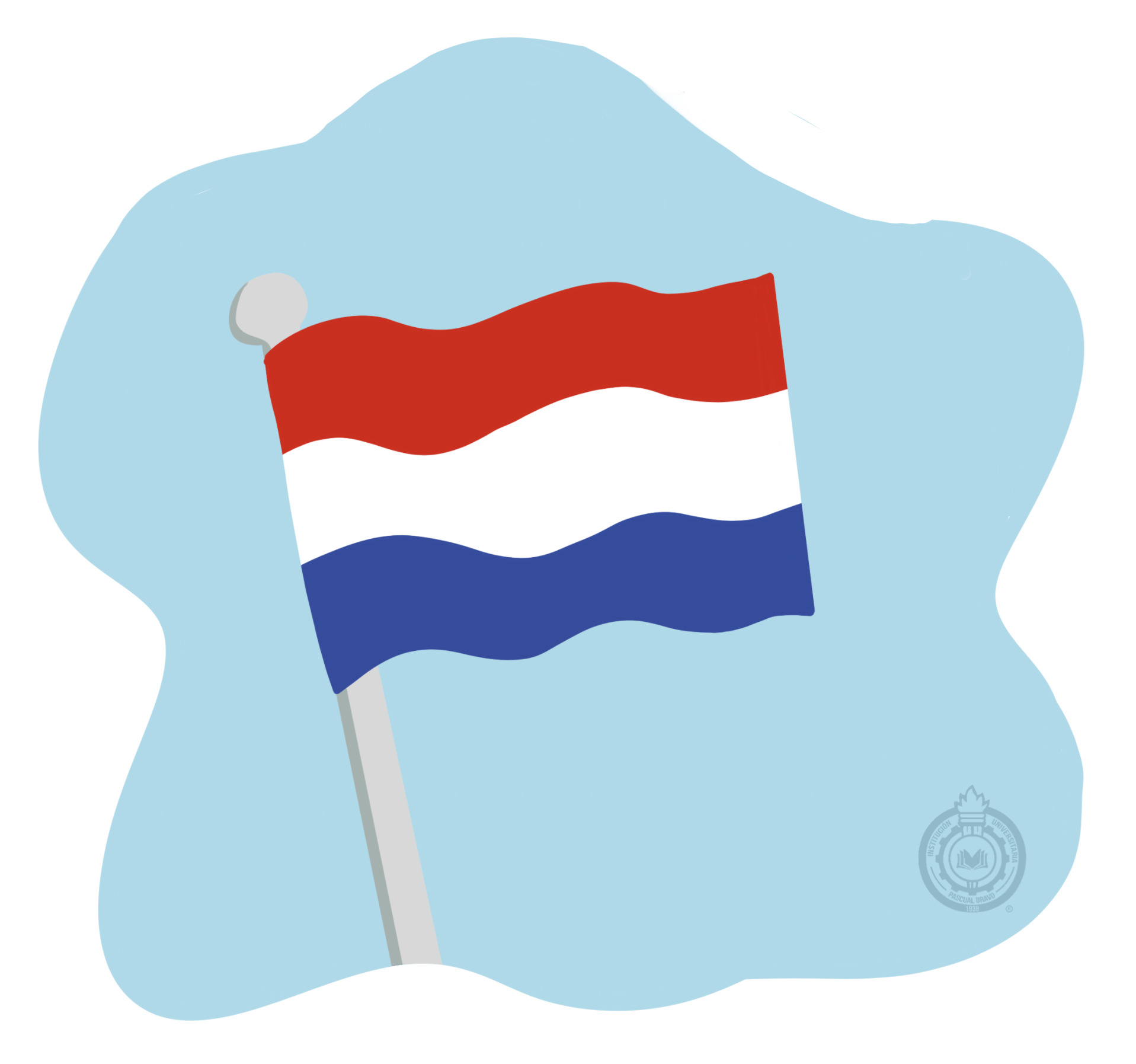
"It is great that you know so much about the subject. I had not met anyone my age with whom I could talk about it since my trip to Holland," Wendy explained
Pascualino looked at her confused.
"Oh, sorry,” Wendy replies. “My father's family’s home is in the Netherlands and there are several wind turbine parks there that provide electricity to the entire area."
"Wow! I knew that Holland was the first to promote wind energy, but I have actually never met anyone who has visited there before, replied Pascualino.
"Well the wind turbines there generate great power, although the wind at times can be unpredictable and not produce power," explains Windy.
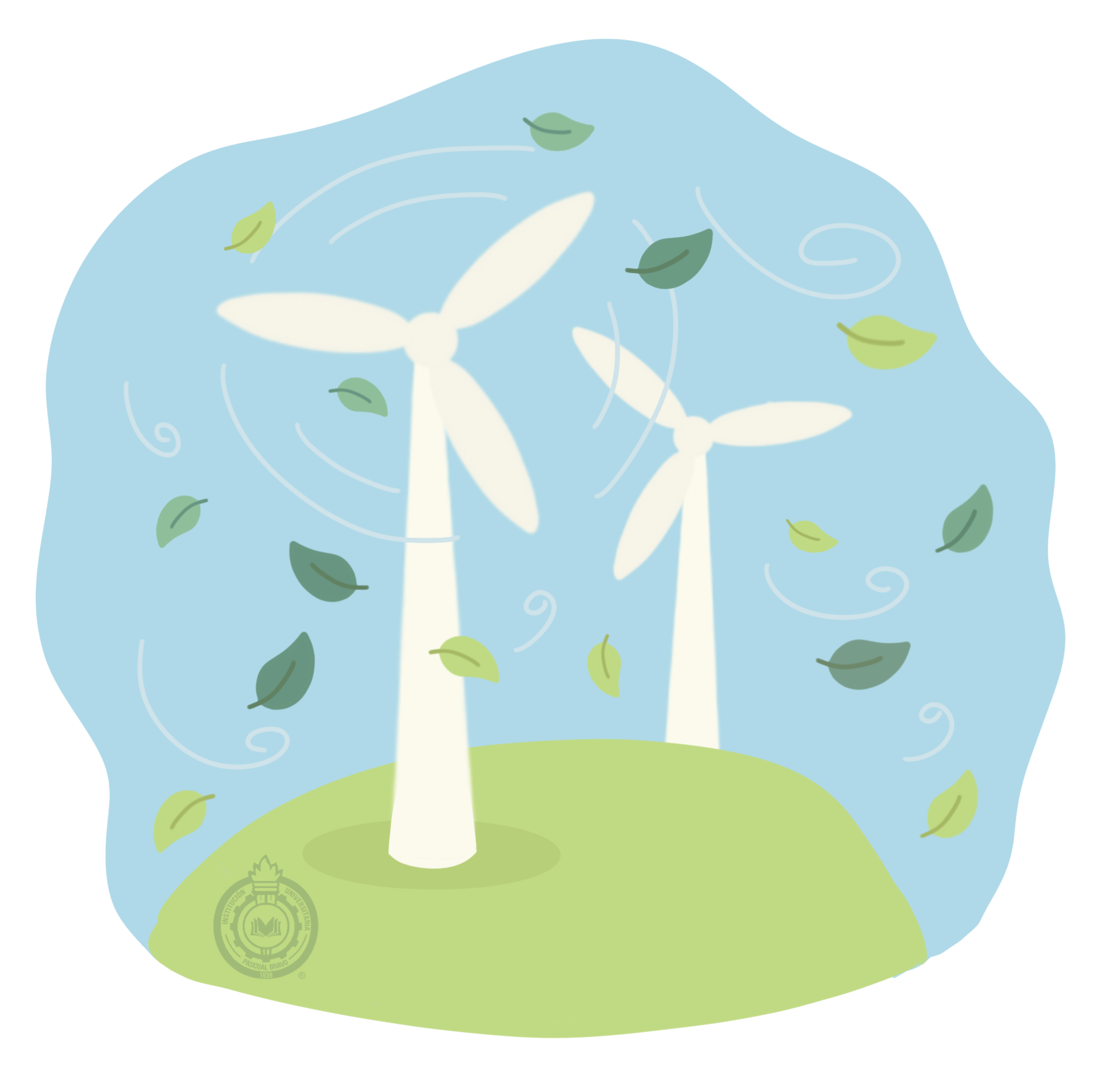
"Yes. I believe that wind energy is a great alternative energy option since creating energy from the wind does not produce toxic gases or contribute to the greenhouse effect," explains Pascualino
"And although it is common to think that the noise caused by wind turbines is very high, it is actually comparable to that caused by a refrigerator 50 meters away," adds Wendy with a smile.
"Wind energy is one of the best options to support sustainable development," says Pascualino.
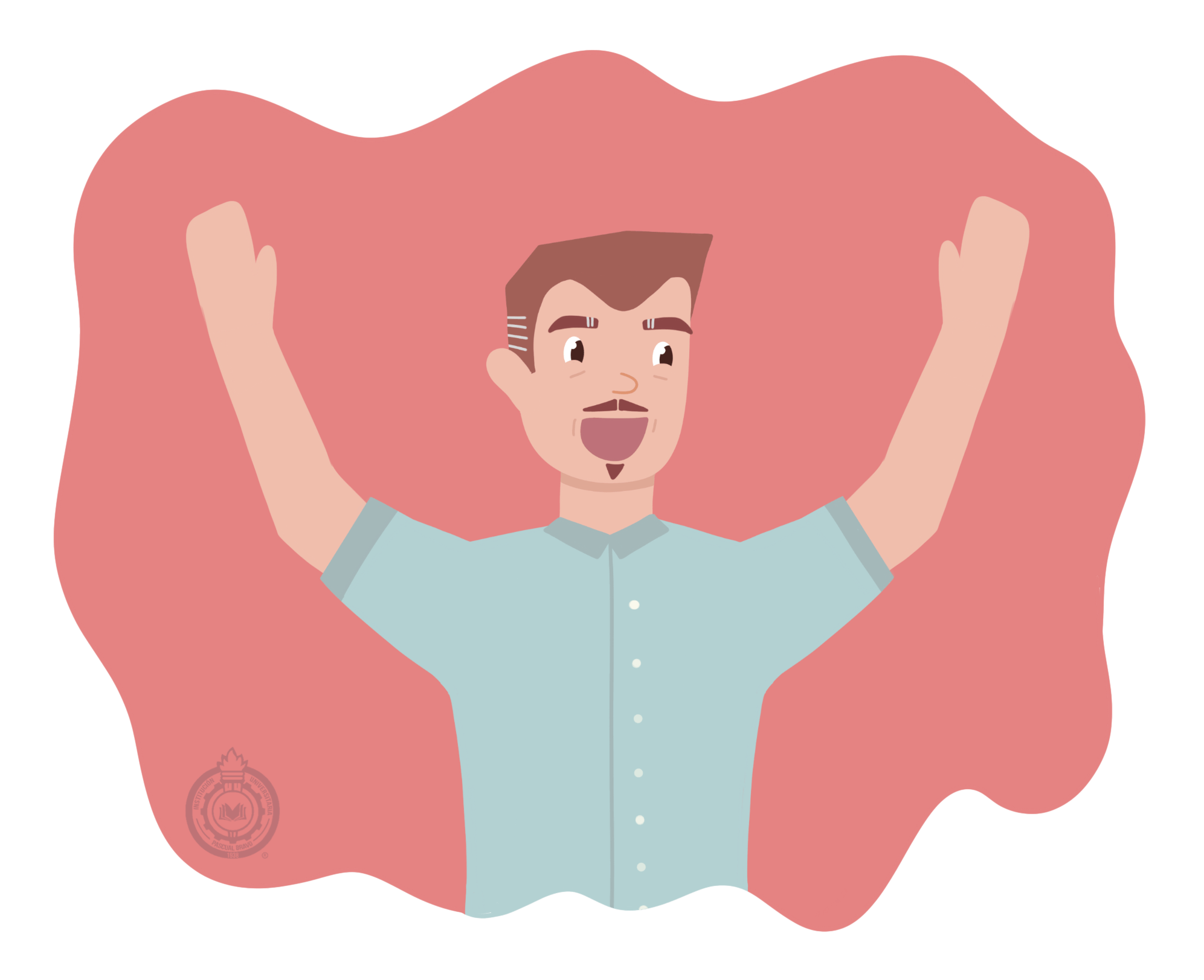
Background applause interrupts their conversation. Wendy and Pascualino turn around to see who is clapping. A middle-aged man comes closer to them and smiles broadly.
"That was awesome. You guys make a great team!"
Both Wendy and Pascualino cannot help but look at him confused.
"Sorry, I have not introduced myself. I am Tom, one of the judges at today’s event."
"A pleasure Tom," Pascualino greets him and shakes his hand.
"It is good to meet you," Wendy adds with a sincere smile.
"Likewise,” responds Tom. it was great to see two young people so interested in this type of alternative energy. If more adults thought like you two, our world would surely be a more environmentally friendly place," Tom confessed.
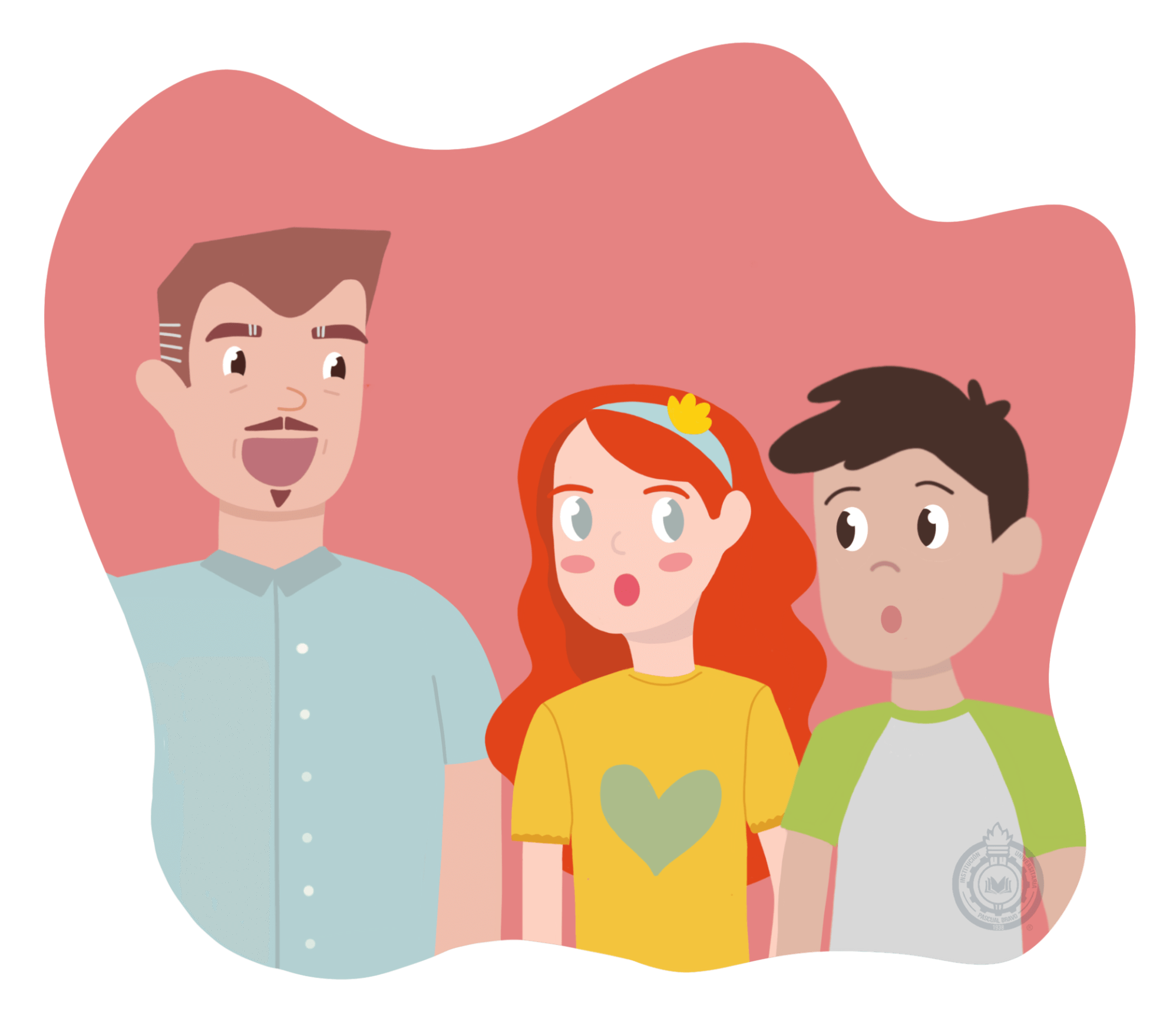
"Well, if we can change how people think, it will be reflected in our actions and future policies and we can definitely help improve our planet," says Wendy.
"Yes, and just imagine, a single large turbine can generate enough electricity to supply 600 homes with power. " adds Pascualino.
"Well guys, you leave me speechless. I am very happy to inform you that your project has been selected in this category as the winner. In a couple of hours we will call you up on the stage to give you your tour passes and the registration form for the summer course," says Tom.
Wendy and Pascualino look at each other puzzled without believing it.
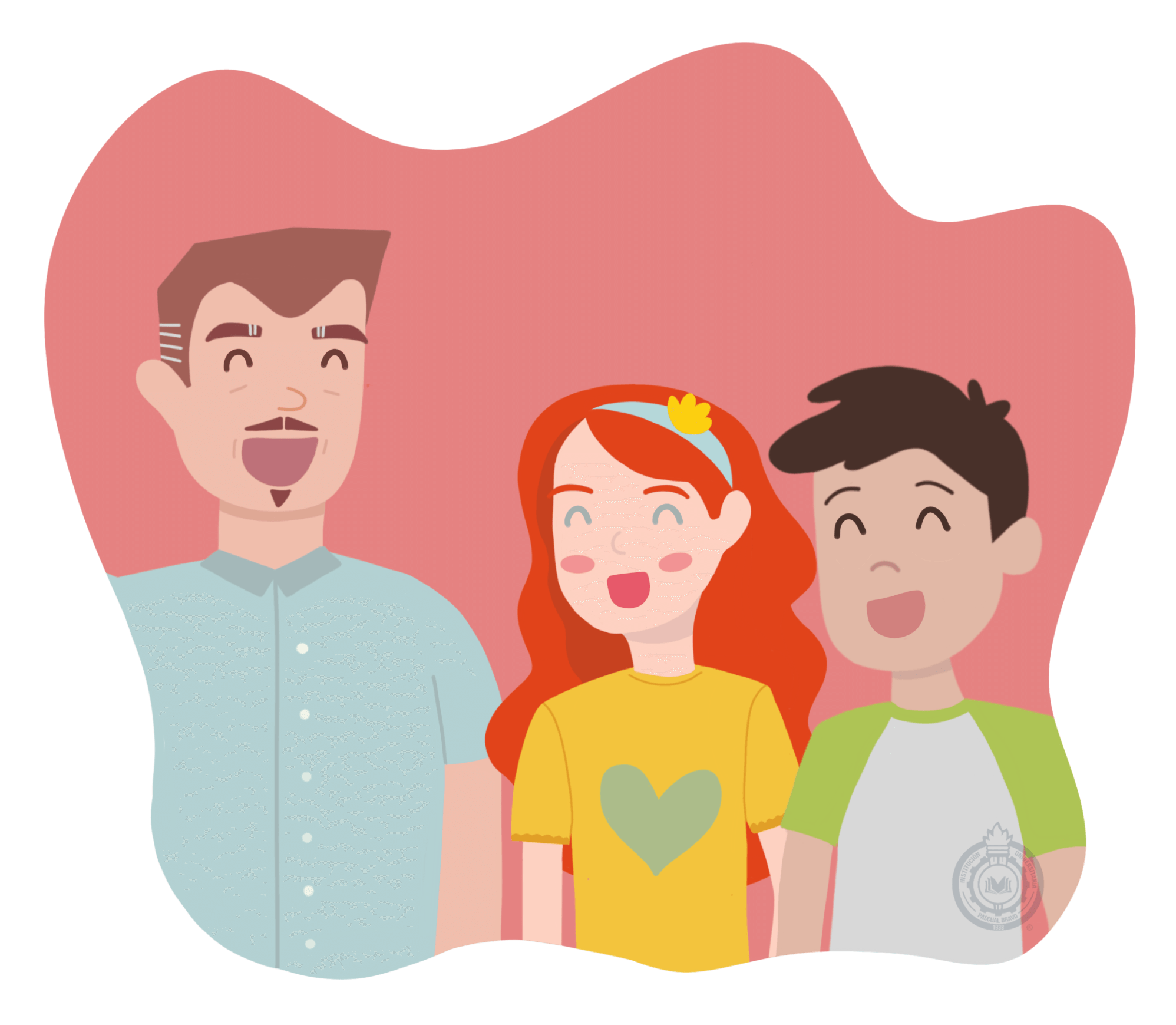
“Is there a problem?" Tom asks them because of their puzzled look.
"Well, It is that Windy and I are not from the same school. Although both our projects are about wind energy, each one is competing separately," explains Pascualino.
"I know that young man. However, one of the objectives of this event is to provide a space where various ideas can co-exist and collaboration can take place among diverse competing projects. Both you and Wendy exemplify the cooperative spirit we hope to foster here,” Tom explains. "That's what science and change are about: a collective commitment to the common good."
1. Pascualino's wind energy project was selected as the best of his class
2. Pascualino was only interested in winning an award and his father supported him in his decision
3. In the Pascualino’s pavilion there were other projects related to alternative energy
4. The girl had no idea about anything about wind energy and that surprised Pascualino
5. Wendy's science project was on a different theme than Pascualino's
6. The use of wind energy is not limited to generating electricity for houses
7. Wind energy is always accurate since there is wind all the time
8. Due to its little harmful impact on the environment, wind energy is a good option to support sustainable development.
9. Tom is only an attendee at the event who rebukes Windy and Pascualino for their deplorable ideas about the energy produced by the wind
10. It can be inferred that sustainable development is viable and possible if it is based on applied knowledge.
11. In the end, Pascualino not only won the award with Windy but also verified his father's words, the greatest award is the knowledge that drives the change the planet needs.
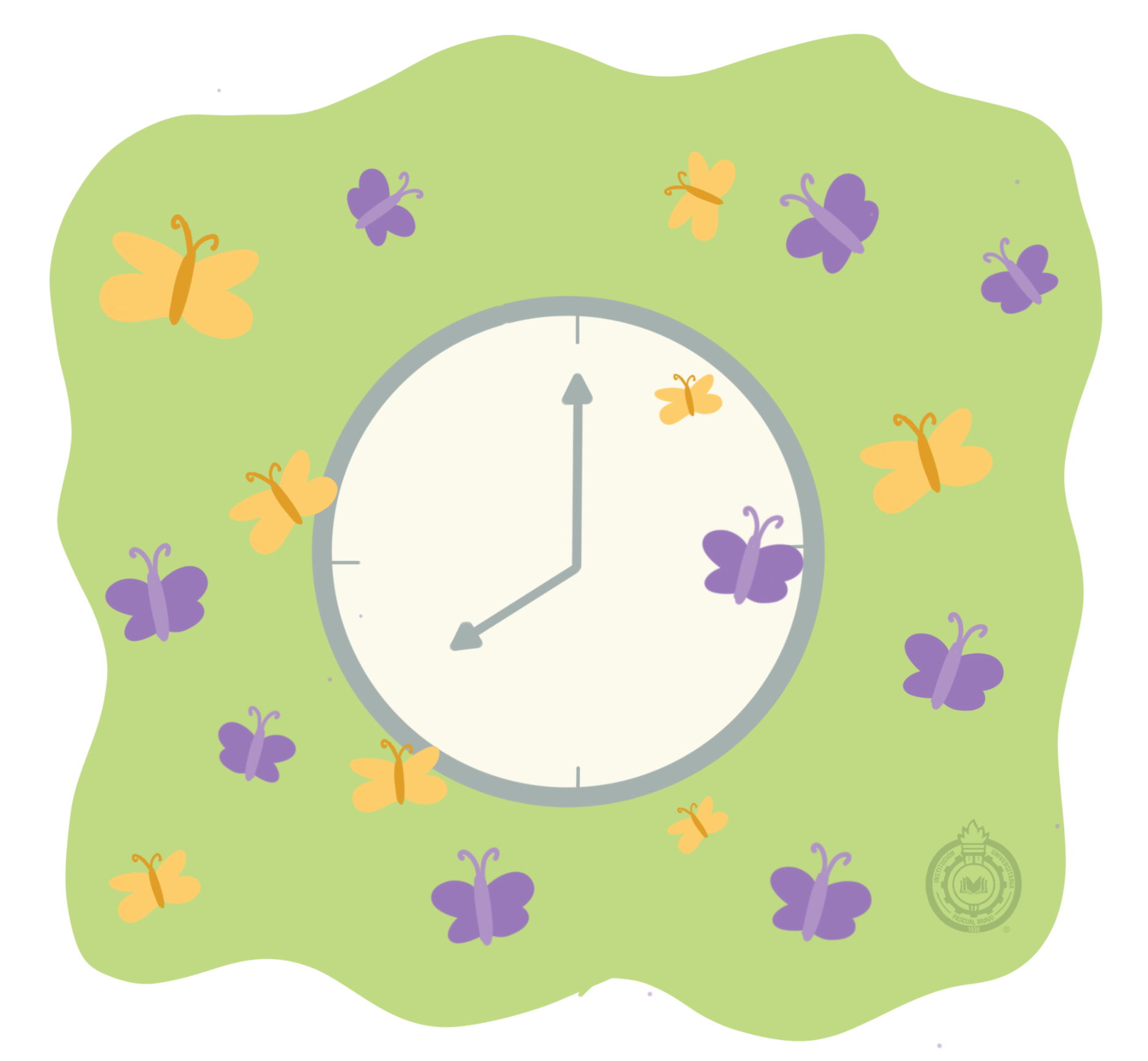
Pascualino was feeling anxious. On Friday he had a big math test and then on Saturday he would see Wendy again to visit the new factory that produces electric cars.
Seeing Wendy again caused butterflies in his stomach. This was the real reason for his anxiety!
Pascualino arrived on time at 8 am at the factory entrance, and a few minutes later Wendy showed up.
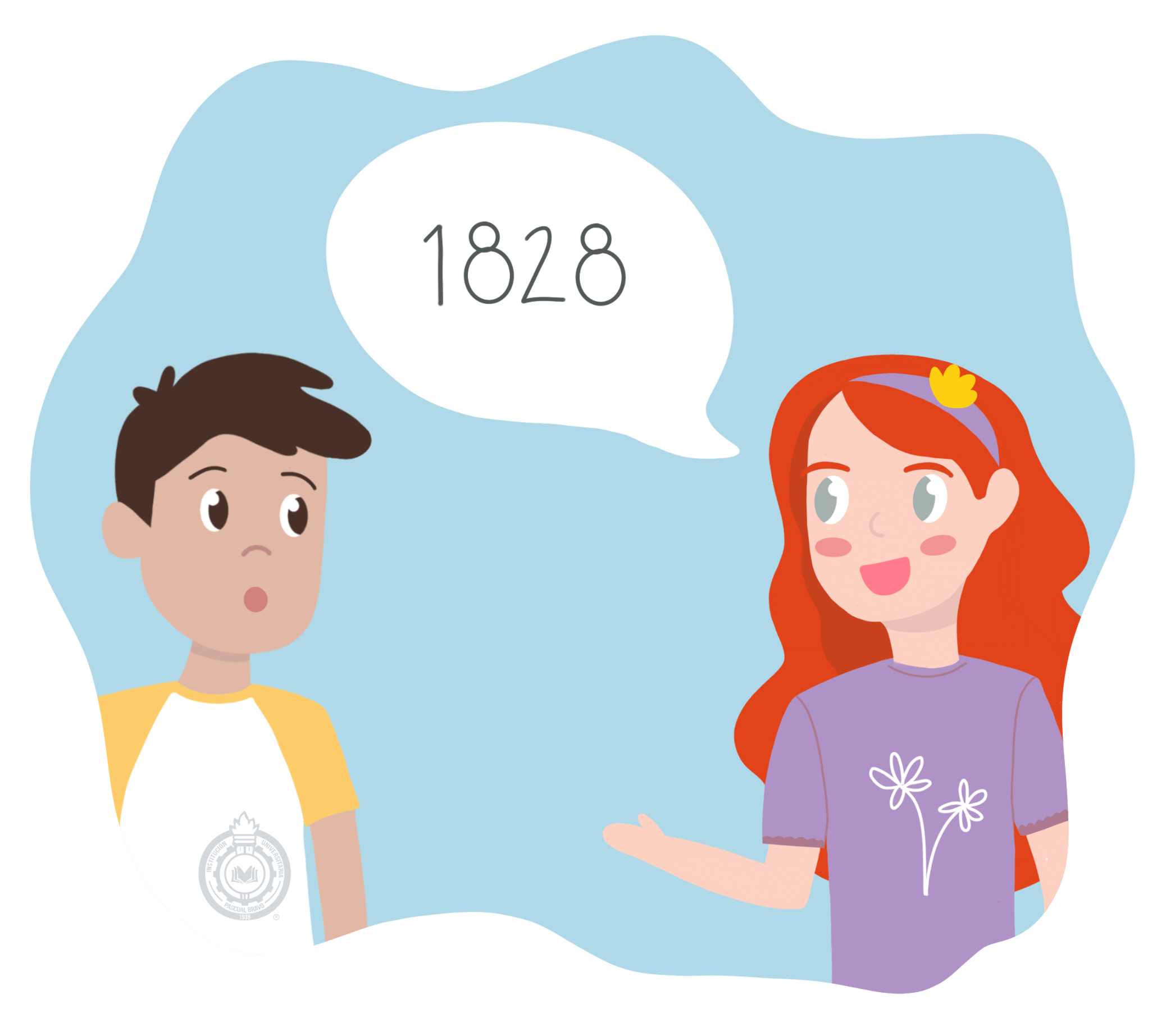
"Hello Pascualino!” Wendy said.
"Hi! I am glad to see you again and I am very excited about this visit,” responded Pascualino.
“Yesterday I was reading a little bit about electric cars and I learned that they were actually invented a lot further back than what we think," mentions Wendy.
"I didn't know that. I thought that electric motors were a recent invention from the 21st century," Pascualino replied.
"Well, they are not. The first prototype electric motor was created in 1828,” Wendy explained.
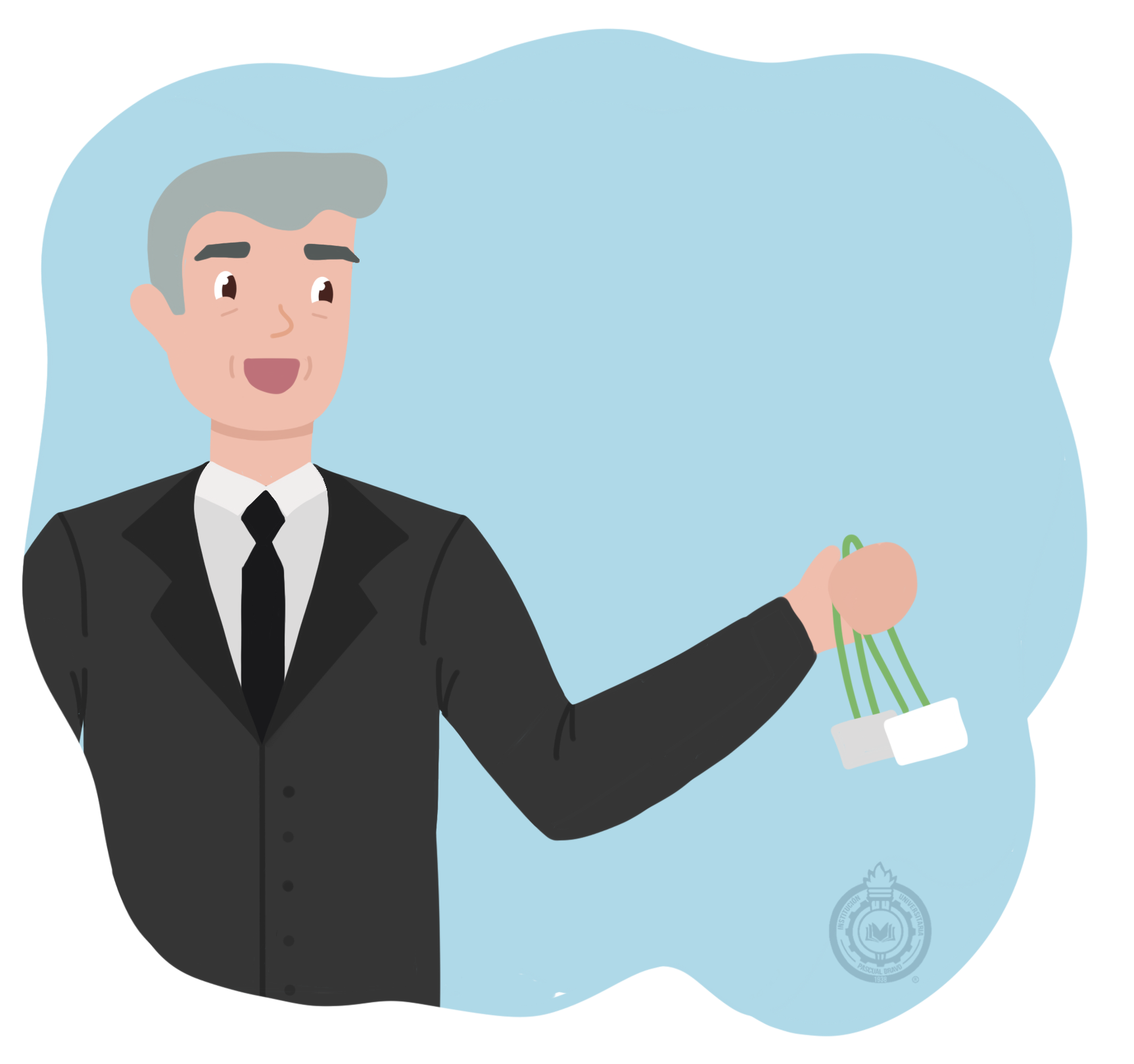
"Wow! That is incredible. Surely today we will learn a lot of new things," says Pascualino.
"I hope so," Wendy replies.
"Good morning guys! Are you the winners of the inter school science fair?" an elegantly dressed older man asks them.
"Yes, sir," Pascualino replied politely.
"Okay, my name is Leo and I will be your guide today," he said
"Are you ready for a day full of learning?" Leo said cheerfully.
“Of course!" Wendy replied
“Then let's get started!”
Leo led the guys down a long hallway until they reached a boardroom and invited them to take a seat.
Leo projected his presentation on a large screen and said, "If you have any questions or comments, don't hesitate to contribute, the idea is that we can all learn together."
"Excellent!" Pascualino said cheerfully.
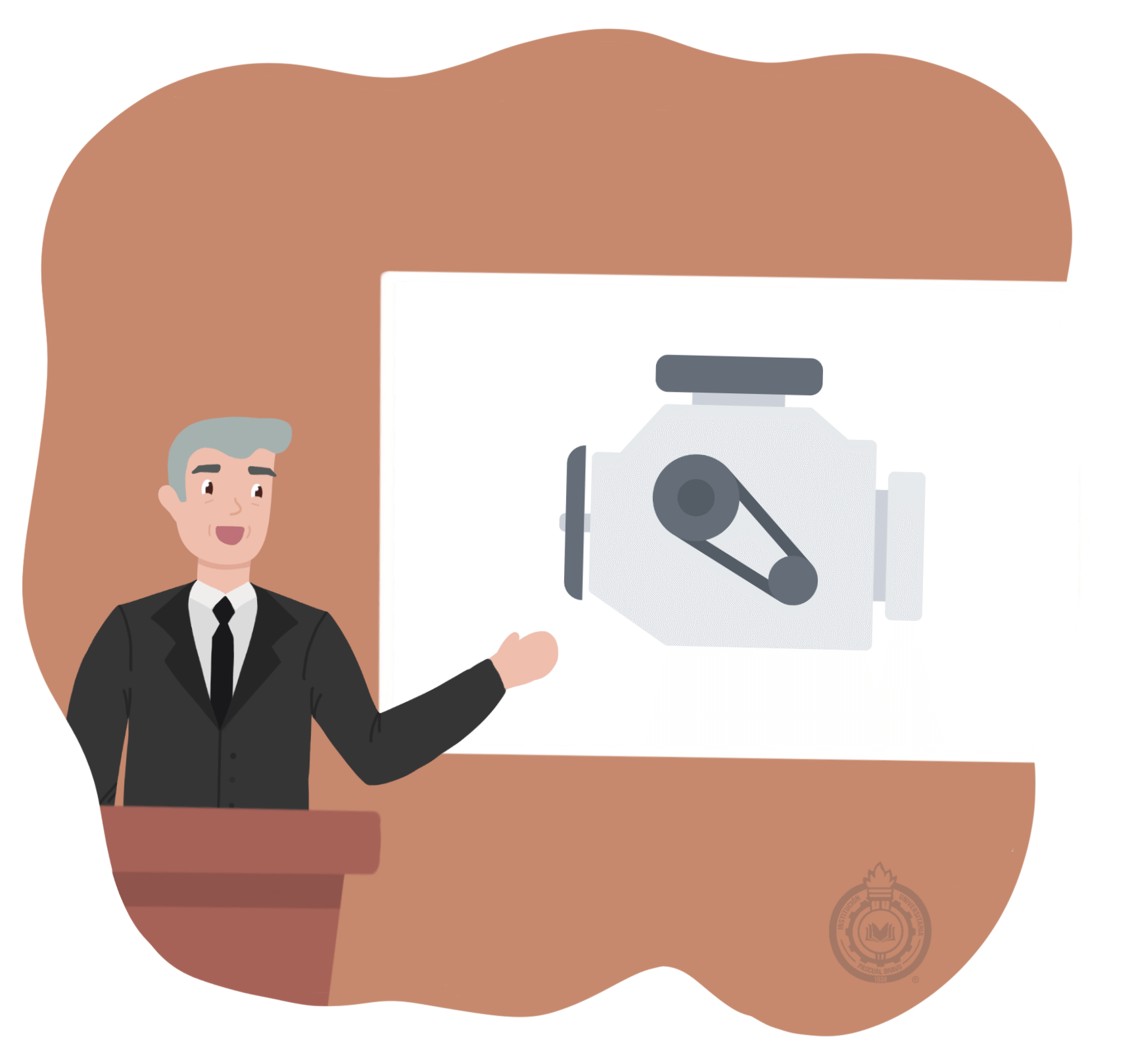
"Before talking about electric cars, we first need to talk about the origin of the electric motor, which is the essential feature in the operation of electric cars. Electric motors were born almost at the same time as petroleum powered motors." Leo explained.
"That is to say, the engines that run on fossil fuels such as gas and diesel," Pascualino said.
"Exactly! Motors powered by oil cause more pollution than electric cars due to the greenhouse gases they emit." added Leo.

"But then who was the first man to invent the electric car?" Asked Wendy.
"The pioneer who is typically credited with the invention is Robert Anderson (a Scottish businessman and chemist), who invented the first electric vehicle in the late 1830s. His prototype was the natural evolution of the carriage, but powered by electric cells," Leo explains.
"But if I remember correctly, the United States was the first country to produce an electric vehicle, right?" Wendy commented.
"Yes, that's right. In 1891 the US created a vehicle for up to 6 passengers that could reach 23 km / h, and the market for electric cars prospered thanks to the enthusiasm of the population," Leo concluded.
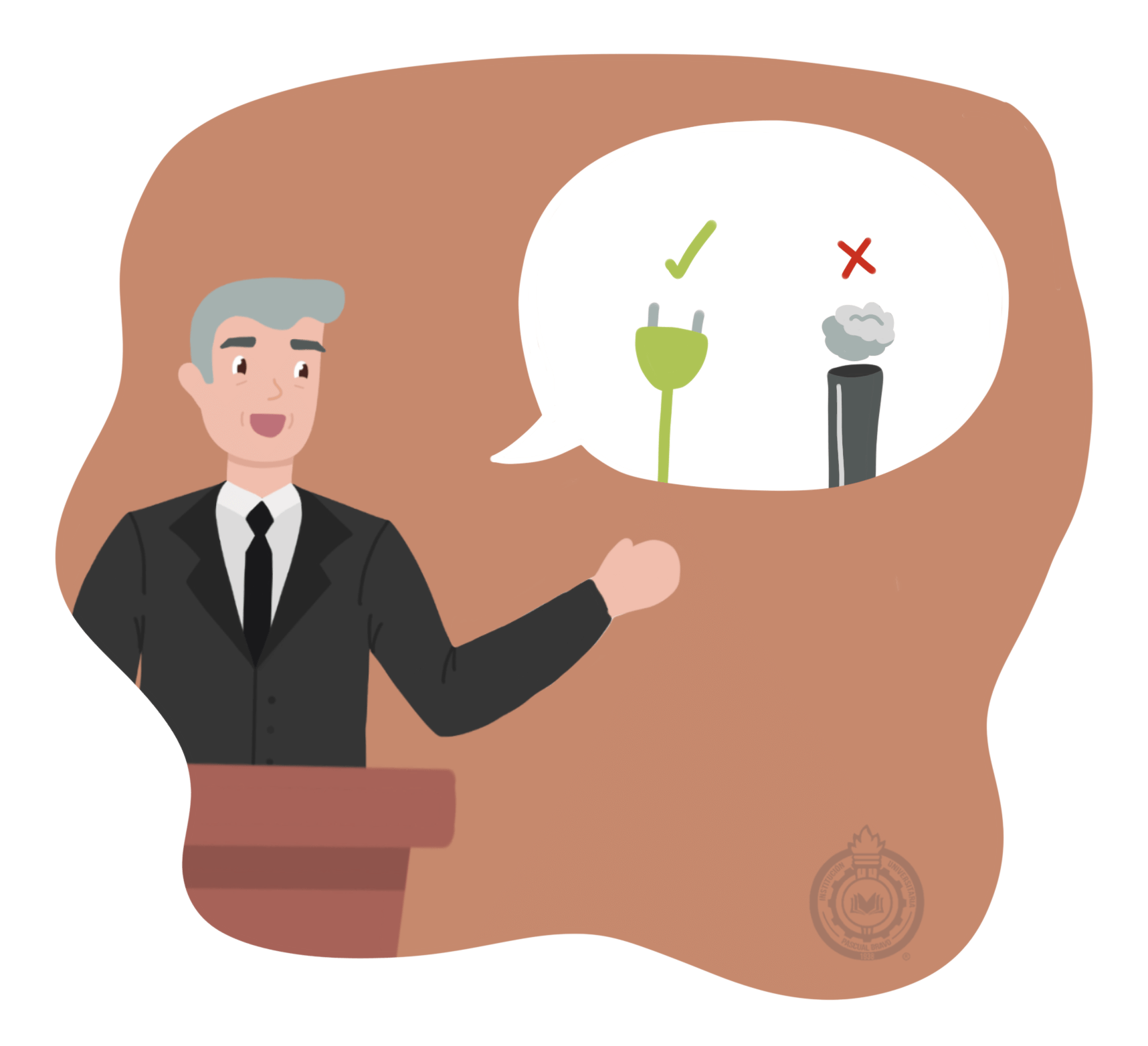
"In 1890 electric vehicles were a novelty, and the streets of London were full of electric taxis," Leo continued, showing some images of old cars on the projector.
"I thought that steam and gas combustion engines had always been more popular than electric engines," said Pascualino.
"No, at that time in history electric cars had many advantages over steam and gas combustion engines. They did not vibrate, they did not emit the smell of gasoline and, most importantly, electric motors required less effort to start than the other types of engines," Leo explained.
"To give you an idea of how popular they were at the time, in the early 1900s almost a third of cars in the United States were powered by electricity," he added.
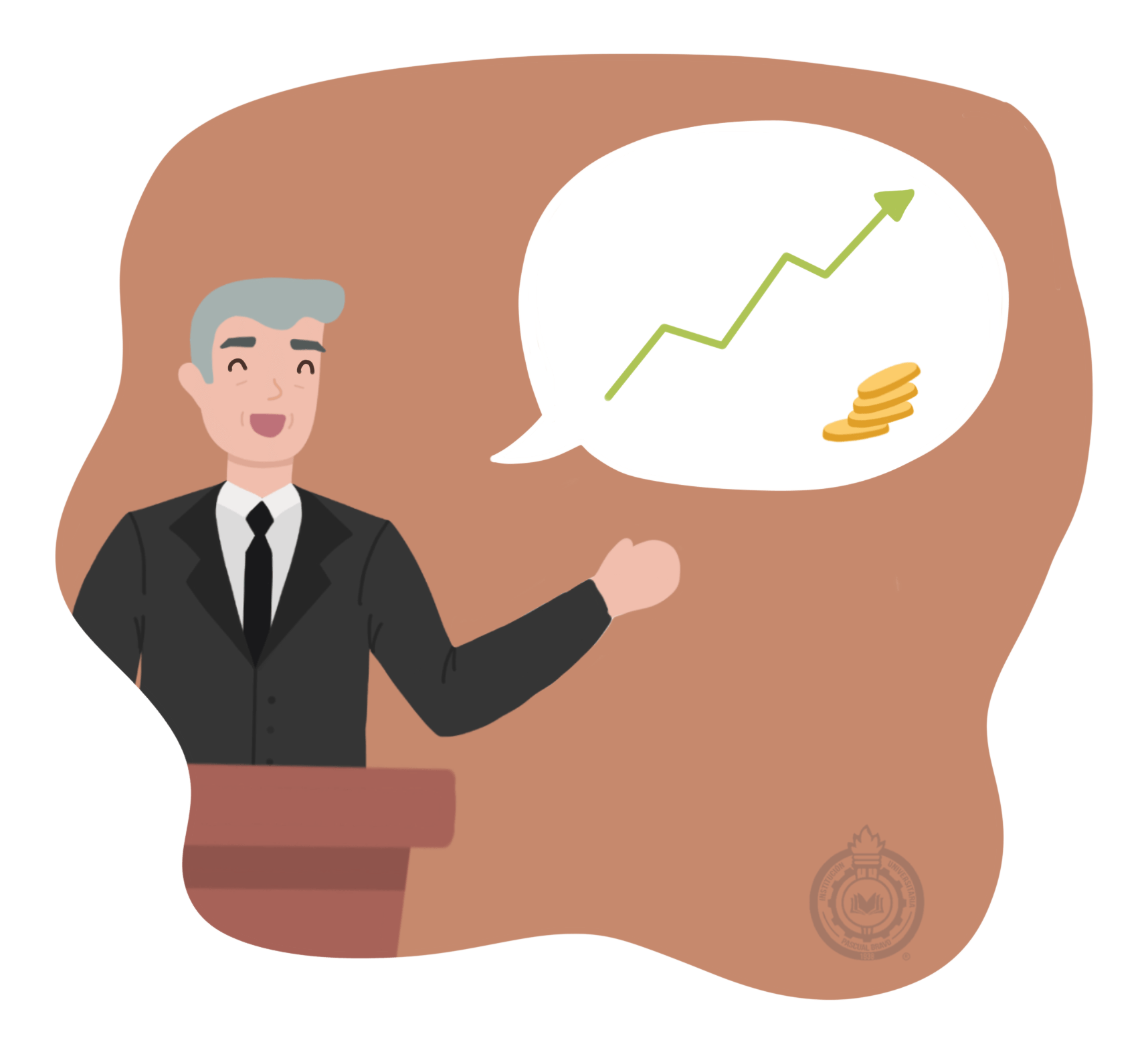
"But the popularity of electric cars did not last long. As the infrastructure of cities improved and as the need for vehicles to travel further increased," said Leo, “fossil fuel cars became more popular because they were stronger and able to travel longer distance
“But why didn’t electric cars evolve to meet these new changes?” Asked Pascualino.
"Good question! The answer is simple. In 1910 Henry Ford began mass-producing gasoline powered vehicles which were now cheaper than electric cars." Leo concluded
“That makes sense,’ said Wendy.
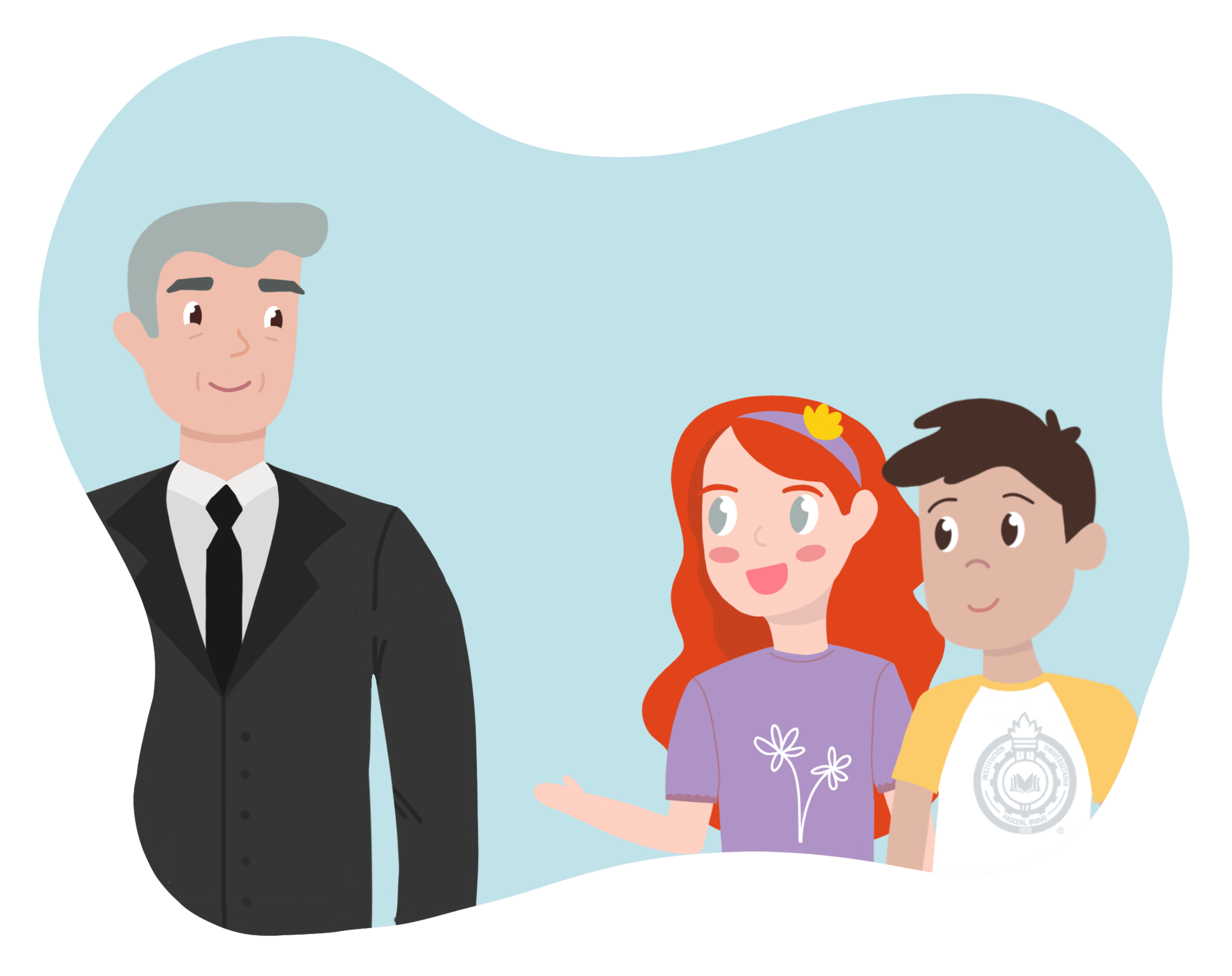
"Now that we have talked about the history of the electric car, I invite you to explore the factory with me," invites Leo.
"Why do you think we have given electric cars a new opportunity in the 21st century?" Leo asks Pascualino and Wendy as they walk down the long hallway amid offices, warehouses and factory machinery.
"I think that today we have new technologies and we care more about the environment than a few years ago" Wendy answers.
"Yes. And if we add in the fear of running out of fuel to drive our vehicles, it is more than obvious that we had to find other ways to power our cars," adds Pascualino.
"Exactly!" Leo congratulates them.
"Now let’s head over to the assembly and production plant."
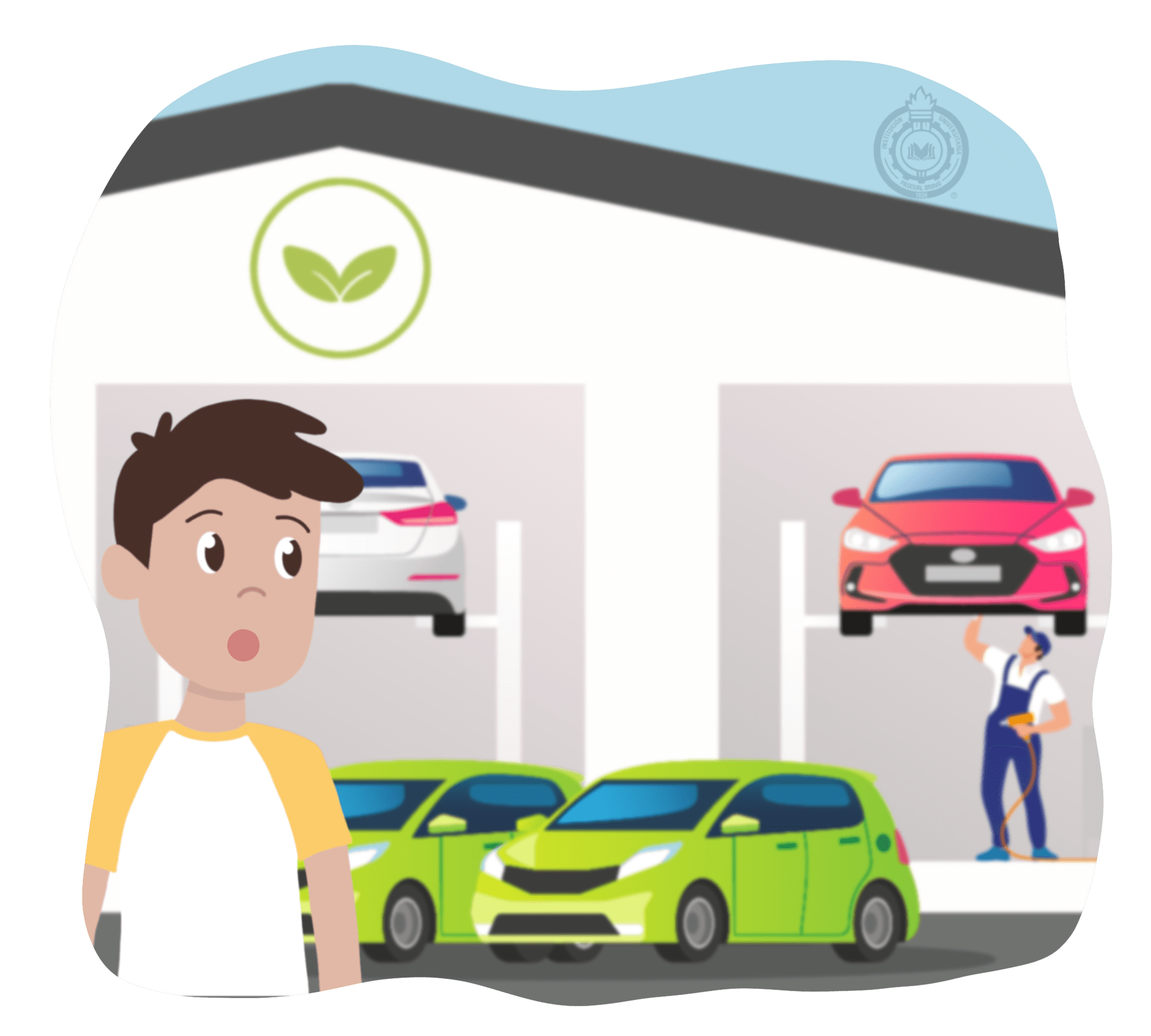
After walking a few minutes, Wendy, Pascualino and Leo arrived at the assembly and production plant that was filled with machines and the latest manufacturing technology.
Both Pascualino and Wendy were stunned. It really was a fascinating place. It was incredible to see all the machines working to assemble the cars.
"This looks very complex," said Pascualino, as he carefully observed everything around him.
"Actually, the science behind the operation of the electric car is quite simple," answers Leo with a smile."
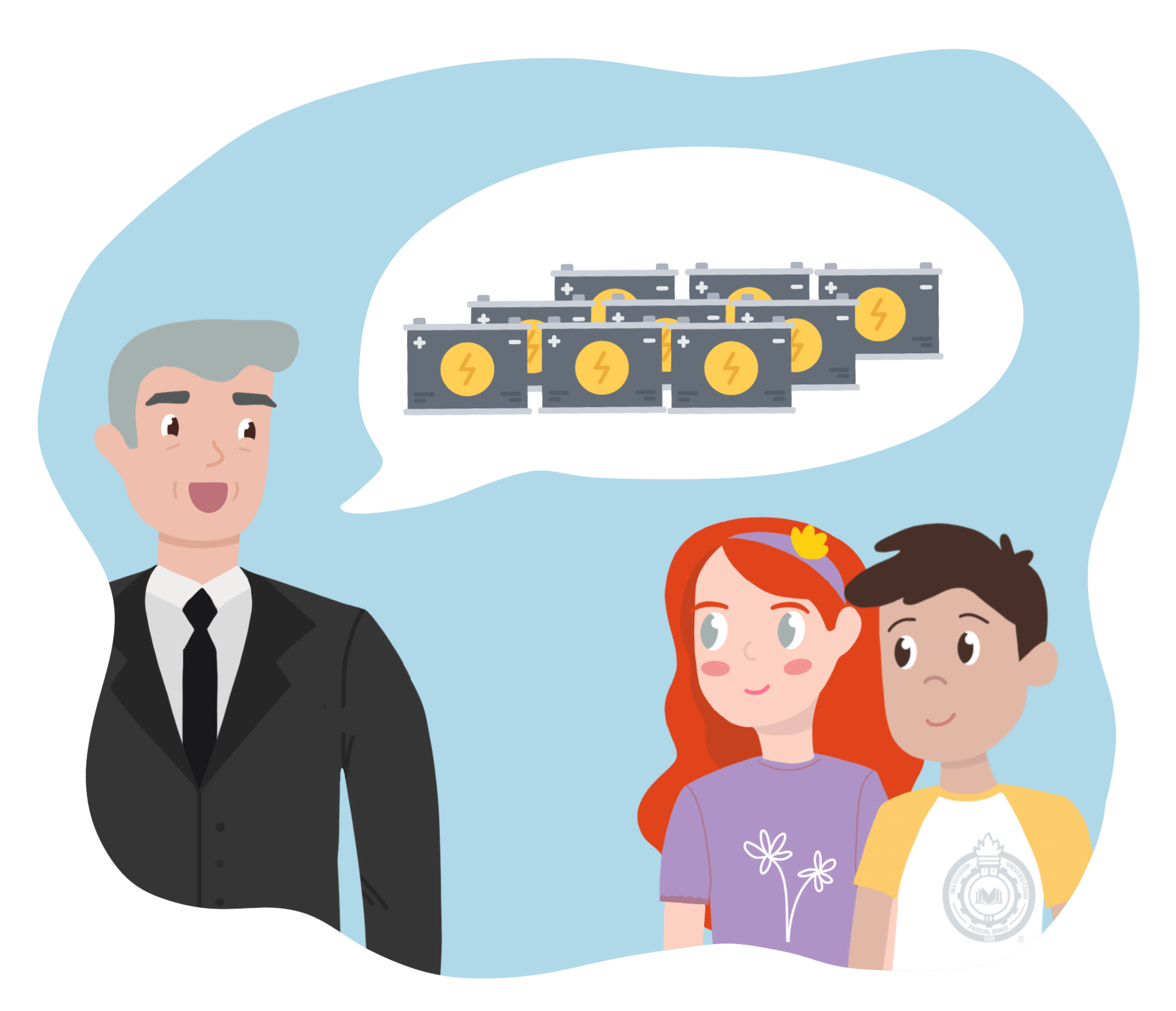
"And do these vehicles use batteries?" Wendy asks.
"Yes, they use a system of lithium ion batteries that are located under the floor of the vehicle.” responded Leo.
"And where can electric cars be charged?" Pascualino asks.
"They can be charged in an electrical outlet at home or in specialized charging stations," says Leo.
"I think electric cars are a great opportunity to support sustainable development, since their source of power, that is, electric energy, can be obtained from different renewable sources such as solar, wind or hydroelectric energy," says Pascualino.
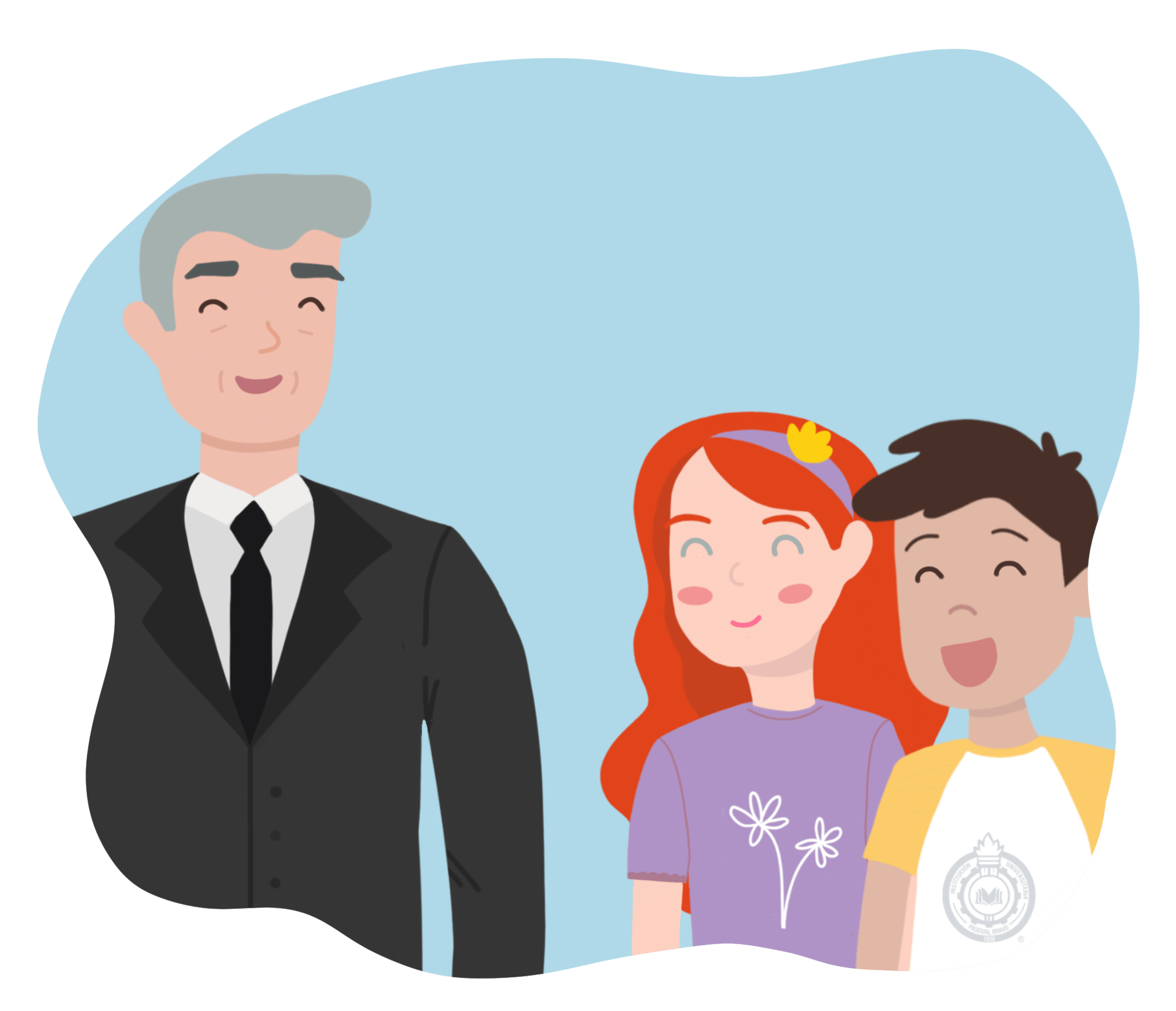
"So which is more expensive: Electric or gas cars?" Wendy asks.
"Electric cars are cheaper to drive and maintain than fuel vehicles, but the initial price is much higher. In addition, electric cars are far more friendly to the environment, since they do not produce atmospheric and acoustic pollution," says Leo.
"I think that the best option will always be the one that contributes to caring for the environment," concludes Pascualino.
"We agree with you!" Leo and Wendy say in unison.
"Thank you very much for all the information, I really think we learned a lot," adds Pascualino.
1. Pascualino was more nervous the day of his math exam than the day he would see Windy
2. The invention of the electric motor dates back to the 19th century
3. Leo was not another of the winners of the interschool science fair, but the guide of the factory
4. Electric motors are less polluting than oil-powered motors
5. People were so tired of the large number of inventions and prototypes about the electric car that after a while they rejected the idea.
6. Electric cars were never more popular than cars powered by fossil fuels
7. Changes in the structure of cities and strong economic competition for production caused electric cars to lose their popularity at that time.
8. Pascualino and Windy believe that electric cars were given a new opportunity in the 21st century because we no longer have enough technology and we are recycling ideas
9. The system of electric cars allows transforming energy to work properly
10. Electric cars are not very versatile since they are only loaded in specialized stations
11. It can be inferred that the best vehicle option is the one that is less friendly to the environment
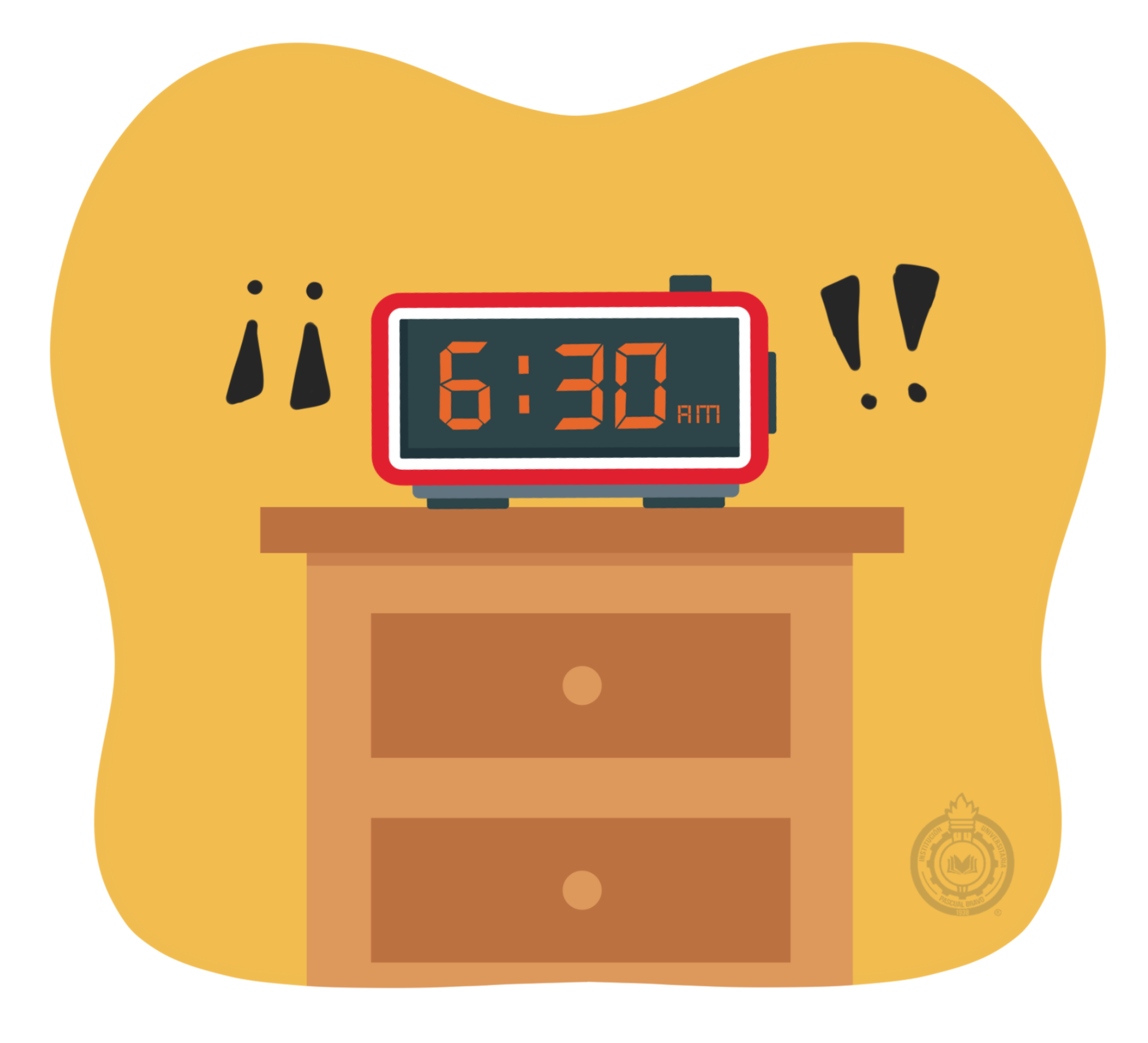
Pascualino opened his eyes slightly and averted his gaze at the time that the table clock showed
6:30 am. It was so late! Realizing the time, he got up quickly ... if he was not in a hurry, he
would be late for the field school trip to visit the energy exhibition.
He got ready as fast as he could, and almost ran to school.
“Everyone is ready?" Professor Pérez asked, when the entire Pascualino class had gotten on the bus.
"No! Pascualino has not arrived yet" Willy replied worried about his friend.
The day before, Pascualino, Willy, and some of his other friends had stayed up late playing video games.
Surely that was the reason their friend hadn't arrived yet, Willy thought.
Pascualino used to be very punctual, except when he slept late.
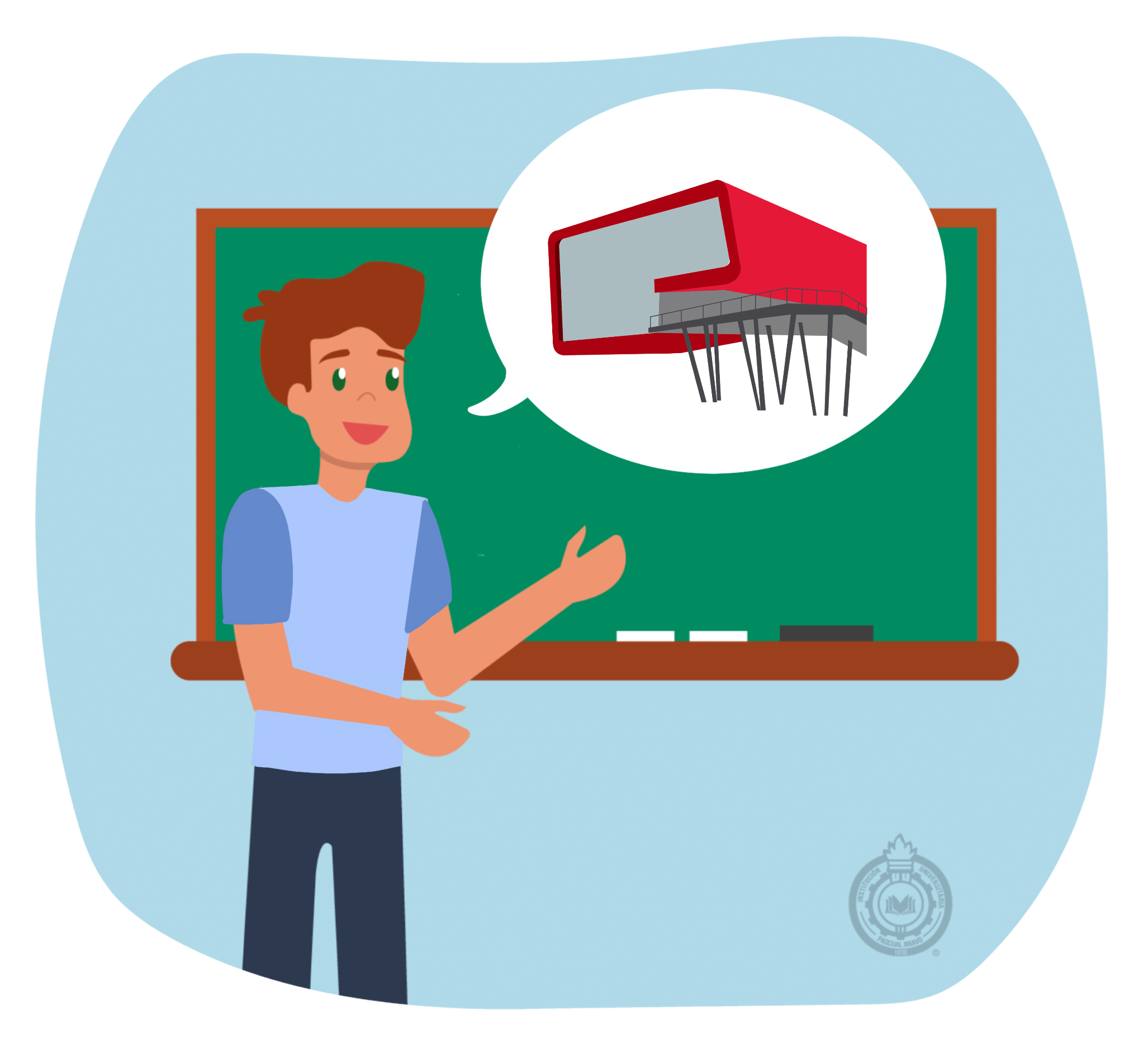
"Today will be a very very very important day" The teacher said excitedly. "It is a great honor that
our school is one of the few invited to the exclusive exhibition about Energy in the Parque Explora
of Medellin. And that is why we cannot afford to be late"
"It is true, but Mr. Pérez, surely Pascualino is about to arrive. He must have a good reason for his
delay," said Willy, trying to give his friend some time to arrive and not miss the expected field trip.
"You are right Willy, Pascualino is very responsible but we will only wait for him 5 minutes more” the teacher accepted.
"Thank you very much" Willy smiled at him.
Fortunately 3 minutes later Pascualino finally appeared
"Sorry for the delay ... I didn't get up on time this morning" He apologized while wiping the sweat from his forehead.
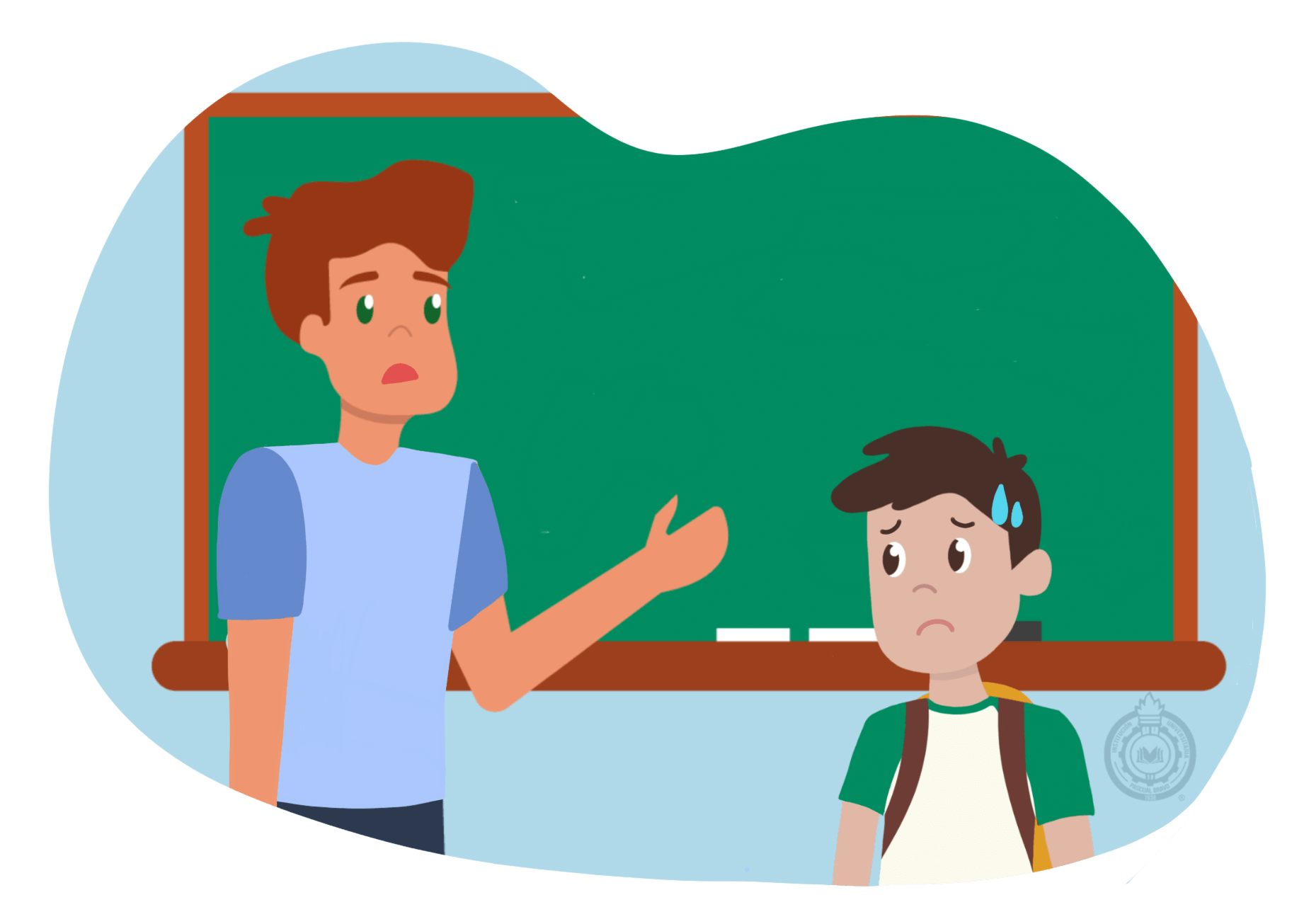
"I hope this doesn't happen again Pascualino, take your seat next to Willy" the professor reprimanded
"Yes sir, again I apologize" Pascualino replied sadly as he sat down.
"Now that we are complete, we can go" said Mr. Pérez.
"What happened to you? You were very excited by this visit, and you wanted to arrive early" Willy
asked Pascualino quietly, so that only he could hear him.
"Right, but I think it was not a good idea to stay up last night ... today I didn't have enough energy
to wake me up early" Pascualino answered
"With energy or not, you managed to get here ... that's what's important" said Willy reassuring him.
The rest of the bus trip was quiet and 25 minutes later they had arrived at Explora Park.
"Guys, in a few minutes we will be received by the park guide who will guide us through the exhibitions, remember to behave well and get the most out of this experience" Professor Pérez told them
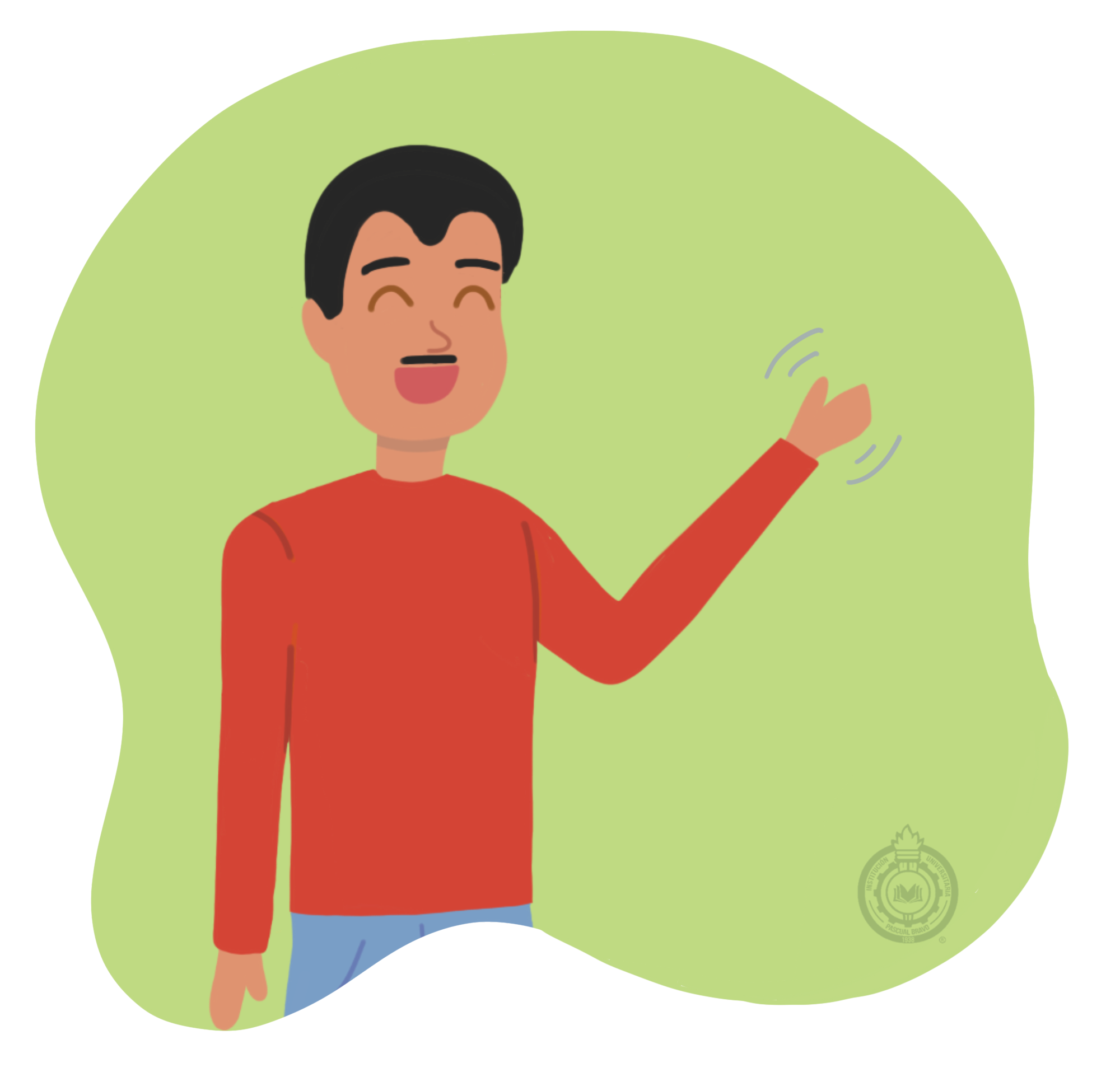
"Alex?" Mr. Perez suddenly exclaimed, causing Pascualino and Willy to turn in the teacher's direction.
"Jorge! Hello!" Replied a middle-aged boy cheerfully. "Is this your group?" Mr. Perez nodded. They
both shook hands and exchanged some friendly words.
"Hi guys! I am Alex, and I will be your guide today." greeted the man. "I studied Physics, chemistry and
mathematics at the university together with his teacher, Mr. Perez. So we will both be answering your
questions during the tour." Alex said while smiling "Today we will talk about how energy is present
everywhere and thanks to its characteristic of transformation it can be used in many ways"
"Exactly," Mr. Perez agreed, "take into account what we learned in class ..." Energy is neither created
nor destroyed, it is only transformed "
"Alright ... now with that in mind let's start our tour" Alex said, as he led them to the exhibition hall.

"Before we start we must understand what energy is ..." said Mr. Perez
"Energy is a physical quantity that responds to the capacity of bodies or systems to perform work, which
adapts and transforms." Alex explained.
"But how is it possible to know that it is present?" Willy inquired
"Well ... Energy is an abstract concept that can really be measured when something happens ... also there
are many types of energy, so we can say that it is present everywhere" answered Mr. Perez
"What could be an example where it is present?" Pascualino asked
"If you look around you realize that we are surrounded by energy ... rainwater when it falls or people
while walking ... a change is taking place ... that is to say to do anything that implies a change
(a movement, a temperature variation, a transmission of waves, etc.), the intervention of energy is
necessary. " Alex replied.
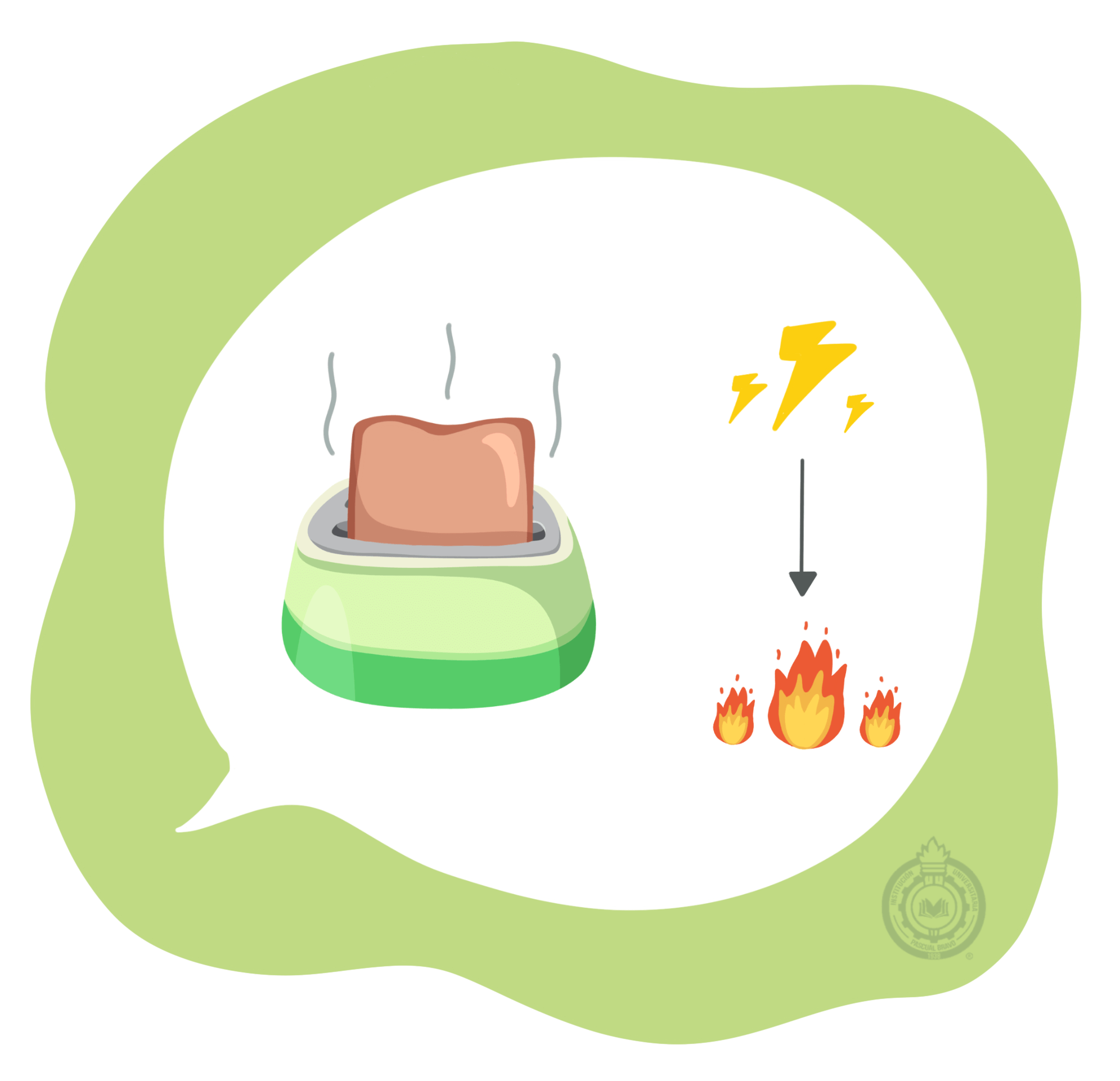
"And how can energy be transformed?" Willy says
"Below we can see some examples of how energy is transformed" says Alex, as he guides the class through
the exhibition "Energy can be transformed into another form of different energy. For example when we turn
on a toaster, the electrical energy is transformed into thermal. Or even in our bodies, the chemical energy of
food is transformed into mechanical energy when we move. "
"Wow!" Pascualino says surprised. "And are all these energy changes occurring naturally?" Asks the boy.
"Not necessarily ... Some of these changes are simpler than others. For example, those easy to transform
kinetic energy into sound energy, if you clap your hands, but it is difficult to transform sound energy
into movement energy." Mr. Pérez intervenes.
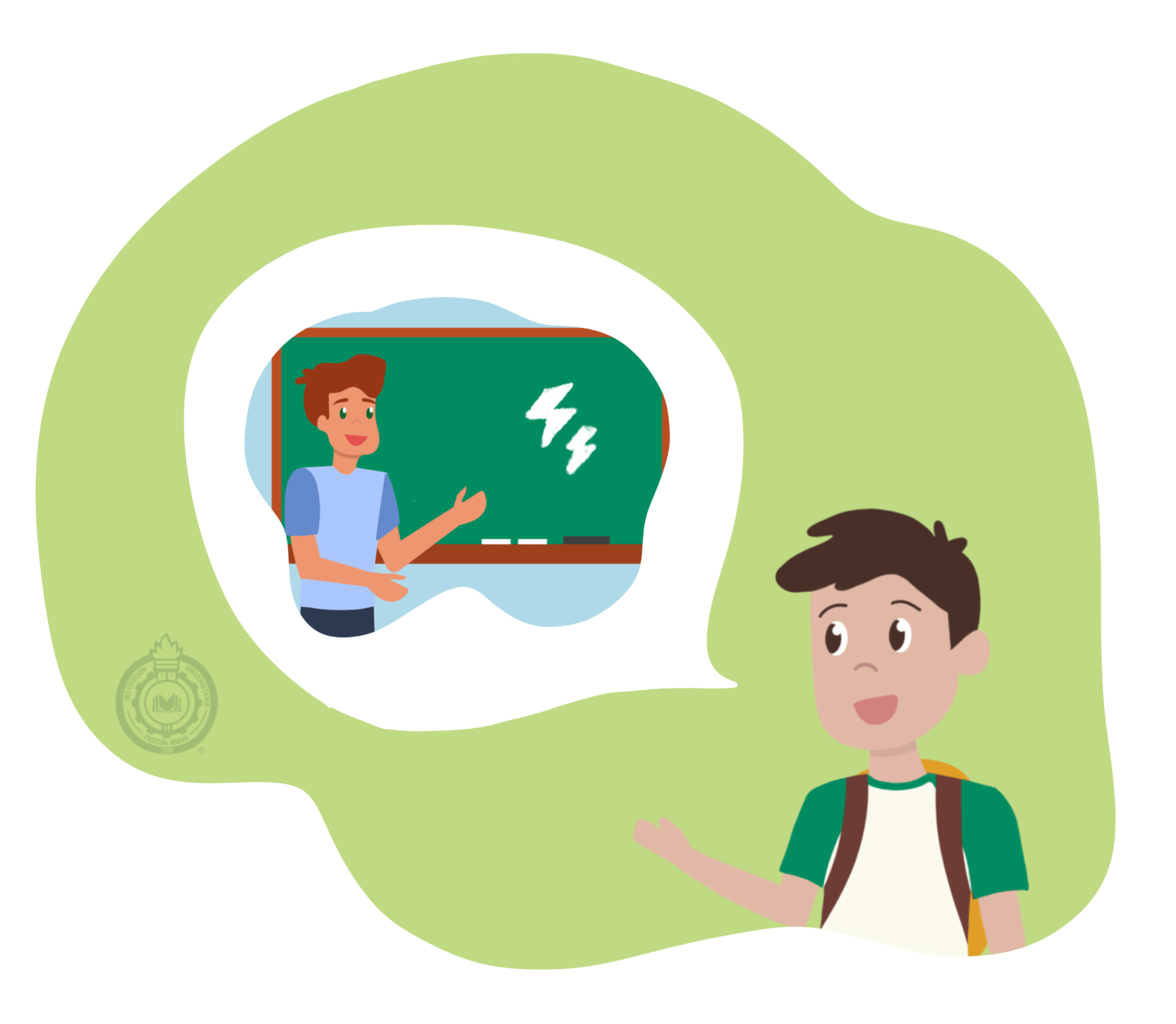
"If I remember correctly, Professor Pérez told us during a class that under the principle of energy
transformation, different experiments and prototypes have been developed to make better use of energy,
right?" Pascualino mentioned, trying to remind the class about the energy that their teacher had given
them a few weeks ago.
"Very good boy!" Alex congratulates Pascualino "At that point I wanted to get ... thanks to the transformation
of energy, different alternatives have been developed that take advantage of the energy present in daily human
activities, to use and transform it into other types of energy "explains Alex" because of this the name of
today's exhibition is Human Produced Energy"
"Alex is right, that is why I was so excited to come to the exhibition today ... since we can see some examples of such inventions" says Mr. Pérez.
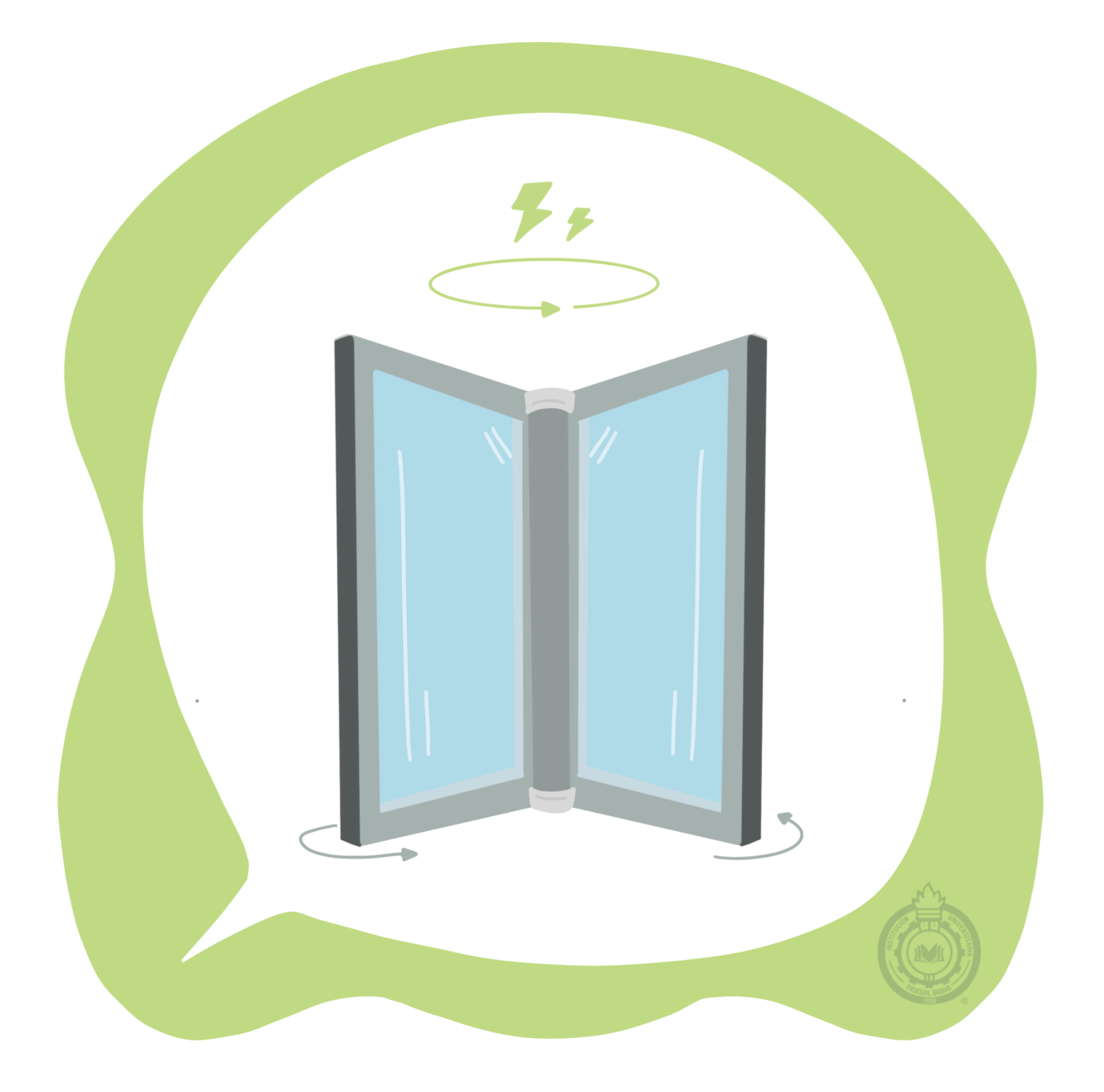
"Although it sounds like science fiction, there are already some operational projects that use the energy
produced by a human being while carrying out daily tasks ... such as walking down the street or pushing a
revolving door" says Alex " let's take a look at some examples "
They all follow Alex until they reach a large revolving door and later, he makes them pass one by one through it.
"The Royal Boon Edam Group Holding company has installed a revolving door similar to this one in a train
station in the Netherlands that stores the energy produced every time someone passes through it" says Alex
"And then that energy how is it used?" Asks interested Willy.
"The energy obtained is used to illuminate LED lamps on the ceiling, while outside an indicator shows the total amount of energy produced by the door," Alex answers as he points to these elements on the side of the prototype.
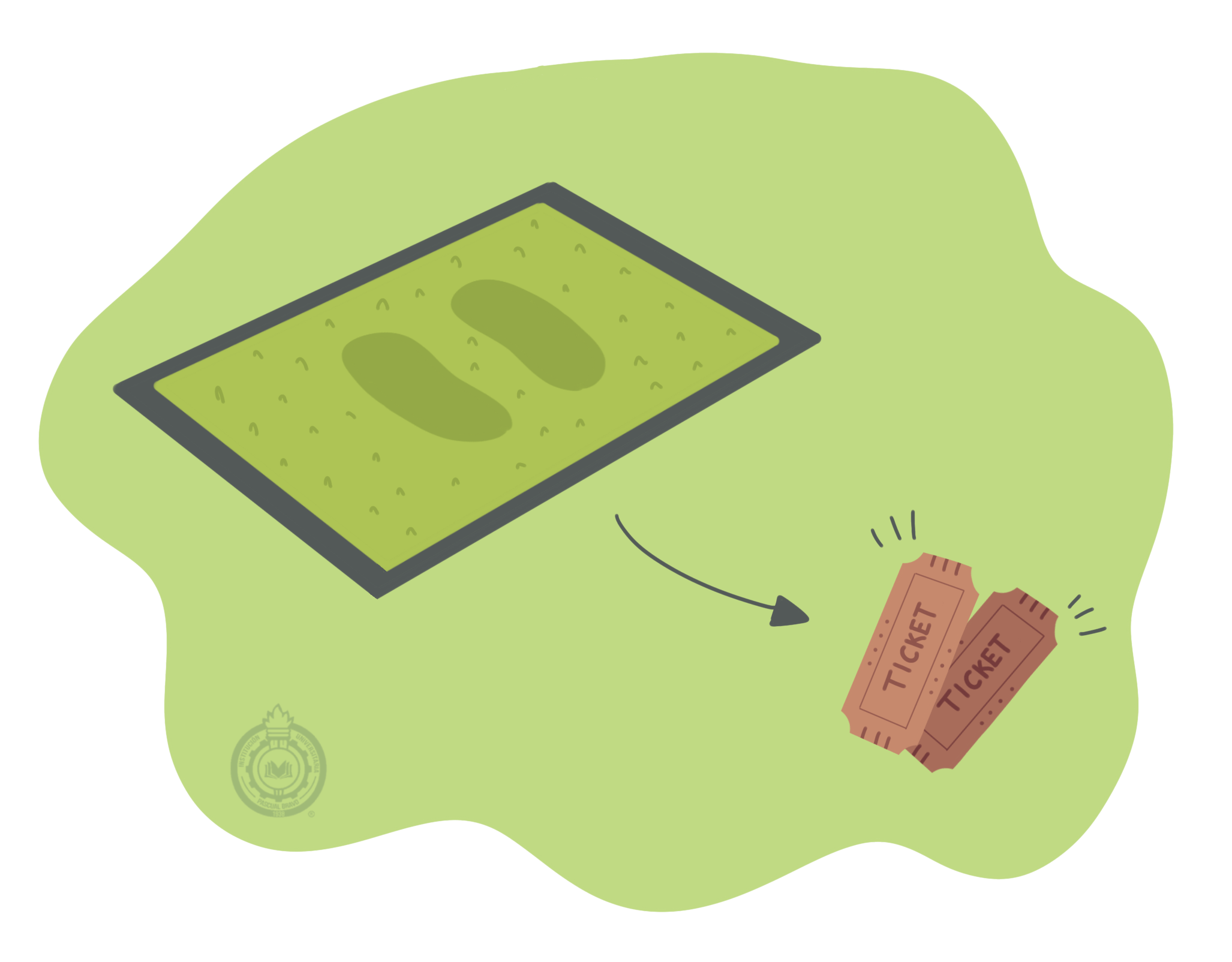
"It's amazing, it really is a very good idea" says Willy
"And that is hardly the beginning, we have not finished yet" encourages Mr. Perez.
"It's true" agrees Alex "Look down ... that carpet you are stepping on also transforms energy"
"For real?" says in amazement a Pascualino’s classmate.
"Yes! The Shibuya station in Tokyo has a carpet just like this one, which each passenger has to go through
to get to the ticket buying area." says Alex
"That is impressive" says Pascualino "and how does it work?"
"The mat has a system based on piezoelectric materials underneath, capable of converting the steps of the people who walk above into electrical energy." Alex replies.
"And the energy obtained is also used to illuminate LEDS?" Willy asks
"Yes, as in the previous one ... The energy is used to illuminate some LEDs and a panel where the amount of energy produced is shown ... a person weighing 60 kg produces approximately 0.5W when passing the
carpet twice ... one to buy your ticket and one to return." concludes Alex.
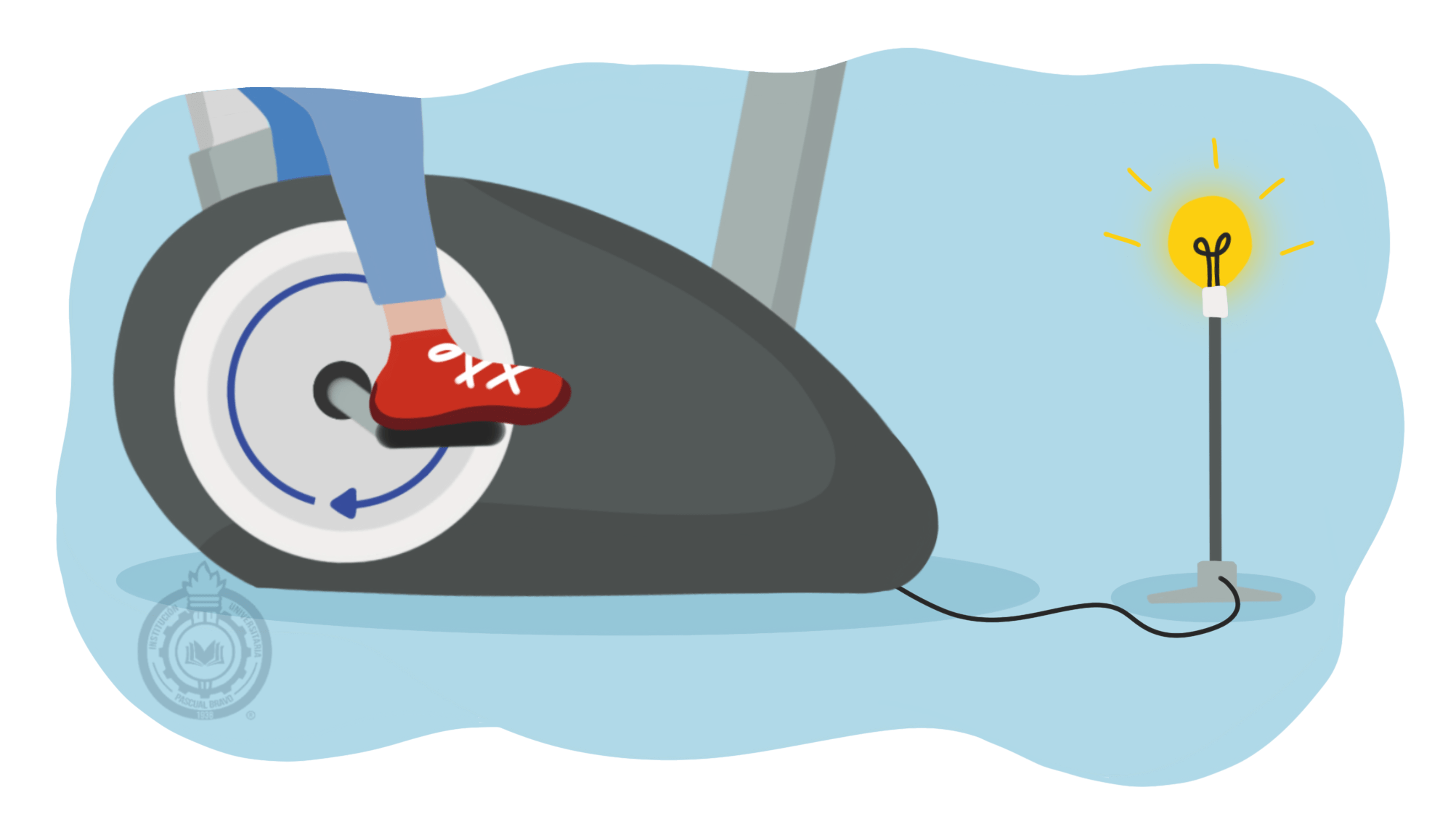
"These types of technology can be very versatile" says Professor Perez
"Exactly" says Alex "Does anyone want to volunteer for the next prototype?" the guide asks
"Me!" Says Pascualino excitedly.
"Very well …please come here and get on this exercise bike" Pascualino nods and did it "Now pedal as fast
as you can" Pascualino obeys and seconds later a light bulb comes on connected to the bicycle system.
"In this way the mechanical energy of the pedal movement is transformed into electrical energy capable of
lighting a light bulb" explains Mr. Perez
"This type of technology is being used in some gymnasiums of residential units to take advantage of the
mechanical energy when exercising and later to use it as electrical energy" explains Alex
"It would be impressive to be able to live in a place with a gym like that" says Pascualino, once he got off the static bike.

"All these prototypes and ideas are really impressive, but they are not very common ..." says Willy sad
"It is true," agrees Alex. "These solutions are not going to fix the world's energy problems by themselves,
but what would happen if they became widespread and you found carpets and revolving doors like these in
official buildings, parking lots where heavy cars circulate every day, malls …?"
"This type of technology still requires much more research and improvement, since it requires equivalence
between the energy that will be transformed ... perhaps over time these are options that we can find on
a daily basis," says Mr. Perez.
"we must remember that with innovation and creativity we can help our planet, and these technologies
are evidence of that" Alex concludes "thank you very much for your attention and willingness, I invite
you to continue enjoying the other prototypes"
"Thank you!" Answered the entire Pascualino’s class, and the kids continued exploring the place.
1. Pascualino got up early the day of the field trip and arrived on time for the bus
2. Mr. Perez did not like lateness and he felt privileged that their school had been invited to the exhibition in Parque Explora
3. Pascualino did not have enough energy that morning because he had not eaten a good breakfast
4. Energy is everywhere as it is continually transformed, and is neither created nor destroyed
5. To do anything that involves a change is present the energy in constant transformation
6. Energy does not transform and always stays the same
7. The possibility of transforming energy into its different types, makes possible to create alternatives to take advantage of daily human activities energy.
8. The prototype of the revolving door allows mechanical energy (when passing through it) to be converted into electrical energy (to light the LEDs)
9. The carpet that transforms energy is only located in The Parque Explora as a prototype
10. The prototype of the exercise bike converts the electrical energy when pedaling into mechanical energy that turns on a light bulb
11. Technologies involving human produced energy are an innovative and creative alternative that should be applied to everyday life to help the planet, and transform the energy we use in daily life.